
- Kenya safaris

Kenya safari guide – where & when to go, and what to see
Kenya safaris rock! Kenya is one of East Africa’s premier safari destinations, with massive open savannah regions hosting a huge breadth and depth of African wildlife. Over 10% of the country is protected in some form or other, and national parks in Kenya rate as some of the best in the world. A safari in Kenya almost guarantees you a sighting of the big five African animals of lion , buffalo , elephant , rhino , and leopard . Alongside these big-hitters are hundreds of other species of African animals, and some of the world’s most diverse bird-life.
Straddling the equator, Kenya is dominated by the Rift Valley – a huge range of valleys strung along a 5,000 km crack in the earth’s crust that runs through East Africa. Within the Rift Valley are Africa’s highest peaks – in Kenya these are the volcanoes of Mount Kenya and Mount Elgon. East of the Rift Valley are the coastal plains, whilst the north of Kenya is made up of arid wastelands. The prime Kenya safari destinations are the Central Highlands and areas within the Rift Valley. The south of the country hosts the great migration of plains animals and their predators each year between June and November. In short, Kenya safaris are up there with the very best in terms of wildlife and scenery.
Self-drive safaris are an option in many national parks in Kenya, though to enjoy full access to the most remote (and tourist-free) areas you’ll need a 4WD car or jeep. If you fancy taking a tour or arranging your own guide and/or driver have a look at our list of safari tour companies in Kenya before arrival in the country.
Alongside safaris and wildlife spotting, a visit to Kenya allows you to easily extend your safari with a visit to a resort on the Indian Ocean coast, or with activities such as trekking, hiking, sailing or diving .
Useful resources
- Book a Kenya Safari
- Kenyan Ministry of Tourism
- Kenya Wildlife Service
Kenya safari highlights
Experience maasai culture.
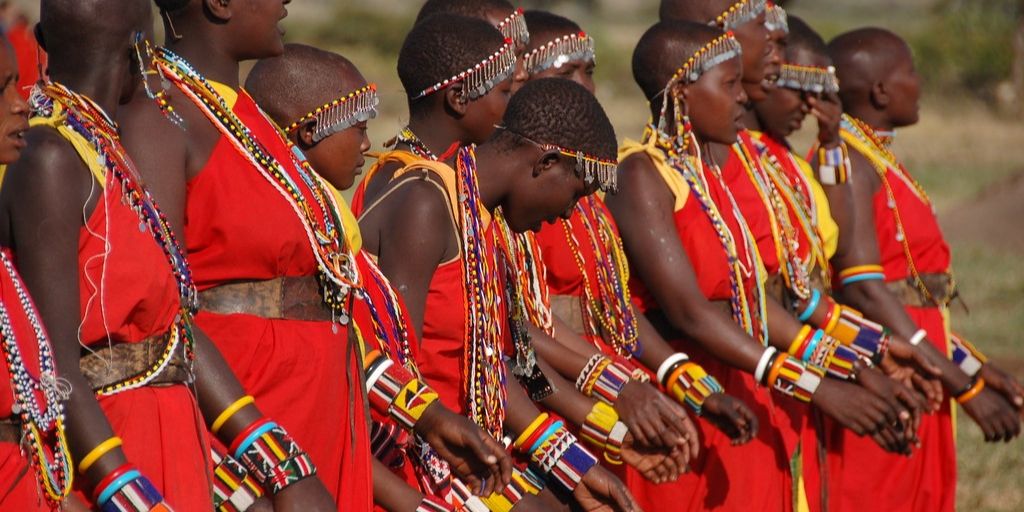
The Maasai are one of the few African tribes who have retained most of their traditions, lifestyle, and lore – along with their distinctive red robes. Many safari lodges and operators work with local Maasai on community projects. Experiencing some time in a Maasai village whilst in Kenya is a unique cultural experience that will help put your visit in context.
Big five spotting

Big five spotting in Kenya is high on most visitor’s safari checklist, and with Kenya’s superb network of national park gems seeing Africa’s biggest beasts up close and personal is a realistic goal. Destinations rich in lion, leopard, elephant, rhino, and buffalo are clustered in the south of the country, particularly Amboseli, Masai Mara and East and West Tsavo (for the Tsavo lions !) national parks.
Watch the ‘Great Wildebeest Migration’

Indian ocean beach perfection

Best time to safari in Kenya
The peak tourist season in Kenya is January and February when the weather is consistently warm and dry, with wildlife easy to spot in large concentrations. If you take a Kenya safari in peak season expect to be in company with crowds of tourists, and paying top dollar for your safari. If you’re specifically after catching sight of the annual great migration, June to October is the time to head to the Masai Mara National Park in southern Kenya.
The long rains hit Kenya through March, April and May, and the short rains from October to December. During the short rains, it generally rains only for short periods at a time, meaning your wildlife viewing will not be too disrupted. This is the time you can get some great deals on safari tours, or safari lodges if you’re travelling independently.
Flights To Kenya
Search, track and book flights to Kenya, from anywhere in the world.
Kenya Accommodation
Find safari accommodation in Kenya – from budget campsites to luxury lodges.
Kenya Car Hire
Considering a self-drive safari? Research and book car hire in Kenya.
Activities in Kenya
Search and book things to do in Kenya – tours, excursions and activities.
National parks in Kenya
With a stunning array of wildlife and more than 10% of the country given over to national parks and reserves, Kenya is undoubtedly one of the world’s best safari destinations. Whilst the world-famous Kenyan national parks such as Masai Mara and Amboseli National Parks can be uncomfortably heaving with tourists in January and February, Kenya has plenty of smaller, out of the way national parks that see only a trickle of visitors year-round. As such it’s well worth taking the time to consider whereabouts in Kenya to go on safari if you’re visiting during peak season.
Top Kenya national park picks
Masai mara national reserve.
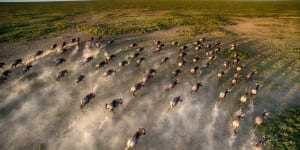
Situated in southwest Kenya, the Masai Mara is part of the northern section of the Serengeti National Park, and is generally recognised as one of the greatest wildlife reserves in Africa. The reserve is famous for the abundance of predators – particularly big cats – and the great wildebeest migration to feed these predators, as well as the Maasai people themselves.
- Lake Nakuru National Park
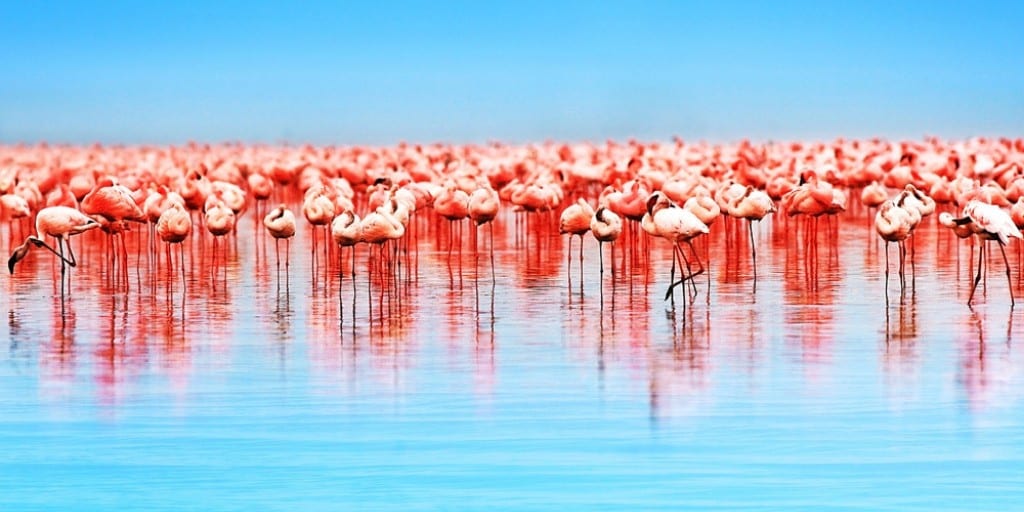
The stunning Lake Nakuru National Park is on the floor of the Great Rift Valley, surrounded by bushy grasslands and woods. There are 56 species of mammal in the park, but the star show are the thousands of flamingos, arriving in their millions some years.
- Amboseli National Park

Crowned by Africa’s highest peak, Mount Kilimanjaro, Amboseli is one of Kenya’s most popular parks . The name ‘Amboseli’ comes from the Maasai language and means ‘salty dust’… perfect for the large herds of elephants that roam the park.
- Meru National Park
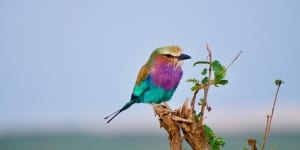
Meru National Park is a Kenyan park is located 350 km from Nairobi, featuring multiple landscapes including grasslands, swamp, jungle and rivers. It’s a birders paradise with over 427 recorded bird species, in addition to the big five .
All national parks in Kenya
Use the map below to locate all national parks in Kenya. Click the icons for more info.
Get Directions
- Aberdare National Park
- Arabuk Sokoke National Park
- Hell’s Gate National Park
- Kakamega National Park
- Lake Bogaria National Park
- Malindi Watumu National Park
- Masai Mara National Park
- Mount Elgon National Park
- Mount Kenya National Park
- Nairobi National Park
- Saiwa Swamp National Park
- Shimba Hills National Park
- Tsavo National Park
Kenya safari resources
Kenya safari companies.

There are plenty of companies offering safari tours around Kenya. The focus is on the high end, but there are some companies that specialize in mid and budget safaris. Check out our reviews of safari tour companies in Kenya .
Kenya safari lodges
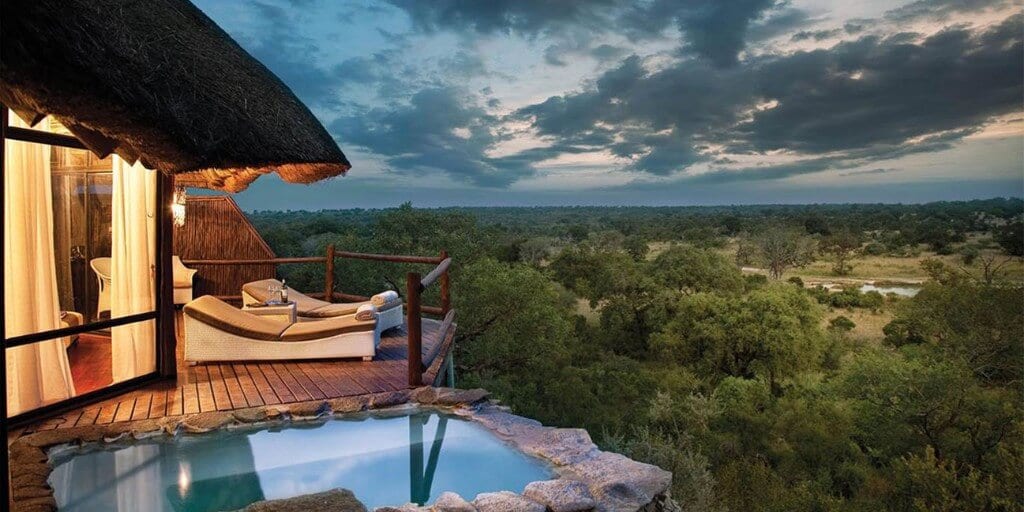
As a tourism-focussed country, Kenya has plenty of choice when it comes to safari accommodation. Lodge standards vary from rustic to modern, from the simple room to extreme luxury with en-suite private plunge pool. Search and book accommodation in Kenya .
For a trip to Kenya, travellers are required to apply for a visa. The easiest, most commonly used visa for going on a safari in Kenya, is the Kenya e-visa . It is valid for 90 days, and can even be extended once to 180 days once you arrive in Kenya. The visa can easily be applied for online and will save you the hassle of having to apply at an embassy or consulate.
Read safari guides to all countries
Botswana safaris , Namibia safaris , Rwanda safaris , South Africa safaris , Tanzania safaris , Uganda safaris , Zimbabwe safaris
Do you have any experience of planning or going on safari in Kenya?
We’d love to hear any feedback or tips you may have – please get in touch , or add to the comments below.
Top countries for safaris
- Botswana safaris
- Namibia safaris
- South Africa safaris
- Tanzania safaris
- Uganda safaris
Safari basics
- Safari animals
- How to find the right safari company
- When to go on safari
- What to take on safari
- Safari clothing – what to wear
- Safari rules & etiquette
- Wildlife spotting tips
Most read articles
- All about the ‘big five’ animals
- Collective nouns for animals
- Safari movies to watch before you go
- The world’s fastest land animals
- Apex predators
- 10 Fascinating African tribes
- The biggest animals in the world
- 17 Epic hybrid animals
- The world’s ugliest animals
- Why are flamingos pink?
Africa’s best game reserves
- Chobe National Park, Botswana
- Etosha National Park, Namibia
- Kruger National Park, South Africa
- Masai Mara National Reserve, Kenya
- Moremi Game Reserve, Botswana
- Okavango Delta, Botswana
- Serengeti National Park, Tanzania
Session expired
Please log in again. The login page will open in a new tab. After logging in you can close it and return to this page.
The Masai Mara in Kenya is nature's epic masterpiece.

A little bit about Masai Mara
Rolling hills, sprawling savannahs, dramatic river crossings and of course... more wildlife and adventure than any movie could ever portray. Welcome to the Masai Mara, home to the lions of ‘Big Cat Diary’, temporary residence of the ‘Great Migration’, mighty Maasai warriors and some of the most luxurious safari lodges on earth.
The Masai Mara features a stunning kaleidoscope of wild and rugged landscapes, warm and welcoming people and an exciting array of creatures – big and small. World famous for hosting the epic Great Migration, the Masai Mara welcomes 1,5 million wildebeests onto its sprawling savannahs each July through October. The Masai Mara National Reserve and conservancies are brimming with life and offer safari travellers a wide variety of activities to choose from. Whether you take to the skies for a high-flying hot-air balloon adventure at sunrise or hit the road for a 4x4 safari, you’re sure to leave the Masai Mara with unforgettable experiences and lifelong memories.
Going on a Masai Mara safari
Part of the fun of going on safari is planning your safari. We’ve been there... and know how it feels. As avid travellers we can imagine you have loads of questions while planning your trip to the Masai Mara. Very few places on earth are as unspoilt, adventurous and authentic as the Mara eco-system.
Reading up on the Masai Mara, finding out what you might encounter, exploring your accommodation options... we've done most of the work for you and created this site to help you find all the answers to any questions you may have. To top it off, we've brought together a top-notch collection of Masai Mara safari lodges and camps for you to choose from. Naturally, we're only an e-mail or message away if you need a little extra help planning your safari.

About the Masai Mara
Known as one of the world’s most famous wildlife areas or ‘the world’s eight world wonder’, the Masai Mara has endless plains, breath-taking vistas and abundant wildlife. Learn more about the Masai Mara here.

Masai Mara special offers
Dreaming of the perfect safari holiday? We’ll help you find your way while planning your trip and provide you with a selection of the best available deals. Check out our latest Masai Mara special offers and discounts.

Getting to Masai Mara
Whether you’re arriving from far, far away or travelling to the Masai Mara from a destination in the region. We’ll guide you through your options for getting to the Mara and for getting around once you’re here.
As newbie safari travellers, we were blown away by our experience of the Conservatory - the animals in abundance; the landscapes; the people; the smells and sounds.
It was an amazing experience to actually see the river crossings, that we had seen so many times on TV during the wildebeest migration.
We saw a leopard on a tree and we were lucky enough to watch four lionesses and three cubs eating a fresh hunt. In the evening safari we were able to explore a massive variety of hippopotamus and a crocodile.

Masai Mara lodges & camps
The Masai Mara is rough and rugged, however you don't have to rough it during your stay. Eco-chic safari lodges with four-poster beds, sundowners with your favourite G&T and infinity pools overlooking the African savanna await.
We’ve selected a variety of warm and welcoming Masai Mara safari lodges and camps for you to choose from during your stay. Each of the accommodation options we’ve selected is known for offering premium safari activities, first-class accommodation and every creature comfort you could wish for during your stay.
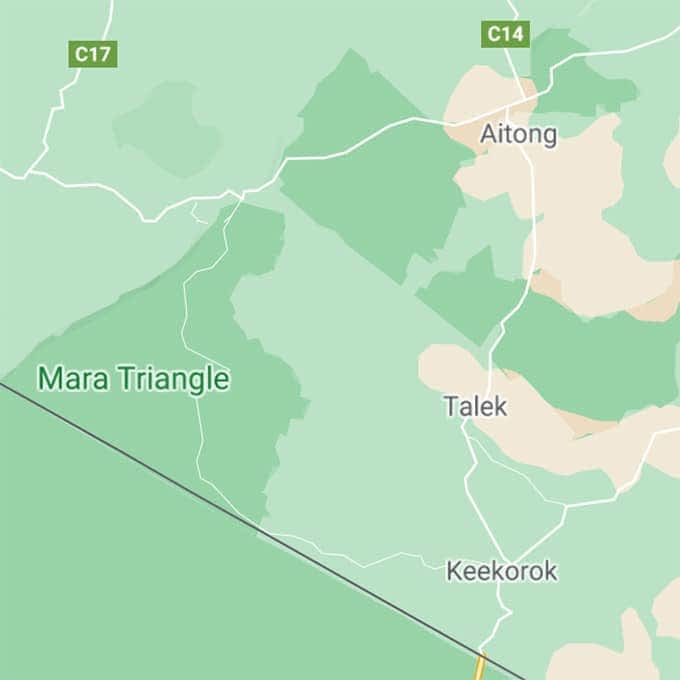
All accommodations in Greater Masai Mara
Browse all camps & lodges
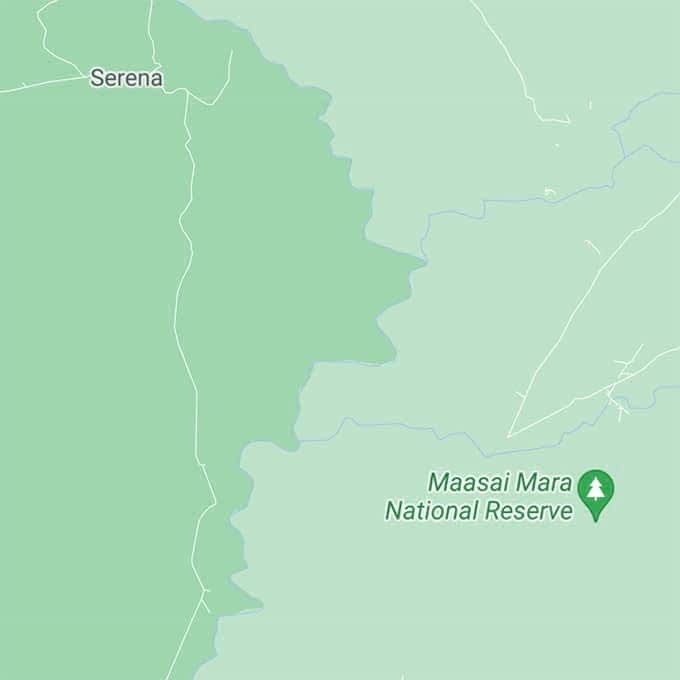
National Reserve accommodation
Browse Masai Mara NR accommodations
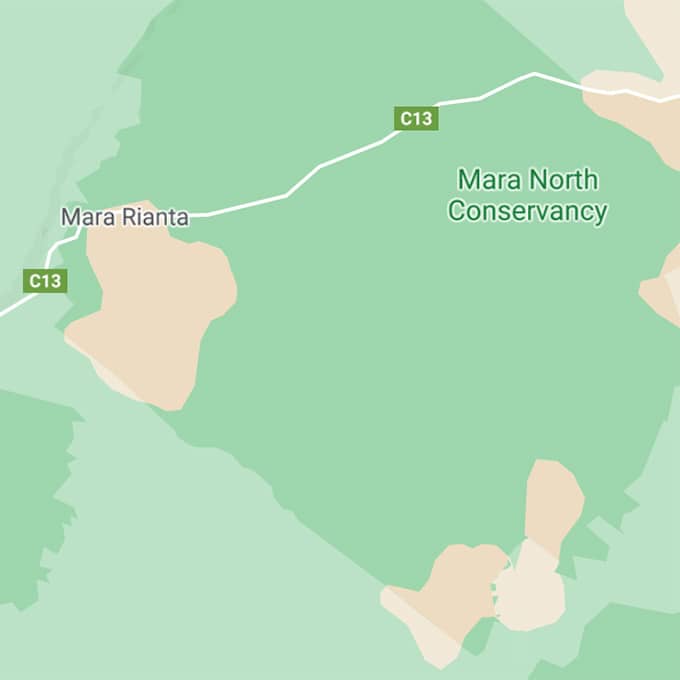
Mara conservancies accommodation
Browse conservancy lodges & camps
Masai Mara lodges we love
We would like to share a few accommodation options with you for your stay in the Masai Mara. Our safari lodge options come in a variety of price ranges, giving you plenty of possibilities to find the right Masai Mara safari camp for your travel budget.
Keep in mind that the following are simply suggestions. We offer tailor-made safari experiences and look forward to creating just the right mix of Masai Mara safari accommodation and activities based on your personal preferences. We look forward to helping you create the bespoke Masai Mara safari of your dreams.
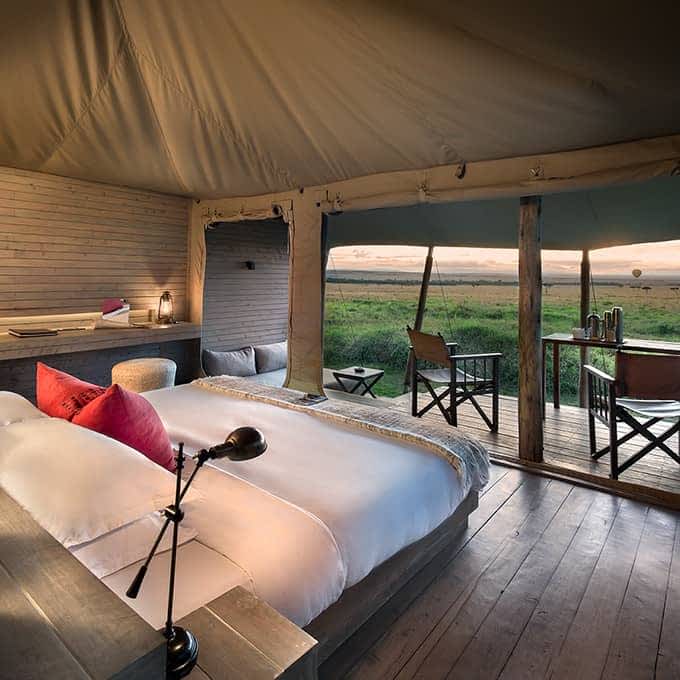
Kichwa Tembo Tented Camp
lodge location Mara Triangle
Kenyan hospitality meets Maasai-inspired luxury on the lush green banks of the Saparingo River. &Beyond Kichwa Tembo Tented Camp lies on the edge of the Oloololo escarpment, where riverine forest meets the sweeping plains of the Masai Mara.

from US$ 435 per person per night
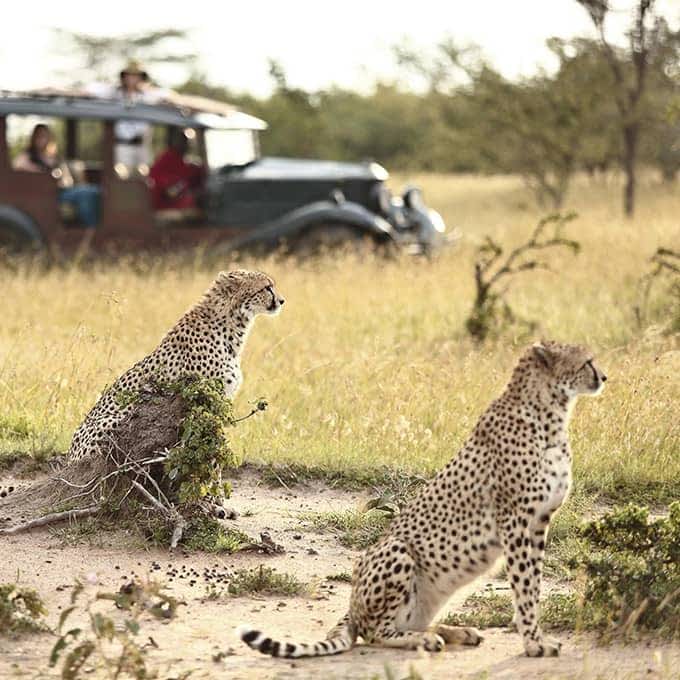
Cottars 1920s Safari Camp
lodge location Olderkesi
Cottar’s 1920s Safari Camp offers guest vintage luxury at its very best. Cream-coloured tents decorated in 1920s epic safari style, professional Maasai safari guides and above all a sense of elegance and class - this classic Kenyan safari camp has it all.
from US$ 1,059 per person per night
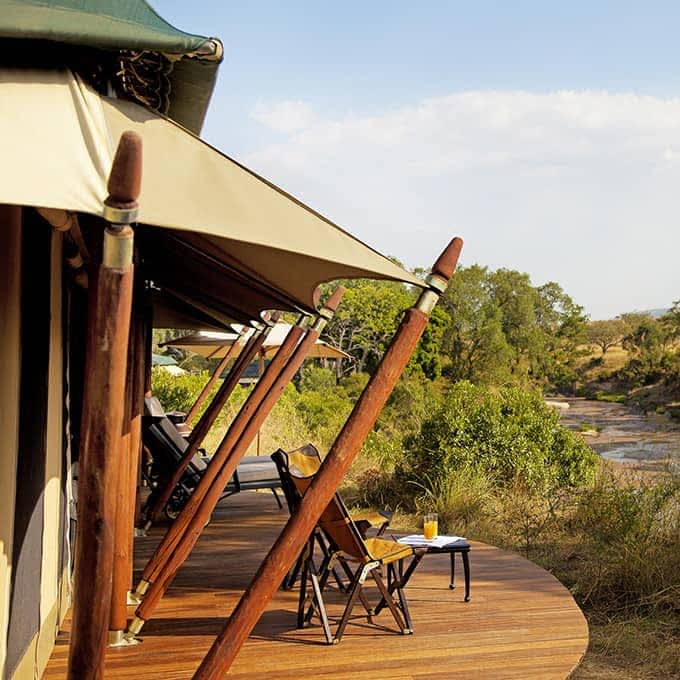
Elewana Sand River Camp
lodge location Musiara Sector
Ideally situated in one of the most remote parts of Masai Mara National Reserve, Sand River Camp pays homage to romantic 1920s safaris. Its design reminds guests of the many African adventure themed Hollywood movies created in that time period.
from US$ 670 per person per night
There were lion cubs galore, a baby zebra born in front of my eyes, pretty much everything an avid photographer could hope for.
The Maasai people were extremely welcoming, and were there to make sure our experience was nothing but the best. We will definitely be back.
The Big 5 and more - giraffes, zebras, hippos, lions with their families, cheetahs and hundreds of wildebeests - no shortage of amazing game sightings every day...
Masai Mara highlights
The Masai Mara is a dream come true for everyone who ever watched ‘Out of Africa’ and longed for the adventurous, romantic nostalgia of an African safari in the wild. The Great Migration, big cats and Maasai warriors await.
The Masai Mara is a photographer's paradise. This region is known for pristine riverine forests, dramatic towering escarpments, stunning sprawling savannahs and of course... all the creatures, big and small, that roam the land. Add a visit to a Maasai village to your stay for a cultural immersion and gain some insight in the day-to-day life of your hosts. For an extra special birds-eye view of the African plains, take to the skies during a hot-air balloon safari. When it comes to crafting the safari of your dreams, the sky is the limit.
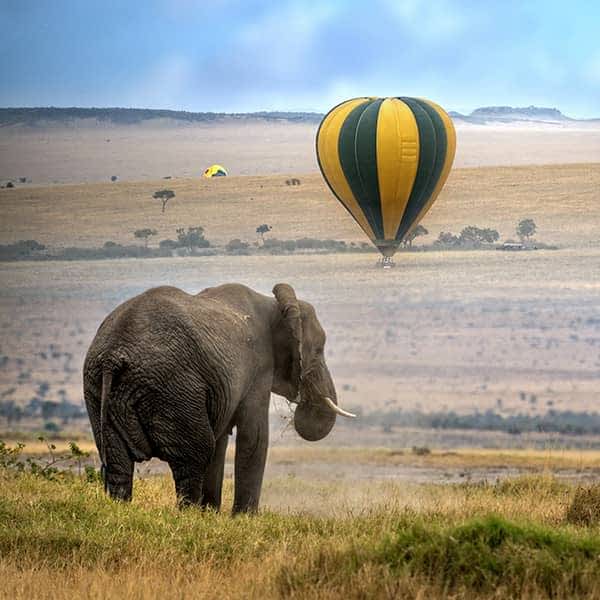
Balloon safari
View golden plains from above
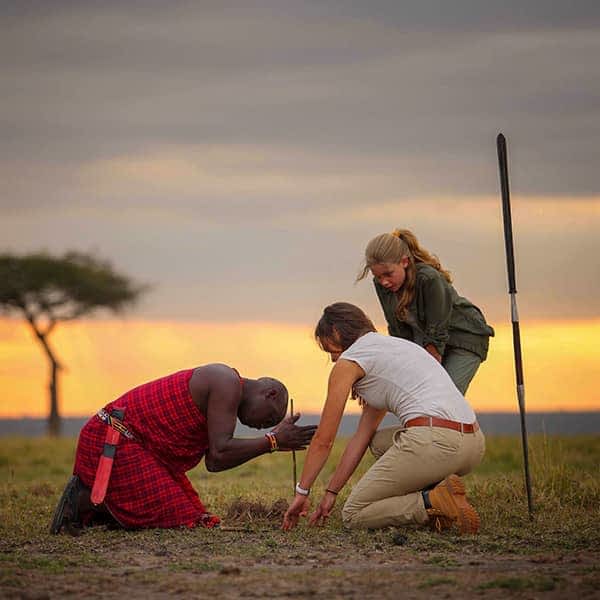
Maasai people
Extraordinary cultural meetings
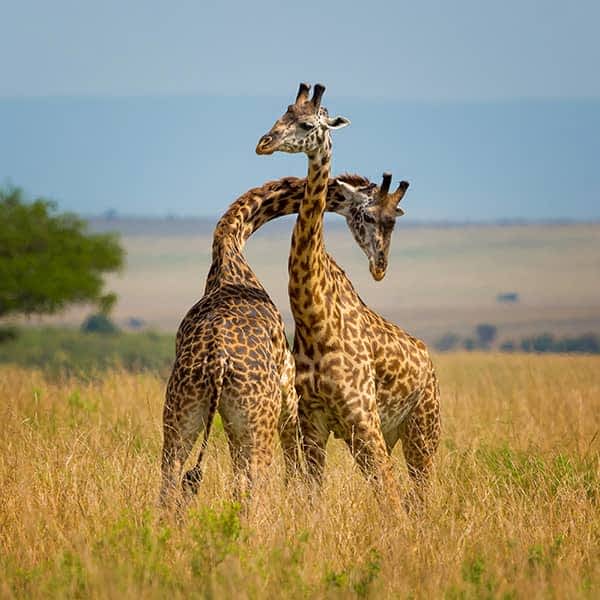
Exhilarating wildlife
Wildlife up close and personal
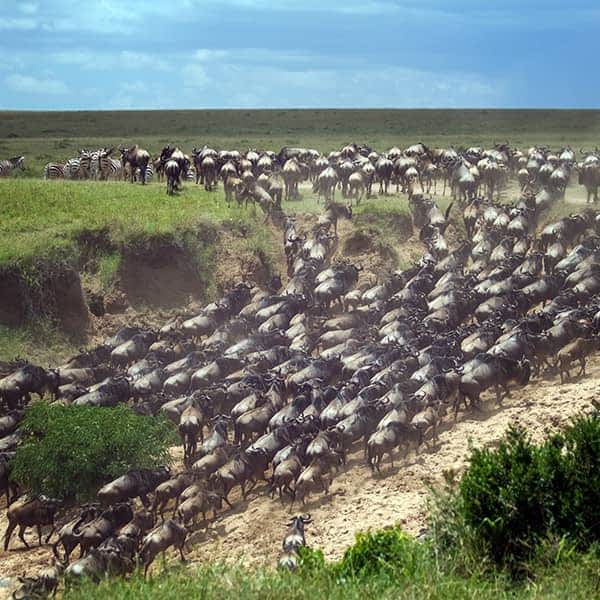
The Great Migration
Wildlife spectacle in the Masai Mara
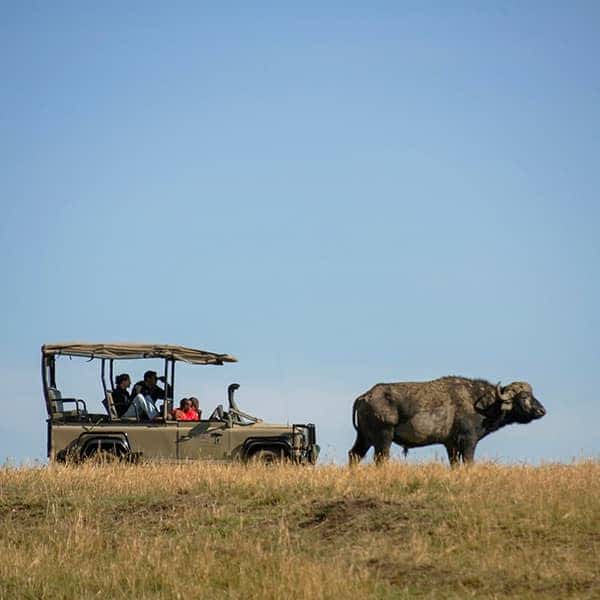
Safari activities
Drive, walks & more
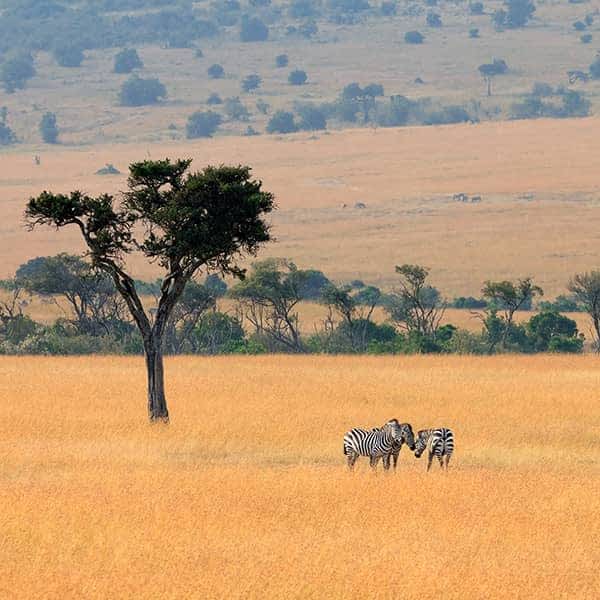
Masai Mara National Reserve
Kenya's premier wildlife reserve
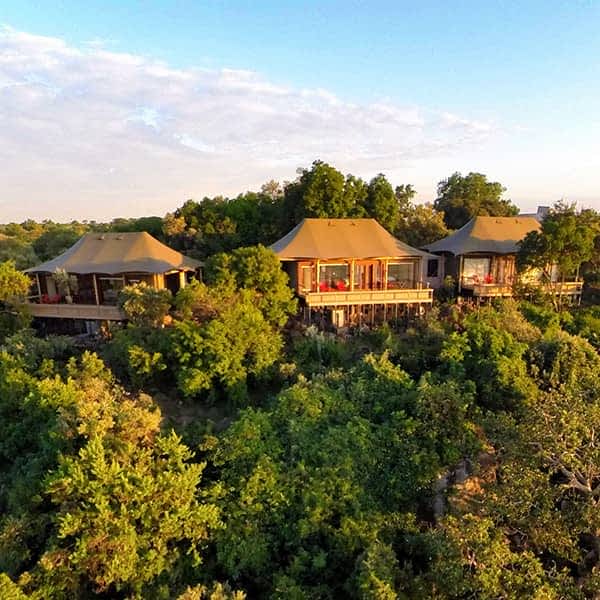
Luxury accommodation
A luxury safari home from home
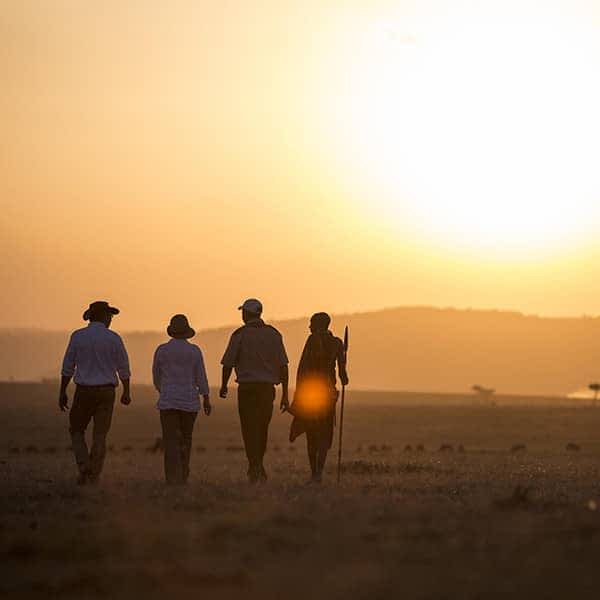
Mara North Conservancy
Enjoy the perks of a conservancy
Conservancies in Kenya are the way to go; protecting the extraordinary wildlife whilst giving the local community an income, together with education on the interaction between the two.
Wonderful area for wildlife viewing. Having been there twice both times were awesome experiences! Will return again.
The highlight of our trip to Mara was seeing the migration at the Mara river. A once in a lifetime experience to see the Wildebeest migrating. An amazing scene of nature it was.
Masai Mara video
The best way of understanding what the Masai Mara and its conservancies are about is by seeing some thrilling footage from the area. Watch this video to experience Kenya's Masai Mara, its splendour and to meet some of our celebrity wildlife species.
Be careful, after watching this video you can be sure that you want to travel to Kenya. Today.
We saw 8 lions in one drive, and a hippo pod being circled by a dozen crocodiles that launched into the water, trying to get the baby hippos in the center of the pod. Wow!
I was fortunate that when I was recently in the Mara North Conservancy there were so few tourists. I saw plenty of wildlife. The sightings of big cats were especially good.
The Mara Triangle is the most beautiful, lush area of the Masai Mara. Loads of elephants and all types of wildlife without all the land cruiser traffic found in other areas of the Mara.
Send your enquiry
We hope you have found all information needed to decide that the Masai Mara in Kenya is the perfect place for your next safari adventure. Still have questions? Or maybe you would like some more specific information about the different lodges? Please fill in the contact form and we will get back to you soon!
- Masai Mara National Reserve & conservancies
- [email protected]

African Safaris
- Pride of East Africa: Kenya & Tanzania
Videos & Webinars
Video | great migration safaris — the nat hab experience, video | traveler profile: an african safari experience, video | kenya's elephants, video | africa's great migration, webinar | know before you go: kenya & tanzania safari, webinar | how to prepare for an african safari, webinar | safari highlights of 2021 & looking ahead, webinar | on the move: east africa's great migration.
Availability & Book Now
Download Trip Details
Ask a Question

Customize Your African Safari
Let our in-house safari experts create your perfect African adventure. Whether you'd like to travel as a private group on this safari or you'd like to create an itinerary all your own, simply fill out the form to the right or give us a call at 800-543-8917 .

Customize Your Trip
Let our in-house trip experts create your perfect adventure. Whether you'd like to travel as a private group on our ${tripName} or you'd like to create an itinerary all your own, simply fill out the form to the right or give us a call at 800-543-8917.
Discover the World's Best
Nature Travel Experiences
Get our downloadable trip details in PDF format, a handy resource for your travel planning. Inside, you'll find all the info from our website—highlights of the trip, itinerary, accommodations, and full details on dates, prices and logistics—plus a few extras!
Thank you for your request! Click here to see your trip details PDF now. You’ll also receive it by email momentarily.
Fill out our form to receive additional information about our ${tripName}, or give us a call at 800-543-8917 .
We’ll be in touch soon with more details.
Send Me Travel Emails
Get the Inside Scoop on the
World of Nature Travel

Our weekly eNewsletters highlights new adventures, exclusive offers, webinars, nature news, travel ideas, photography tips and more. Sign up today!
Look for a special welcome message in your inbox, arriving shortly! Be sure to add [email protected] to your email contacts so you don’t miss out on future emails.

Request Your 2023 Catalog

Together, Natural Habitat Adventures and World Wildlife Fund have teamed up to arrange nearly a hundred nature travel experiences around the planet, while helping to protect the magnificent places we visit and their wild inhabitants.
Get Weekly Updatess
Our weekly eNewsletter highlights new adventures, exclusive offers, webinars, nature news, travel ideas, photography tips and more. Sign up today!
Send Us a Message
Have a question or comment? Use the form to the right to get in touch with us.
We’ll be in touch soon with a response.
Refer a Friend
Earn rewards for referring your friends! We'd like to thank our loyal travelers for spreading the word. Share your friend's address so we can send a catalog, and if your friend takes a trip as a first-time Nat Hab traveler, you'll receive a $250 Nat Hab credit you can use toward a future trip or the purchase of Nat Hab gear. To refer a friend, just complete the form below or call us at 800-543-8917. It's that easy! See rules and fine print here.
We've received your friend's information.
View Our 2023 Digital Catalog
View Our 2024/2025
Digital Catalog
Thanks for requesting access to our digital catalog. Click here to view it now. You’ll also receive it by email momentarily.

Polar Bear Tours

Galapagos Tours

Alaska Adventures

U.S. National Parks Tours

Canada & the North

Europe Adventures

Mexico & Central America Tours

South America Adventures

Asia & Pacific Adventures

Antarctica & Arctic Journeys

Adventure Cruises

Photography Expeditions

Women's Adventures

Family Adventures

New Adventures
Questions? Call 800-543-8917
Have a question or comment? Click any of the buttons below to get in touch with us. Hours Mountain Time
- 8 am to 5 pm, Monday - Friday
- 8 am to 3 pm on Saturday
- Closed on Sunday
- Travel Guides Plan your adventure
- Destinations Our favourite places
- Tours Book a trip
- Travel Companies Independent specialists
- Travel Guides
- Destinations
- Travel Companies
Safari in Kenya
Kenya's best safari reserves and camps.
Stuart Butler
- In this guide
- Samburu, Buffalo Springs & Shaba
Meru National Park
Lake nakuru national park, amboseli national park.
- Nairobi National Park
- Off the beaten track
Kenya besides safari
- Where to go
- Need to know
- Itinerary planning
- Hidden gems
- Conservancies
- How to plan & book
Kenya is the original home of the safari and it’s still one of the finest safari destinations in Africa . I've been going on safari in Kenya for decades, as a travel journalist and guidebook author writing about safari, conservation and life among the Maasai tribes.
The main thing I've learned: there's so much more to Kenya than the mainstream safari industry of luxury camps and the famed “big five” (so named because they were the prize targets of colonial–era hunters).
The country proudly boasts of an impressive network of protected spaces made up of 65 national parks and reserves as well as dozens of private and community conservancies. Together these cover a huge proportion of Kenya’s diverse landscapes and provide a home for animals as large as an elephant and as tiny as an elephant shrew.
Some parks, such as the Masai Mara and Amboseli , are rightly world famous. Other parks, such as Meru National Park or Kakamega Forest Reserve, barely make a blip on the mainstream safari circuit but are every bit as rewarding (and much quieter!) then the big name parks and reserves.
Kenya has a world class safari tourism industry with excellent safari operators catering to all budgets and a diverse portfolio of safari lodges and camps. All you need to decide is when and where to go – and that's where my guide comes in. Dig in and Safari njema! – (Have a nice trip!)
featured kenya safaris
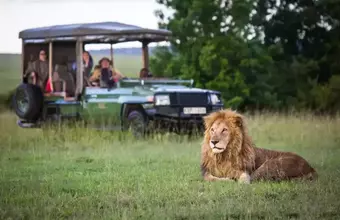
Enchanted Kenyan Safari
Samburu, Rhinos and Mara Safari
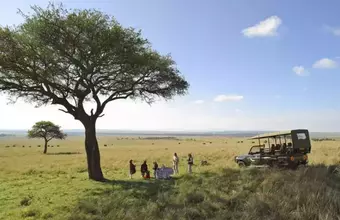
Affordable Masai Mara Safari
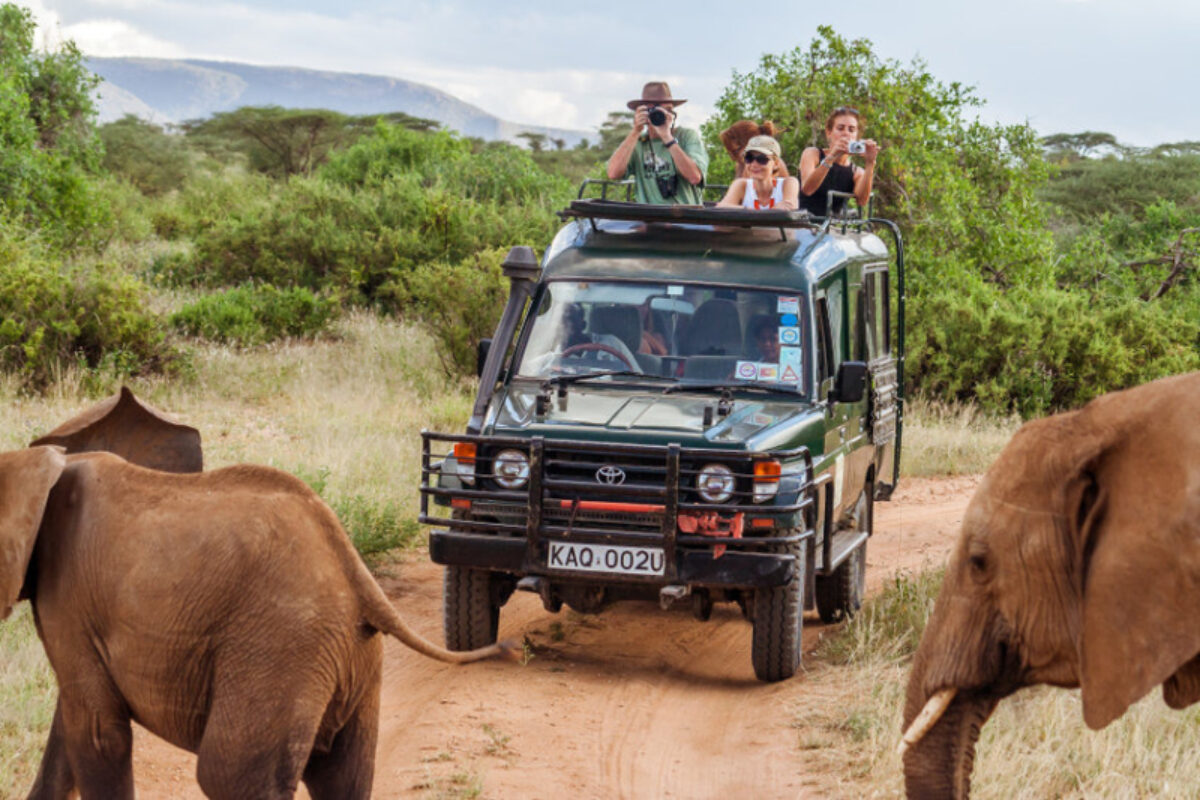
Close encounters with a herd of elephants in Kenya's Masai Mara
The best safaris in Kenya
Kenya’s most popular – and some underrated – safari highlights.
Don't be swayed by the Masai Mara's magnetic pull. There are many hidden gems to be discovered in Kenya: here are a few of my top recommendations.
Masai Mara National Reserve
Mara north conservancy, ol pejeta conservancy, samburu game reserve, tsavo east & west national parks, loita hills, kakamega forest reserve, aberdare national park, lamu island.
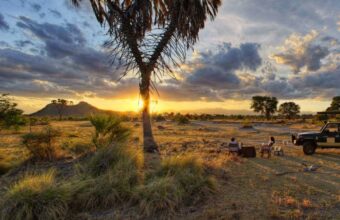
Elsa’s Kopje
This is the best lodge in what is, for me, one of the best safari parks in Kenya. Named after Elsa the lion, of Born Free Fame, the lodge sits on an outcrop with simply incredible views over Meru. Owned by Kenya-based Elewana Collection, it’s undeniably pricey – rooms start at around USD $950 per night and climb steeply from there – but worth a night or two if your budget can stretch that far. If that’s beyond your means I can also recommend Meru Camp and there are cheaper options in the nearby town of Maua.
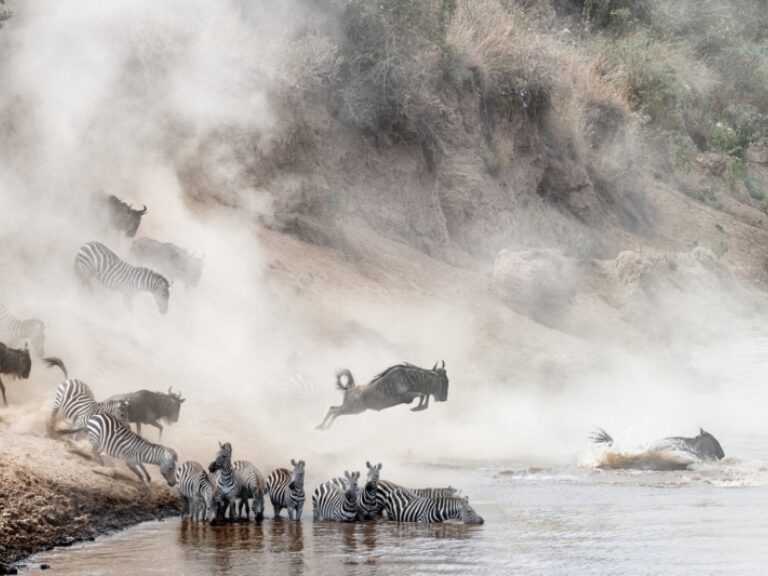
Witness the migration river crossings – but expect crowds!
The wildebeest migration is one of the world’s greatest natural phenomena, and watching the herds dodge hungry crocodiles as they surge across the Mara River is a staple of Kenya safari. The migration moves into the Masai Mara from Tanzania’s Serengeti between June and October. This is by far the busiest time and place of the year, so expect crowds. If you’d rather see the migration untroubled by crowds, I recommend you look at Tanzania instead.
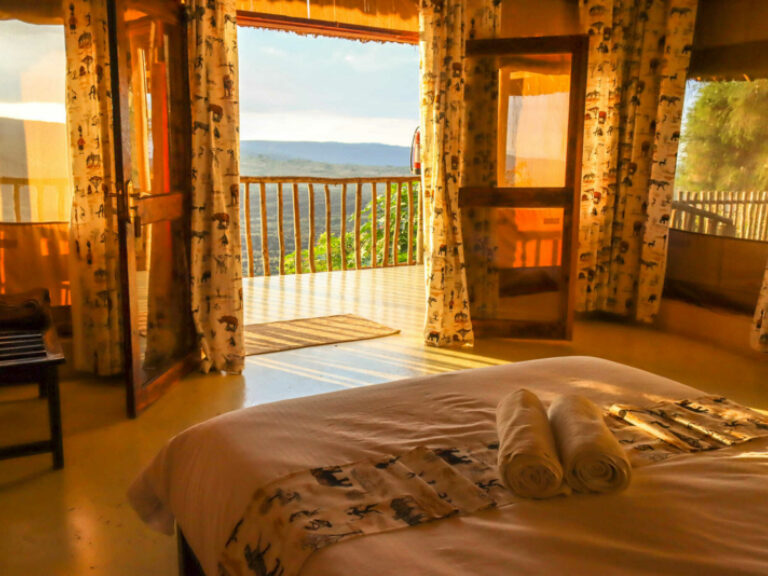
Denise Carnihan
I can highly recommend Maili Saba. It has a picturesque location overlooking the Great Rift Valley and volcano region, with lovely permanent tents each with en-suites and balcony, and all very nicely decorated. There is a communal pool and outside gazebos for relaxing. The main dining room and lounging area is stunning with striking cathedral ceiling and beautiful decor. The food is absolutely outstanding and the staff are warm, friendly and go out of their way to assist their guests. The first time I visited was a complete surprise organised by my Kenyan partner, and I've included it in our tour itineraries ever since.
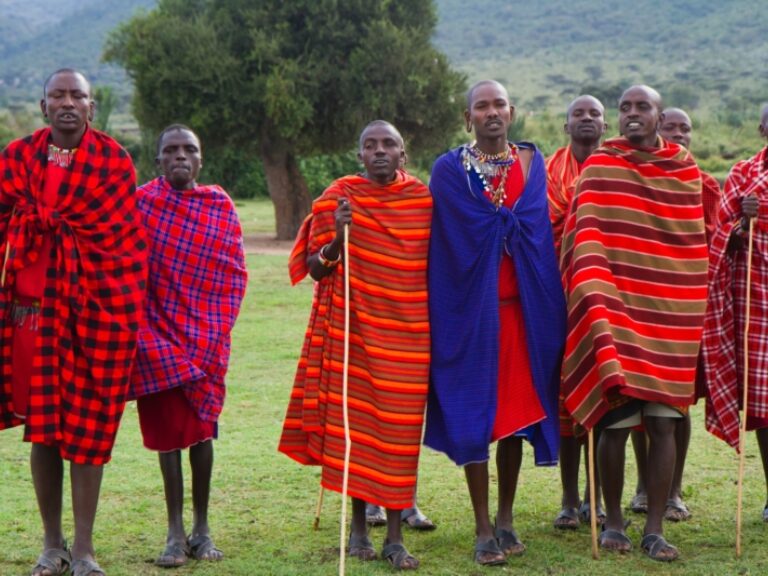
Nashulai Maasai Conservancy
One of the great success stories of Kenya safari has been the emergence of networks of conservancies, usually adjacent to the better known national parks. These are community-run or privately-operated protected areas, run for the benefit of wildlife and local communities. In the Masai Mara, the Nashulai Maasai Conservancy is particularly interesting, as it’s the only one that was 100% established by local Maasai and the only one where the Maasai remain in their homes within the conservancy. I can also highly recommend Mara North, Naboisho, and Ol Dereski; you’ll likely have an amazing time in any of them.
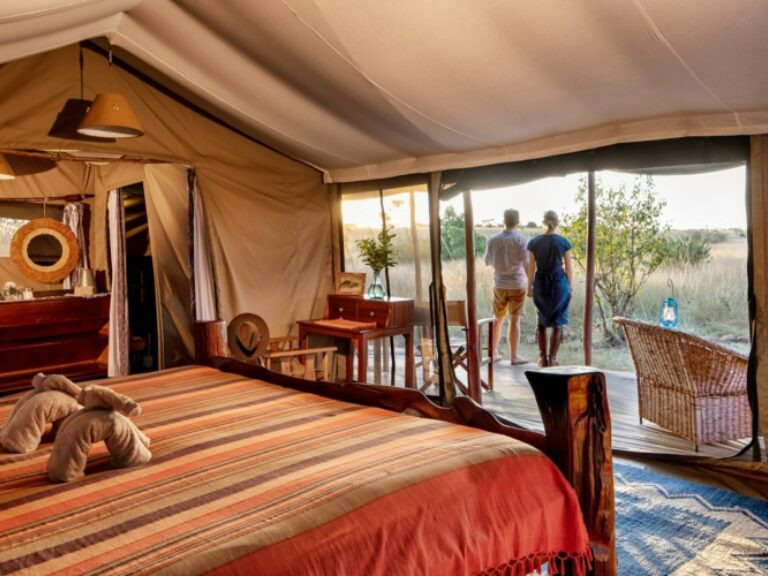
Offbeat Mara
Mara North is perhaps the best known conservancy in the Masai Mara, and Offbeat Mara is one of my favourite camps in the entire place. It's a small, un-showy camp of just seven tents including two family tents. In addition to the standard game drives you can do night drives, guided bush walks, horse riding, hot air balloon flights and even do some Maasai running coaching!
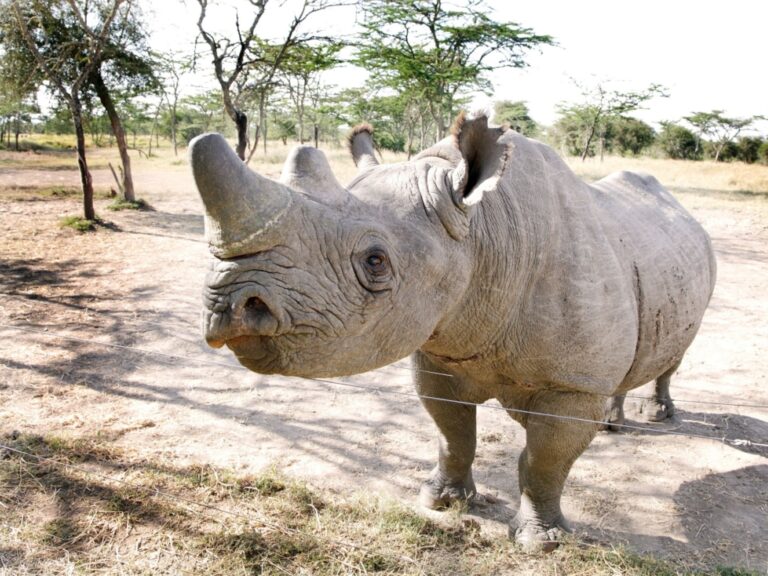
If you’ve ever wondered what the hide of a rhino feels like, wanted to experience a safari at night or dreamed of running (or riding) in the wild, open air of a safari reserve, head to Ol Pejeta Conservancy. The conservancy is in the Laikipia region, at the foothills of Mount Kenya. The sanctuary is the largest in East Africa to host black rhino, as well as the world’s last two remaining white northern rhino. Ol Pejeta is also the only place in Kenya where you can see chimpanzees. Conservation is at its core, with several experiences available for intrepid safari-goers who want to do more than just watch the animals.
Those looking to get their hands dirty can join one of the one or two-week volunteer programmes and learn wildlife research and tracking, veterinary care and more of what goes on behind the scenes. The conservancy has several accommodation options from simple cottages to basic campsites and luxury tented eco-camps.
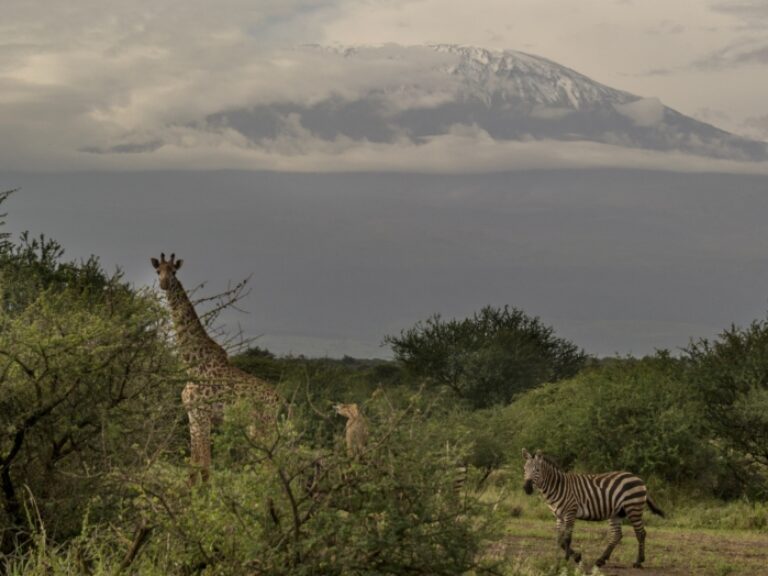
Campi ya Kanzi
If elephants are your thing, you can’t do much better than Amboseli where herds of these magnificent beasts graze in the shadow of the equally magnificent Mt. Kilimanjaro. By far the best place to stay is not in the park itself but 30km away at Campi ya Kanzi in the Kimana Community Wildlife Sanctuary, situated between Amboseli and Chyulu Hills. It’s a very high-end Maasai-run camp that was set up to aid the local community and conservation projects. Its excellent location means you can see wildlife in the conservancy, Amboseli and Chyulu all from one base.
Saruni Rhino Camp
This camp in the Sera Conservancy, just north of the Samburu Reserve in northern Kenya occupies a stunning location in the semi-desert. Their specialism is a thrilling rhino tracking walking safari, probably my favourite place to see rhinos in all Kenya. I spent five days here and by the end still couldn’t decide if coming within ten metres of the steamroller-like rhinos was thrilling or simply terrifying!
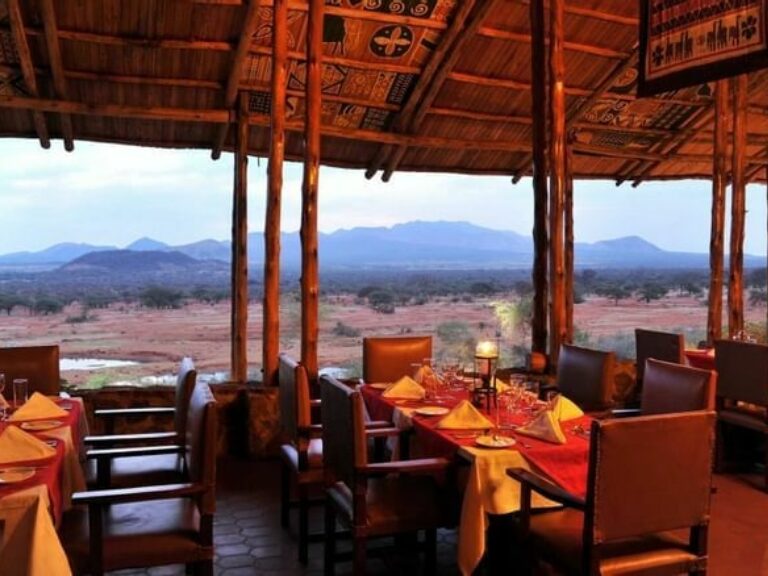
Kilaguni Serena Lodge
In Tsavo West most of the accommodation is fairly expensive (unless you have your own camping gear in which case there are three spartan public campgrounds). A reasonably-priced option is the Kilaguni Serena Lodge – it’s far from a budget offering but the Serena collection is generally pretty good value. If you have the budget to blow, Finch Hattons is the most exclusive camp in the park, with an eye watering price tag to match.
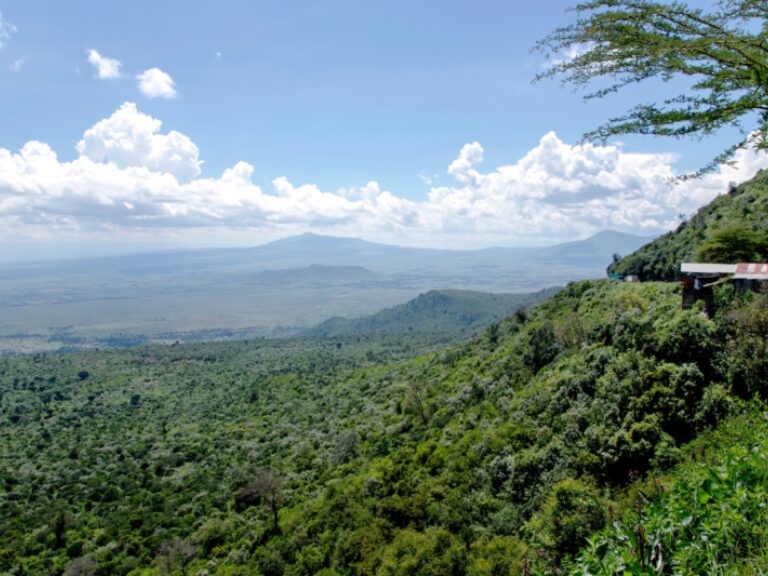
Best walking safari
In my opinion the best way to experience a safari is to ditch the 4X4 and explore on foot. With a good tracker-guide you’ll see all the little things you’d otherwise miss if you’re stuck in a vehicle all day. Walking is often forbidden within state-run national parks but is usually allowed, even encouraged, in conservancies. If I had to pick a favourite place for a walking safari in Kenya it’d be Loita Hills without question. Although not far from the Masai Mara, Loita Hills is barely visited by tourists despite boasting superb and varied scenery, a lovely climate, very different wildlife to the lower savannah plains, and fascinating interactions with very traditional Maasai culture.
Also, while Kenya doesn’t really compete with the multi-day Tanzania trekking scene, some organised trekking may be found here, as well as in the Aberdares and around Mt. Kenya.
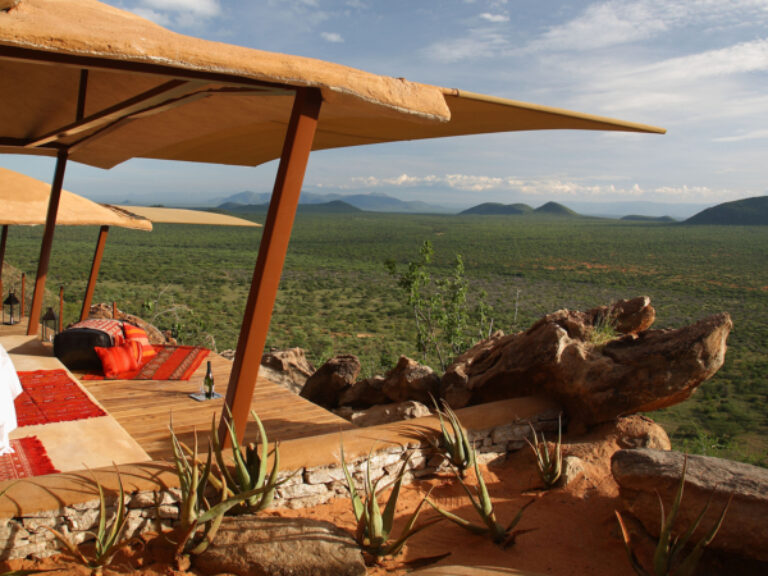
Saruni Samburu
There’s only one lodge within the Kalama conservancy, immediately to the north of Samburu Reserve, and it’s likely going to be one of the most spectacular places you’ll ever stay. Built into, around and onto a huge granite outcrop, Saruni Samburu is almost invisible from a distance but the stunningly turned out rooms offer a cliff side view over what feels like half of northern Kenya.
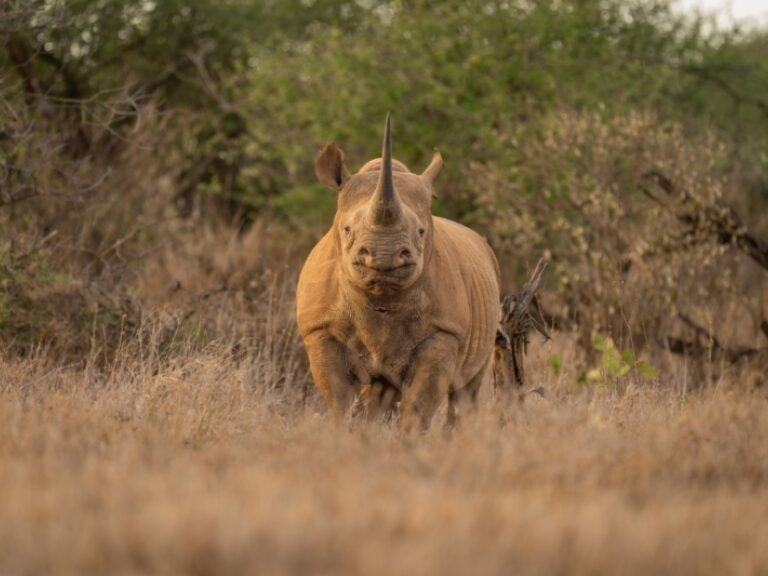
Lewa Conservancy
Lewa, in the Laikipia plateau area, is perhaps the most famous of all Kenya’s conservancies. And for good reason: this is safari to order. Want to see a black rhino? No problem. One of the superb guides will manage to find one. Lions, cheetah, elephant. They are all found here in abundance.
And it’s not just the wildlife that’s outstanding. The landscape is cinematic in its scope. Rolling sun bleached grasslands, table flat acacia trees, meandering rivers and a backdrop of the glinting glaciers of Mt Kenya.
The other great thing about Lewa (and this is common to all the Laikipia area conservancies) is exclusivity. If you’re not a guest of one of the handful of lodges then you can’t go on a safari here.
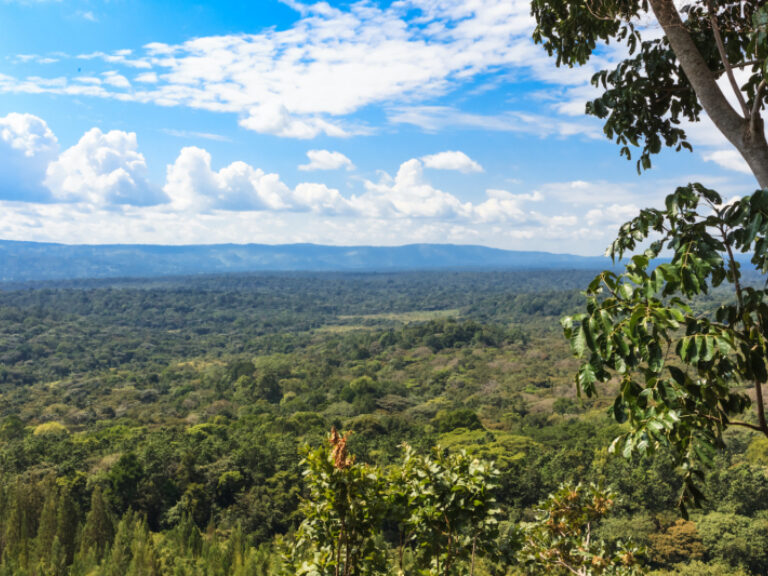
Kenya’s safari hidden gem
Just north of the equator in far western Kenya, is Kakamega Forest — Kenya’s only tropical rainforest. The land here is wet, green and intensely cultivated with a mix of subsistence farming and large tea estates. In amongst all this though are a few pockets of the dense rainforests that once covered large parts of western Kenya.
The Kakamega Forest Reserve is a fine example of this kind of forest and interesting walking safaris here reveal bird and primate life that has more in common with the forests of Uganda and the Congo than anything you’ll see on safari in Kenya. Wander the forest’s network of trails and take in the huge variety of flora and fauna it supports, including hundreds of bird species, some of which are not found anywhere else.
In my opinion, Kakamega is one of the most delightful places in Kenya, but yet hardly any tourists know of its existence. It should be a must visit for any ornithologist or herpetologist. As well as birds, reptiles and primates, I found the visit to the old mine shaft to look for bats especially memorable.
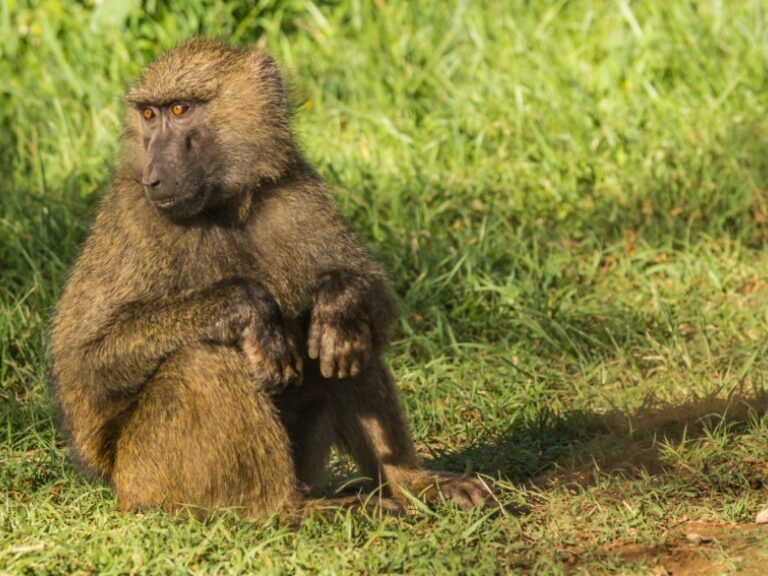
Up close and personal with baboons
Laikipia is known for its rhino conservation, but my own personal highlight in this area wasn’t the rhinos. Rather it was the day I spent with a biologist in very close proximity to around 200 habituated baboons. Having a huge male baboon shove its way past you as it bares its teeth was an experience easily on a par with gorilla and chimpanzee encounters in East Africa. The other nice thing about this particular experience is that it doesn’t involve staying inside an expensive conservancy but rather you are hosted by a grassroots Maasai womens’ project. And hardly anyone – even other Kenyans – know about it!
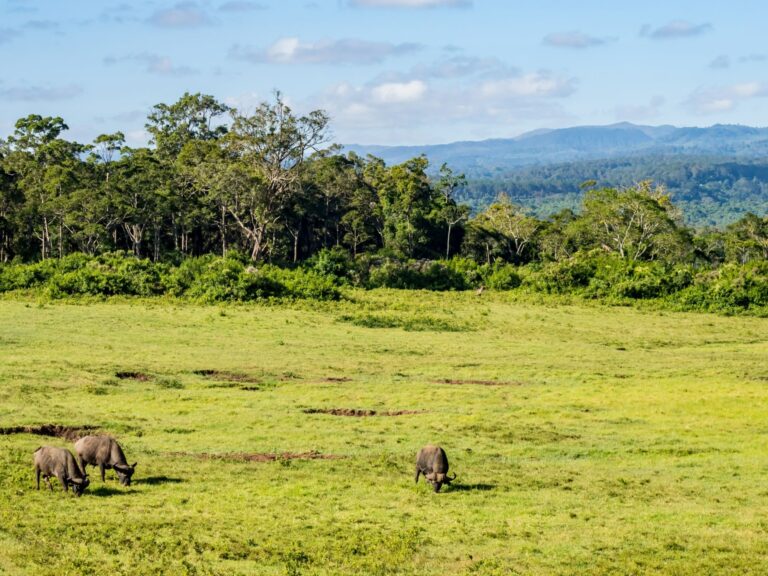
Hiking in Aberdare National Park
A world away from the African safari image of savannah grasses and drooling sunsets, the Aberdares consists of two different ecosystems. A high, cold and often bleak moorland and, below that, dense tangled montane jungle.
The wildlife here is a little different and a little harder to spot. But elephants are very common as are big grumpy buffalo. There are also montane species you won’t see anywhere else including bongo antelope, bush pigs and melanistic leopard and serval.
Unusually among Kenyan national parks, you can also get out of the vehicle here and enjoy long, lonely hikes over the moorlands: I have really enjoyed the sensation of trudging across the bleak moorlands in cold afternoon drizzle while always keeping a beady eye out for roaming buffalo.
The park also has some history. In 1952, a young English lady named Elizabeth was staying at the famed Treetops Lodge here (today’s version is actually a reconstruction of the original) when it was announced that her father had died. And so it was, that on a remote Kenyan mountain slope, that young lady became Queen Elizabeth II. Many years later her eldest grandson, and future king, proposed to Kate Middleton in a small wooden fishing cabin in a spot not so far away from where his grandmother became Queen.
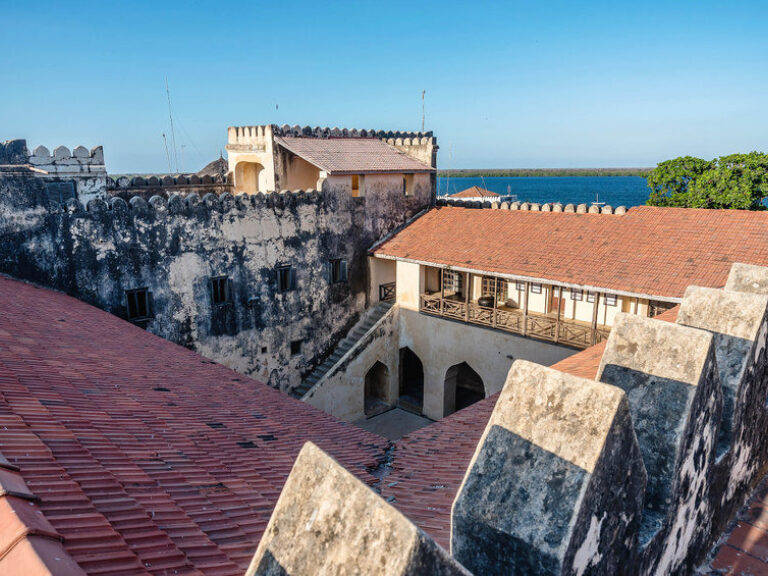
Post-safari beach time
If time allows I highly recommend you find a couple of days to wash away the safari dust on Kenya’s palm-fringed coastline. The country has many beautiful beach destinations but the standard itineraries tend to focus on Diani, south of Mombasa. My vote goes for the underrated Lamu archipelago, and in particular the old Swahili trading town of Lamu, which always leaves me enchanted.
Featured kenya safaris
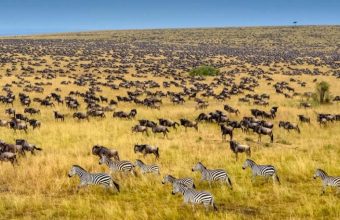
Tanzania and Kenya Safari
The greatest safari on earth, kenya's best safari parks, kenya’s most popular safari parks and lesser-known hidden gems.
In a standard two week safari it’s perfectly possible — in fact I'd highly recommend — to explore three or four different protected areas. Ideally with each one offering a totally different habitat and set of wildlife inhabitants. If I had to pick a favourite, I'd probably vote for Meru National Park, but any of the following could feature on a Kenya safari.
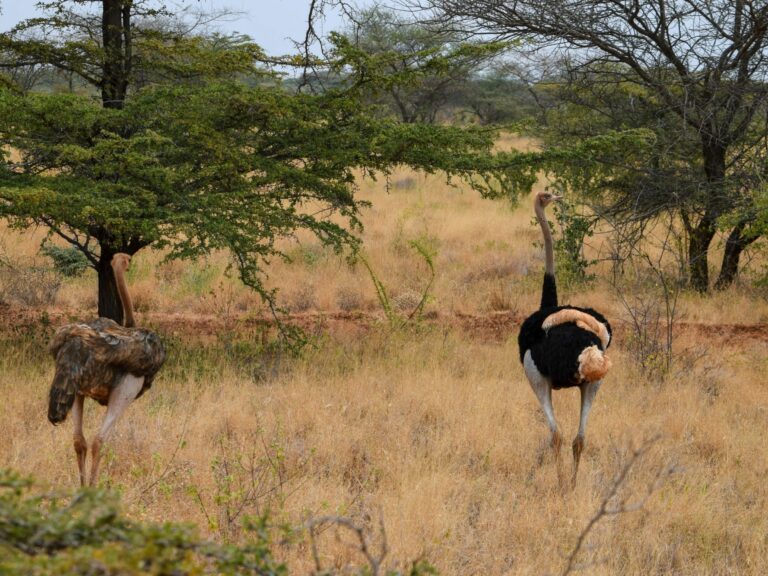
Best for tranquil, crowd-free safaris
Meru, the country’s forgotten national park, is easily one of my favourite of all Kenya’s safari parks. This was once one of the most popular parks in the country but during the 1980s, when Kenya was going through a rough political patch and instability overwhelmed some parts of the country, Meru turned into a hotbed of poaching.
Security and stability have long since returned, yet somehow this park never returned to its former fame. But for those in the know – and that now includes you – Meru National Park is safari gold.

For the classic – if busy – Kenya safari
The very essence of an African safari landscape, the Masai Mara stretches along the Kenya-Tanzania border and forms the northern fringe of the greater Serengeti ecosystem (most of which is in Tanzania ).
This is the part of Kenya in which I have spent the most time (months and months if I added it all up), and was the scene of one of my best ever travel experiences. Some years ago a Maasai friend and I set out on a five week hike that took us across the entire Mara ecosystem. By day we walked alongside the wildlife and Maasai herders. By night we camped out under the stars and slept in traditional Maasai villages. An unforgettable adventure!
This is the place to see large prides of black-manned lions, bellowing elephants, grumpy buffalo and a pick ‘n’ mix box of antelope and gazelles. And that’s before we even touch on the smaller creatures and huge array of birds. But, above and beyond all else, the Mara is renowned for the spectacular wildebeest migration .
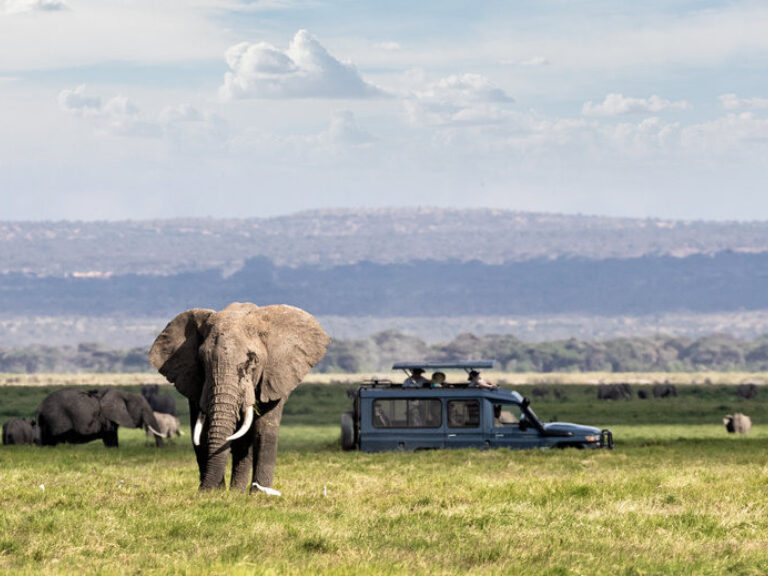
For elephants & Kilimanjaro views
Amboseli National Park is the postcard park of Kenya. This is where those photographs are taken of elephants with a backdrop of the (fast melting!) glaciers of Mt Kilimanjaro. I have spent many dreamy mornings parked under an acacia tree, a thermos of coffee in hand watching the rising sun tinge the snows of Kilimanjaro a pinky-red.
The elephants and the scenery are the real highlights of this park. In dry periods they flock here from miles around to quench their thirst in the swamps and pools that splash the dusty landscape in greens.
Another big reason to visit Amboseli is the chance to see conservation in action in the conservancies and other environmental and community projects surrounding the park.
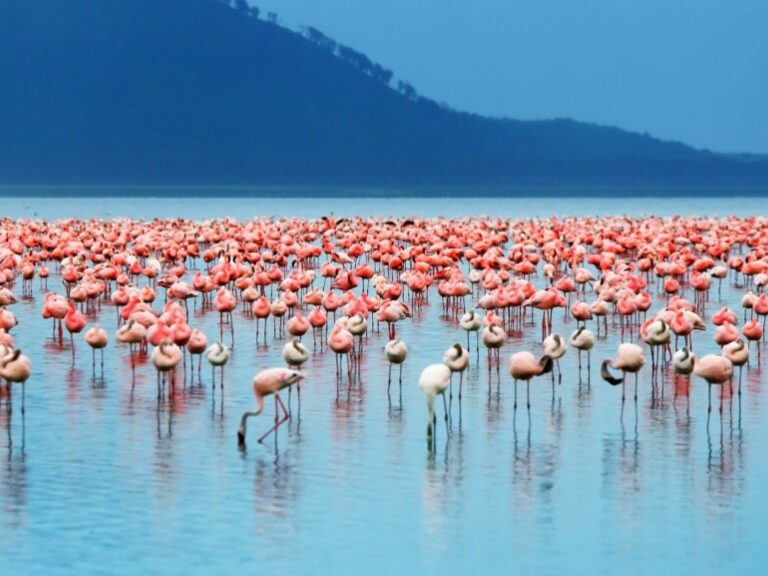
For wetland safari & birdwatching
Just 5 kilometres from the big city of Nakaru, Lake Nakuru National Park’s accessibility makes it one of the most popular Kenya safari hotspots. It’s centred on the large Rift Valley soda lake of the same name, but also encompasses fringing grasslands, acacia woodlands and rocky escarpments.
The park is best known for its sometimes huge flocks of flamingos and a large rhino population. Back in the 1990’s, Lake Nakuru was the first place where I saw a really huge flock of flamingos. I’d seen the odd handful before, but the thousands upon thousands I saw here on that day sticks in my memory. The smell (ah yes the smell!), the noise, and of course the searing pink colours; It was one of the moments that made me fall in love with Kenya.
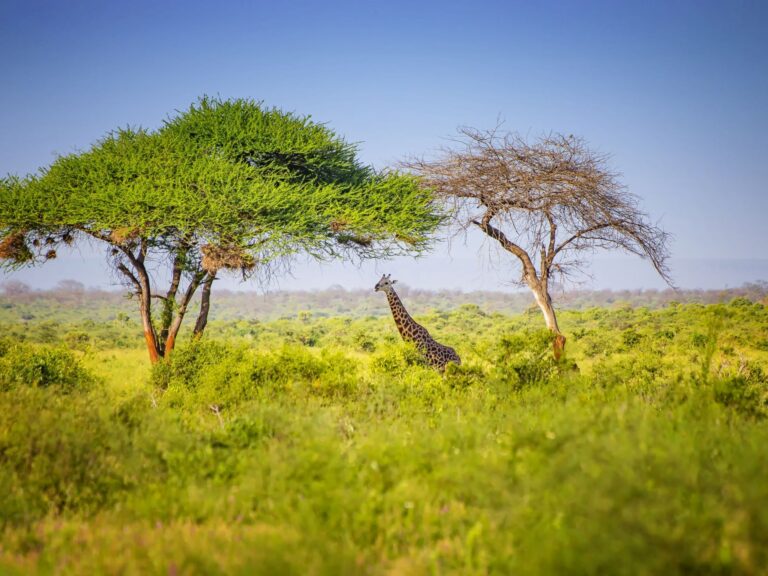
Best for wide open spaces
Combined, Tsavo East and West National Parks cover an enormous swathe of acacia scrub Kenyan wilderness. Tsavo West alone (the bigger of the two parks) covers an area greater in size than Wales, or two and half times the size of Yellowstone National Park.
The two parks are separated from each other by the Nairobi-Mombasa highway and are easy to reach from either city.
Despite being directly adjacent, the two parks are radically different from one another with the green hills of Tsavo East a marked contrast to the red soil and volcanic landscapes of Tsavo West. Because of their diversity and sheer size, I strongly recommend you devote enough time to the parks if you’re going to visit them. The rushed two-day safaris from Mombasa (or Nairobi) simply don’t allow enough time to get much out of a visit.

For world-leading conservation
The Laikipia plateau area in central Kenya is one of the most exciting places in African conservation. This isn’t a single national park or reserve, but rather a network of interlocking private and community-run conservancies where people, livestock and wildlife live together to the benefit of all.
Laikipia hosts all the classic East African safari mammals but is best known for its rhinos, including the critically endangered northern white rhino, only two of which are left alive. Both are female and so, tragically, this is a species awaiting extinction. They can be seen at the Ol Pejeta conservancy.
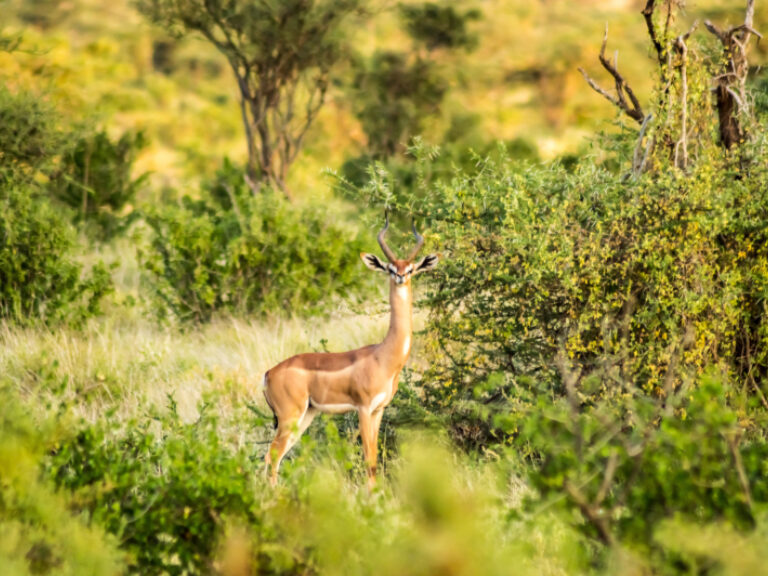
Kenya’s remote far north
Samburu, Buffalo Springs and Shaba National Reserves are three interconnected reserves on the edge of northern Kenya’s vast semi-desert wilderness.
Far removed from mainstream Kenyan life, these northern regions have a wild reputation. The landscape is harsh with endless sunburnt plains of acacia thornbush out of which rise the occasional fertile and densely forested mountain peaks, ranges, table lands and volcanic plugs.
Elephants, in particular, are the main event here. There are large herds who can migrate huge distances in search of water.
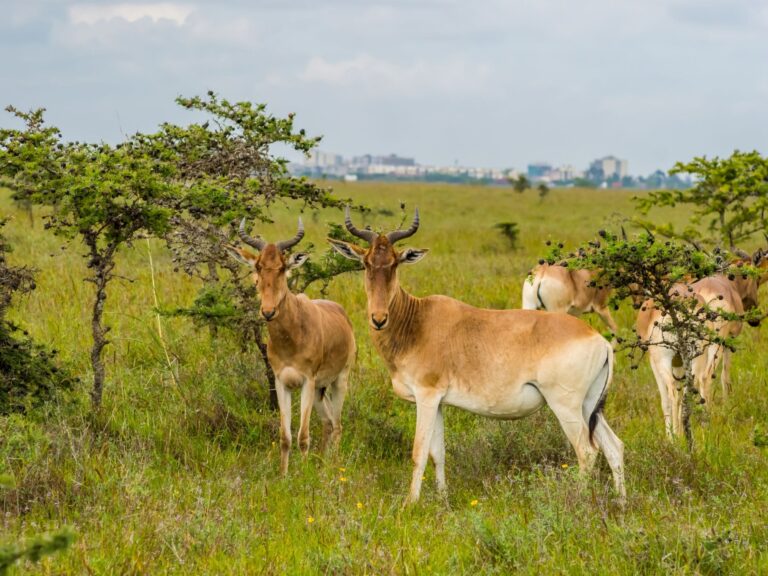
Safari in the big city
While most capital cities have their collection of ornate parks filled with neatly cut lawns, manicured flower beds and perhaps a boating lake, Nairobi has gone one step further.
Its biggest ‘park’ is in fact a 117 square kilometre swathe of undulating savannah grassland and acacia woodland. And while it doesn’t have a boating lake, it does have lions. And buffalo. And rhinos. All of which means that it’s probably not such a sensible place for an after work stroll.
It’s a fabulous safari destination but is woefully overlooked by international visitors to Kenya. This is a shame, because Nairobi National Park is an excellent safari location in its own right. I have been many times, often just for a quick half-day drive from the city. This was the place I first witnessed the thrill of a hunt: a cheetah racing, but failing, to grab dinner for her cubs.

A pair of ostrich in Meru National Park
Kenya safaris: Need to know
Everything you wish you'd known before you booked.
My first Kenya safari was in 1994 and I’ve been coming back pretty much every year since. Here’s what I’ve learned over the years about the best way to plan and book a safari in Kenya.
Mix up your itinerary
My single most important tip for Kenya safari first-timers is to avoid the mistake of non-stop game drives. Standard tour operator itineraries shuttle you from park to park with a gruelling schedule of game drives. Yes, this is the best way of seeing large mammals up close, but the bumpy tracks, early starts and long hours quickly exhaust even the most ardent wildlife-watcher. And there is so much more to safari in Kenya that you’ll miss from racing around in a jeep. Break it up. Look for operators who offer bush walks, village visits, and conservation projects. Or simply take an afternoon or two to sit back under a tree enjoying the sights, sounds and smells.
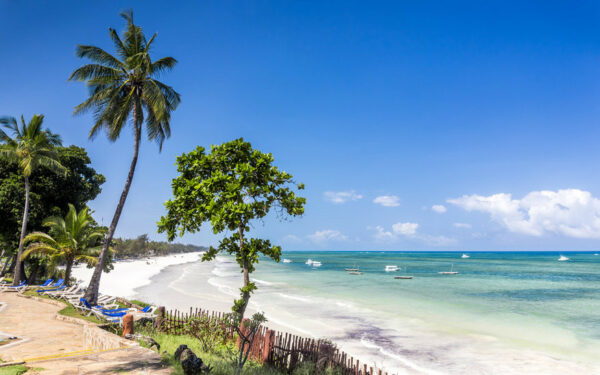
Many visitors to Kenya devote their entire trip to going on safari…
Don’t miss Kenya’s many hidden gems
Most standardised Kenya safari itineraries reduce the entire country to the blockbuster highlights: the Mara, Amboseli, Lake Nakuru… maybe Tsavo and Samburu if they’re feeling adventurous. This does a great disservice to the country’s true diversity. There’s so much more to a Kenya safari than racing around the savannah chasing the big five and I’d strongly advise you find time to visit some of Kenya’s numerous hidden gems.
For instance, out in the far west is Kakamega Forest Reserve which has more in common with the rainforests of Uganda and the Congo than the classic Kenya landscape. In my opinion this is one of the most delightful places in Kenya, yet hardly any tourists know of its existence.
Another personal favourite that’s a world away from the classic Kenya savannah is Aberdare National Park where dense tangled montane jungle gives way to a high, cold and often bleak moorland. Unusually among Kenyan national parks, you can also get out of the vehicle here and enjoy long, lonely hikes over the moorlands.
But that’s not it: Saiwa Swamp, the Chyulu Hills, Hells Gate, Ruma National Park, and many more that rarely feature on the mainstream Kenya safari circuit but are usually accessible on a self-drive safari, or with more specialist safari operators.
Get out of the safari bubble
Many safari goers, especially those on a high end tour just bounce from one heavenly safari camp to another. Sure, you live the Hollywood Africa dream but you’ve not really experienced real Kenya. Instead, hop on a bus and head out to one of the numerous small market towns where most Kenyans live. You’ll experience a totally different side of the country and it’s one that will stay with you long after the sundowner safari drinks fade from memory.
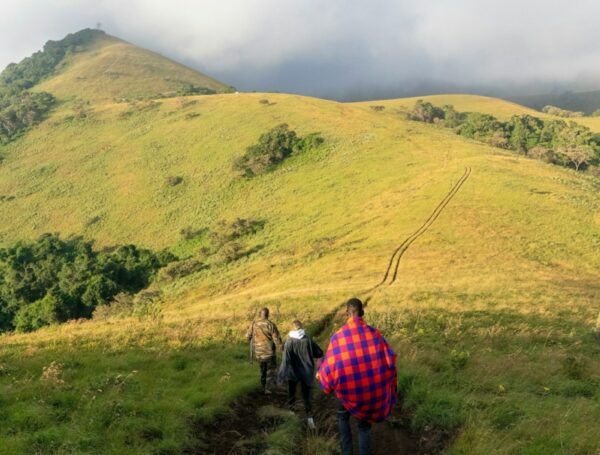
Kenya off the beaten track
The parks and reserves covered in my Kenya safari guide are only the best-known and most visited of the country's numerous protected and other natural areas…
Stay in at least one conservancy
National parks, reserves and conservancies are mentioned a lot in this guide, but just what is the difference and why does it matter?
A national park or reserve is a government or local council run protected area. Most of the best-known protected areas in Kenya fall into this category.
These areas are run solely for the benefit of wildlife and tourism, sometimes at the expense of local people. Tourism in these areas creates jobs, but locals are often forbidden from entering these protected areas other than for work reasons and communities were often (but not always) removed from their land when the parks and reserves were created. Corruption can be a problem with the money generated by these parks not always going where it should.
A conservancy is a different affair. A conservancy is normally located on either communal land owned by the community as a whole or on private ranch land and has no official government status. On a community conservancy the tourism stakeholders (i.e. the safari camps) lease the land from the local communities on the condition that the land is managed in a manner that is of benefit to both people and animals. The (normally very high) fees you pay to stay in a conservancy go toward paying the land leasing fees as well as various community and environmental projects.
Other conservancies may be located on private ranchland, in which case they have to make enough money for the landowner to financially justify turning his land over to wildlife conservation over cattle ranching.
In other words, a conservancy is run for the benefit of both wildlife conservation, tourism and the needs of local communities (in many cases local people are allowed to continue to graze their cattle on a conservancy but in a controlled and sustainable manner).
All of this means that staying in a conservancy is not just a great safari experience but it’s also very good news for conservation!
Do a homestay
For a cultural experience you’ll never forget, try spending a night at a Maasai homestay near the Masai Mara. Finding authentic, community-run homestays can be a bit of a minefield. I can recommend Sekenani Maasai Development Project (Semadep) but there are others – make sure you book with a community owned and operated outfit, and check reviews carefully.
Caution needed: "Human safaris"
In my opinion, one of the big problems with the safari industry is the way it prioritises seeing wildlife over having meaningful connections with local people. In fact, other than being served by their guides, drivers and camp employees, a typical safari-goer might not have any interaction with a local at all. To me, this is the exact opposite of how it should be done! In my experience, a good trip to Kenya isn't just about seeing wildlife: it should put intimate, authentic interactions with local people at the heart of the whole experience. You can make genuine connections and real friendships as you sit around, sharing stories, laughing and learning from each other.
On the other hand, mainstream Kenya safaris are often sold with "village tour" or even "slum tour" add-ons. These "goldfish bowl safaris" as I call them are unethical and nothing short of exploitation. They violate the privacy, integrity and dignity of local communities and undermine sustainable development by perpetuating a myth of backward, poverty-stricken people. The traveller thinks they're doing the right thing by getting some cultural interaction, but in reality it's deeply damaging. I strongly encourage visitors to avoid anything that feels contrived, and look for trips that put real people at the heart of the experience, rather than an afterthought.
How to plan & book a Kenya safari
There are three broad categories of safaris in Kenya.
The first and easiest option is to book a week(s)-long, multi-stop itinerary through a tour operator, either locally-based or international. This provides the most hand-holding and support for cautious visitors, plus more protection should things go wrong. The potential downside is getting shunted onto one of the more formulaic itineraries and simply following the crowds around the most popular parks. If you book a full tour with an operator, try to find a genuine specialist and ask about visiting some of the lesser-known locations mentioned in this guide.
Secondly you can simply show up and book a safari tour once in-country from the hundreds of operators in Nairobi. There’s nothing inherently wrong with doing it this way but I strongly advise you don’t just book something in the street. Do your homework first and find a reputable, responsible operator. Things to double check include whether park entry fees are included in the price, vehicle type (avoid cramped minibuses), and accommodation type.
Thirdly, and probably my recommendation for all but the most cautious of visitors, is to book the accommodation yourself, rent a car (or a car plus driver), and head out solo. You can take your own camping gear or book into lodges or camps (booking ahead is essential!), or mix camping with more comfortable nights in lodges. I strongly advise renting a vehicle plus driver. It’s often cheaper plus you get an unofficial local guide who knows the ropes. A good driver will become a cultural and language translator, wildlife guide, fixer, and general guardian angel.
Aim for shoulder season if possible
High season in Kenya is the peak summer months of July to September, before the rains begin. In my experience the best time to visit – especially in the busier parks – is either June before the crowds arrive or September-October as the crowds are thinning out, wildlife viewing is excellent and temperatures are ideal.
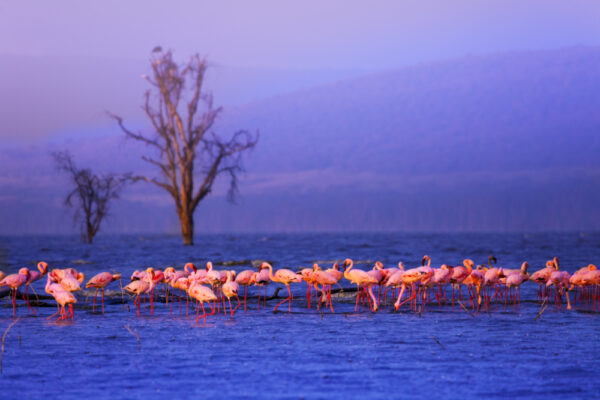
The best time to visit Kenya for safari
January & FebruaryThis is a hot and dry period…
Be prepared to splash out!
There are almost as many different ways of doing a safari as there are stripes on a zebra and how, when and where you safari makes a huge difference to what you pay. Expect to pay anything from $150 to $1,000+ per person per day.
You can find very low budget two or three day safaris to the Mara from around $250 all in, but these are generally rushed, crowded and uncomfortable. If you’re looking to shave off some costs without compromising on the experience, consider doing a DIY camping safari with your own vehicle and driver.
My other big Keny safari tip is to spend as much as your budget allows on fewer nights in better conservancies and camps. Packing more into fewer days gives you much greater bang for your buck.

Kenya safari costs
For a multi-day, mid-range safari visiting some of the big name parks and reserves then you’re looking at around USD $300-600 per person, per day…
Kenya safari FAQs
Your questions, our expert answers, is it safe / a good idea to rent a car in kenya and drive yourself around, or is it better to join a tour.
Yes, it's perfectly easy to do a self-drive Kenya safari . When you ask if it's "safe" that depends a little on what you mean. If you mean are there bandits, car jackings, dangers from wildlife, etc, then no you are quite safe. Instead the danger is from other drivers, as the driving conditions can be a little 'hectic' in places and accidents are common.
I'd recommend hiring a car with a driver, which can be a cheaper and, in my opinion, a much better option. A good driver will know the lay of the land, the driving conditions, best places to stop for lunch, etc. And they are often knowledgeable of the wildlife. A good driver will be both your driver and guide, and probably become your friend!
Almost any tour company in Nairobi or Mombasa can organise a private vehicle with a driver. Standards and prices vary hugely, so explain to the tour company exactly where you want to go and get in writing exactly what is and isn't included. Pay particular attention as to whether fuel, and the drivers food and accommodation is included in the rates. Also make sure you're booking the right vehicle: a 4WD may be needed for more remote areas.
Where’s the best place to see the big five in Kenya?
Seeing all the big five (lion, leopard, elephant, buffalo & rhino) in one park is hard. Only Lewa and some of the conservancies in Laikipia can honestly claim to offer easy sightings of all five. But, who cares! This fixation on racing around to tick off just five species is an anachronism from colonial-era big game hunting days. There’s so much more to Kenya’s wildlife and the modern safari experience.
We're visiting the Masai Mara but would like to visit another area on safari in Kenya. Can you recommend anywhere very different to the Masai Mara to see different wildlife and landscapes?
The most common combinations for a short add-on to the Masai Mara are Amboseli , Laikipia or the Samburu area.
For your requirements of a different habitat and wildlife then without doubt I would suggest Samburu National Reserve. This is a much drier and hotter area than the Mara with different vegetation and animals. And, even the animals you might have seen in the Mara are different up here with different species of giraffe, zebra and ostrich all present (and in my opinion all more beautiful than the kinds in the Mara). The park is also superb for elephants.
Samburu, though still popular, is notably quieter than the Mara and, once away from the river, it's easy to feel you have the place all to yourself (and especially if you go into the co-joined Buffalo Springs and Shaba reserves). Depending on when you are there you will find direct flights from the Mara, but otherwise will have to go via Nairobi. If you're driving it's a long way – a 10 hour non-stop drive, so flying is the better option.
Would you recommend staying at Elephant Bedroom Camp in Samburu Reserve, or at Sarara Camp in Namyunak Conservancy?
The quantity and ease of seeing the wildlife is better in Samburu Reserve than in the neighbouring Namyunak Conservancy (because the wildlife is drawn to the river running through the reserve). But there's not a huge difference in habitats or species between the two.
Elephant Bedroom Camp, in Samburu, is a fabulous, small camp. You'll see a lot of elephants and the owners are some of the worlds foremost elephant experts.
In Namyunak Conservancy, Sarara Camp is one of the most exclusive – yet low-key – camps in Kenya. There's slightly less wildlife than in the reserve but it's very close to the reserve and safaris from Sarara often enter the reserve.
The bonus with Sarara is exclusivity. You and the other camp guests will have the entire place to yourself meaning no crowding around animals (though that's rarely a problem in Samburu).
Unlike in the reserve itself you can do walking safaris in the conservancy and there will be more interaction with local people. The final plus is that by staying on a conservancy you will be actively helping to fund private/community conservation initiatives, which isn't always the case when staying only in a reserve or national park.
Overall then, I would opt for Sarara Camp, but I suspect it does cost more, so it might come down to budget!
We are travelling with a large group of 5 families with 3-4 kids per family. What are the best budget friendly safaris in Kenya in July?
If most of the children in your group are very young, your options are fairly limited as the reality is that a longer, multi-day safari can be a bit much with very young kids. I first did a safari with my kids when they were five and two years old and although it was good I probably wouldn't do it again! Past the age of about eight or nine the safari experience gets much easier, as they'll will tolerate sitting in a jeep on a bumpy road for longer.
Do be aware that some safari camps don't accept children below the age of 12. These are normally the unfenced camps and it's done for safety reasons.
You will also need to keep in mind that you will either need several safari jeeps and to travel in convoy or a bus (and these aren't always allowed in some parks). Because you will be travelling with so many children I would suggest small safari camps which you can book out for your group alone. Some of these are more child friendly than others. Some possibiltles that I believe might work well for your group are: Maji Moto Eco Camp, Loita Hills Basecamp, and if you are interested in a Maasai homestay style experience then I'd suggest Semadep Camp, who can arrange homestays around the Masai Mara.
As for specific parks and reserves the Masai Mara area is good because there's a lot of animals to see everywhere you look which keeps children interested. Also good are Nairobi and Narok national parks because of easy access and good roads. Lake Naivasha is good for families too.
It would be easy to combine all these places into a 10 day safari and then you could maybe finish up on the beach (Lamu and Watamu are both superb for families).
Can you recommend any family-friendly camps/lodges in the Masai Mara?
I would suggest rather than staying within Masai Mara proper, stay in one of the conservancies that now fringe the Mara.
In the most basic of terms these are like private, community-run wildlife reserves. Conservancy operators lease the land from local people and each local family receives a guaranteed monthly payment. The conservancy also provides employment and sets up development projects. People continue to graze their cattle but in a more controlled manner. And in return, fences are removed and the wildlife encouraged to return to the lands they were once driven out of. The conservancies have been a great success both for wildlife and local people. And, for tourists, they offer a very exclusive experience and the world's finest safaris.
Each conservancy has only a handful of very discreet high end camps and only guests of those camps can go on a safari in the conservancy, which means crowds of vehicles around a lion are non-existent.
The conservancies also allow activities not permitted within the reserve such as walking (highly recommended), bush camping, night safaris, etc. This makes them ideal for kids because it breaks up the routine and allows a little more freedom.
The safari vehicles and guides used in the conservancies are absolutely the best in the game and the wildlife populations are the equal of the actual reserve. However, there's a catch (of course...), conservation like this doesn't come cheap. All of the conservancies are superb but some names are Naboisho, Mara North and Nashulai Maasai Conservancy (this last one being slightly cheaper than the others and lots of focus on meeting local people). As for actual camps you cannot go wrong with any of them. All the conservancy camps are superb. I'm a big fan of the Basecamp offerings, Off-Beat and Kicheche. All are a little less extravagant than some of the other camps.
If you want to only visit the reserve and not a conservancy then I suggest either Basecamp Mara, Oldarpoi or you could go for a Maasai homestay in Sekenani village. Expect basic but perfectly comfortable rooms but an amazing experience. Your kids would really enjoy this.
Is February a good time to visit the Masai Mara, or would June-July be better? What would be the differences?
February is a very good time for safari in the Masai Mara , but also very different to the experience in June and July.
It's hotter and drier in February and generally there are fewer other tourists. There will still be plenty of zebra and wildebeest around but these are the non-migrating resident herds, so they don't form the massive iconic herds that you might see on TV.
July is good because the migrant wildebeest are all normally in the Mara by then, but its also absolute peak high season so can be busy and expensive. June is perhaps my overall favourite month. Everything is green after the rains and it's nice and cool with far fewer tourists than July, but the first migrant wildebeest might start to arrive (it all depends on rains and the state of the grass).
In short, all three months are excellent but each is different so it might be best to go with whatever just suits your timings better.
I will be in Kenya in early March and am looking for a five day safari for wildlife photography and birdwatching. Where would you recommend for me noting it is the start of the rainy season?
Early March is still a bit early for the rainy season so you might just get the odd thunderstorm. If birds are your real interest and you only have five days then probably the easiest is to go down to the Masai Mara via the Rift Valley lakes of Naivasha and Elementia or Nakuru. This would give you a good range of avian habitats and species in a short space of time. Don't forget as well that Nairobi itself has some excellent birding in the various forests and parklands in and around the city. Plus of course, there's the superb Nairobi National Park where you will see a lot of wildlife and birds.
We can't travel during the migration river crossings, are there other impressive spectacles at other times of year?
Yes! I think calving season during the wildebeest migration is just as spectacular as the more famous river crossing period.
This period runs from December to March around the Ndutu Plains to the south of Serengeti. During this time the wildebeest and zebra stampede over the plains preparing to give birth to thousands of calves. At the same time the big cats are on the lookout for an easy snack. With vast numbers of animals, their sounds and smells, all of the little calves, and the big cats on the lookout... it's theatre on an epic scale and you cannot be disappointed. And the extra benefit is that it's a much shorter drive here than to see the river crossings.
Robbin Meulemans
In this guide:, typical prices for a safari in kenya, when to go on safari in kenya, things to do in kenya other than safari, best safari camps and lodges in the masai mara, about the author.
Stuart is an award-winning travel journalist covering safari, trekking and conservation in Africa for the Lonely Planet, Rough Guides, BBC, Bradt Travel Guides, amongst many others. He is the author of Walking With The Maasai , a journey through some of Kenya's lesser-visited Maasai lands.
Featured tours

Kenya & Tanzania East African Adventure
21 day small group tour, other guides you might like, gorilla safaris, an expert guide to seeing gorillas in the wild.
Philip Briggs
South africa safari, an expert guide to safaris in south africa.
Anthony Ham
Wildebeest migration safaris, an essential guide to planning a migration safari in tanzania and kenya.
Hans Cosmas Ngoteya
Safari in zambia, an expert guide to zambia's best safari parks, camps & lodges.
Sarah Kingdom
Safari in tanzania, an expert guide to tanzania's best safari parks & camps, safari in botswana, an expert guide to botswana's best safari reserves, camps and experiences, where and how to see the big 5 on safari in africa, safari in africa, our travel writers' top africa safari picks, zimbabwe safaris, an expert guide to the best safari camps in zimbabwe, chimpanzee trekking, an expert guide to seeing chimpanzees in the wild, namibia safari, an expert guide to the best safaris in namibia.
Melanie van Zyl
Featured tours view all.

Why Horizon Guides?

Impartial travel guides
Our guides are written by the leading experts in their destinations. We never take payment for positive coverage so you can count on us for impartial travel advice.

Expert itineraries
Suggested itineraries and routes to help you scratch beneath the surface, avoid the tourist traps, and plan an authentic, responsible and enjoyable journey.

Specialist advice
Get friendly, expert travel advice and custom itineraries from some of the world's best tour operators, with no spam, pressure or commitment to book.
Our guides are 100% impartial and are written by independent, professional travel journalists. We make money by charging carefully-screened travel companies to list their business on our website. Our advertisers have no influence on our editorial content and we never accept payment for positive coverage.
Read more about how we work and what we believe in here .
- Travel guides
- Work with us
Sitemap , Privacy Copyright © 2024 Horizon Guides
- +256 392 176327
- +256 702 805580
- [email protected]
Kenya Safaris - Ultimate First Safari Guide
Home / Destinations / Kenya
Embark on a once-in-a-lifetime adventure with our comprehensive guide to Kenya safaris for first-timers. Our expert travel guide will help you discover the best wildlife reserves, national parks, and accommodation options in Kenya, while providing valuable tips and tricks from experienced safari-goers. From the stunning landscapes of Maasai Mara to the majestic Mount Kenya, our guide covers everything you need to know to make the most of your safari experience in Kenya.
As the pioneer safari destination and one of the leading African safari destinations, Kenya is renowned for its spectacular wildlife shows, making it a top choice for family vacations. Our guide will help you plan an unforgettable adventure in Kenya, outshining other East African destinations. Whether you're planning your first or third safari, our travel guide is packed with the best ideas to help you create memories that will last a lifetime.
KENYA SAFARIS TRAVEL GUIDE
You have made a great decision by selecting Kenya Safaris for your first wildlife adventure in Africa. As the pioneer safari destination and one of the leading African safari destinations, Kenya is renowned for its spectacular wildlife shows , making it a top choice for family vacations and first-time safari experiences in Africa. Our guide is packed with the best ideas to help you create memories that will last a lifetime, outshining other East African destinations.
Kenya is a land of astonishing diversity and extraordinary tourist attractions, perfect for wilderness adventure vacations. Nairobi, the capital, is a bustling city where colonial buildings rub shoulders with modern skyscrapers, while steamy, coastal Mombasa retains its solid Arabic influence and history as Kenya's largest and busiest port. Kenya lies on Africa's east coast, bordered by Uganda to the west, Tanzania to the south, South Sudan and Ethiopia to the north, Somalia to the northeast, and the Indian Ocean to the southeast.
When planning your first-time safari in Africa, Kenya is an excellent destination to explore. It's also a great addition to gorilla trekking in neighboring Uganda or Rwanda. Don't miss out on the coastal beaches, which are a perfect getaway vacation to end your Kenya safari. Let our expert guide help you plan your unforgettable adventure in Kenya safaris as a first-time safari-goer.
- Explore the Great Rift Valley dotted with a string of lakes including Nakuru and Naivasha; fertile highlands with towering peaks such as Mt. Kenya; and a coastline and islands with long pristine sandy beaches and marine parks full of coral reefs and colorful fish. Its two major cities couldn’t be more different.
- The Big Five are all present and seen with various degrees of ease. Elephants, buffaloes, and unusually large lion prides are common. Leopards are more elusive but relatively easy to locate with a local pro guide. Up to three dozen black rhinos still survive. Even outside of the migration season, ungulates are well represented; there’s no better place for close-up views of the eland, the world’s largest antelope. A Kenya safari game drive will likely see giraffe, impala, gazelle, topi, Coke’s hartebeest, reedbuck, Defassa waterbuck, hippo, and warthog.
- Birders will find East Africa’s magnificent savanna birdlife around the Mara triangle, with more than 500 species recorded in and around its borders, including such perennial favorites as Lilac-breasted roller, Superb starling, and Little bee-eater.
- During annual wildebeest migration, wildlife drama eclipses during the multiple river crossings, punctuating the great herds’ three-month tenure in the Masai Mara, from August to October.
Trip Inquiry Form
About your trip.
When do you want to travel?
Month* —Please choose an option— January February March April May June July August September October November December
Year* 2023 2024 2025
For how long (days)?*
How many people are traveling?*
Your inquiry.*
Important Personal Information
Our privacy policy includes a promise that we will keep your personal details private and not share them with any third party. We Intend to keep that promise.
The Great Migration
Over two million wildebeest and zebra cross the Mara river sometime between July and August, and they repeat this every year in larger numbers. It's not just the gnu that would attract you here, but also the healthy number of predators looking for an easy meal. This spectacle is not to be missed, especially if it's your first safari in Kenya.
Why Kenya Safaris Are Great For Your First Safari
Millions of plains game move in an endless cycle of birth and death from Tanzania's Serengeti through Kenya's Mara Triangle. It's like a movie sequence when they cross the Mara River with predators and prey locked in a life or death dance, the most extraordinary wilderness spectacle on earth that should take you to Kenya.
Big Game Viewing
Visiting Kenya’s legendary national parks and game reserves almost guarantees that you’ll see the famous Africa safari's Big Five animal popularised by the colonial white hunters in the early birth of Africa safari. And where there's big game, there are definitely huge herds of plains animals and hundreds of colorful birds.
Mythical Nomadic Tribes
Maasai communities lie within the Maara bounds and other famous game reserves. The tall and dignified red-robed Maasai have held explorers, adventurers, and writers in thrall for centuries. Cultural adventure excursions in Maasai villages to view men herding livestock and women carrying water or firewood are common on safari vacations.
Beach Escapes
Miles of white sandy beaches lined by an azure ocean and water sports galore. From diving and snorkeling to windsurfing, adrenalin sports to simple seaside fun, sipping sundowners, to deep-sea diving, some of the Kenya safari's last magical moments happen at the coastline.
Historical Adventures
Check out ancient history along the coast where Arab traders and Vasco da Gama once sailed. In the tiny UNESCO World Heritage town of Lamu, you’ll find an Arabic way of life unchanged for centuries.
Gorillas Are Near
Kenya is a close neighbor to Uganda and Rwanda, who host the mythical endangered mountain gorillas. It's now simple to connect a Kenya Safari to a Uganda gorilla safari with local flights between the destinations.
COSTS FOR KENYA SAFARIS (USD)
Most Kenya lodges refer to an all-inclusive (full-board) per person rate, including taxes, and assuming double occupancy. A few lodges operate on a half-board rate, and rare ones offer bed & breakfast except city hotels.
TAILOR-MADE KENYA SAFARIS

Family Safari Holiday With Teenagers
8 Days | Best for Teenagers Nairobi, Laikipia & Masai Mara

Masai Mara & Gorilla Trekking Safari
10 Days | Fly-in Kenya & Uganda Entebbe, Bwindi, Masai Mara, Nairobi

Kenya Family Safari Holiday With Kids
10 Days | Best for Kids 4-10 yrs Nairobi, Masai Mara & Mombasa Beach

Classic Kenya Luxury Safari Holiday
13 Days | Pure Luxury Travel Nairobi, Tsavo, Laikipia & Masai Mara
BEST PLACES FOR FIRST SAFARI IN KENYA
Unfortunately, you probably won’t be able to see all the best places for your first safari in Kenya on one trip; they're just too many. Must-See Parks places in Kenya include Masai Mara National Reserve, Amboseli National Park, Tsavo West, and the Laikipia Plateau. The if-you-have-time Parks include Nairobi National Park, Meru National Park, Samburu National Reserve, Lakes Nakuru, and Naivasha. When planning your first safari in Kenya, we advise that you research all of them before you take your pick.

Masai Mara National Reserve
Masai Mara is a world-renowned wildlife paradise and a perfect scene for wildlife photographers. It's the top attraction first-time visitors to Kenya should visit. Easily spot large predators such as lion, leopard, cheetah, and Spotted hyena at close quarters all year round. The reserve truly blossoms between August and October, when the legendary wildebeest migration - perhaps the world's most incredible wildlife spectacle - crosses into Kenya from Tanzania.

Amboseli National Park
Kilimanjaro’s snowcapped peak, massive herds of elephants, and quintessential Kenyan landscape (open plains, acacia woodland, grasslands, bush, and marshland) greet you along the Tanzanian border. Amboseli offers excellent African game viewing, second only to Masai Mara. It is a common choice for wildlife photography safari in Kenya and a great addition to a Mara migration safari.

Tsavo East & West
Tsavo West and East National Parks. Tsavo West and Tsavo East are home to peaceful lion prides and loads of other savannah wild game. Split by the Mombasa Highway, their proximity to the coast makes them a great choice for those who want to combine beach and beasts.

Laikipia Plateau
This region has become one of Kenya's hottest game destinations with some of Kenya's classiest camps and lodges. The nearby Samburu National Reserve boasts unusual dry-country species of animals and birds.
Laikipia safari guide
If you have time, also visit these places
Although the travel reviews go into great detail about the must-see parks in Kenya, there are many other attractions to explore if you have time. Here are a few good ones our travelers typically choose to add on their first Africa safari in Kenya.

Nairobi National Park
The most striking thing about Nairobi National Park, Kenya’s oldest national park (established in 1946), is the very fact that it exists at all. This sliver of unspoiled Africa survives on the edge of a city of more than 3.5 million people. Where else can you get a photo of animals in their natural habitat with a backdrop of skyscrapers?

Meru National Park
This little-visited park (699 square miles) offers some of Kenya’s wildest country but does not feature on the mainstream safari circuit. Meru is where wildlife guardians Joy and George Adamson hand-reared Elsa , the lioness made famous by the 1966 film Born Free .

Lake Naivasha
One of the Rift Valley’s few freshwater lakes, Lake Naivasha is a popular spot for day trips and weekends away from Nairobi. Although the lake is not part of a national park or game reserve, it has pleasant forested surroundings, which are a far cry from the congestion and noise of Nairobi, and there is plentiful wildlife around.

Lake Nakuru
This delightful and compact park covers around 188 square km (73 square miles) and completely surrounds Lake Nakuru on the floor of the Great Rift Valley. Until a few years ago, it was most famous for the hundreds of thousands of flamingos that fed on the algae in the shallows. Nevertheless, Nakuru National Park is still a very rewarding and easy park to visit.

Samburu National Park
“In the far northeast of the Laikipia Plateau, north of Mt. Kenya, is the remote Samburu National Reserve. Lying in the traditional homeland of the Samburu people in hot, arid, and relatively low country on the fringes of Kenya’s vast northern deserts, this reserve is highly regarded by experienced travelers and old Africa hands alike.

East Africa’s economic and logistics hub is Kenya’s capital Nairobi. Because almost every wildlife safari vacation starts and ends in the capital city, it is hard for any traveler to miss Nairobi. Nairobi presents the authentic everyday African urban life, especially the city’s leafy suburbs, where the most exciting attractions are found.
Experience the ultimate safari adventure during the final days of your trip along the Kenya coast.
Holidays at the Kenya coast
Kenya is home to one of Africa's most intriguing and historically essential coastlines, perfect for introducing travelers on their first safari in Kenya to Africa's coastline, away from the safari hooves, canines, and claws. The Kenyan coast stems from extraordinary natural beauty. It is home to marine parks, bustling coral reefs, and bird-filled coastal forests, all of which make for a fabulously diverse holiday after your inland wildlife safari. The southern Kenya coast presents perfect don't-make-me-think beach holidays with Diani, Galu, and Funzi beaches standing out getaways for honeymooners and romantics. Suitable for diving and great for deep-sea fishing, Mombasa is Kenya's beach destination for the younger, more social crowd, which means excellent restaurants, nightclubs, and adventures. And Mombasa's airport means easy combining a Kenya safari with a coastal beach holiday .
Kenya Travel Essentials
How to get there.
Kenya’s Jomo Kenyatta International Airport (NBO) in Nairobi and Moi International Airport (MBA) in Mombasa are the two main international airports, with most domestic flights departing from Wilson Airport (WIL) in Nairobi. Kenya has a well-established network of domestic and regional airlines, with airports in major towns and well-maintained airstrips in safari destinations.
Kenya Safaris transfers are typically provided from the airstrip to accommodations, and schedules for safari airlines often work in circuits. Several airlines offer affordable direct flights to Kenya, including Kenya Airways, Virgin Atlantic, and British Airways. Domestic airlines such as Kenya Airways, Jambojet, and Fly540 provide daily flights to several regional destinations. Charters are also available, although more expensive than scheduled flights. Baggage allowance is usually 15 kg per person on small planes, and self-drive safaris are an option, with several car rental companies offering 4x4s and driver services.
Self-drive safaris in Kenya are available for those who prefer road travel, though poor road conditions in some areas can cause longer driving times. Car rental companies specializing in 4x4s typically offer driver services, with rates starting at around $110 per day for a 4×4 and $20 per day for a driver. Major highways connect Nairobi to other towns and cities. Driving from Nairobi to the Masai Mara, a 150-mile/240-km journey takes about five hours. Long-distance travel by bus is available but not recommended for safari travel.
Kenya is a visa-free country from January 2024. To boost tourism and attract more foreign investments to Kenya, the government removed all visa requirements for all foreign nationals visiting and transiting through Kenya starting January 2024.
The vacated visa requirements have been replaced by the Electronic Travel Authorization (ETA) system. Everyone (except East African Community Nationals) must register at https://www.etakenya.go.ke/ before they come to the country; at least 3 days in advance.
- The ETA fee for all is $30
- You will need a valid passport
- Credit or Debit Card to make payment.
Best time for Kenya Safari
Kenya safaris can be enjoyed year-round, and the best time to visit depends on personal preferences, budget, and travel plans. The period between January and March and June to September is generally considered the peak season , with friendly weather conditions and abundant wildlife activity. However, the rainy season between mid-March to June and October to December is also an excellent time to visit if you want to avoid crowds and take advantage of off-season discounts.
If you are interested in witnessing the great migration in Masai Mara , the best time to visit is between mid-August and late October when the wildebeest and zebra herds cross the border from Serengeti National Park . There is no wildebeest movement from January through to June in Masai Mara, so plan your trip accordingly.
Kenya’s Indian Ocean coast is hot and humid all year round, with the possibility of rainfall at any time. However, it is best to avoid the coast between mid-March and late May when temperatures and rainfall are highest.
Ultimately, the best time to visit Kenya depends on your preferences and travel plans. Consider your priorities and consult with a trusted travel agent or local tour operator for more information and personalized recommendations.
Money, Banks & Tipping
The official currency in Kenya is the Kenyan shilling (KSH), with notes available in denominations of 50, 100, 200, 500, and 1,000 shillings and coins available in denominations of 1, 5, 10, and 20 shillings.
Most things in Kenya are priced and paid for in KSH, but some tourist businesses like hotels, safari companies, and airlines may quote prices in both U.S. dollars and shillings. If paying with dollars, make sure to check that you are getting a fair exchange rate.
When exchanging U.S. dollars at a bank or bureau de change, it’s best to bring new and undamaged notes as old, worn, or damaged bills may not be accepted.
Banks in Kenya typically open at 8:30 am on weekdays and close at 4 pm, with some opening at 9 am and closing at noon on Saturdays. Banks are closed on Sundays and public holidays. Many ATMs in Kenya are available 24 hours a day.
Most banks in Kenya offer foreign exchange services or international electronic transfers. It’s best to avoid banks at their busiest times, especially on Fridays at 9 am and from noon to 2 pm, as well as at the end of the month. Major banks in Kenya include Kenya Commercial Bank (KCB), Barclays, National Bank of Kenya, and Standard Chartered.
Credit cards are widely accepted in Kenya, but it’s easier to withdraw shillings from an ATM for small amounts like restaurants, shopping, taxi fares, fuel, and tips. Most ATMs in Kenya dispense large denomination notes, so try to break them whenever possible, as taxi drivers and souvenir vendors often don’t have change for large bills.
Major credit cards, such as Visa and MasterCard, are accepted at Kenyan banks and ATMs. Most ATMs accept Cirrus, Plus, Maestro, Visa Electron, Visa, and MasterCard. To ensure safety, it’s best to use an indoor ATM, preferably at the airport, in a shopping mall, or guarded by a security officer.
Tipping in Kenya is not mandatory, but it’s customary to give a tip of 10% in restaurants and to porters. Some hotels, safari lodges, and tented camps have a gratuity box for guests to tip all the staff at the end of their stay. It’s recommended to tip your safari driver and guide approximately US$10–US$15 per person, per day. Tipping taxi drivers is not necessary, as the fare is usually determined before setting off.
Hotels, Lodges & Camps
Kenya offers a wide variety of safari accommodations, ranging from intimate tented camps and luxurious boutique hotels to mid-range safari lodges, beach resorts, local lodgings, and campsites. Lodge prices are usually all-inclusive, covering accommodations, meals, and activities such as game drives and walks. It’s important to find out in advance if park fees (US$40 to US$100 per day) are included. When choosing accommodations in Kenya, consider your budget, travel style, and preferences. Do your research, read reviews, and book in advance to secure your preferred choice.
Nairobi has many hotels, including international chains, charming independent hotels, and older establishments with colonial ambiance. Accommodations on the coast range from luxurious honeymoon hideaways to all-inclusive family beach resorts. On Lamu, some beautifully restored historic Arabic houses have opened as hotels. Standard prices usually include a full English breakfast, and other meals are typically available in the hotel’s restaurant.
Overall, it’s essential to book in advance during high season and look out for specials during the low season or rainy months. When choosing accommodations, keep in mind that hotel rates in Nairobi and other towns tend to remain the same throughout the year, while room prices in wildlife and coastal areas are seasonal. Consider your priorities and preferences and consult with a trusted travel agent or local tour operator for more personalized recommendations.
Travel Safety
Although Kenya is generally a safe country, visitors should take basic precautions to avoid becoming victims of crime.
In big towns, mugging, purse snatching, and pickpocketing can occur. Leave valuable jewelry and watches at home, and keep cameras, camcorders, and binoculars out of sight, unless you’re on safari. Lock your valuables in the hotel or lodge safe, or use a money belt under your clothes. Don’t leave belongings on balconies or terraces, and avoid showing them in a vehicle. If you become a victim of robbery, you’ll need a police report to make an insurance claim, so bring copies of all essential documents and keep them separate from the originals. Carry extra passport photos in case you need new documents quickly.
Take a taxi after dark, and don’t accept food or drinks from strangers. Be aware of street scams and appeals for money. If you’re driving, be polite but firm if stopped by police officers charging an instant fine for a minor infraction. If you ask to go to the police station, charges are often dismissed.
Terrorist zones are in Kenya’s northern and northeastern borders, far from the premier tourism attractions. Exercise increased caution in terrorist strongholds but note that these incidents are also far from popular tourist areas. The Kenyan Government has implemented strict security measures at airports and visible policing in shopping malls and outdoor markets, ensuring it is safe to visit Kenya.
Most visitors fly out of Nairobi to attractions such as Samburu, Masai Mara, and Amboseli. High airport security levels have been reported by staff traveling to Kenya regularly, and some hotels in the capital city have instituted additional security measures for peace of mind.
COVID-19 Restrictions
Starting on May 9th, 2023, travelers entering Kenya will no longer need to provide proof of COVID-19 vaccination or a negative COVID-19 PCR test, as per the new regulations from the Government of Kenya.
Travelers with flu-like symptoms will be required to undergo a rapid antigen test at their own cost of 30 USD. Those who test positive on antigen RDT will be required to take a PCR test at their own cost of 50 USD and self-isolate as per Ministry of Health guidance on isolation. Those with severe symptoms shall then be allowed to isolate per the prevailing isolation requirements for mild, moderate, and severe disease.
Any traveler entering Kenya with flu-like symptoms will be required to fill out the passenger locator form on the ‘jitenge’ platform: https://ears.health.go.ke/airline_registration/ and may be asked to undergo a rapid antigen test at their own cost regardless of age or vaccination status.
You can find full details of the Government of Kenya’s entry requirements concerning coronavirus at the Kenya Civil Aviation Authority website .
Health & Vaccination
Before traveling to Kenya, it is important to ensure that all routine vaccinations are up to date. The risk of malaria is low during the Green Season and very low during the peak season, but higher in rural areas and villages outside the parks and reserves. If you plan to go scuba diving after your trip, be sure to inform your doctor to ensure that the correct prophylactic is prescribed. Check with your healthcare provider to determine if additional vaccinations are required.
Yellow fever vaccination is required for travelers aged one year or over arriving from countries with a risk of yellow fever transmission. The vaccine is generally recommended for all travelers aged nine months or over, except for those whose itineraries are limited to certain areas. Malaria is an issue in certain areas and travelers should consult their healthcare provider well in advance about the best malaria prophylactics to take.
It is recommended to use sunscreen and bug repellent with DEET. HIV infection rates are high, so it’s important to exercise caution. Make sure to have full medical travel insurance that includes repatriation in case of a medical emergency, and ensure that it covers any active pursuits you plan to undertake. Medical bills are often paid upfront in Kenya, so keep all paperwork to make an insurance claim.
The AMREF Flying Doctors service provides air evacuation and transportation between healthcare facilities for medical emergencies in Kenya, Tanzania, and Uganda, or anywhere within a 1,000 km (621 miles) radius of Nairobi. The planes fly out of Nairobi’s Wilson Airport 24 hours a day, 365 days a year.
Consult your local health authority for up-to-date health recommendations before your trip to Kenya, and know your blood type. Kenya has good medical facilities, especially private ones.
The following private hospitals are great for emergency attention;
- Nairobi Hospital – +254 703 082 000
- Karen Hospital- +254 206 613 000
- Aga Khan Hospital – +254 203 662 000
- M.P. Shah Hospital – +254 204 291 000
Phones & Internet
Local landline and mobile calls are inexpensive in Kenya, but hotels add hefty surcharges to phone calls. Public telephones are no longer widely available since most people carry a mobile phone. If you don’t want to use your mobile phone due to expensive international roaming fees, you can buy a Kenyan pay-as-you-go SIM card from one of the service-provider stores or street vendors. The local providers are Airtel, Safaricom, and Telkom. Coverage is good throughout most of the country but can be patchy in remote areas.
When making a call within Kenya, use the full 10-digit number, including the area code, even if you’re in the same area. City codes are (020) for Nairobi, (041) for Mombasa, (040) for Diani Beach, and (012) for Lamu. To call outside Kenya, dial 000 before the international code. For example, dial 000 (0001) for the United States, 00044 for the UK, and 00027 for South Africa.
Internet is widely available in Kenya, with free Wi-Fi in many public places in Nairobi and Mombasa, such as restaurants and coffee shops, and almost all hotels and lodges. However, remote areas may not have connectivity, so don’t expect to be able to connect at out-of-the-way safari lodges or camps. You can top up your Kenyan pay-as-you-go SIM card with data for internet access.
Restaurants
Kenya prides itself on game meat and seafood, organically grown vegetables, and excellent tropical fruits (such as passion fruit, papaya, and mangoes). When you’re near the coast, sample traditional Indian and Arabic food and look for Kenyan-grown tea and coffee and Tusker beer, a local brew.
“Swahili tea” is very similar to chai in India. You’ll find most cuisines, from Chinese to French to Ethiopian, in restaurants in Nairobi.

How To Spend 3 Days In Masai Mara, The Safari Park From The Lion King
This Kenyan national park is one of the best places in the world to see lions, leopards, and cheetahs in the wild.
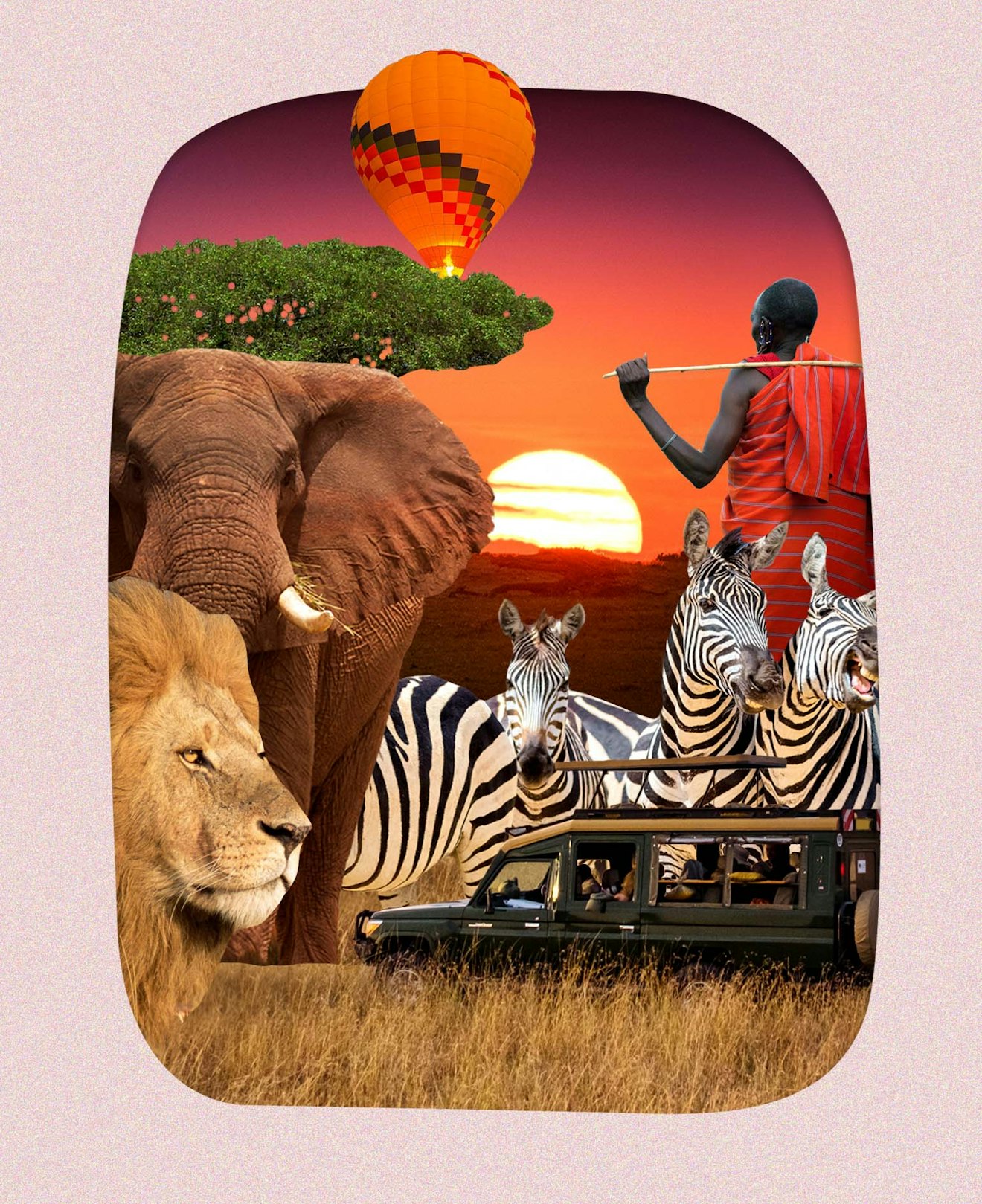
When it comes to planning an African safari , TikTok can agree on one thing: Masai Mara National Reserve in Kenya needs to be on your itinerary.
“The Land of the Big Cats” has a reputation as one of the best places on the continent to see lions, leopards, and cheetahs in the wild; it was one of the main filming locations of the live-action Lion King movie .
Masai Mara’s location in the Great Rift Valley gives it a leg up on wildlife diversity compared to other reserves. Its 580 miles of lush savannah is home to almost 90 different mammal species, and safari-goers have a good chance of spotting all of the African “Big Five” — lions, leopards, elephants, African buffalo, and the elusive black rhinos — as well as members of the slightly lesser-known (but equally ‘Gram-worthy) so-called “Ugly Five,” hyenas and warthogs included. If you visit in late summer, you might even see the Great Migration of over 2 million wildebeests, zebras, and other herbivores crossing the Mara River from the neighboring Serengeti Desert.
This February, I spent 10 days visiting Kenya’s national parks and game reserves on an itinerary curated by EF Ultimate Break , a Gen Z and millennial tour company. After a week of bush glamping in sparsely vegetated and dusty parks throughout Kenya, Masai Mara was comparatively lush, and my safari Jeep was constantly stumbling upon families of elephants, giraffes, and lions.
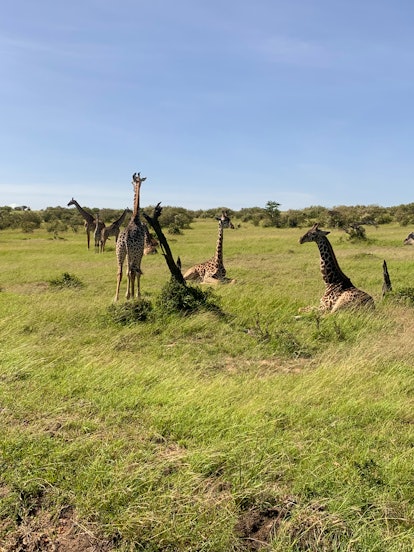
If you’re heading to Kenya on safari soon or scrolling TikTok for future inspiration , here’s what’s worth doing at Masai Mara and how to spend three days at the reserve.
What To Do At Masai Mara
Day 1: hang out with baby elephants & meet the maasai tribe.
After a 20-plus-hour journey from Chicago, I stretched my legs at one of Nairobi’s most popular attractions. The Sheldrick Wildlife Trust’s Orphans Project houses baby elephants and rhinos who are currently unable to survive in the wild for whatever reason, and it’s just as cute as you’d expect. There was a collective “aw” as the tiniest baby black rhino stumbled out to meet the crowd, and we got introduced to all the baby elephants as they clumsily ran to the keepers for their bottles of milk.
The experience was more crowded and touristy than I expected, but I enjoyed learning the story behind each baby animal, seeing their personalities, and petting them. You’re also able to sponsor one of the baby elephants or rhinos until they’re ready to go back into the wild.
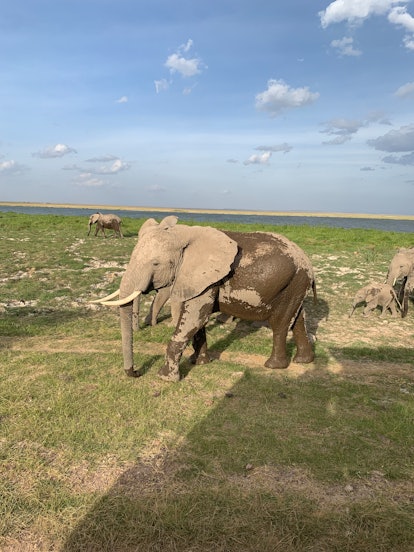
After hanging out with the animals, get into your safari Jeep to drive the five hours to Masai Mara. I stayed at PrideInn Mara Camp, which had glamping tents and cottages just steps from the park and Lake Talek, but there are plenty of accommodations around Masai Mara’s perimeter (including regular hotels like a JW Marriott Masai Mara if sleeping in a tent without air conditioning isn’t your vibe).
The best part of the PrideInn Mara Camp (and others in the area) is the presence of the Maasai tribe , which welcomed us with a traditional song and dance. There were also a number of warriors who worked in the hotel and who would walk us to and from our rooms if it was late at night.
Day 2: Take A Hot Air Balloon & A Drive
The park is huge, so soaring over the savannah to see the landscape and animals from above is an efficient and bucket list-worthy way to start off your safari experience.

We had to wake up at 4 a.m. to head over to the hot air balloon launch site, but I quickly stopped complaining about the early call time when we were in the balloon and the sun was rising over Masai Mara.
We got to take in bird's eye views of the Mara River (including a rare sighting of an adorable baby hippo that was splashing through it), check out a family of grazing giraffes from above, and get eye-level with the vultures in the trees. Afterward, we enjoyed an English-style brunch with unlimited mimosas in the middle of the bush, then headed back to the camp to nap it all off.

In the early afternoon, we headed on our second safari and stayed until twilight. After spending almost two weeks in Kenya, I realized it’s 100% worth doing two safari drives a day — one in the morning as the sun rises and one at dusk right before the predators are about to start hunting — to get the fullest picture of how the animals act in their natural habitat.
Depending on the time of day, you’ll also see different personalities from the lions. When I went in the morning, the lions weren’t the apex predators I’d anticipated. Instead, the pride was almost playful, with a young male lion with a dandelion mane nuzzling his father and the female lions, and cuddling with them in the sun. The only hint of their agility and quick reflexes were shown in how they quickly flipped from side to side and how alert they seemed at all times, with their heads suddenly popping above the grass when they’d been lazily napping in the sun just moments earlier.

Another day, as the sun went down, I saw a group of lionesses who’d been napping and were barely camouflaged in the long grass start to oh-so-casually make their move. They inched toward a grazing herd of wildebeests, their eyes locked on their next meal. I wouldn’t have experienced these different personalities if I hadn’t seen both in action.
Day 3: Go On A Morning Game Drive & Visit The Maasai Tribe
After going on a sunrise game drive, take an afternoon tour of the Maasai tribe’s village. Dressed in signature bright red robes, the warriors greeted us at the entrance of their village. They taught us some of their chants and performed a 10-minute celebratory song and dance that we were encouraged to take part in, which included mimicking the roaring of lions, shaking our shoulders, and competing to see who could jump the highest.
Then, they sectioned us off into groups to tour the family huts and learn about their pastoral lifestyle. Many of the Maasai people have gone into tourism and are employed by hotels and other hospitality businesses in the area, but they’re one of the few tribes where many members still practice their traditional way of life.

After the tour, we got to shop the tribe’s gorgeous beadwork, carved wooden products, and other souvenirs. I picked up a blue bracelet, a beaded choker, and some wooden coasters painted with safari animals to bring back home with me.
Ultimately, I came back to Chicago feeling relaxed, inspired, and fully ready to take advantage of my apartment’s air conditioning. I gained a deep appreciation for my proximity to wildlife during my bush glamping adventure (yes, even for the crickets and lizards in my tent).
Going on safari was life-changing for so many reasons. I was awestruck by seeing a 3-day-old hippo hanging out with his mom, and a pack of elephants racing across the savannah. I was surprised that the lions and giraffes seemed to barely take notice of our Jeep.
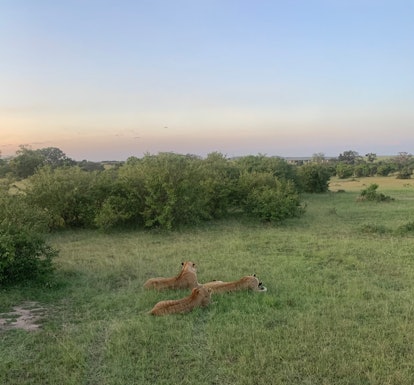
The safari also taught me a lesson in patience. Unlike in a zoo, you’re not able to control when or where you’ll see cheetahs, hippos, or prides of lions — which ends up making it so much more fulfilling when you do.
It’s not a question of if, but when, I’ll go back to Masai Mara on safari. And who knows — maybe this time I’ll spend more than a few days exploring Kenya’s most famous game reserve.
This website uses cookies to ensure you get the best experience on our website. Learn more
- Australian Dollars
- British Pounds
- Canadian Dollars
- New Zealand Dollars
- South African Rands
- Swiss Francs
- U.S. Dollars
Talk to an expert +44 203 405 6666 Lines now closed
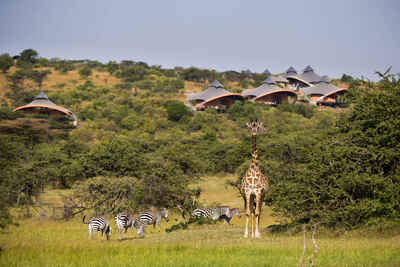
Kenya Safaris
Kenya invented the safari: with its spectacular wildlife, cultural diversity and breathtaking landscapes, this is an utterly dazzling destination.
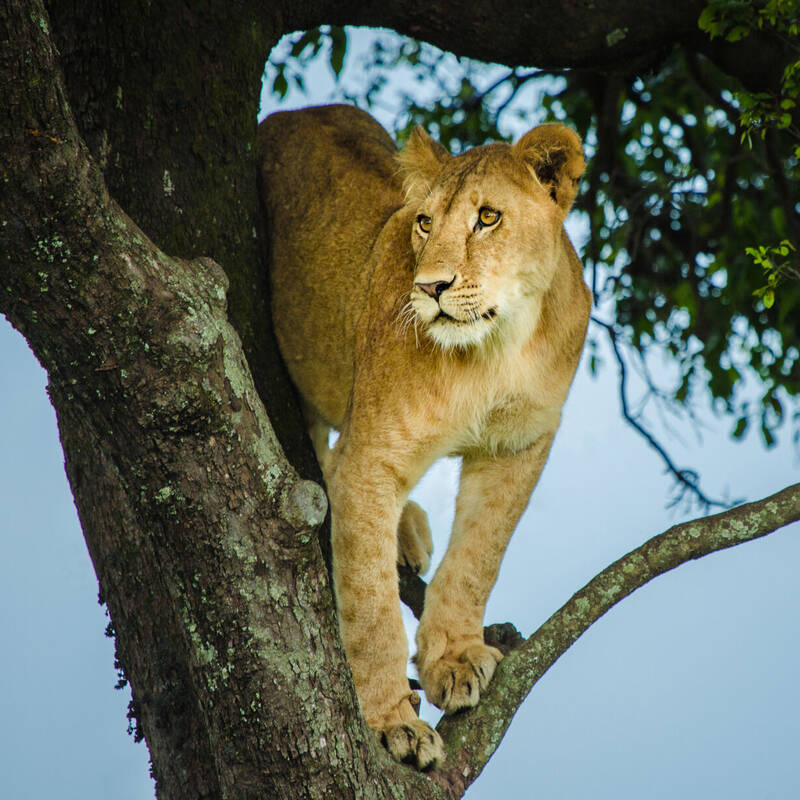
“Wonderful, but very hard to describe”: that was one recent traveller’s summary of an Expert Africa safari in Kenya, his first visit to Africa. “The impact is emotional and spiritual as well as literal. Yes, there are many animals and birds and these are real wild creatures in their natural habitat, but it is so much more than that. I will never forget this trip. It was one of the great experiences of my life.” With the Indian Ocean lapping its coral-fringed coast and Mount Kenya rising from the middle of its extraordinarily beautiful natural environment, Kenya is one of Africa’s most rewarding countries to explore. The remarkably diverse scenery, the rich variety of its wildlife and its ever-stimulating social tapestry – from traditionally dressed Maasai herders on the plains to sarong-wrapped Swahili fishermen on the coast – could keep you enthralled for months. Think of Kenya like the Maasai do – as a land formed especially for them by God. Imagine he pulled the land up in the middle – that’s Mount Kenya, with its glacier-covered peaks, dominating the highlands – then tore the east and west apart leaving the great trough of the Rift Valley with its lakes. The Maasai Mara lies in the southwest and its fabled grasslands can reveal scenes that sometimes look like a children’s animal wall frieze, as a dozen or more species of megafauna – from elephants to lions and from buffalos to zebras – mingle on the plains in front of your camera. On the Kenya coast you could be in a different country, with mosques and palm trees, crystal-blue sea and a coral reef. Wherever your trip takes you, Kenya is hard to beat as a country to thrill and impress, whether you’ve been on safari before or it's your first visit to Africa.
Kenya's top safari and holiday destinations
Kenya's key areas for visitors are spread across the country.
In the southwest, bordering the Serengeti National Park in Tanzania, lie the Maasai Mara National Reserve and the Maasai Mara Conservancies . This is the land of the Great Migration .
North of Mount Kenya lies Kenya's second best wildlife region, the plateaux and wild bush lands of Laikipia , where you can see hunting dogs and black leopards. Laikipia is also Kenya's rhino stronghold, with all three African species present.
To the east lies Meru National Park , where a tiny handful of camps and lodges in a huge wilderness make for a magical safari.
Further north is the Samburu National Reserve , with its dry-country mammals including reticulated giraffe, gerenuk and Grevy's zebra, and beyond that the deserts and semi-deserts of Northern Kenya , and the largest desert lake in the world, Lake Turkana.
In southern Kenya, head to Amboseli for those fabled views of Kilimanjaro framing "big tusker" elephants, or to Tsavo East for giant landscapes and baobabs or Tsavo West for hilly scenery and a plethora of wildlife – though you may have to look harder for it.
Finally, Kenya's coast is everything you could wish for in a tropical beach - with the bonus of a fascinating cultural tapestry.
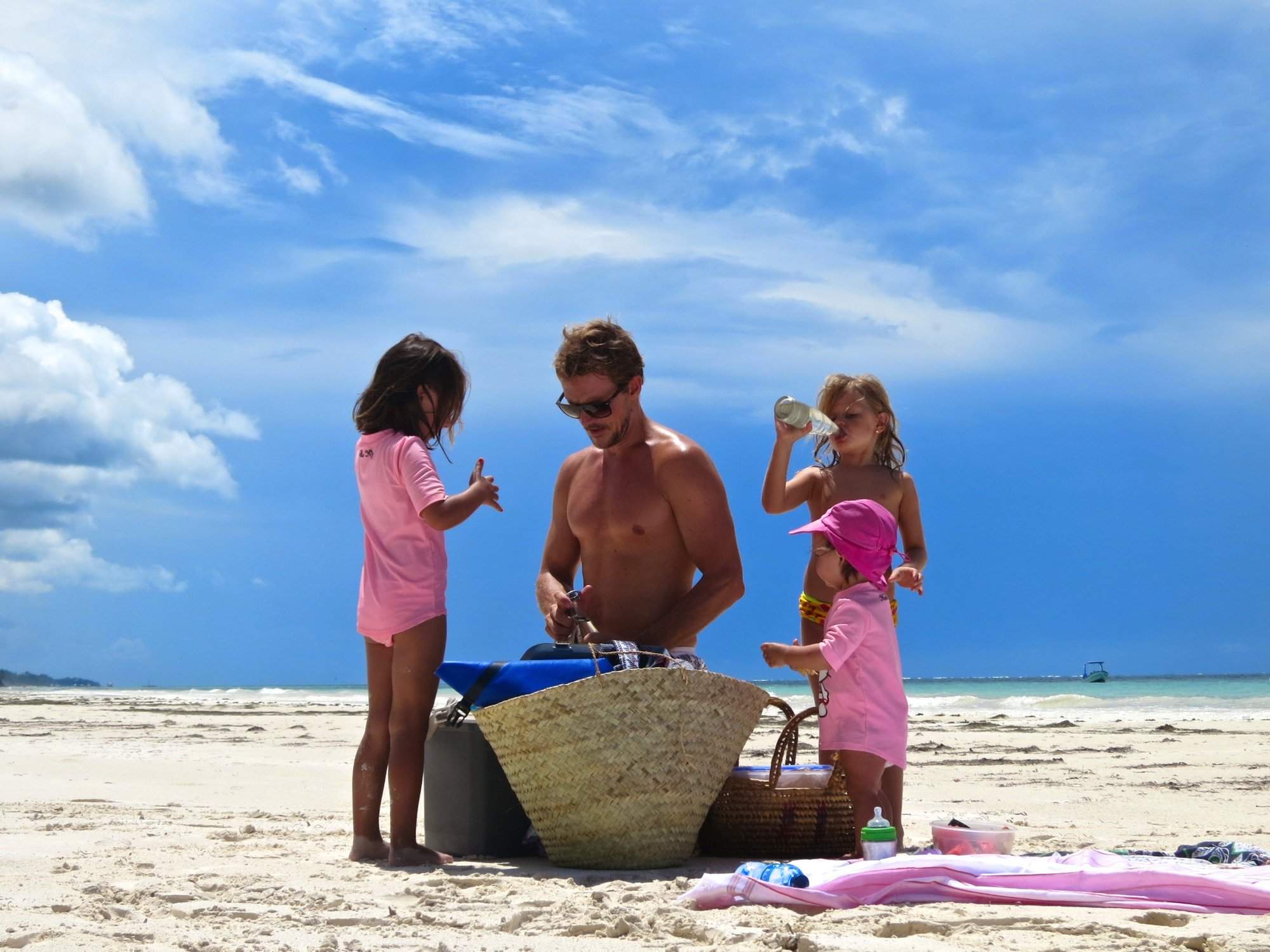
Kenya Coast
32 places to stay
Kenya’s coast is an alluring region and – relatively – little developed. As well as beautiful beaches and a coral reef, it has fascinating historical sites and forest safari areas.
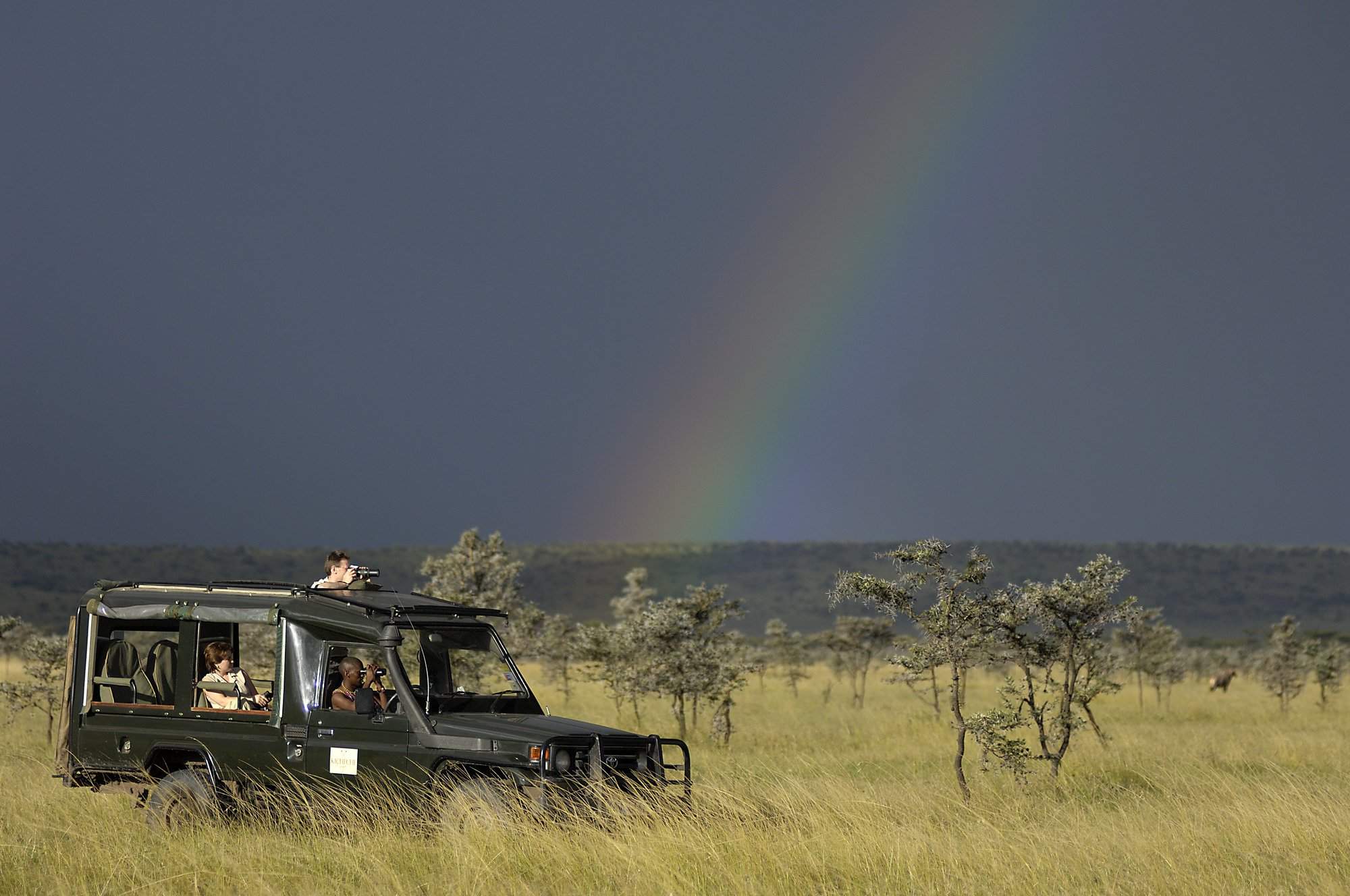
Mara Conservancies
29 places to stay
The wildlife-rich private conservancies are the Maasai-owned lands outside the national reserve. They tend to be much less busy than the reserve, but no less rewarding.
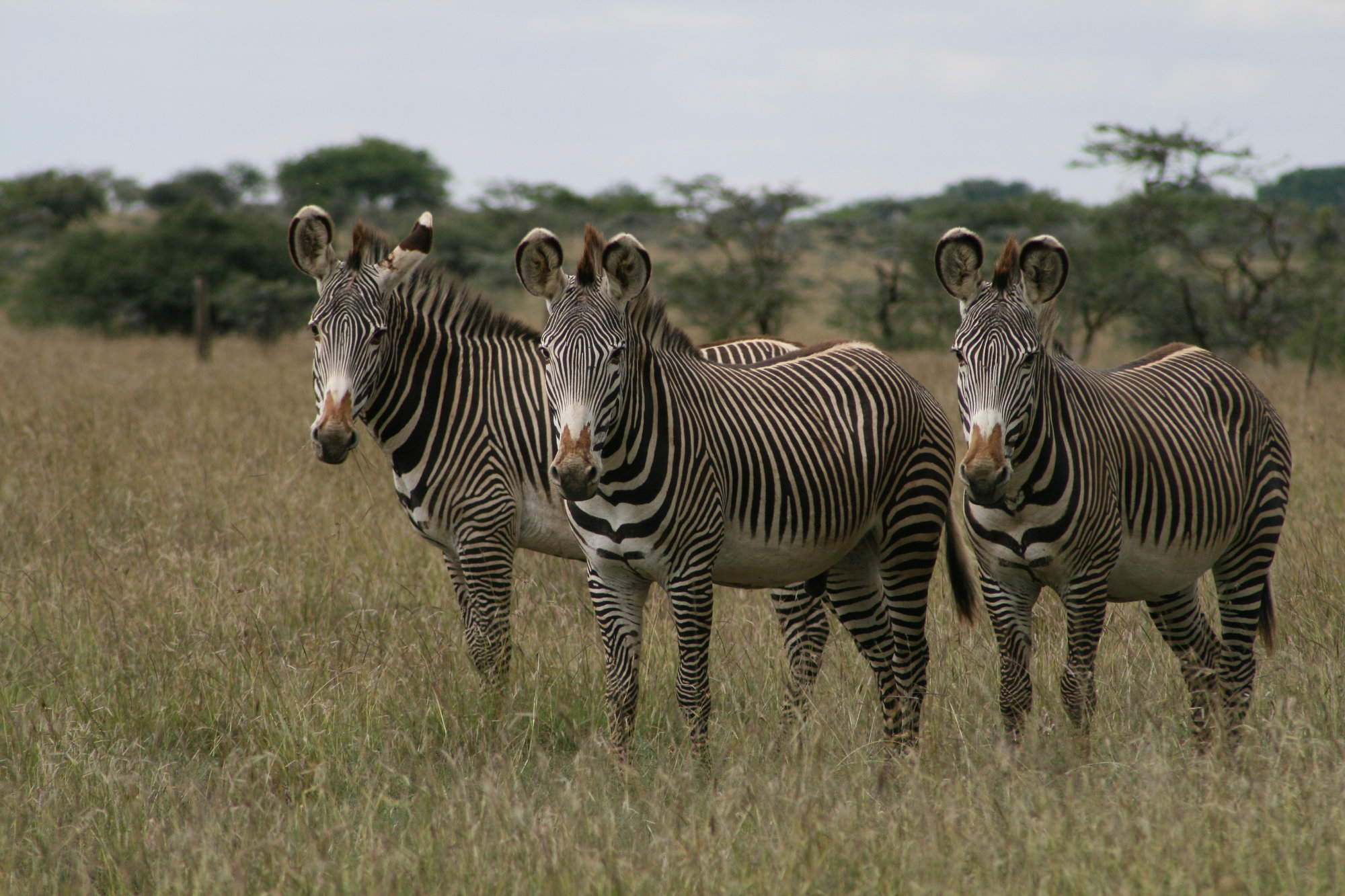
26 places to stay
Laikipia is an extensive region of large ranches and rolling, semi-arid savanna and bush country that is growing in importance for wildlife conservation and adventurous and luxury safaris.
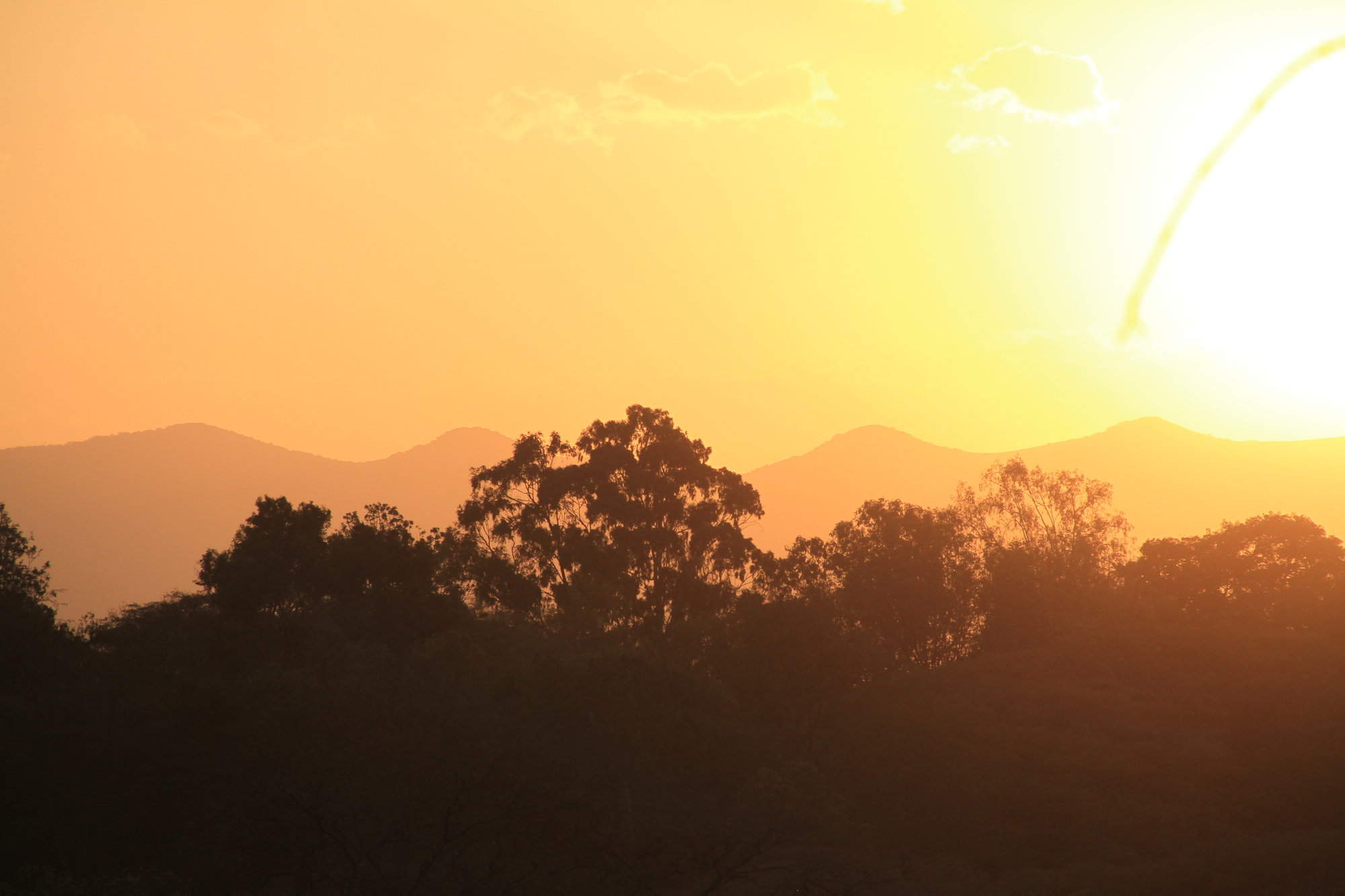
21 places to stay
Capital of Kenya and East Africa’s biggest city, Nairobi has large hanty towns and wealthy suburbs, as well as a many green spaces, including the magnificent Nairobi National Park.
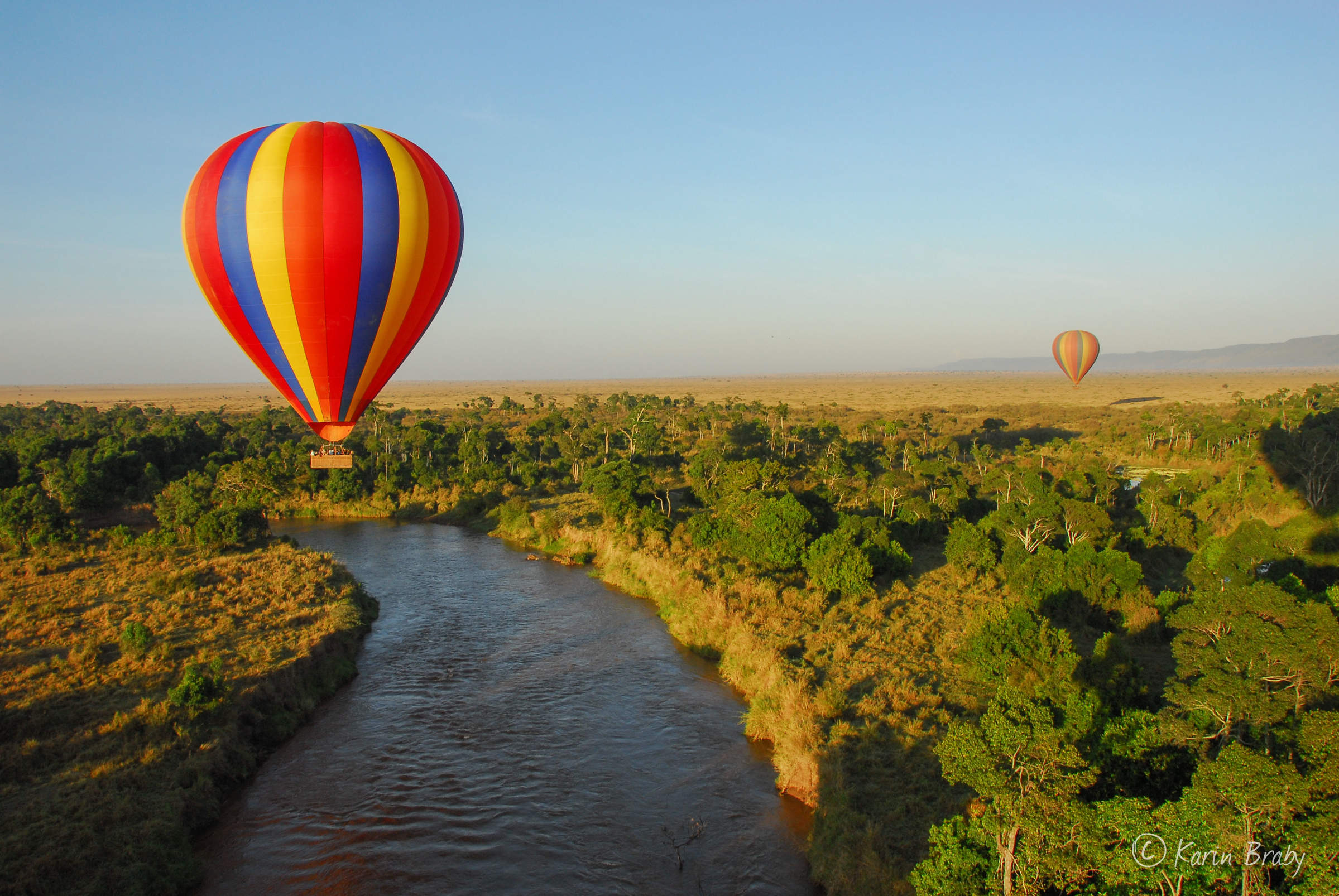
Maasai Mara
The Maasai Mara is the northern extension of the Serengeti-Mara eco-system. Together with the Mara conservancies outside the public reserve, this is Kenya’s most wildlife-rich region.
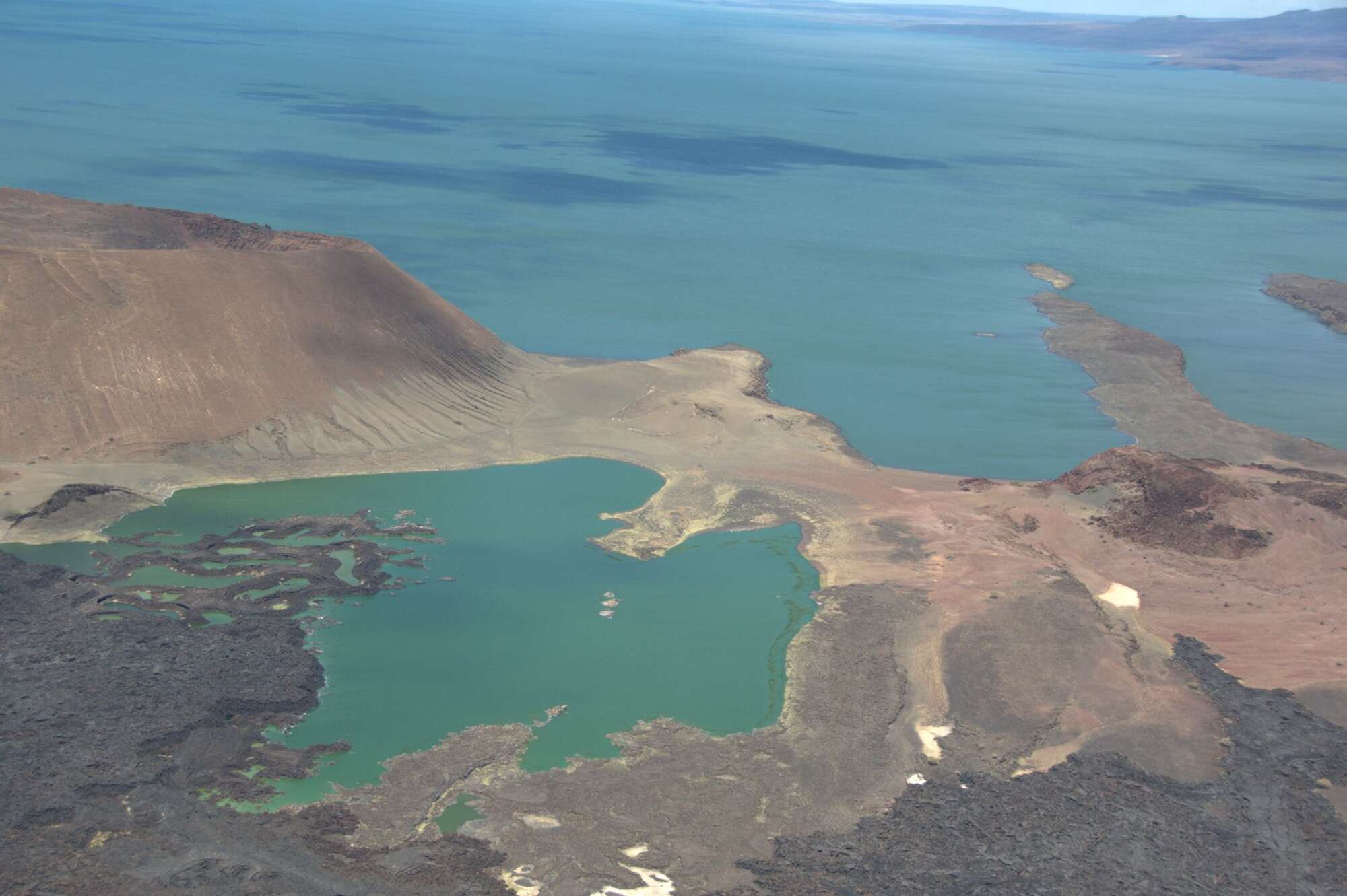
Northern Kenya
10 places to stay
Northern Kenya – split by giant Lake Turkana – is one of the country's best regions for cultural contact, and the forest-cloaked mountains have local micro-climates and much wildlife.
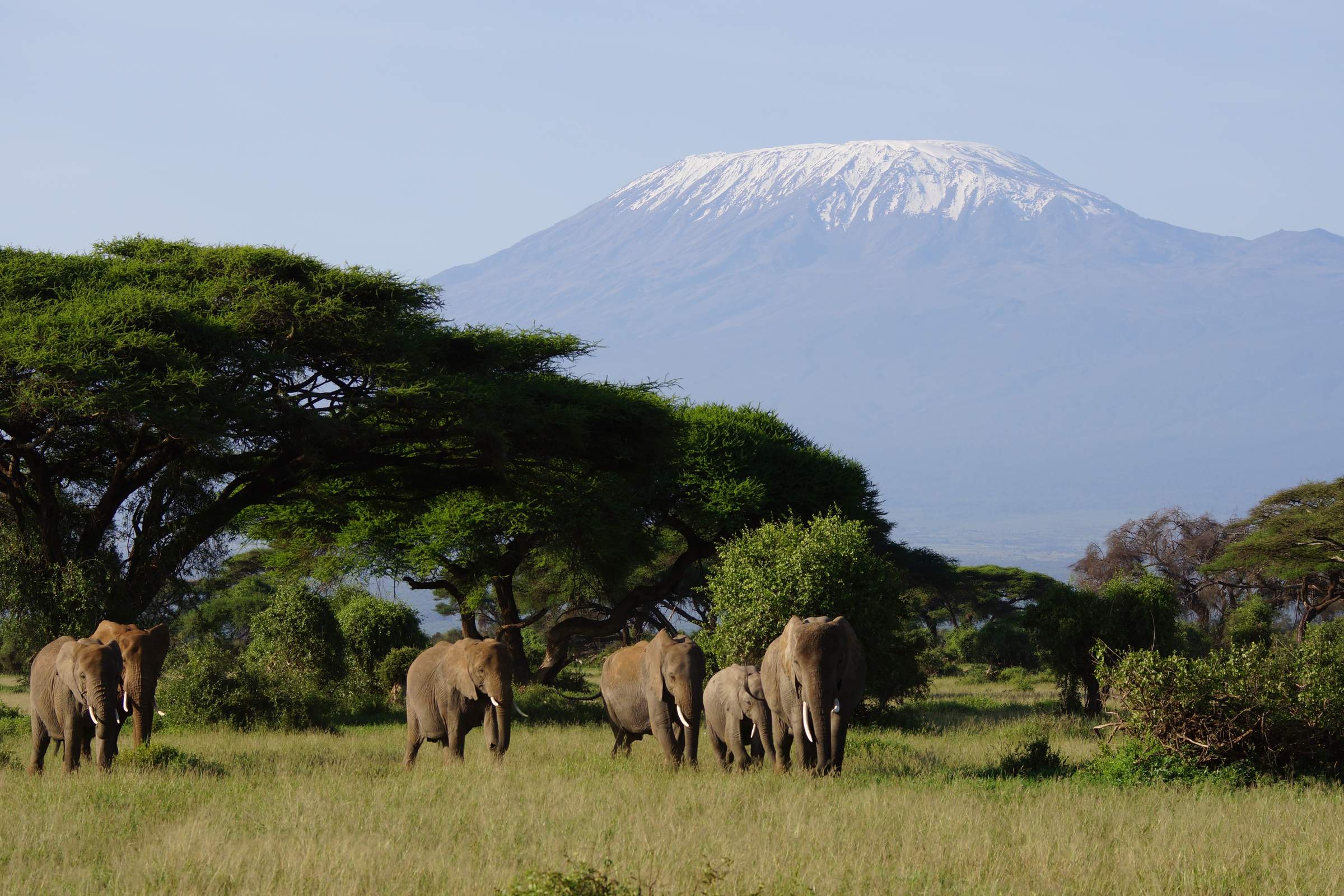
Amboseli & Chyulu Hills
8 places to stay
This region encompasses one of Kenya's most iconic national parks and a little known district of volcanic hills topped with misty cloud forest.
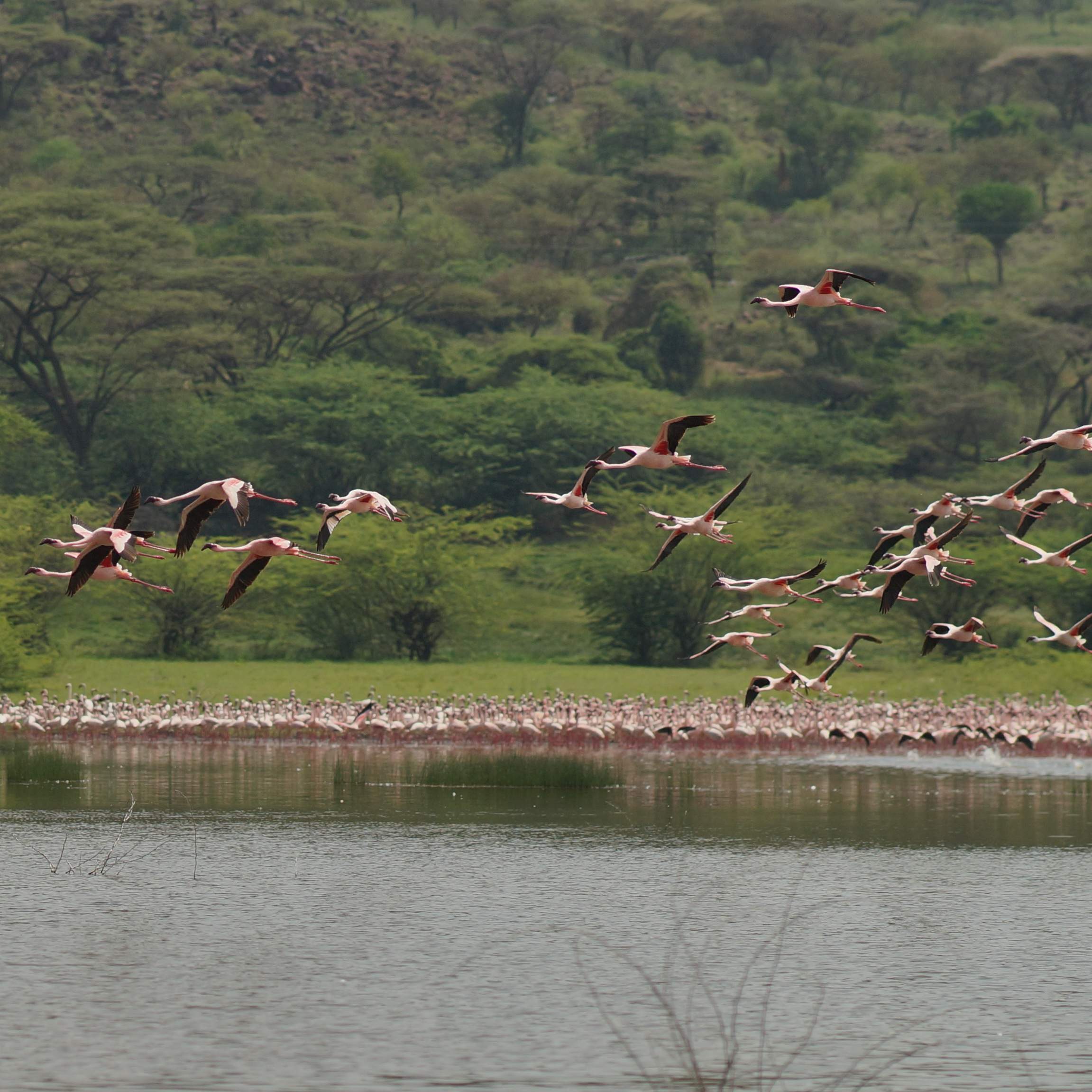
Rift Valley
4 places to stay
Most visitors take in the Great Rift Valley – embellished by a string of beautiful lakes – during the course of a road safari. It's also possible to use one or two airstrips for a fly-in safari.
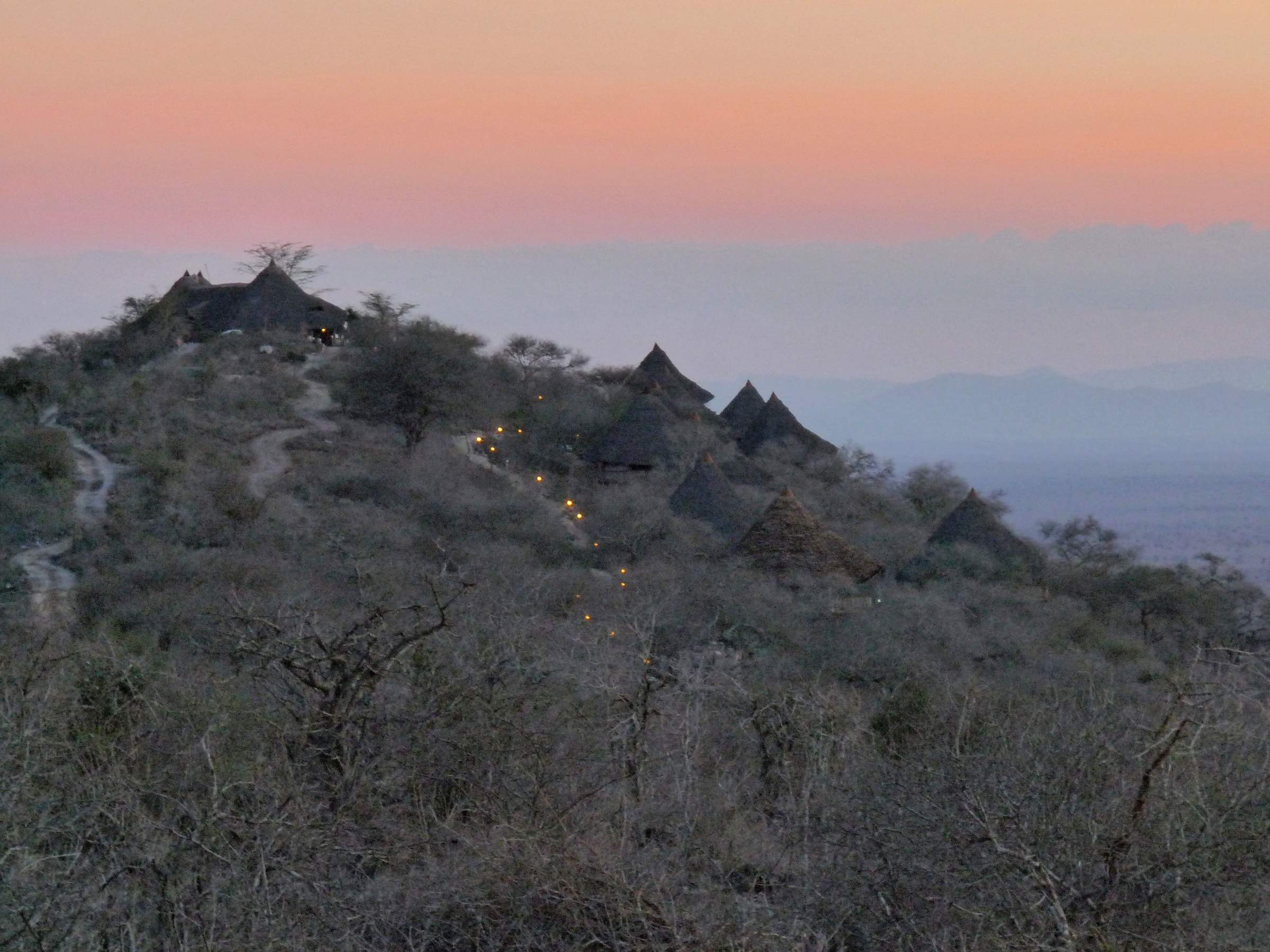
2 places to stay
This extensive park of volcanic landscapes encompasses rolling savannah, woodland and streams, and the magnetic attraction of Mzima Springs.
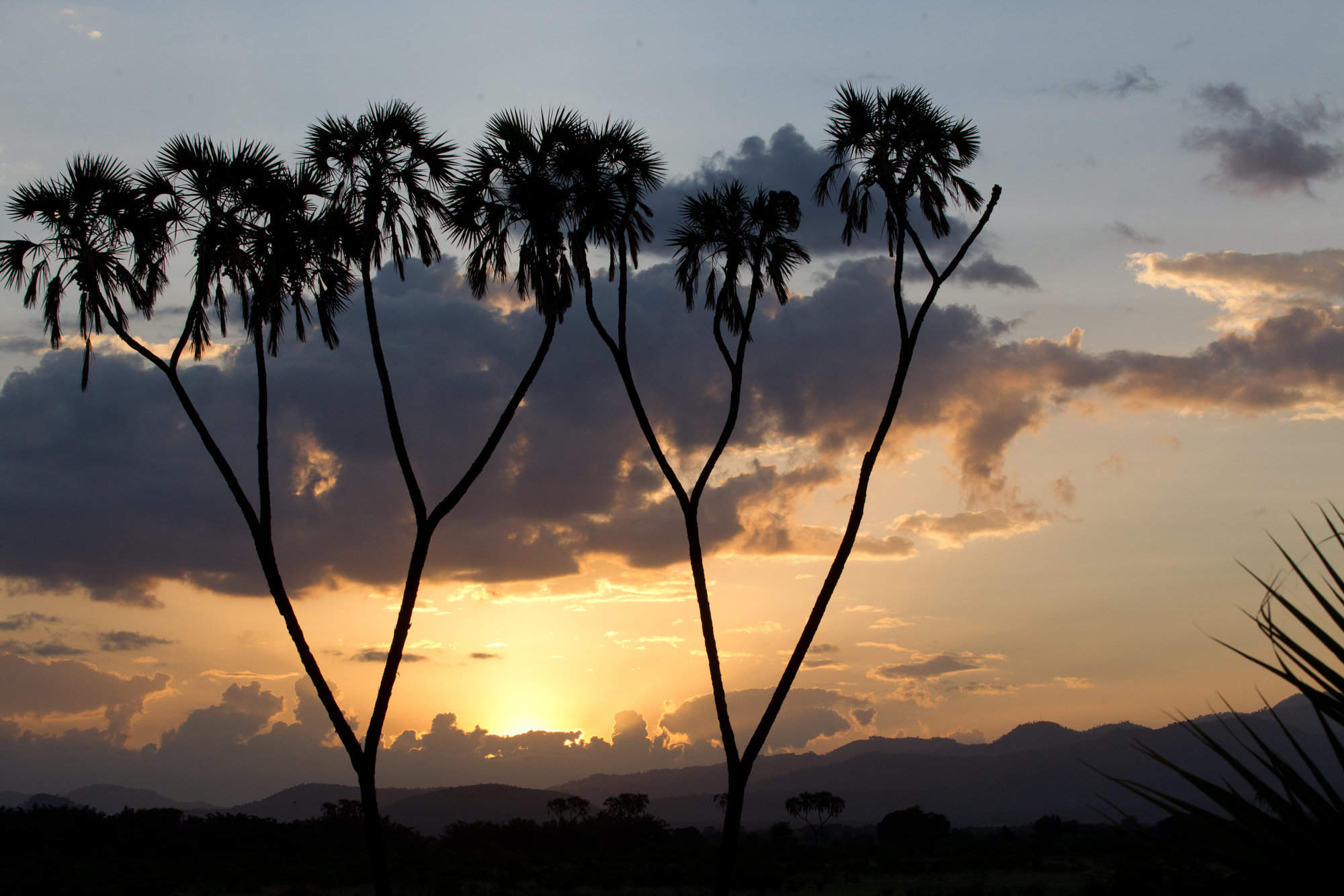
3 places to stay
This rejuvenated national park on the well-watered side of Mount Kenya has excellent game-watching, Kenya's best KWS-run rhino sanctuary, and barely a handful of camps and lodges.
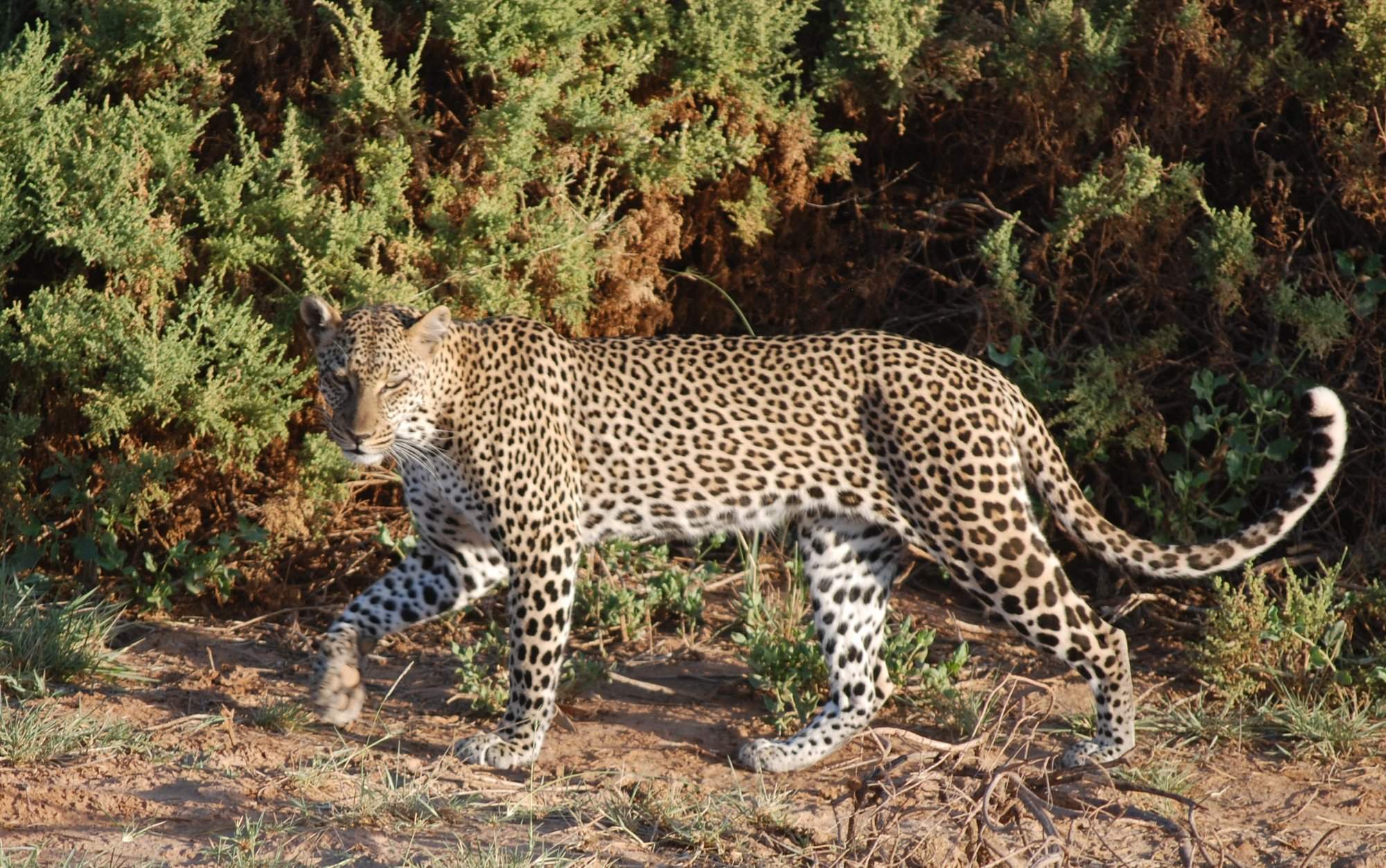
5 places to stay
This richly rewarding dry-country ecosystem depends on the seasonal Ewaso Nyiro River to support its elephants and many other species.
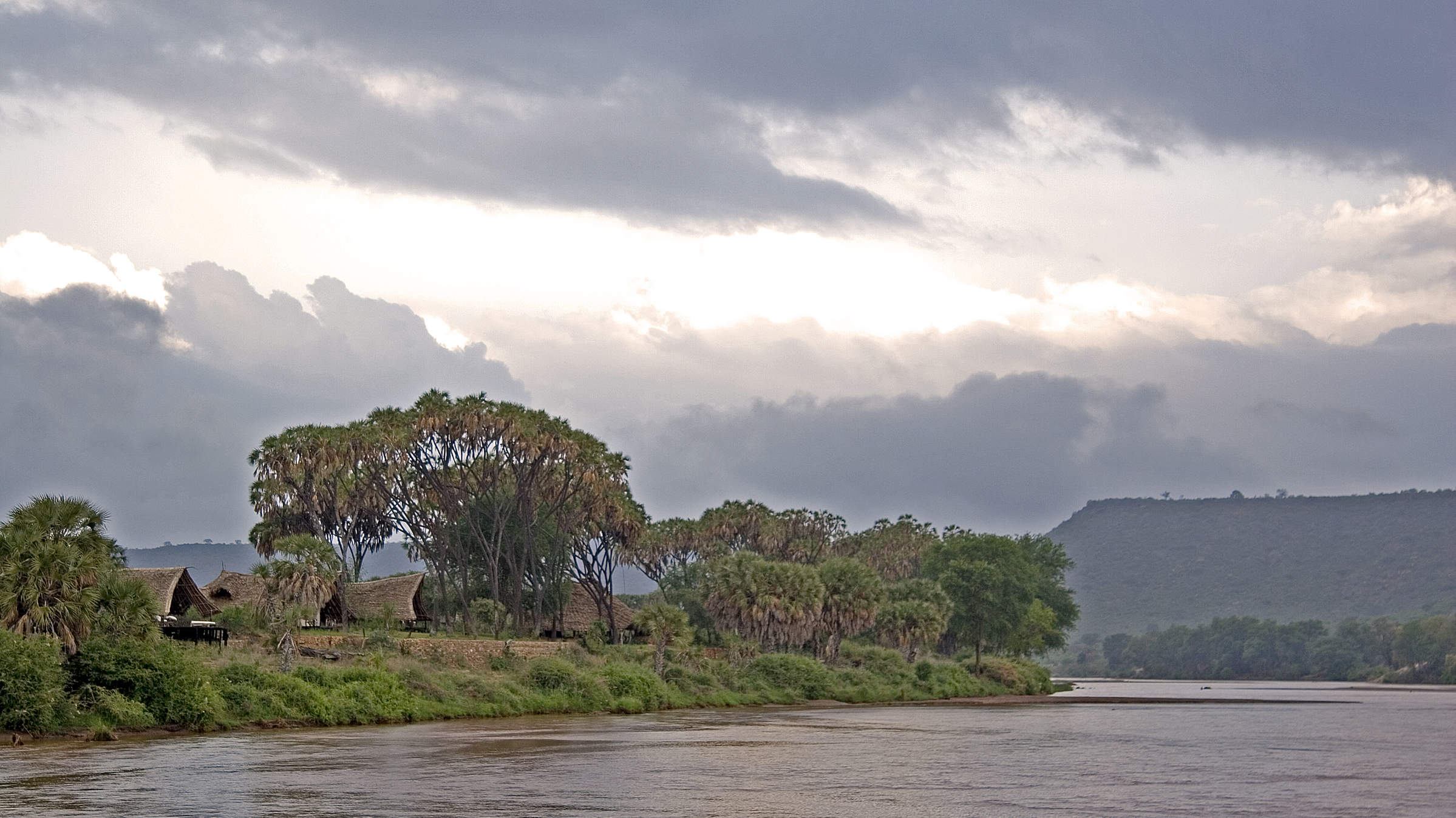
The largest park in Kenya is a vast area of dry bush, inhabited by huge herds of brick-red elephants, and dramatically cut through by the Galana River.
Our top ten Kenya safaris and holidays
Every one of Expert Africa's tailor-made itineraries is as individual as the traveller undertaking it.
The itineraries we have put together here are just examples of what is possible, with costs and details included. They are not set plans, or indeed set in stone at all. You can pick any combination of camps and lodges that is logistically possible, and start your trip on any date you like, subject to availability. See all 24 Kenya safari ideas here .
Most of our trips in Kenya are based around Fly-in Safaris , on which you fly by scheduled light aircraft between the different areas on your trip, typically staying for a few days at a camp or lodge in each place, and exploring the area in an open safari vehicle, guided by a seasoned driver-guide based at the camp, accompanied on daily safaris ("game drives") by other guests staying at the camp.
On a Guided Safari , you’ll travel by private closed safari vehicle, with a pop-top roof and sliding windows, led by the same driver-guide all the way.
Our Beach Holidays showcase ideas for stays along the Kenya coast's beautiful beaches.
Call Expert Africa now to speak to a Kenya expert who can address your questions and craft a trip for you that’s perfectly tailored for you.
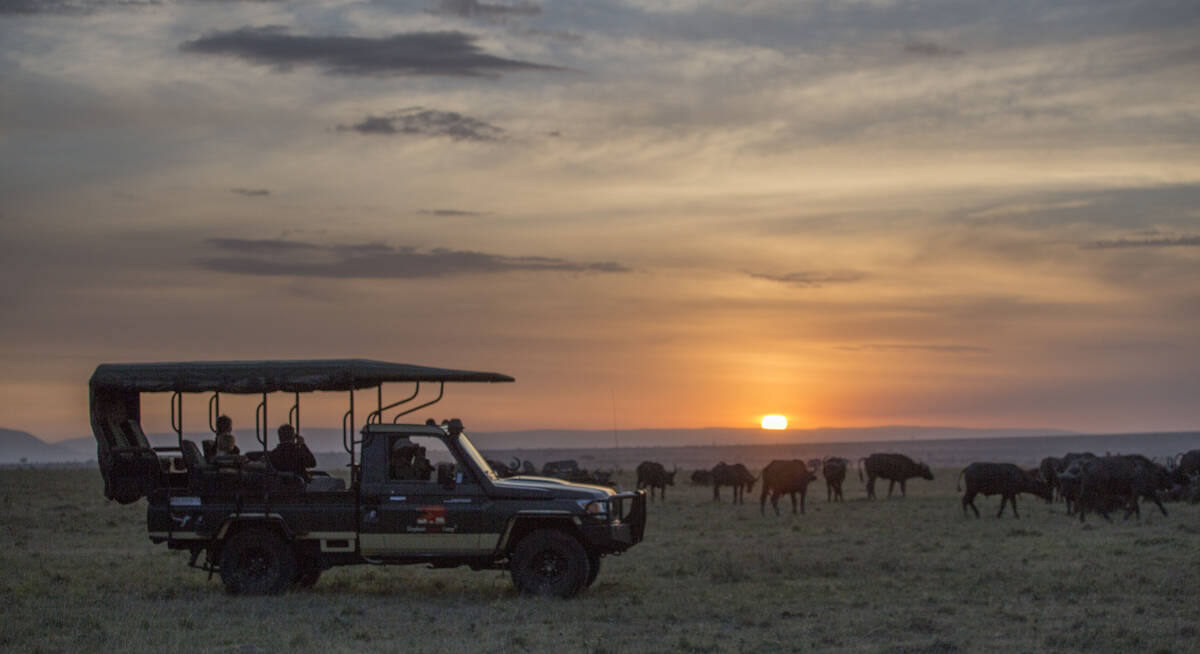
Black Kite Fly-in Safari
10 days • 4 locations NAIROBI AIRPORT TO NAIROBI AIRPORT
Explore Kenya in-depth with visits to Nairobi and Meru national parks, the Mara Conservancies and Amboseli. Nestled in remoter regions, four camps provide fantastic access to rich game, a range of activities and beautifully diverse landscapes.
US$10,140 - US$12,240 per person
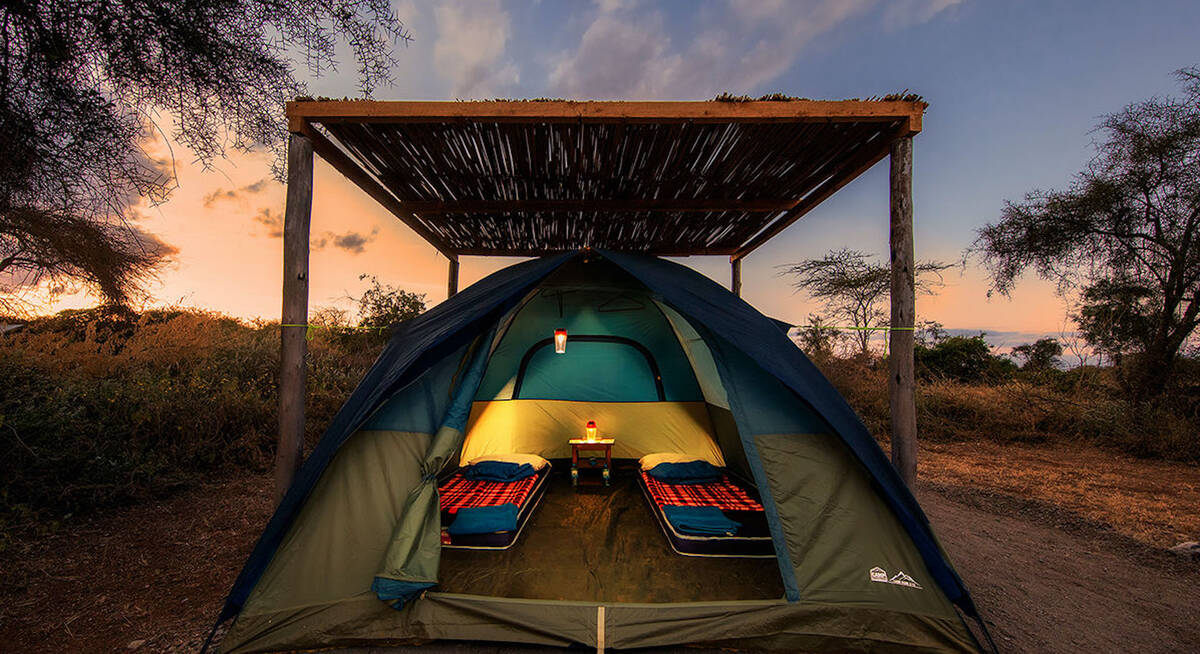
Gabar Goshawk Fly-in Safari
Experience Amboseli, the Maasai Mara ecosystem and Laikipia during this economically priced safari. Two simple camps offer adventure before a stopover in Nairobi and a final stay in the charming, wildlife-rich Il Ngwesi Eco-Lodge.
US$5,800 - US$6,090 per person
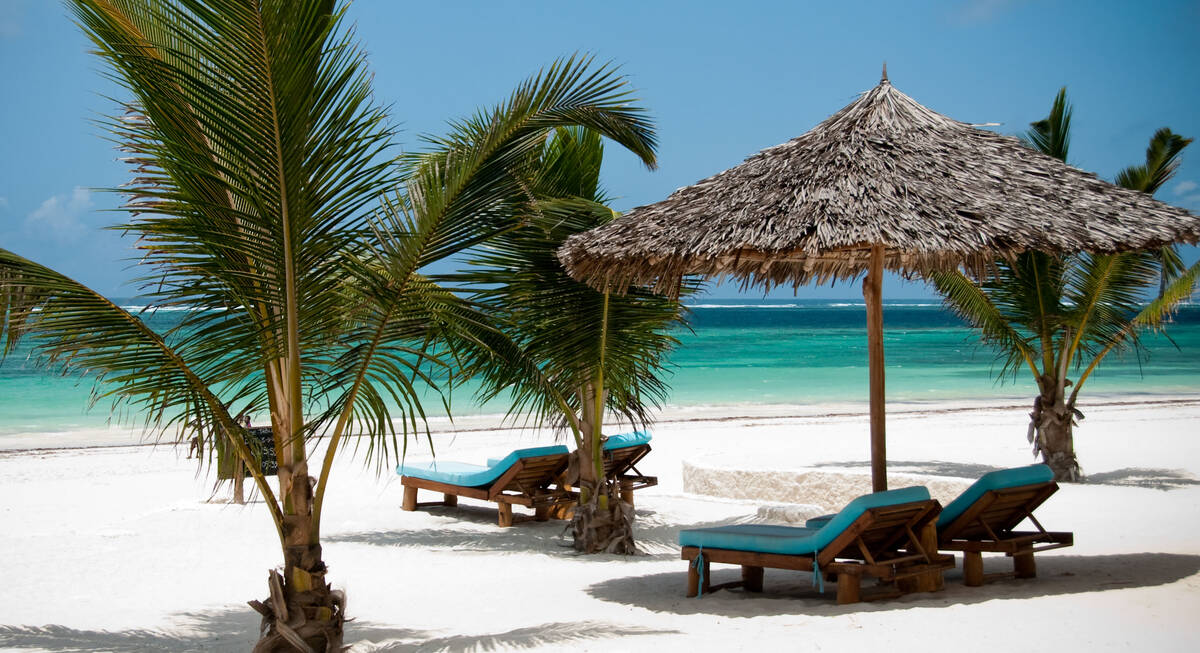
Elephant Safari
10 days • 3 locations NAIROBI AIRPORT TO NAIROBI AIRPORT
This example of a mid-range Kenya safari and beach trip explores the wildlife of Tsavo West's volcanic plains and woodlands, Tsavo East's immense plains and the white-sand beaches and lush environment of Diani Beach.
US$5,100 - US$5,760 per person
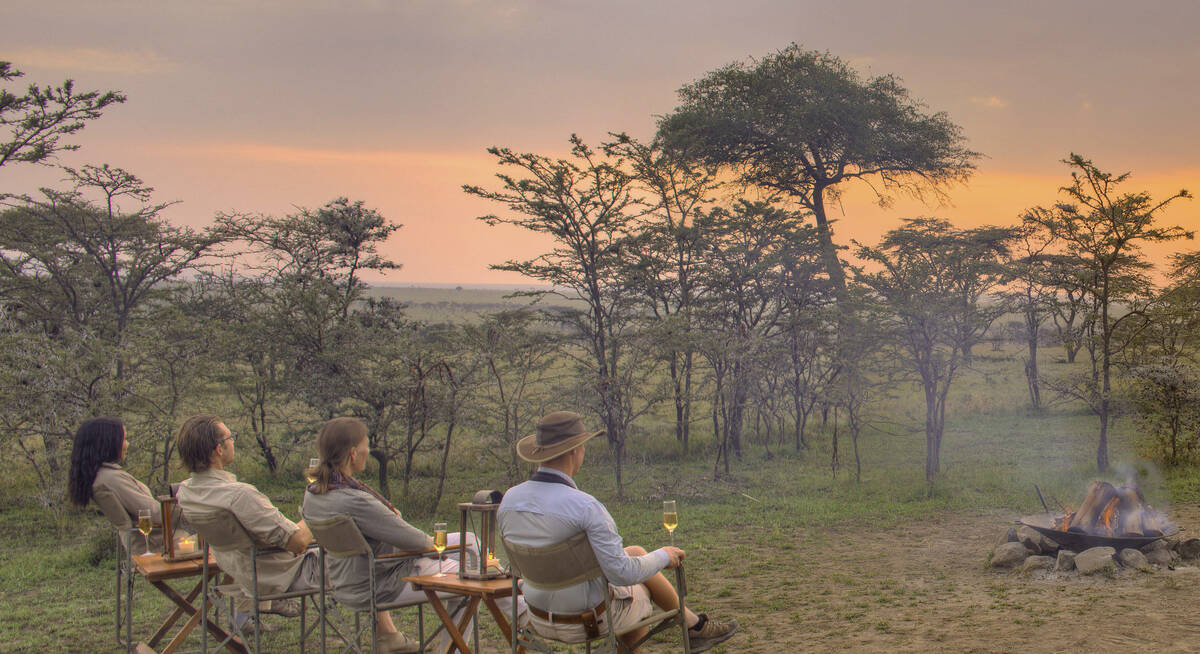
De Brazza Monkey Fly-in Safari
9 days • 3 locations NAIROBI AIRPORT TO NAIROBI AIRPORT
Enjoy a range of activities in the remote wilderness of northern Kenya before exploring the wildlife-rich plains of the Mara ecosystem. Private vehicles and guides heighten the personalisation of this highly immersive safari.
US$12,310 - US$16,320 per person
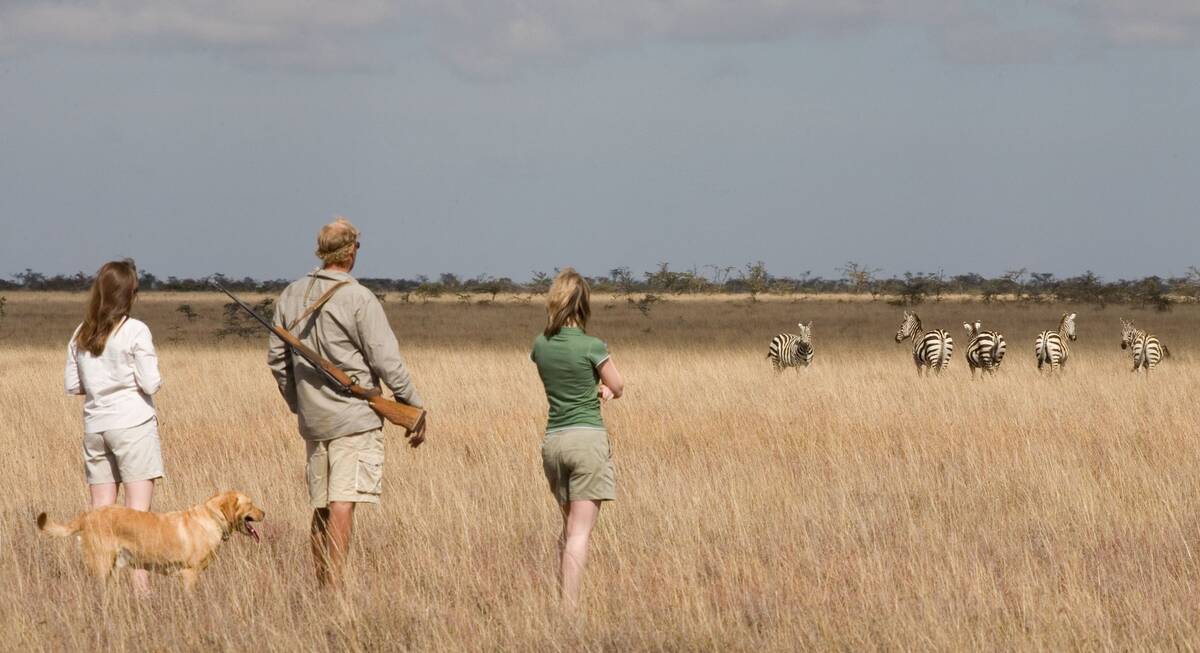
Hamerkop Fly-In Safari
8 days • 2 locations NAIROBI AIRPORT TO NAIROBI AIRPORT
Different wildlife, contrasting camps and a whole host of activities, this is a safari for those wanting to get out and about and not just sit in a vehicle.
US$6,350 - US$10,960 per person
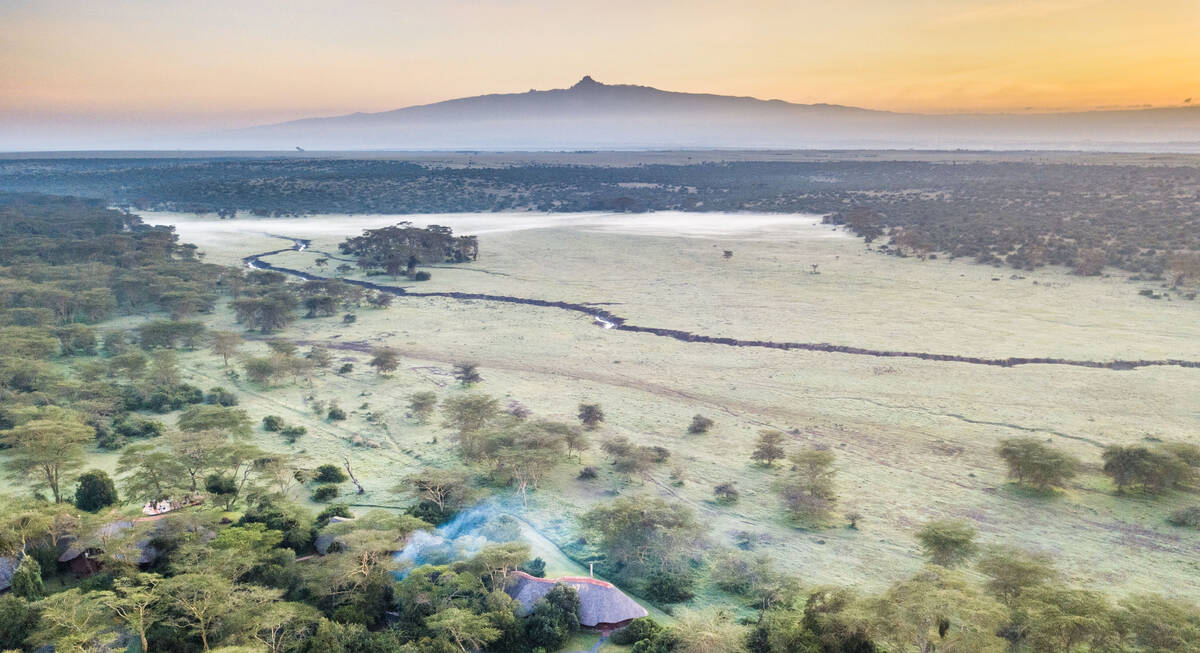
Rothschild Giraffe Safari
8 days • 3 locations NAIROBI AIRPORT TO NAIROBI AIRPORT
A example of a luxury Kenyan safari, starting at the iconic Giraffe Manor before fabulous stays on the spectacular Solio Reserve and Sala’s Camp in a remote corner of the Maasai Mara.
US$11,720 - US$16,510 per person
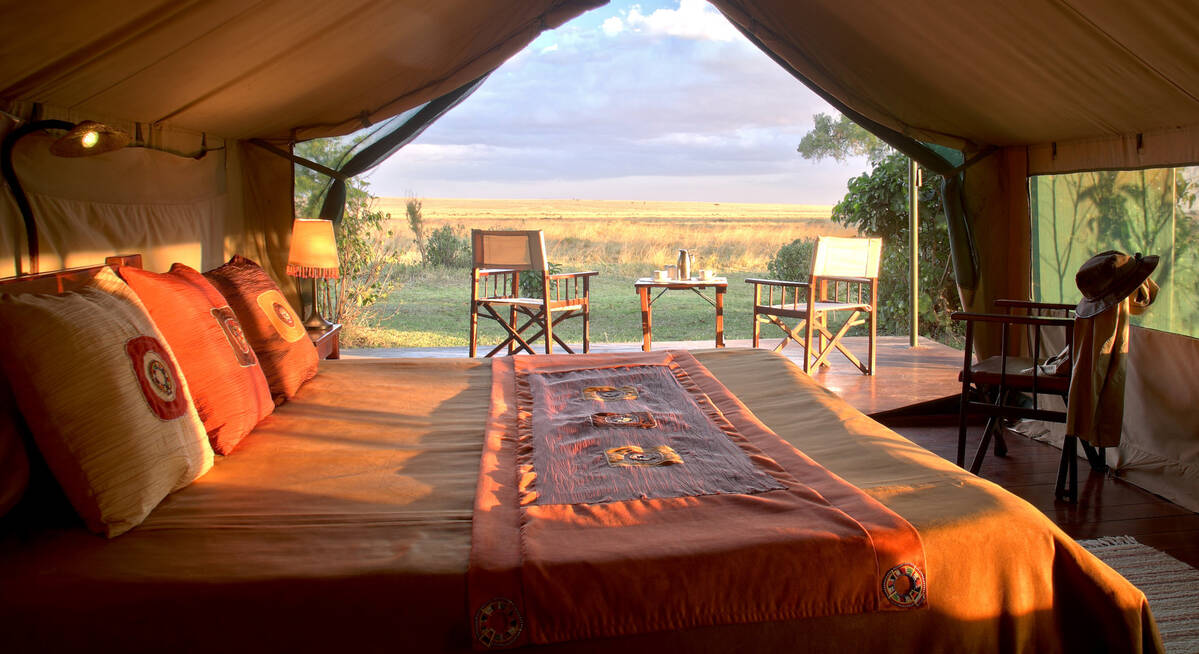
Big Cat Fly-in Safari
Combining two of Kenya’s best wildlife-viewing areas, this slow-paced safari to the Lewa Conservancy and Maasai Mara guarantees iconic wildlife. The long-established, well-rated camps are great value, too.
US$5,010 - US$8,190 per person
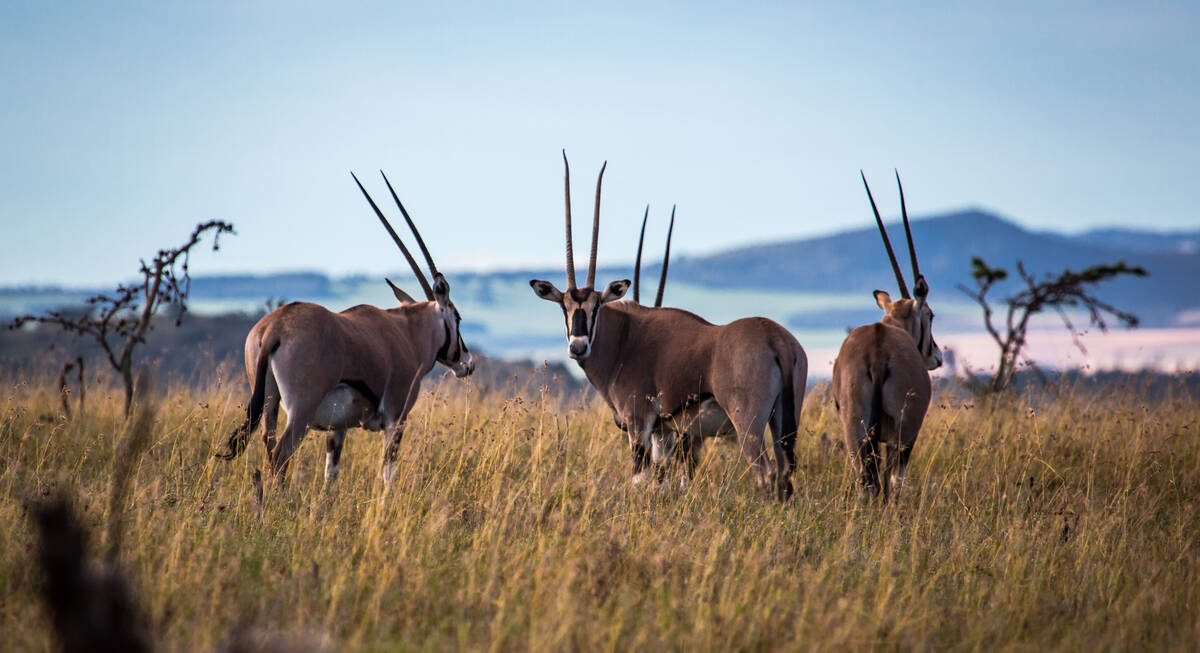
Golden Jackal Fly-in Safari
A contrasting safari of a lodge and a tented camp, with action-packed activities in Laikipia and wildlife-filled game drives in the Maasai Mara, offers a consistently high-quality experience.
US$9,730 - US$13,080 per person
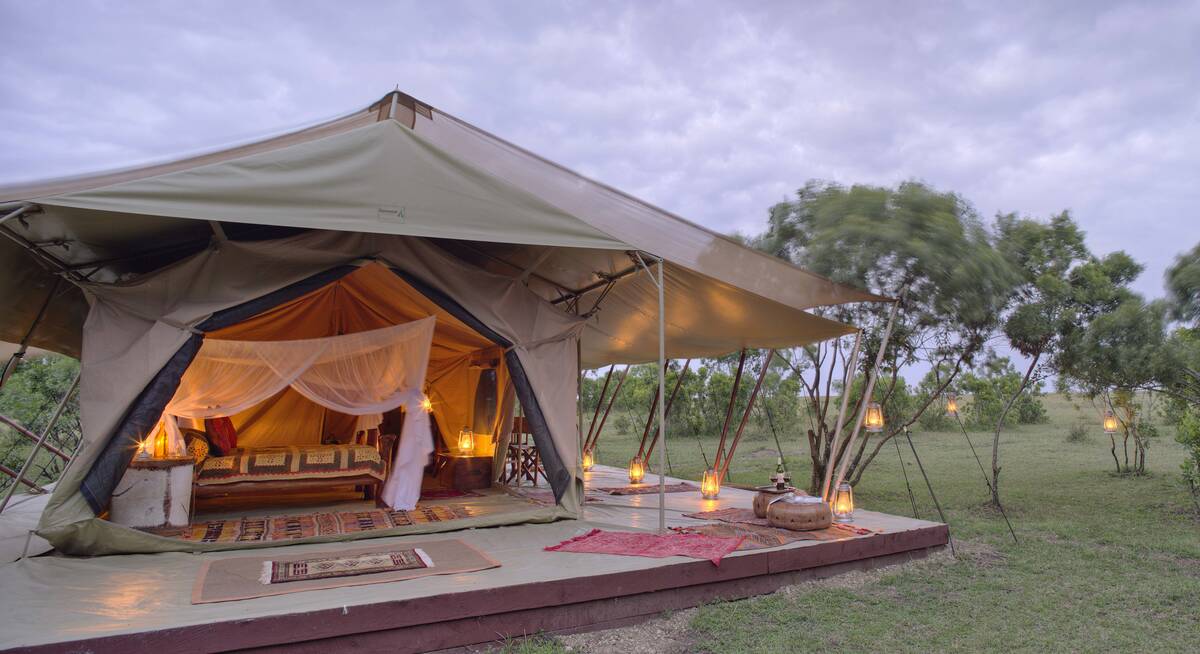
Lanner Falcon Fly-In Safari
Three sister camps offer access to wonderfully remote regions across northern Kenya and the Maasai Mara ecosystem. Enjoy an exclusive safari experience focused on great wildlife, superb guiding and considerable comfort, with a range of activities.
US$6,620 - US$8,400 per person
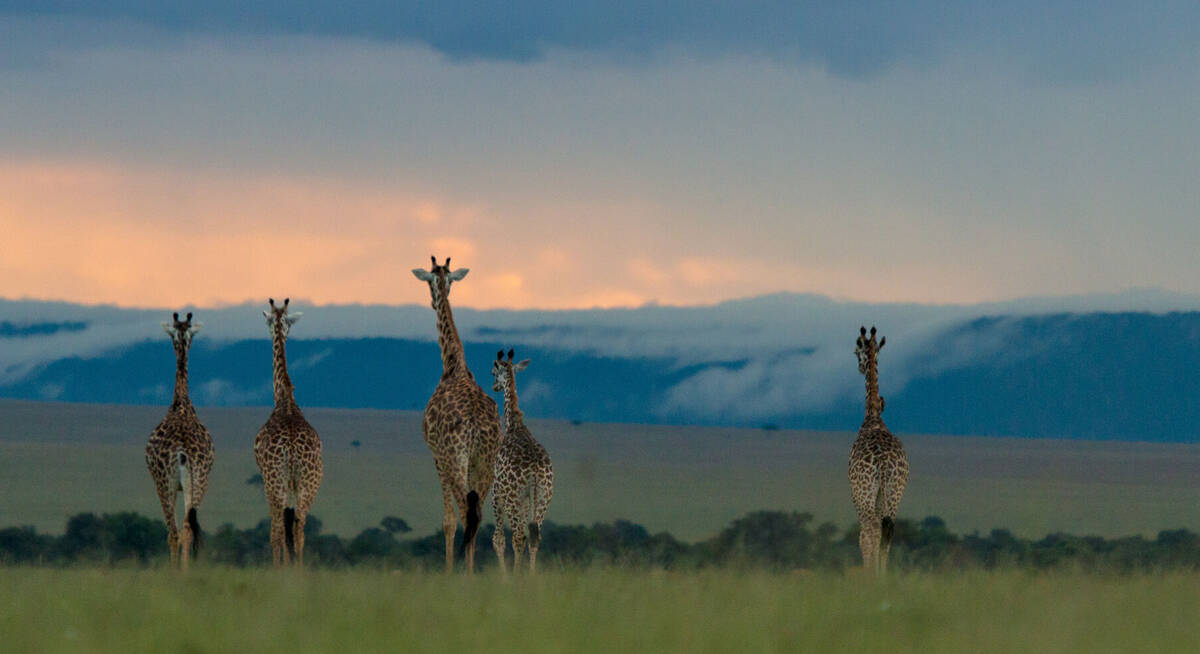
African Finfoot Fly-in Safari
7 days • 3 locations NAIROBI AIRPORT TO NAIROBI AIRPORT
After a unique start in Nairobi National Park, classic, luxurious camps combine for a high-end and exclusive safari in fantastic wildlife destinations.
US$9,900 - US$16,050 per person
View all holidays
Expert Africa's 10 most recent Kenya trip reviews
Feedback from Expert Africa's thousands of travellers is extremely important to us.
The reviews they send us are a real help to future travellers planning their trips. The feedback helps us stay up to date with changes to the camps and lodges we book, and it's also very valuable to our partners across Africa who appreciate that it is guaranteed genuine. It is often very constructive for the management of their properties and guiding operations.
All our Kenya trip reviews are published in full without any edits by Expert Africa. See all 596 Kenya safaris reviews here , or click on a card below to read one of our ten most recent reviews in full.
Arrived 29 Feb 2024, 10 nights
"Perfect Kicheche camps "
Overall rating: Excellent
Arrived 11 Mar 2024, 19 nights
"My Mar 2024 trip"
Arrived 22 Mar 2024, 9 nights
Arrived 27 Feb 2024, 6 nights
"My Feb 2024 trip to Lewa and Naboisho"
Arrived 13 Mar 2024, 10 nights
"March 2024 - Lewa and Maasai Mara"
Arrived 26 Feb 2024, 7 nights
"My Feb 2024 trip"
Arrived 24 Jan 2024, 26 nights
"My Jan 2024 trip"
Arrived 5 Feb 2024, 15 nights
Arrived 15 Feb 2024, 14 nights
Overall rating: Average
See all Kenya reviews
Our travellers' wildlife sightings across Kenya
When travelling through Kenya, many of our travellers document their wildlife encounters – be they of lions, leopards or black rhinos – and generously share their records with us.
This "citizen science" gives us a unique picture of the distribution of species, enlightening you on where you have the best chance of seeing a particular species during a Kenya safari ( Learn about this survey's methodology .)
The percentages below signify the average probability of a safari-goer seeing various large mammals where they naturally occur. Note that species with limited distributions, such as the black rhino, can attain high scores in the regions where they reside. For further insights into a specific species, click on its picture below and follow the link in the pop-up window.
For a broader perspective on Kenya's wildlife sightings, explore our interactive wildlife map of Kenya showing the prime locations for encountering various species.
99% success
98% success
93% success
92% success
91% success
89% success
83% success
81% success
79% success
77% success
62% success
56% success
53% success
37% success
14% success
11% success
Our travellers’ wildlife sightings in Kenya
The reports our travellers send us of their large mammal sightings can be very useful in assessing the best camps and lodges for seeing some of Kenya's key wildlife .
Whether you're looking for cheetahs , lions , wild dogs , or eastern black rhinos – or any one of a score of other species – our data-driven maps highlight the most likely areas to see each animal.
If you'd like to see a map showing the top camps and lodges for a specific mammal, click on the species below.
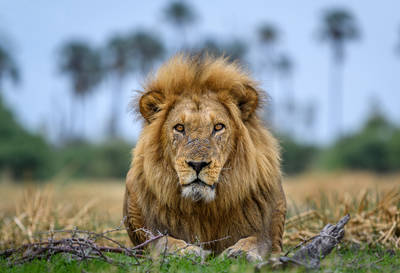
Panthera leo
Lions are at the top of the food chain and also most safari wish-lists, but with their numbers falling fast, any encounter with these majestic apex predators always feels like a privilege.
81% SUCCESS
2,964 sightings from 3,641 observations
Where to see lion in Kenya
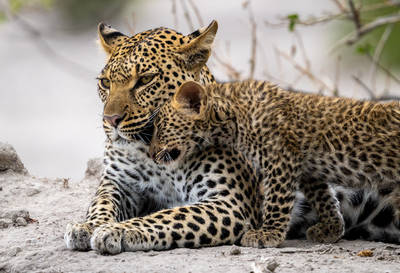
Panthera pardus
The most numerous of Africa’s big cats, leopard occur across many habitats, from wild tracts to populated areas. Their grace and their elusive nature make them a unique safari drawcard.
47% SUCCESS
1,889 sightings from 4,029 observations
Where to see leopard in Kenya
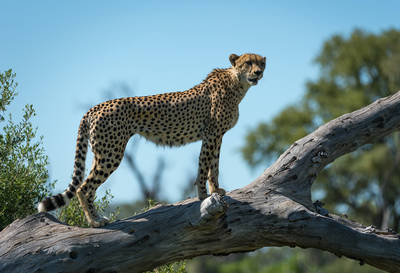
Acinonyx jubatus
The cheetah is the fastest land animal and the only cat that hunts by pure speed. Found largely in open grasslands, its slim, elegant form is today an increasingly rare sight.
33% SUCCESS
1,028 sightings from 3,085 observations
Where to see cheetah in Kenya
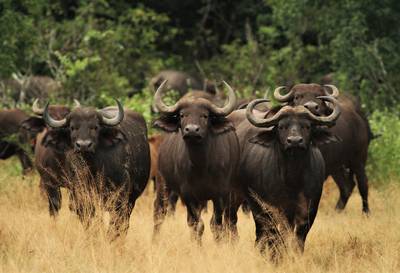
Syncerus caffer
One of the ‘Big Five’, buffalo earned a fearsome reputation in hunters’ tales. By contrast, big herds of these sociable bovids are placid, but mount formidable defences against predators.
83% SUCCESS
2,504 sightings from 3,021 observations
Where to see buffalo in Kenya
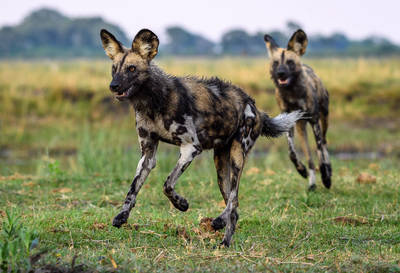
Lycaon pictus
African wild dogs are among the continent’s most compelling animals. Much misunderstood, these rare, tie-dyed canids are amazingly efficient hunters with a fascinating social life.
31% SUCCESS
843 sightings from 2,707 observations
Where to see wild dog in Kenya
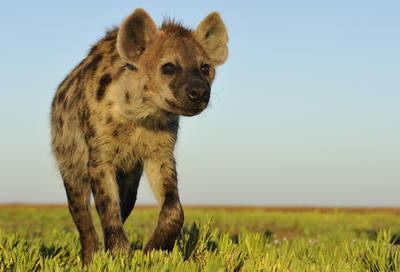
Spotted Hyena
Crocuta crocuta
The spotted hyena may be thought of as ‘ugly’ and ‘cowardly’. In fact, this versatile and intelligent carnivore is one of Africa’s most fascinating and warrants attention on any safari.
55% SUCCESS
2,127 sightings from 3,841 observations
Where to see spotted hyena in Kenya
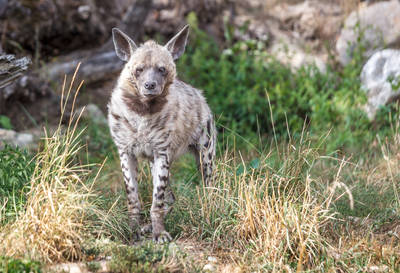
Striped Hyena
Hyaena hyaena
The striped hyena is the most widespread of the world’s hyenas, but absent from southern Africa. A rarely-seen nocturnal scavenger, it is shyer and more solitary than its spotted cousin.
14% SUCCESS
122 sightings from 901 observations
Where to see striped hyena in Kenya
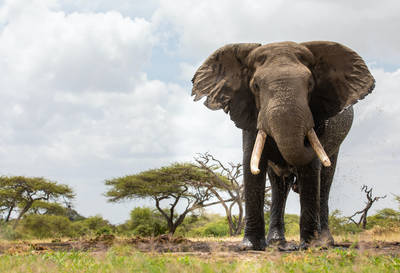
Loxodonta africana
By far the biggest of the so-called Big Five – indeed, the largest land animal on the planet – the elephant shapes the very landscape it inhabits and is a defining presence on any safari.
91% SUCCESS
3,537 sightings from 3,891 observations
Where to see elephant in Kenya
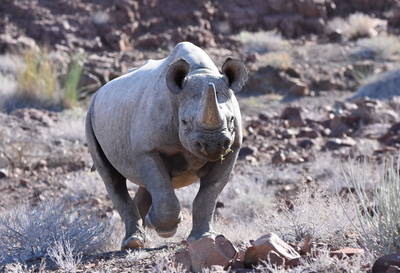
Black Rhino
Diceros bicornis
The black rhino is the smaller and rarer of Africa’s two rhino species but has the more fearsome reputation. Shy and heavily persecuted, it tends to stick to cover.
615 sightings from 1,995 observations
Where to see black rhino in Kenya
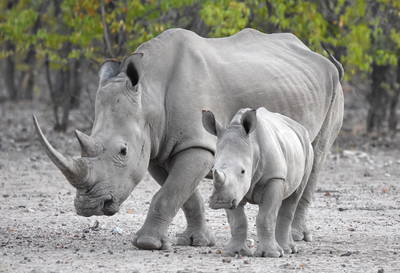
White Rhino
Ceratotherium simum
The white rhino is the largest and most numerous of the world’s five rhinoceros species. They are larger, easier to see and generally more approachable than the black rhino.
44% SUCCESS
481 sightings from 1,090 observations
Where to see white rhino in Kenya
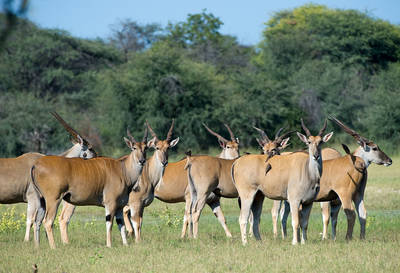
Taurotragus oryx
Africa’s largest antelope, eland are culturally important from prehistoric rock art to modern game farms. Though widespread, they are also shy so sightings are uncommon and often fleeting.
49% SUCCESS
1,438 sightings from 2,916 observations
Where to see eland in Kenya
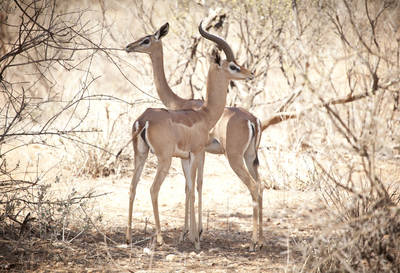
Litocranius walleri
With its slender frame and extraordinarily long neck, this unmistakable East African antelope resembles an attenuated impala and often stands on its back legs browse high shrubs.
76% SUCCESS
89 sightings from 117 observations
Where to see gerenuk in Kenya
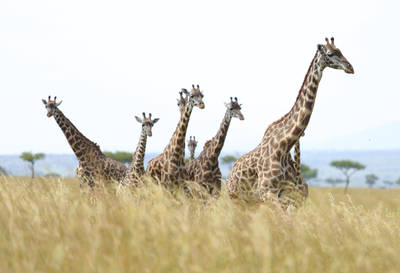
Giraffa camelopardalis
The world’s tallest land mammal, giraffes are herbivores which have evolved many unique adaptations. Their iconic outlines tower above the bush in many of Africa’s wildlife areas.
86% SUCCESS
3,413 sightings from 3,953 observations
Where to see giraffe in Kenya
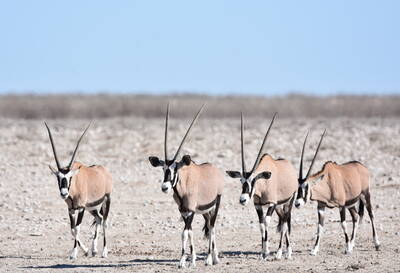
Oryx are impressive antelopes, with a powerful physique and elegant markings set off by rapier-like horns. They cut a distinctive dash in some of Africa’s harshest landscapes.
70% SUCCESS
1,280 sightings from 1,839 observations
Where to see oryx in Kenya
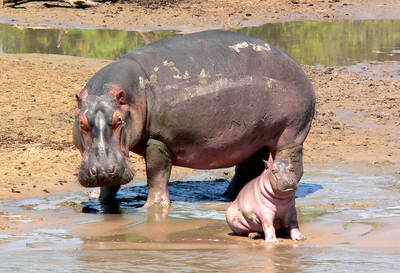
Hippopotamus amphibius
The territorial calls of the hippo create a signature soundtrack to Africa’s rivers & wetlands. Despite an endearing smile, this aquatic herbivore has a notoriously aggressive disposition.
89% SUCCESS
2,591 sightings from 2,910 observations
Where to see hippo in Kenya
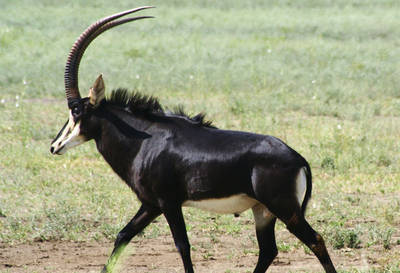
Sable antelope
Hippotragus niger
Perhaps Africa’s most beautiful antelope, sable are renowned for their combative nature, even holding off lions. Shy and restricted in range, sightings of sable are always special.
22% SUCCESS
436 sightings from 1,954 observations
Where to see sable antelope in Kenya
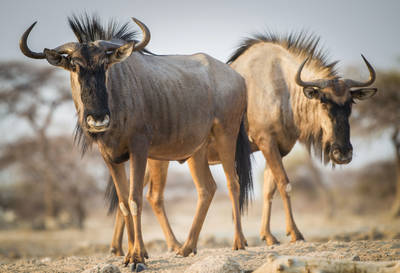
Connochaetes sp.
Superficially bovine in appearance, wildebeests are known for their spectacular migrations sometimes in huge numbers. These resilient animals are some of Africa’s most successful herbivores.
68% SUCCESS
2,411 sightings from 3,557 observations
Where to see wildebeest in Kenya
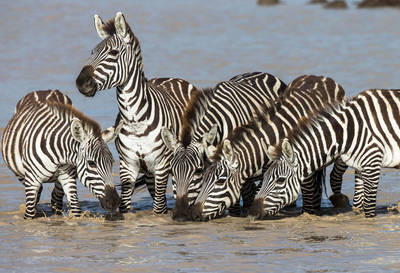
The zebra is a quintessential African animal: the horse in stripy pyjamas at the end of every child’s A–Z. There are three species, of which the plains zebra is much the most common.
84% SUCCESS
3,723 sightings from 4,412 observations
Where to see zebra in Kenya
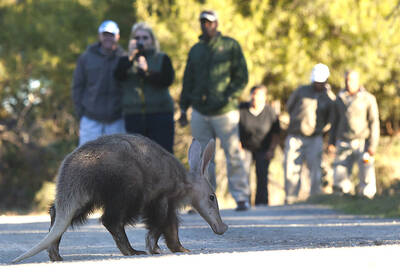
Orycteropus afer
The aardvark is one of Africa’s most bizarre and enigmatic animals. A shy, nocturnal termite-eater, signs of its presence may be scattered about the bush whilst sightings remain elusive.
67 sightings from 3,241 observations
Where to see aardvark in Kenya
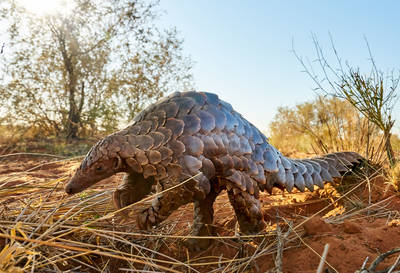
Smutsia sp.
Pangolins appear to be more pine cone than animal in their unique armoury of scales. These nocturnal, ant-eating oddities are not only highly elusive but also increasingly rare.
54 sightings from 3,238 observations
Where to see pangolin in Kenya
When to go to Kenya
The earths's climate crisis is making the weather in Kenya increasingly unpredictable. Our month-by-month guide helps you weigh up the options based on the weather you're most likely to get.
Do bear in mind, however, that climate charts apply specifically to the town in question, and not to larger regions or the whole country. And they are based on the annual measurements taken, in the case of Kenya, over roughly the last century. Kenya's weather in the 1950s, was more predictable and regular than it is today.
While the country lies on the equator, temperatures are determined much more by altitude than by season, with the coast and everywhere below around 1000 metres above sea level (about 3,300ft) being hot in the day time and very warm at night all year round. At high altitudes, it may rain at almost any time of year. The northern deserts are largely dry all the time. Western Kenya, including the Maasai Mara region , has a scattered rainfall pattern influenced by Lake Victoria, while the eastern half of the country, and especially the coast , are largely controlled by the Indian Ocean’s monsoon winds – the dry northeast monsoon ( kaskazi ) blowing in from November to March or April and the moist southeast monsoon ( kusi ) blowing in from May to October. The kusi normally brings the heaviest rains to the coast in May and June. As these weather systems move inland, they bring rain to the east facing highlands, but the western slopes can experience a rain shadow effect and much drier conditions.
Broadly, the seasons that apply to most of the safari areas are: a warm, mostly dry season from January to March, getting increasingly humid before the rains break; then warm and wet from April to June (the “long rains” ); slightly less warm and mostly dry from July to October (Nairobians call the relatively cool, cloudy July-August period "winter" , thought it's barely wintry in a sense that people from higher latitudes would recognise; and then warm and wet for a few weeks in November and early December – a period called the "short rains” , which typically fizzle out before Christmas, but can sometimes be prolonged into early January.
Kenya in January
Clear, hot days and warm nights make this high season a popular time for safaris and it’s also good for diving and snorkelling as water clarity is excellent and gets better as the dry season progresses. Most lodges and tented camps treat January after the New Year week is over, as mid-season, making it a good compromise in terms of value for money with reasonably reliable, dry weather and some greenery left in the landscape. Expert Africa bases its description of climate and weather in January, like the other months of the year, on the climate records of roughly the last 100 years, and it's fair to say that the weather and seasons since the beginning of this century have been highly irregular and unpredictable.
- On average, January is the second driest month of the year
- Elephants dig waterholes in the dry riverbed in the Samburu reserve.
- Wildebeest and many antelope have their calving season, to February.
- Migrant birds are seen in huge numbers, especially in the Rift Valley.
- Sea water clarity around the coral reefs generally good.
Fantastic: the very best time to visit
Weather in January
Kenya in February
With the short dry season well established, the grass grazed down and wildlife gathering close to water points, this is still a good time for a safari. Good water clarity in the Indian Ocean's coastal waters makes for excellent diving and snorkelling conditions. Expert Africa bases its description of climate and weather in February, like the other months of the year, on the climate records of roughly the last 100 years, and it's fair to say that the weather and seasons since the beginning of this century have been highly irregular and unpredictable.
- On average, February is the driest month of the year.
- It’s sometimes possible to swim with whale sharks at Diani Beach.
- Migrant birds are still seen everywhere, especially near water.
- This is usually peak calving season for wildebeest and many antelopes.
- This month is often the hottest of the year, especially on the coast.
A very good time to visit
Weather in February
Kenya in March
Hot, increasingly humid weather – with good diving and snorkelling conditions at the start of the month – gives way to rains and lower accommodation costs. Expert Africa bases its description of climate and weather in March, like the other months of the year, on the climate records of roughly the last 100 years, and predicting the seasons since the beginning of this century has been difficult. March is the month when – traditionally – intensely hot conditions build up until a cloudburst finally happens at the end of the month or in early April, to relieve the humidity. As ever, regional variations across the country can greatly impact on visitors' experiences.
- Sea-water clarity is best for diving before the long rains start.
- Visitor numbers are low, though the Easter holidays can be busier.
- Night skies can be scintillatingly clear in early March.
- Cropped down savannah grasses can make it easier to see the wildlife.
- Temperartures climb high, especially at lower elevations.
A good time to visit, with pros & cons
Weather in March
Kenya in April
April sees the full onset of the southeast monsoon wind or kusi, which heralds the long rains. Temperatures drop soon after the rains are established and you’ll often have facilities largely to yourself in this more affordable low season, sometimes known as the "green season". The bush quickly springs to life, with greenery sprouting almost before your eyes. While you're likely to get a fair number of heavy showers, the breaks in the rain can yield sparklingly clear conditions. With the dust settled and bright sun piercing the clouds, conditions can be sublime for photography, especially first thing in the morning or in the late afternoon with another storm brewing. You may be lucky, or you may find conditions very wet and muddy.
- A wet month, the coast often gets more than 300mm (12in) of rain.
- Sunny spells can provide great light for photography.
- Buffalo and zebra calving season often happens in this month.
- Baby crocodiles hatch, for example on Central Island in Lake Turkana.
- Palearctic migrant birds gather to fly north to breeding grounds.
A time to avoid if possible
Weather in April
Kenya in May
While game viewing can be trickier as vegetation runs riot, between the cloudbursts the colours and light are great for photography at this time of year. Expert Africa bases its description of climate and weather in May, like the other months of the year, on the climate records of roughly the last 100 years, and while it's reasonable to expect heavy rains in many parts during this month, especially on the coast, the rains don't always come evenly or in some areas come at all. In an El Niño year, the so-called long rains that normally are established across much of the country by May can be meagre, to the despair of farmers. On the other hand in a La Niña year, the long rains can bring floods. On the coast, the monsoon winds make the climate much more predictable, with heavy rains common throughout this month.
- Frogs breed in the ponds in the Arabuko Sokoke Forest near Watamu.
- Wildebeest, impala and other grazers are in rut (the breeding season).
- Kilimanjaro looks its best as heavy rain falls as snow on the summit.
- There's a sharp peek of rainfall on the coast with many rainy days.
- Accommodation prices are uniformly low, while some camps close.
Weather in May
Kenya in June
The rains give way to cloudy, cooler weather, often making for comfortable conditions by the end of the month, especially in the highlands. Starting from mid-June or the beginning of July and running until the end of October, this is the high season, and accordingly has higher accommodation rates and – at least until early September – higher numbers of visitors. While the early part of June can often be rainy on the coast, it can be a great time to go on safari, with fresh greenery, many young animals and good photographic conditions with clear air.
- The Taru Desert, inland from the coast, is carpeted with flowers.
- The Lake Turkana Cultural Festival is held in Loiyangalani.
- Madaraka Day (commemorating self rule) is 1 June.
- The annual Lewa marathon runs a course through the wildlife.
- The Diani Rules "sports" event rips up the rulebook at Diani Beach.
Weather in June
Kenya in July
Kenya’s “winter" season sets in (winter is a misnomer but locals feel the change), and the highlands can be rather grey. Skies are often cloudy and the days can be surprisingly cool, with an average daytime high in many highland safari areas of 15-20°C and night-time temperatures dropping below 10°C in Nairobi and the highlands. Lower parts of the country and the coast are usually warm and dry, typically reaching highs of around 25°C with lows in the high teens. As this is the start of the high season, coinciding with the usual arrival of the wildebeest migration in the Maasai Mara, July is a busy month. Ask your Expert Africa specialist to advise on how to avoid the crowds, which is not that difficult to do.
- The wildebeest migration usually reaches the Maasai Mara in July.
- Simbi Lake (Kisumu) and Crater Lake (Naivasha) can attract flamingoes.
- Watersports start to pick up and some surfing is possible at Malindi.
- Afternoon thunderstorms are a common feature in the Maasai Mara.
- The sea can be choppy along the coast, making diving difficult.
Weather in July
Kenya in August
The Great Migration fills the plains of the Maasai Mara, and school’s out, so the park roads are full of tourists – ask your Expert Africa specialist for advice on crowd avoidance tactics. Choose a private conservancy rather than a public national park or national reserve for quieter conditions. Like July, August is generally mild and relatively dry in the safari areas, but it can be very chilly in the highlands, even in the middle of the day, and hail occasionally falls above altitudes of around 2,400m (8,000ft). Nairobi can be disappointingly overcast, with low cloud.
- Apart from Christmas holidays, this is the busiest month of the year.
- Late August sees peak wildebeest drama at the Mara River crossings.
- Coastal winds are good for kite- and wind-surfing.
- Few mosquitoes are around at this generally dry time of year.
- The annual Camel Derby takes place in the Samburu capital, Maralal.
Weather in August
Kenya in September
The skies clearing of cloud signals the start of hot, dry weather with little chance of rain – and, after the first few days of the month, far fewer visitors – making the latter part of September a good time for a quieter safari. While early September is often good for dramatic migration crossings along the Mara River, you might consider deliberately postponing your trip until later in the month, when the migration can still be very impressive and visitor numbers fewer. If tourist surges are somewhat predictable, however, the patterns of the wildebeest migration are more volatile, and like all of Expert Africa's climate and weather assessments, they are based on accumulated years of experience rather than guaranteed certainty.
- This is still high season, with prices to match.
- Many river crossings take place on the Mara river in both directions.
- Natural bush fires flush out insects and small animals for predators.
- The Rift Valley Music Festival takes place by Lake Naivasha.
- With school holidays over by early September, late-month is quieter.
Weather in September
Kenya in October
Still hot, mostly dry and not too busy, this is many people’s preferred month for a safari, and it’s also good for diving and snorkelling. The wildebeest and zebra herds of the great migration are often still to be seen, though in dwindling numbers. The swamps of Amboseli attract thirsty wildlife including large herds of elephants. While we wouldn't expect much rain across most of the country this month, the climate has become so unpredictable that you can never say never, and the possibiity of the short rains – usually associated with November to mid-December, starting early, can't be discounted.
- This month sees the tail end of the great migration in the Mara.
- Palearctic migrant birds start to arrive, staying until March.
- Turtle nests hatch at Watamu, until November.
- Amboseli elephants focus on the swamps for their daily water.
- The Indian Ocean monsoon winds turn from southeast to northeast.
Weather in October
Kenya in November
The northeast monsoon wind or kaskazi heralds the start of the “short rains", usually some time in the second half of the month. From November to mid-December, this is the low season, and accordingly has lower accommodation rates and lower visitor numbers. Across most of the country you can expect warm, somewhat cloudy weather, with occasional heavy showers and localised flooding. Expert Africa bases its description of the climate in November, like the other months of the year, on the records of roughly the last 100 years, and it's fair to say that the seasons since the beginning of this century have been highly irregular and unpredictable: some years the short rains don't come at all, or don't reach every part of the country. In an El Niño year, the November short rains can be very heavy, but in a La Niña year, they can fail completely.
- Swimming with dolphins in Lamu can be done from now until April.
- Birders gather at Ngulia in Tsavo West to ring Palearctic migrants.
- The Lamu Cultural Festival takes over the town and Lamu Creek.
- Agricultural shows often take place regional market towns.
- This is low season, so camps can be great value, with special offers.
Weather in November
Kenya in December
In a typical December, the rains usually finish by middle of the month, leaving the landscape looking its best, under clear blue skies, and heralding the start of the second peak tourist season from around 20 December to the first week of January. Our assessment of the likely weather in December, like the other months of the year, is based on climate records, and it's fair to say that the seasons since the beginning of this century have been highly irregular and unpredictable. Christmas can sometimes be wet, but most years the rains have finished a week or two earlier, with the festive season ushering in the perfect combination of clear skies and sunshine by day and starry nights.
- Christmas and New Year are busy, with the lodges and camps full.
- Rates are highest after 24 Dec, with supplements on public holidays.
- Republic Day and Independence day are celebrated on 12 December.
- Good kite- and wind-surfing restarts, with strong northeasterly winds.
- Mango season begins, providing excitement for primates and elephants.
Weather in December
Country guide
A rough guide to Kenya
This short guide includes some useful practical and background information about the country. If you book your Kenya trip with Expert Africa, we’ll send you a free copy of The Rough Guide to Kenya , a detailed travel guide written by Expert Africa’s East Africa Manager, Richard Trillo.
Where to go on a first visit
The options can seem overwhelming: with so many parks, reserves and conservancies, where to go on a first visit? Firstly, we’d strongly recommend including the famous Maasai Mara . At any time of year, the lands around the meandering Mara River host abundant wildlife and whether you’re watching a pride of lions hunting, a herd of elephants grazing in the marsh or hyenas squabbling with vultures over the carcass of a buffalo, you are conscious all the time of being in a realm apart, a human visitor to a landscape owned by the animals. Yes, the publicly accessible Maasai Mara National Reserve gets very busy, especially during holiday periods and when the wildebeest migration is on. There’s a new hard surfaced road from Nairobi which makes access easy for weekenders too. However, the former Maasai grazing lands around the reserve have mostly been converted to very successful wildlife conservancies, managed by the local community in association with small, high quality safari camp owners, and these Maasai Mara Conservancies are well worth considering if you want to avoid the crowds. The other region we very often recommend as a contrast with the Mara is Laikipia , the upland former ranches and hills northwest of Mount Kenya. Laikipia now largely consists of a patchwork of highly successful wildlife conservancies, providing extensive sanctuary to rhinos, wild dogs, leopards and most of the other megafauna of the East African plains and bush. If you want to include some beach time, Kenya's Indian Ocean coast , fringed by coral reefs, is the real deal – with the bonus of rewarding historical discoveries to be made in the old cities of Mombasa and Lamu, and the ruins of Gedi, near Watamu.
Local flight transfers
The workhorse of Kenya’s local aviation is the Cessna Caravan . It’s a turboprop plane, typically seating 9-12 passengers, plus the pilot and co-pilot. If you’re not used to flying in unpressurised light aircraft the experience can either be exhilarating or a little unexpected at first. Be prepared for the plane to be gently buffeted by wind and thermals and to drop into bush airstrips more than once in the course of your journey. Our scheduled airline partners strive to be reliable, but the final route and timings of any particular service are usually only settled the day before, when camps are notified of arrival and departure times.
Engaging with local culture
Village visits are offered as a standard activity or excursion by many safari camps, especially in the Maasai and Samburu traditional areas, often calling at a local compound – a circle of small houses – where the camp staff and guides have family contacts, during the course of a morning or afternoon game drive. You are normally expected to make a modest cash contribution, or to buy some souvenirs. These visits, which often include a few minutes inside a smoky hut built of straw and dried cow-dung, can be illuminating and rewarding, or sometimes can feel a little contrived (you only have to imagine the scenario in reverse). Villagers will sometimes put on a little dance show. Otherwise, you are likely to have the most rewarding encounters with local culture simply in conversation with your guide or camp staff: their life stories can be unforgettable.
Kenyan food and drink
Most Kenyans breakfast on the national staples of sweet, milky tea and white bread and margarine, with ugali (a stiff, polenta-like corn mash) usually eaten as the main meal of the day, with a little sauce or relish and green-leaf vegetables to liven it up. Traditionally, celebratory meals invariably focus around the consumption of huge quantities of meat . Roast meat ( nyama choma with ugali is the closest to a true national dish, but only the Swahili coast has a proper cuisine, based around the spices and ingredients of the Indian Ocean, Middle East and India. Not surprisingly, perhaps, most of the dishes you’ll be served in hotels and luxury safari camps will be quite familiar. Soups, bread rolls, tasty salads and fruit bowls (often grown in an organic kitchen garden at the camp itself), roast and stewed beef, pork, lamb and chicken, familiar vegetables, occasional fish and standards of the British-European dessert list like lemon meringue pie and profiteroles are all frequently on the menu. Many camps and lodges will have a curry night or a Swahili night (with aromatic dishes from the Indian Ocean coast) and most run menu rotations of at least five days to avoid presenting the same meals more than once. Local lager-style beer and familiar soft drinks are available everywhere, as is imported wine , often South African.
Kenya’s history
Some of the earliest fossil evidence of human ancestry has been discovered in Kenya, and the exhibits in Nairobi’s national museum and at several archaeological sites around the country are interesting, if not spectacular. The country’s original stone-tool-using hunter-gatherer inhabitants merged thousands of years ago with the first distinct migrations into the region of people from the highlands of what is now Ethiopia, who could have arrived at any time between 9000 BC and 1000 BC. The highland migrants brought an expanded material culture, including working in hard obsidian stone (better weapons) and a range of activities from refined pottery to leather and bark cloth clothing. For present-day Kenya, the key early arrivals (from around 1AD) were peoples from the forests further west, speaking languages of the huge Bantu family (including the forebears of today’s Kikuyu, Kamba and Mijikenda ethnic groups), and people from the upper Nile, who would have been the ancestors of today’s Rift Valley Kalenjin-speakers. These groups brought the knowledge of iron-working (essential for large-scale tree-felling) and by around 1000AD, most of Kenya’s peoples were engaged in an iron-age economy, with a good deal of intermarriage. On the coast, seafaring traders from the Arabian peninsula had already introduced Islam, and the cultures of the Indian Ocean were being introduced to the Bantu-speaking cultures of the coast to create the hierarchical society of the Swahili. The next big arrivals were American crops (corn, cassava, potatoes, tomatoes, tobacco) introduced by Portuguese merchant adventurers who had secured trading toe-holds on the coast, while new migrants into western Kenya included the ancestors of the Luo on the shores of Lake Victoria, and the Turkana , both groups coming from the upper Nile and hugely dependent on fishing. Finally the Maa-speakers (the Maasai and Samburu ) arrived in Kenya, again from the Nile region, and their economy was dominated by livestock and a diet largely consisting of milk and blood extracted from their living cattle. By the mid-nineteenth century, the Maasai were a dominant and militaristic force over much of Kenya. But severe droughts and civil war splintered them, so that by the end of the century, with European raiders moving rapidly across East Africa, building a railway to Lake Victoria and beginning to settle, the African peoples of Kenya were fragmented and easily subdued. Anti-colonial resistance fizzled out as Europeans flooded into Kenya between the first and second world wars. Many Kenyans fought with the British in World War II, especially in Burma, and the start of organised anti-British resistance in the 1950s included many returning servicemen. Britain fought an ugly war with the so-called Mau Mau , declaring a State of Emergency, sealing off villages and executing thousands of fighters. British atrocities have only been fully revealed in recent years. The inevitable withdrawal of the British and the return of Kenya’s independence , in 1963, were followed by decades of government corruption and mismanagement, though a greater degree of democracy has prevailed since the 1990s, together with freedom of the press. Kenya’s rampant free market economy and high birth rate, combined with tribal politics, has created a society that is forever and restlessly hopeful, but never at peace with itself. These conditions allow for a great deal of freedom for money to determine outcomes, and that includes in the fields of conservation and wildlife management . Kenya’s strict no-hunting law (applied by the first president, Jomo Kenyatta, in 1978) and its permissive land ownership laws mean that vast swathes of the country are effectively under foreign control, for the fundamental benefit of the wildlife, and tourism. Balancing this economic climate with the needs of Kenya’s millions of people living in deep poverty is the challenge for the 21st century.
Maps of the principal regions for a Kenya safari
These two quite different maps help you to understand the scale and features of Kenya: the GOOGLE MAP shows the country's diverse topography and landscapes: a country more than twice the size of the UK and 50 per cent bigger than California incorporates sweeping plains and highland peaks, arid deserts and an indented, mangrove- and beach-fringed coastline supporting coral reefs. Do click on Google's satellite view as well as the regular "Map" and "Terrain" views. Then our REFERENCE MAP is Expert Africa's own artwork map, clearly identifying Kenya's national parks, national reserves and private and community conservancies.
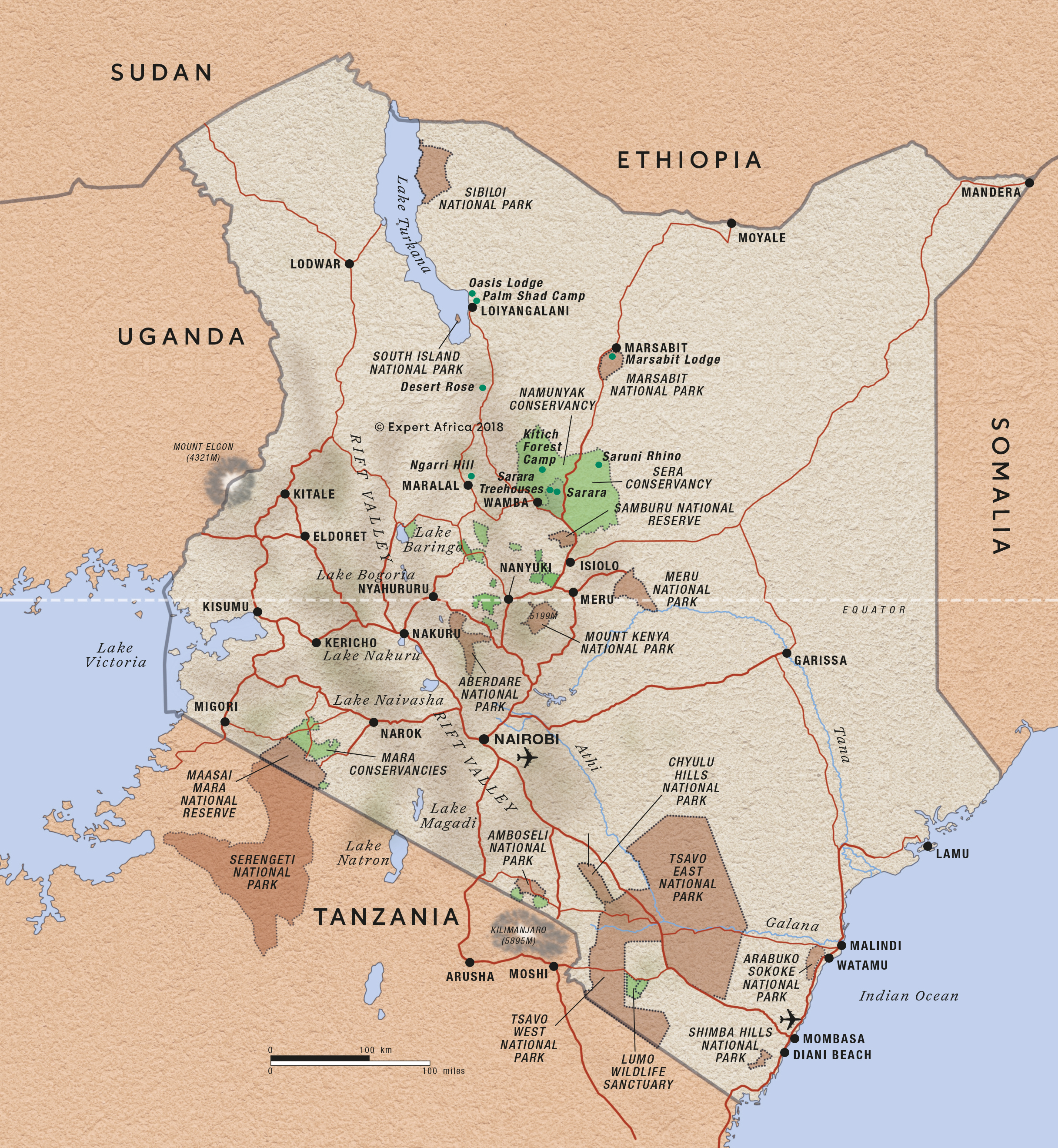
Need inspiration?
Let our trip chooser narrow down the options for you
Holidays and Safaris in Kenya
Expert Africa knows Kenya better than any other safari operator: our specialists combine decades of experience travelling and living in the country. So when we say we'll guide you to make the best choices for your trip from our own experience we say so with honesty and enthusiasm.
Kenya's key wildlife area is the Mara ecosystem; that includes the Maasai Mara National Reserve and the neighbouring Maasai Mara Conservancies . The majority of travellers include a visit to this region that has an iconic reputation for the Mara River that runs through it and the annual wildebeest migration – that also runs through it. We'll help you decide whether to stay inside the reserve or in one of the conservancies.
Easily reckoned as the second best wildlife area in Kenya, Laikipia consists entirely of private and community conservancies. You can easily see all the "Big Five here, as well as less obvious species such as wild dog and Grevy's zebra. And the region has also become famous among keen mammal-watchers and photographers for its black leopards.
Kenya's other principal safari areas are Samburu National Reserve and neighbouring conservancies, Amboseli National Park and the nearby Chyulu Hills, and Meru National Park (not to be confused with Mount Meru in northern Tanzania). We love them all, and many travellers have favourite camps that they return to year after year.
Please browse through our selection of safari and beach holiday itinerary examples below, then call us , so that one of our Kenya experts can help you to design an individual, tailor-made trip that will suit you perfectly..
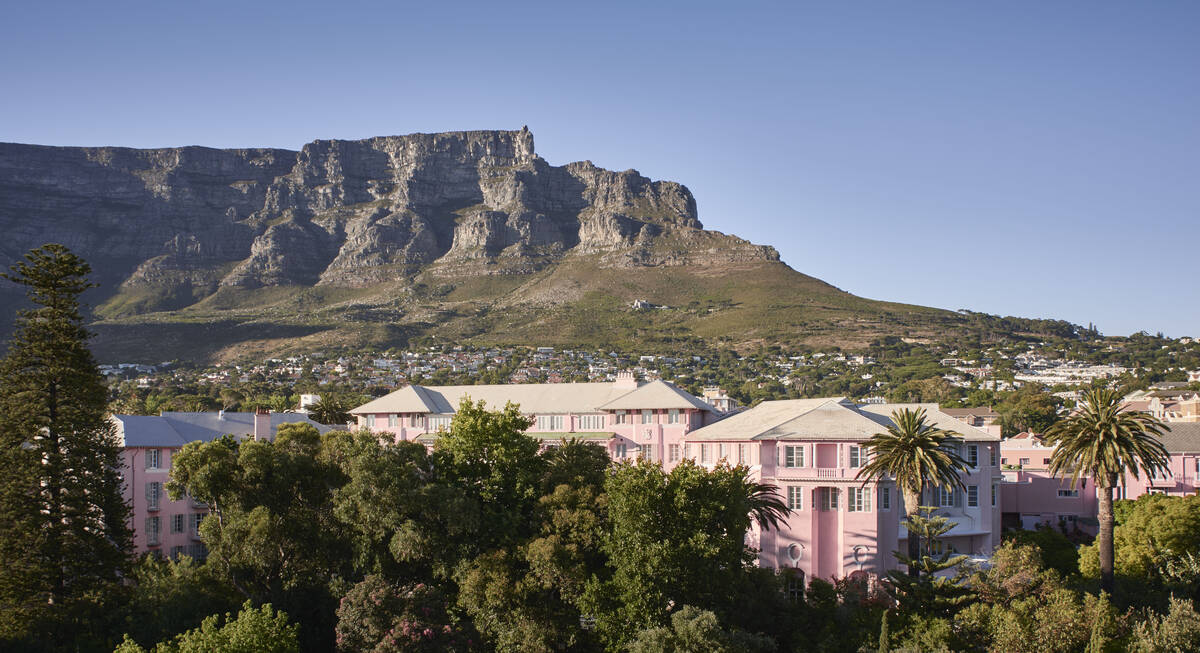
The Highlights of Africa
17 days • 7 locations CAPE TOWN AIRPORT TO KIGALI AIRPORT
An epic adventure taking in some of Africa’s most incredible sights and wildlife experiences, from Cape Town to the Okavango Delta, Victoria Falls, the Maasai Mara and an encounter with mountain gorillas.
US$14,300 - US$18,160 per person
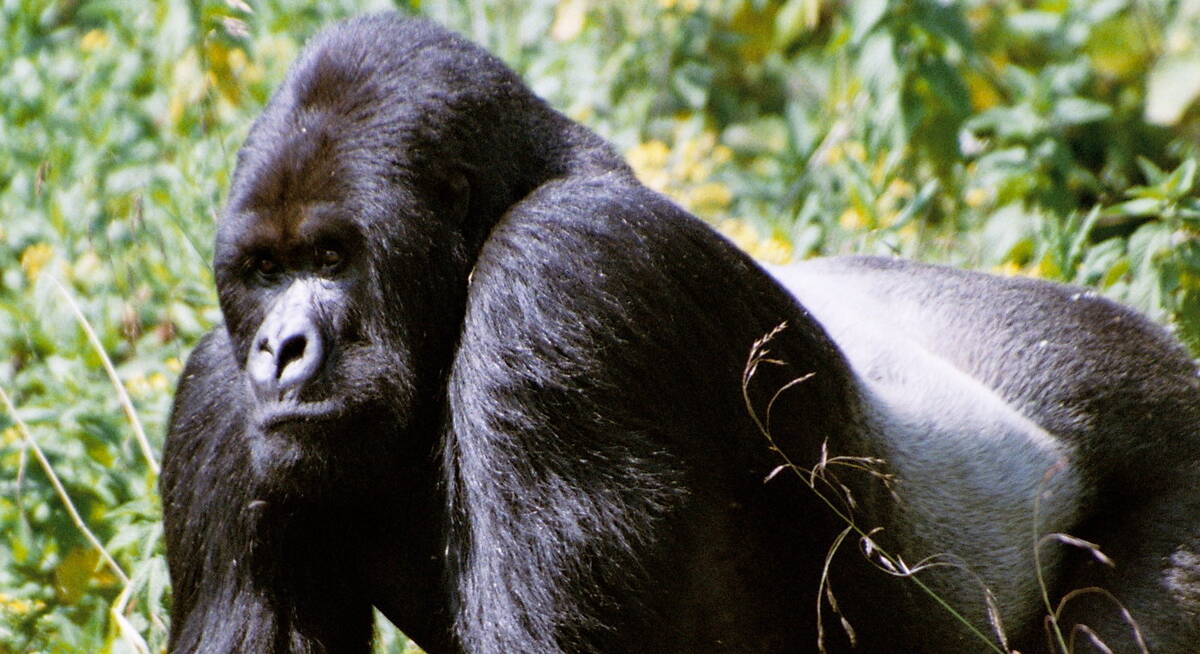
Gorillas and Maasai Mara Safari
9 days • 3 locations KIGALI AIRPORT TO NAIROBI AIRPORT
This trip combines two of Africa's most unforgettable wildlife experiences – Rwanda's mountain gorillas and Kenya's Maasai Mara.
US$11,260 - US$14,090 per person
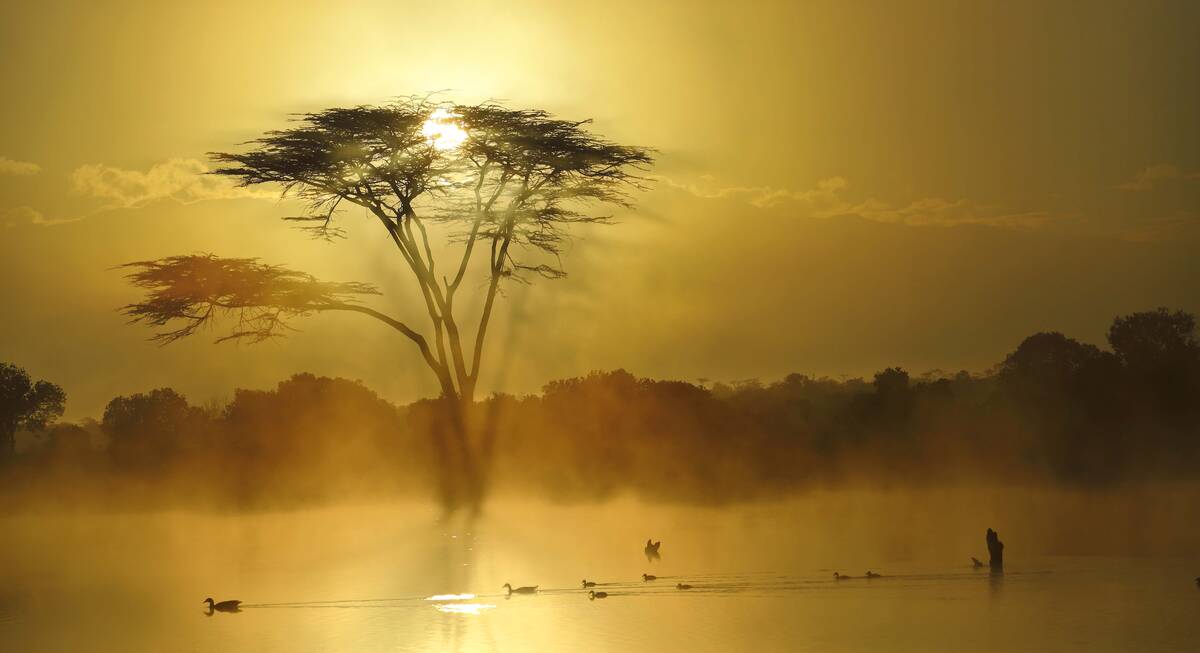
Purple Grenadier Fly-In Safari
6 days • 2 locations NAIROBI AIRPORT TO NAIROBI AIRPORT
Fantastic guiding from intimate, well-run mid-range tented camps, in superb conservancy locations: this safari is all about making the most of the incredible wildlife in Laikipia and the Maasai Mara.
US$5,010 - US$6,600 per person
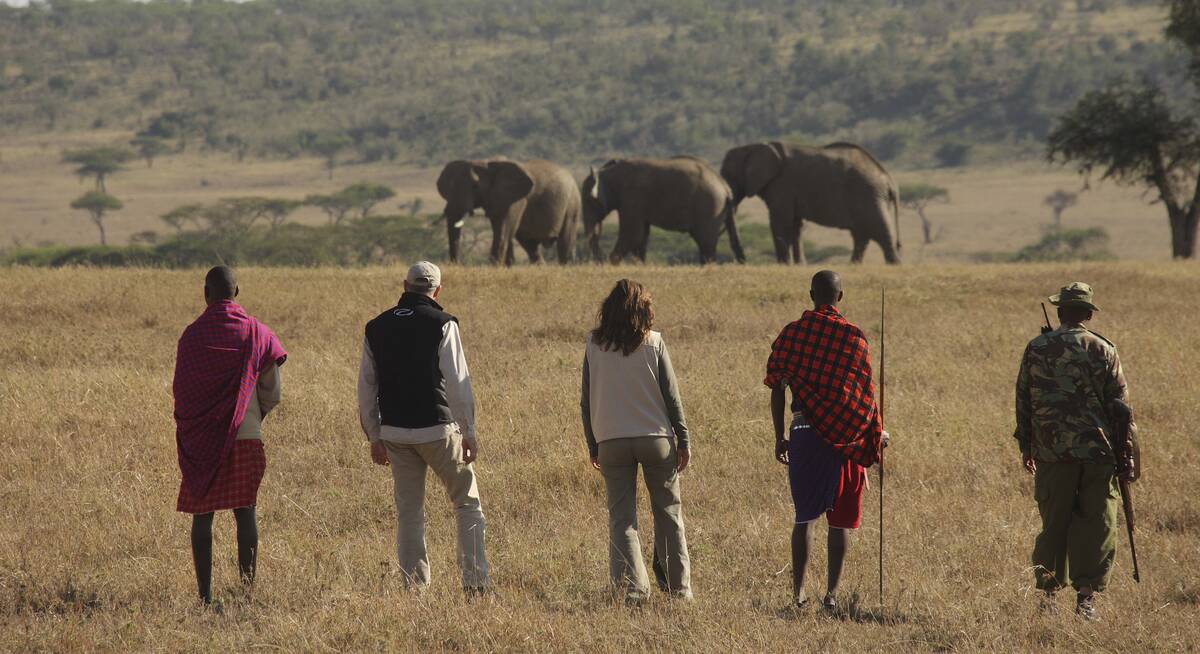
Striped Hyena Safari
5 days • 3 locations NAIROBI AIRPORT TO NAIROBI AIRPORT
Just one example of a possible itinerary for keen walkers, this safari enables you to experience the sounds and sights of the bush, and its wildlife, in an unusually direct way.
US$5,020 - US$6,470 per person
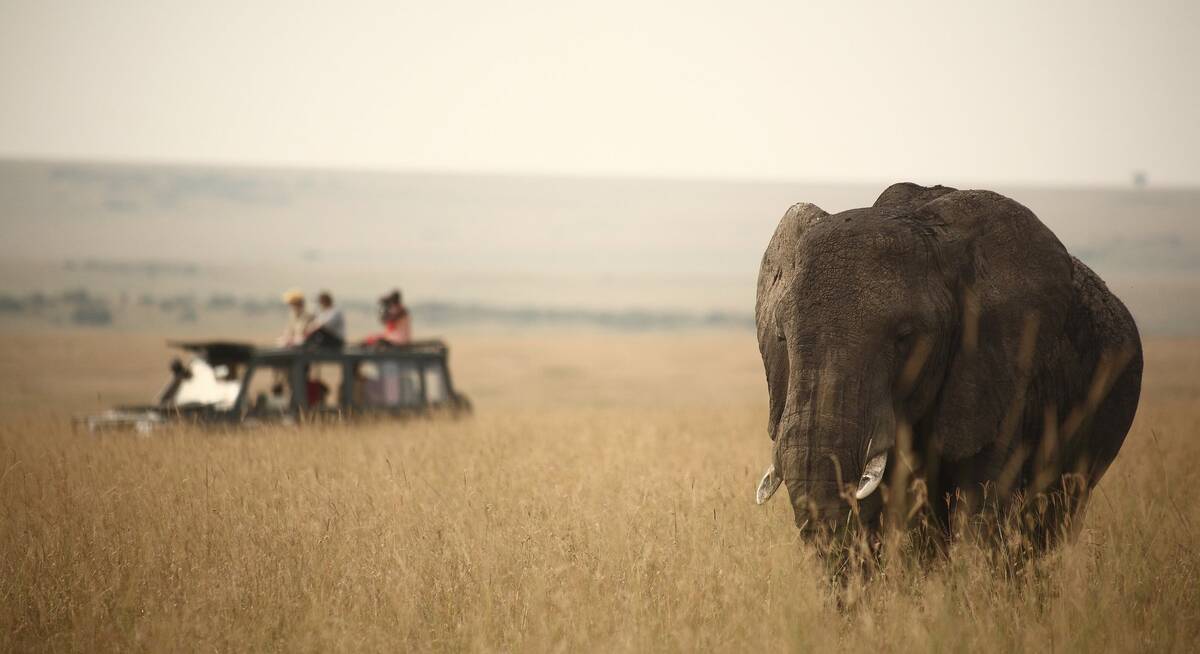
Martial Eagle Fly-in Safari
9 days • 3 locations NAIROBI AIRPORT TO KILIMANJARO AIRPORT
This stylish fly-in safari visits two of Africa’s most iconic parks, the Maasai Mara National Reserve in Kenya and Tanzania's Serengeti National Park.
US$12,590 - US$18,010 per person
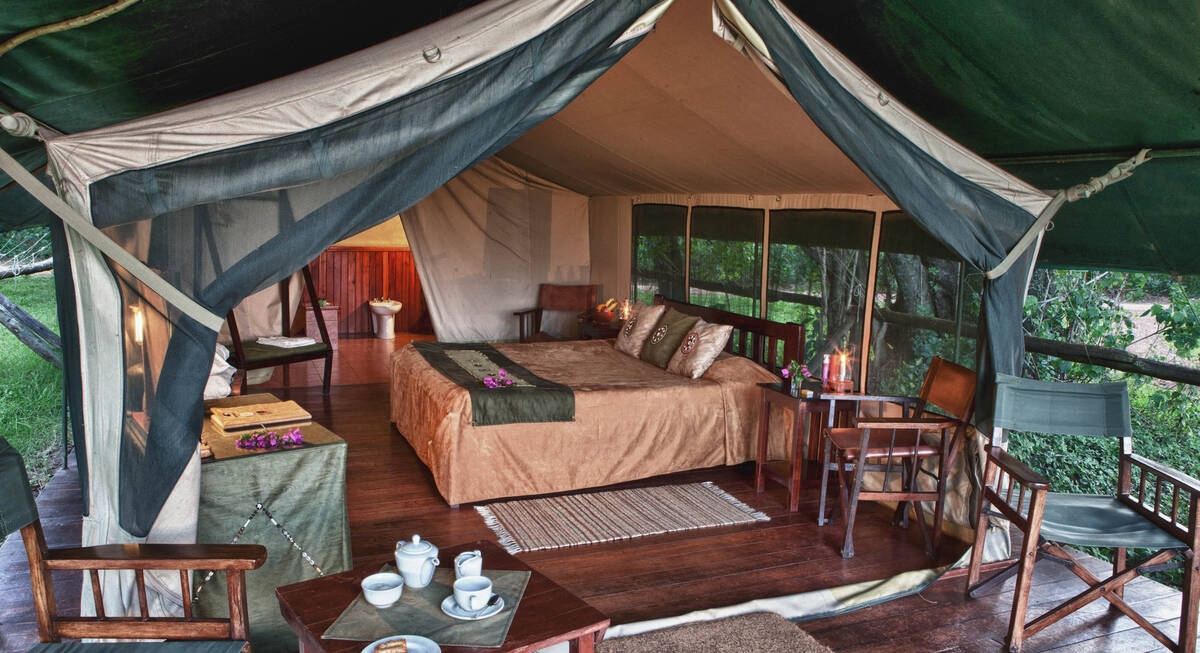
Steppe Eagle Fly-in Safari
7 days • 2 locations NAIROBI AIRPORT TO NAIROBI AIRPORT
Two comfortable tented camps overlooking the Ewaso Nyiro and Mara River put you at the heart of the action. Experience spectacular diversity in species and habitat with safari in Samburu and the Masaai Mara National Reserve.
US$5,680 - US$8,620 per person
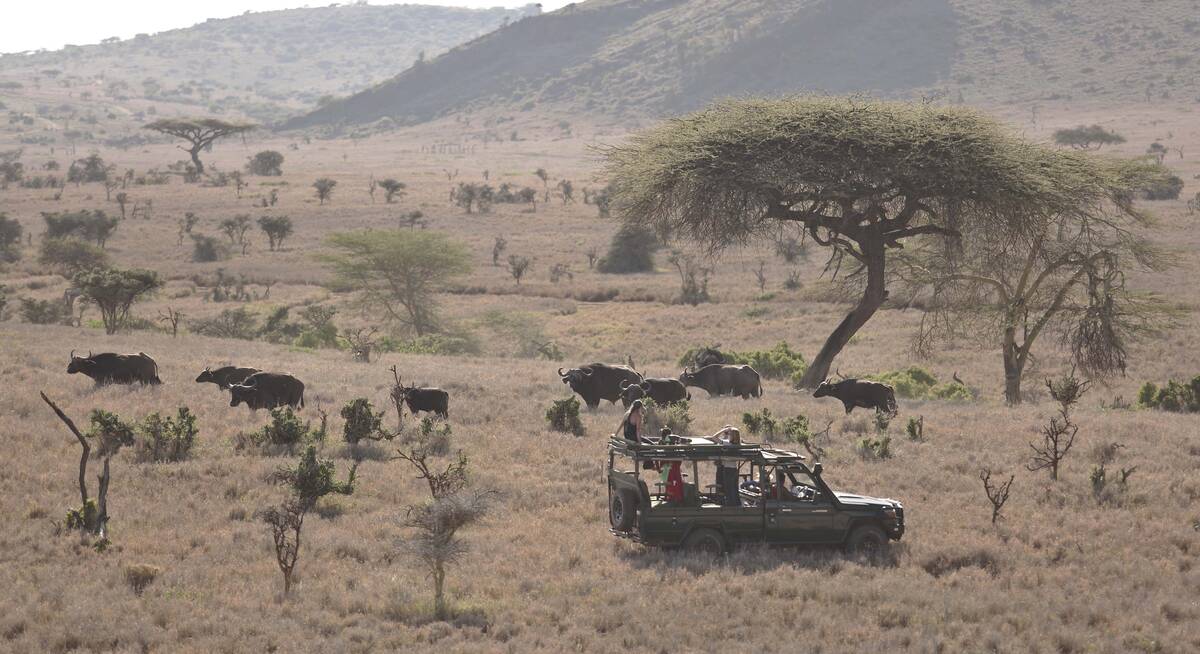
African Hawk-Eagle Fly-in Safari
Two luxurious camps provide relatively quiet game-viewing within Laikipia and the Mara ecosystem. Situated on private conservancies, both Lewa Wilderness and Naboisho offer the chance to sight all of the "Big 5" and to enjoy a range of safari activities.
US$7,780 - US$12,800 per person
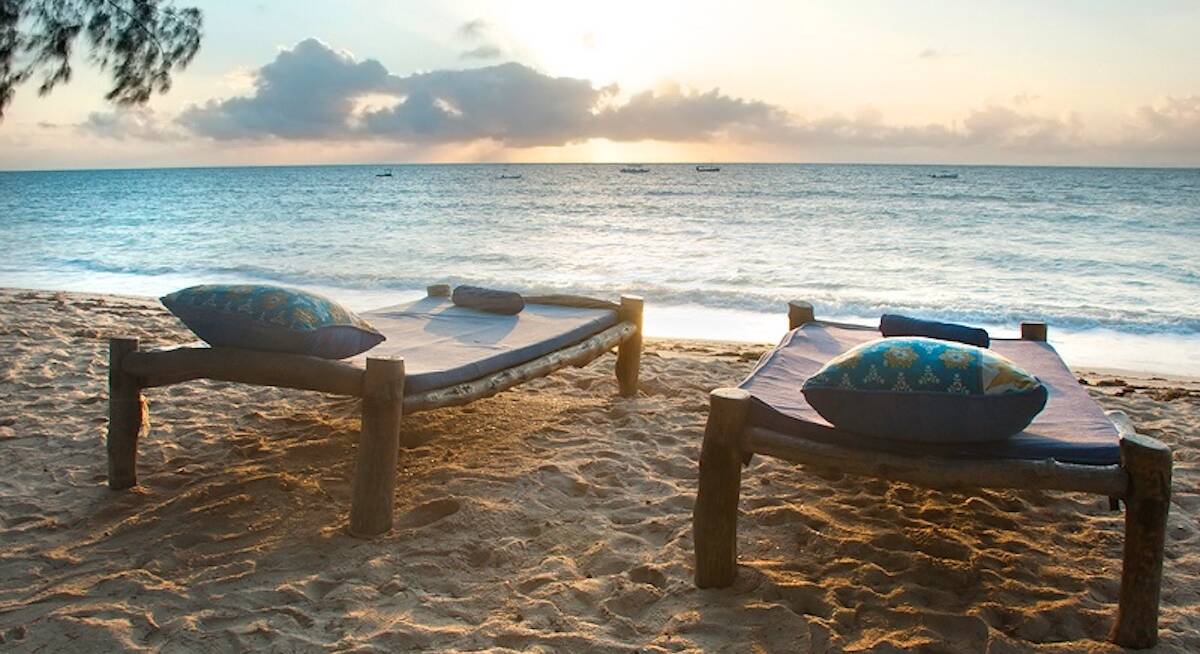
Kinondo Kwetu Beach Holiday
7 days • 1 locations NAIROBI AIRPORT TO NAIROBI AIRPORT
Enjoy a ‘home away from home’ on a beautiful beach, where you will be exceptionally well looked after by a superb team. This holiday can be as relaxed or as action-packed as you like.
US$3,760 - US$5,540 per person
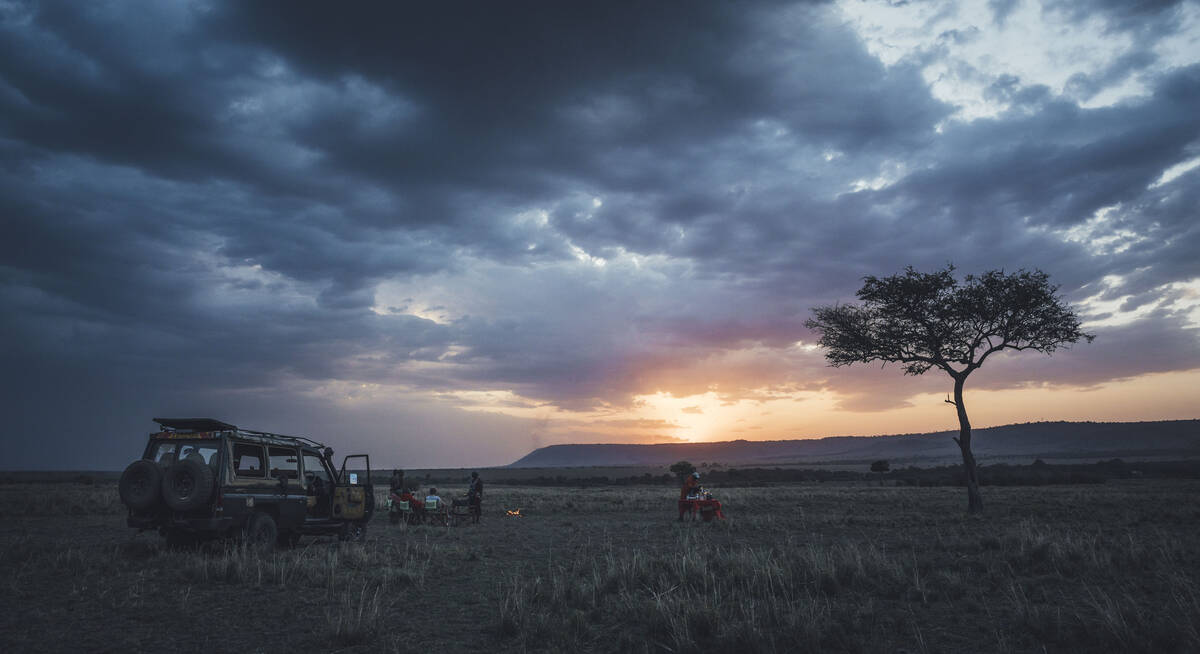
Greater Kudu Fly-In Safari
Experience a truly authentic bush experience on this safari at two classic tented camps, in Laikipia and the Maasai Mara. These are some of the best places to spot wild dogs and big cats.
US$7,170 - US$8,410 per person
Let us help you customise your trip
All of our holidays on this site are just ideas; none are fixed. All of our trips are tailor-made, so we'll always adapt them to suit you. Talk to an Expert and let us help you to work out your perfect trip.
Talk to an Expert
Call us now! We’ll match you with the Specialist in our team who is best suited to help you. Then together we can start planning your trip.
Set up your itinerary
Based on our experience and your ideas, your specialist will create a detailed, costed itinerary. We’ll refine it together, until we have a trip that you’re perfectly happy with.
Prepare for your trip
The same Specialist will make the seamless arrangements for your trip, send you detailed travel documents, and be available to answer any questions before you depart.
Travel with peace of mind
After you set off, you’ll be cared for by our partners in Africa, most of whom have worked with Expert Africa for decades. And if you ever need us urgently, we’re available 24/7.
When you return
We love to learn about your trip, and so will always be grateful if you’ve the time to give feedback to your Specialist when you return.
Kenya holiday styles & special interests
From family adventures to romantic breaks, find ideas here for your perfect Kenya safari
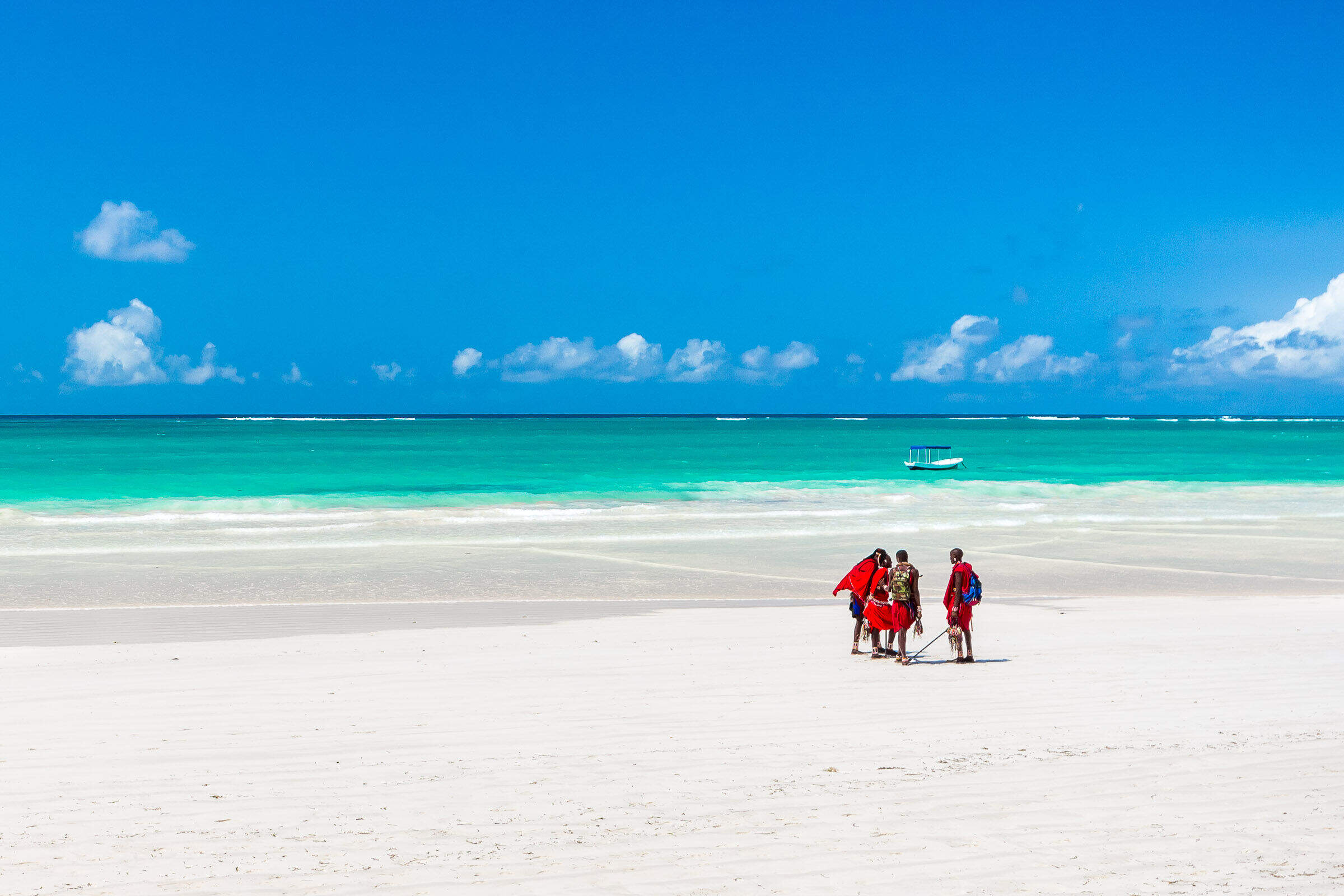
Beach holidays
Discover Africa's coast and tropical islands.
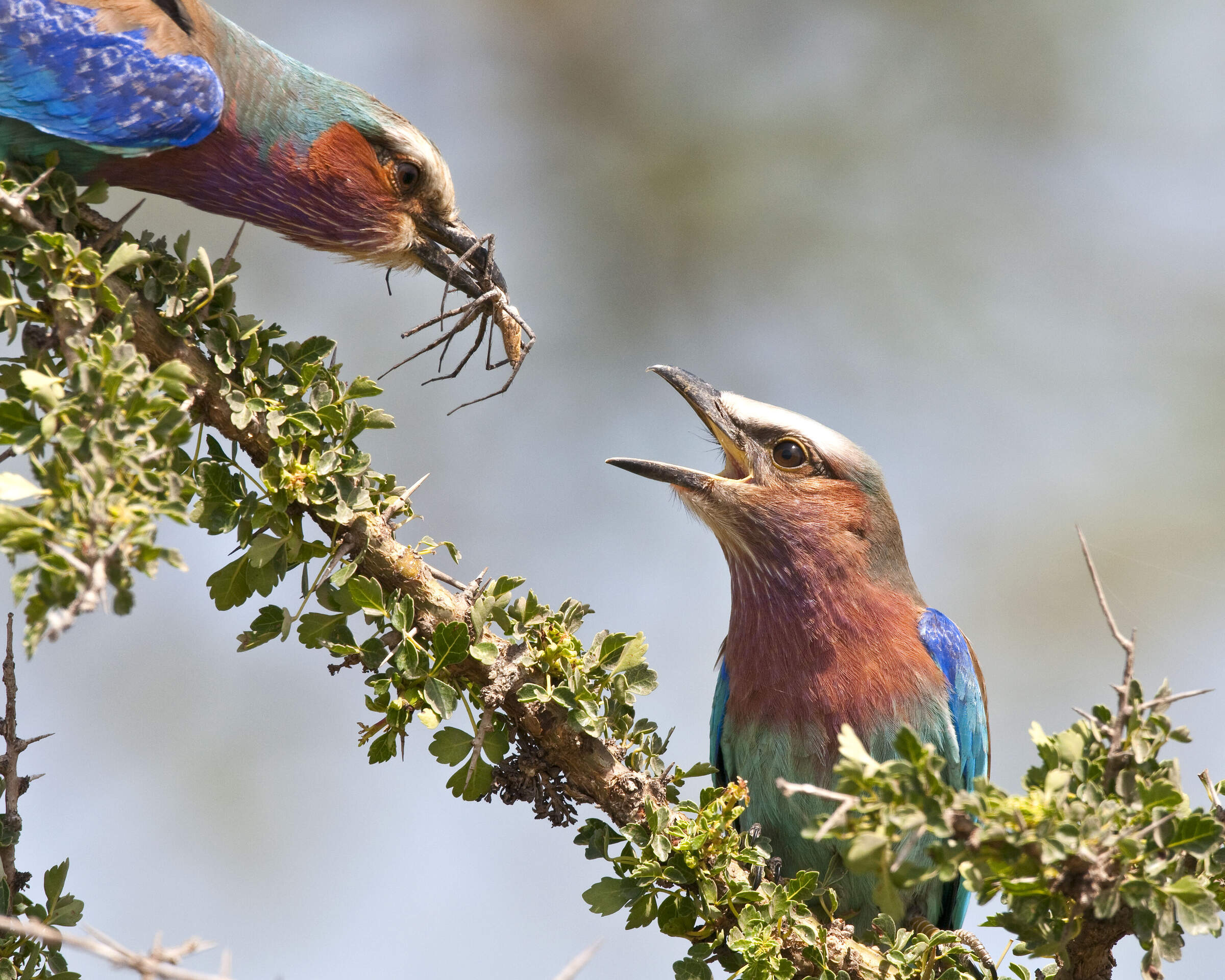
Birdwatching
Diverse habitats, discreet hides and superb guiding.
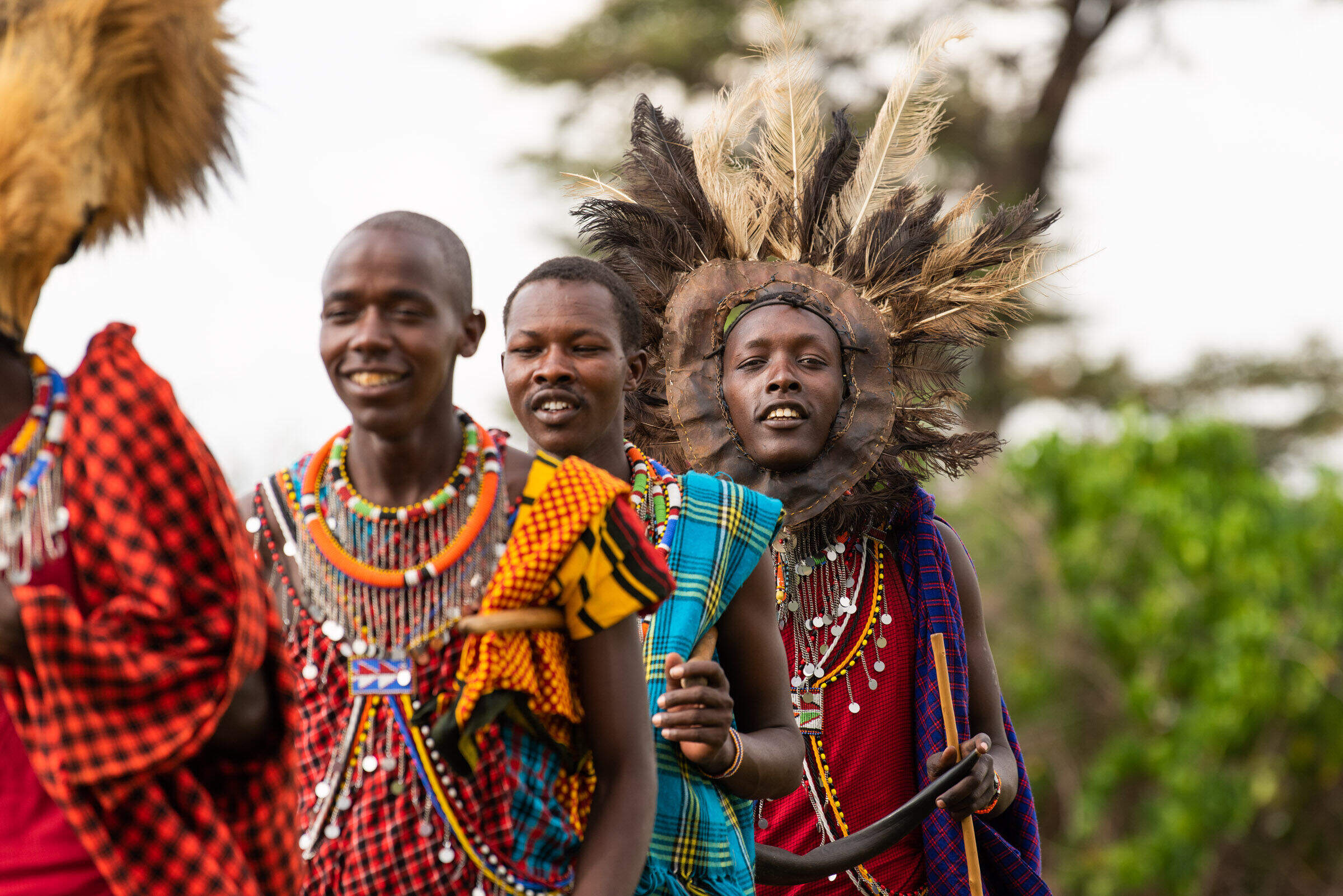
Cultural experiences
Get an insight into Africa's cultures and history.
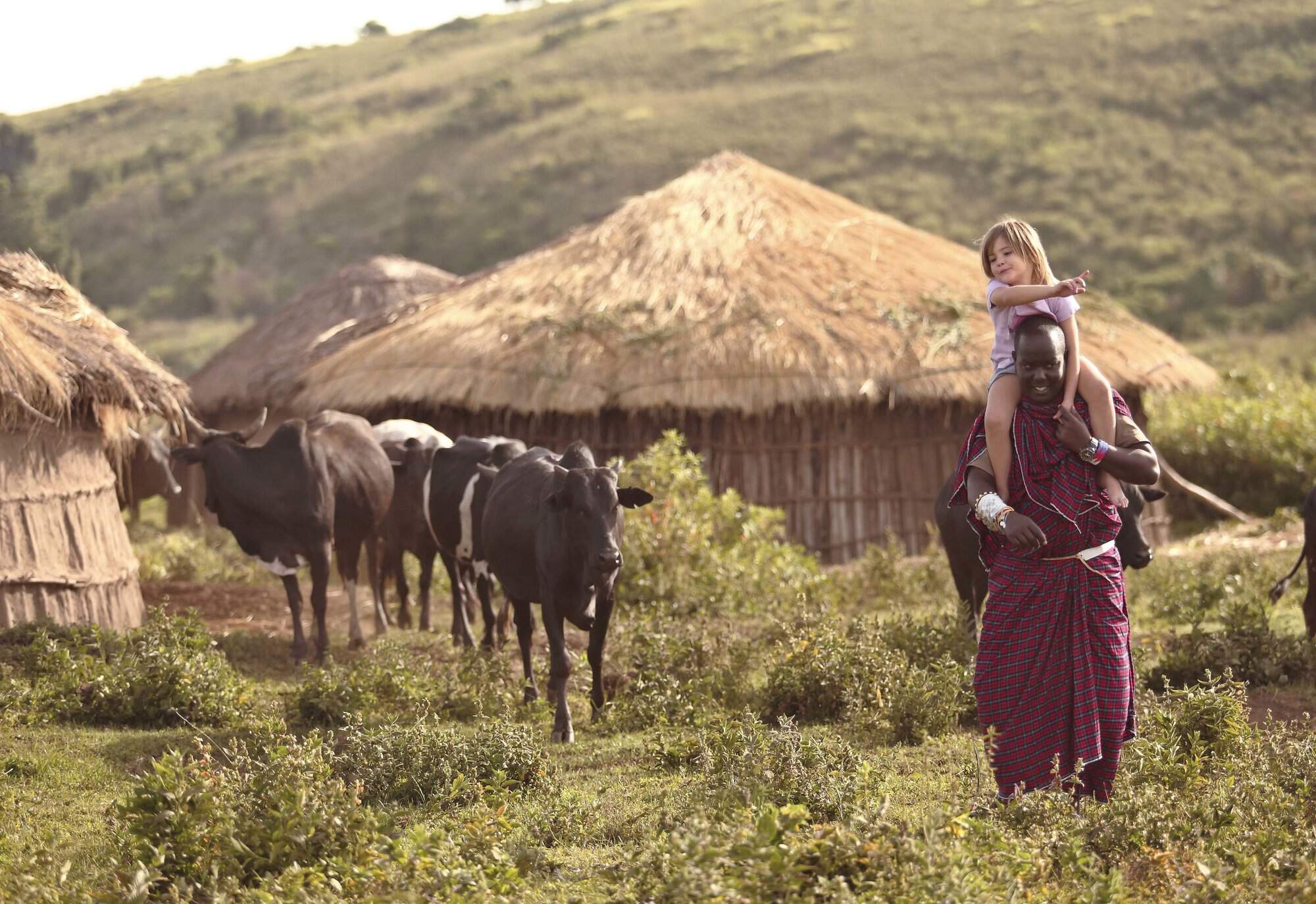
Family holidays
Hand-picked camps for an incredible family safari.
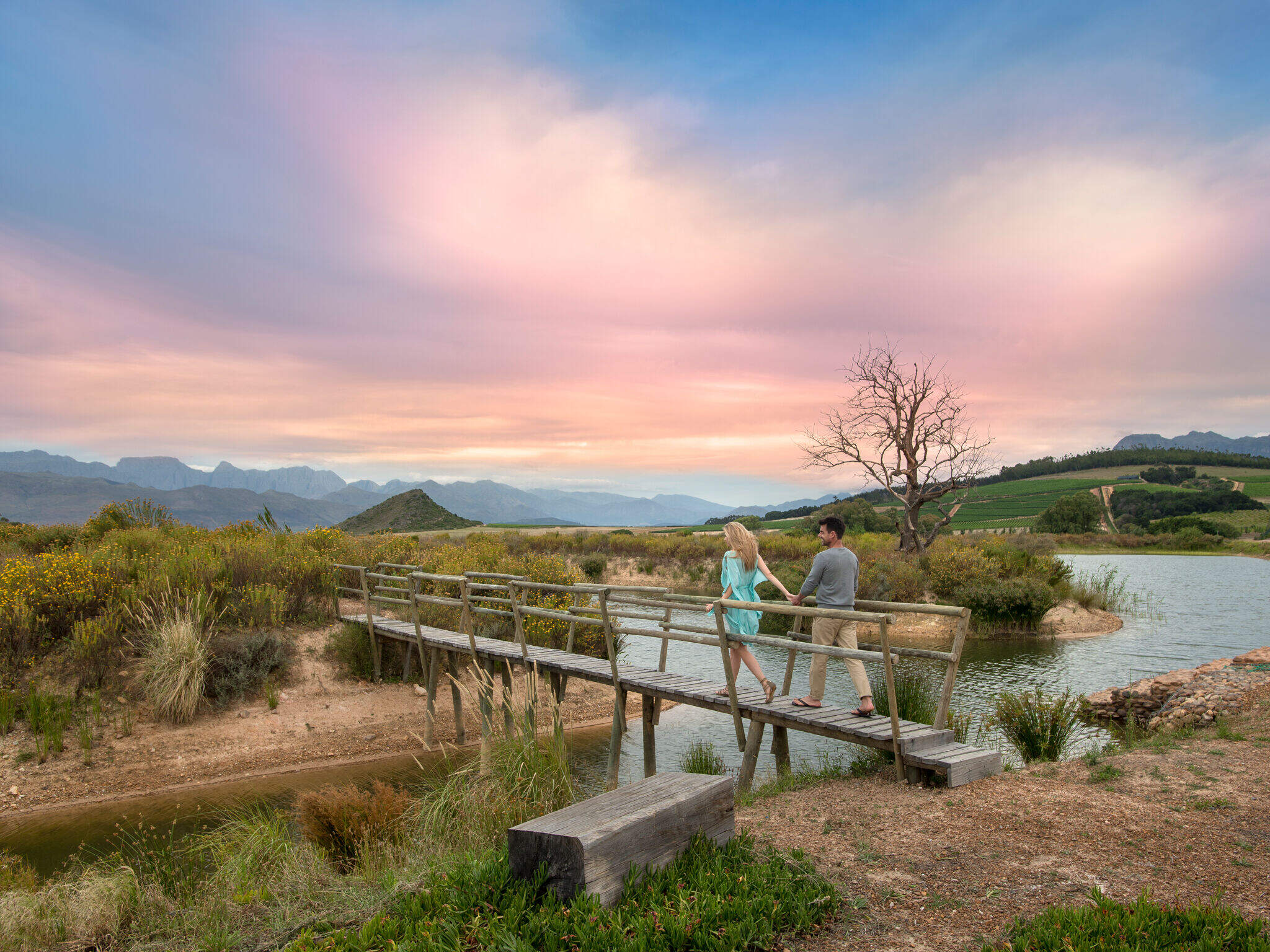
Romantic safaris and castaway island retreats.
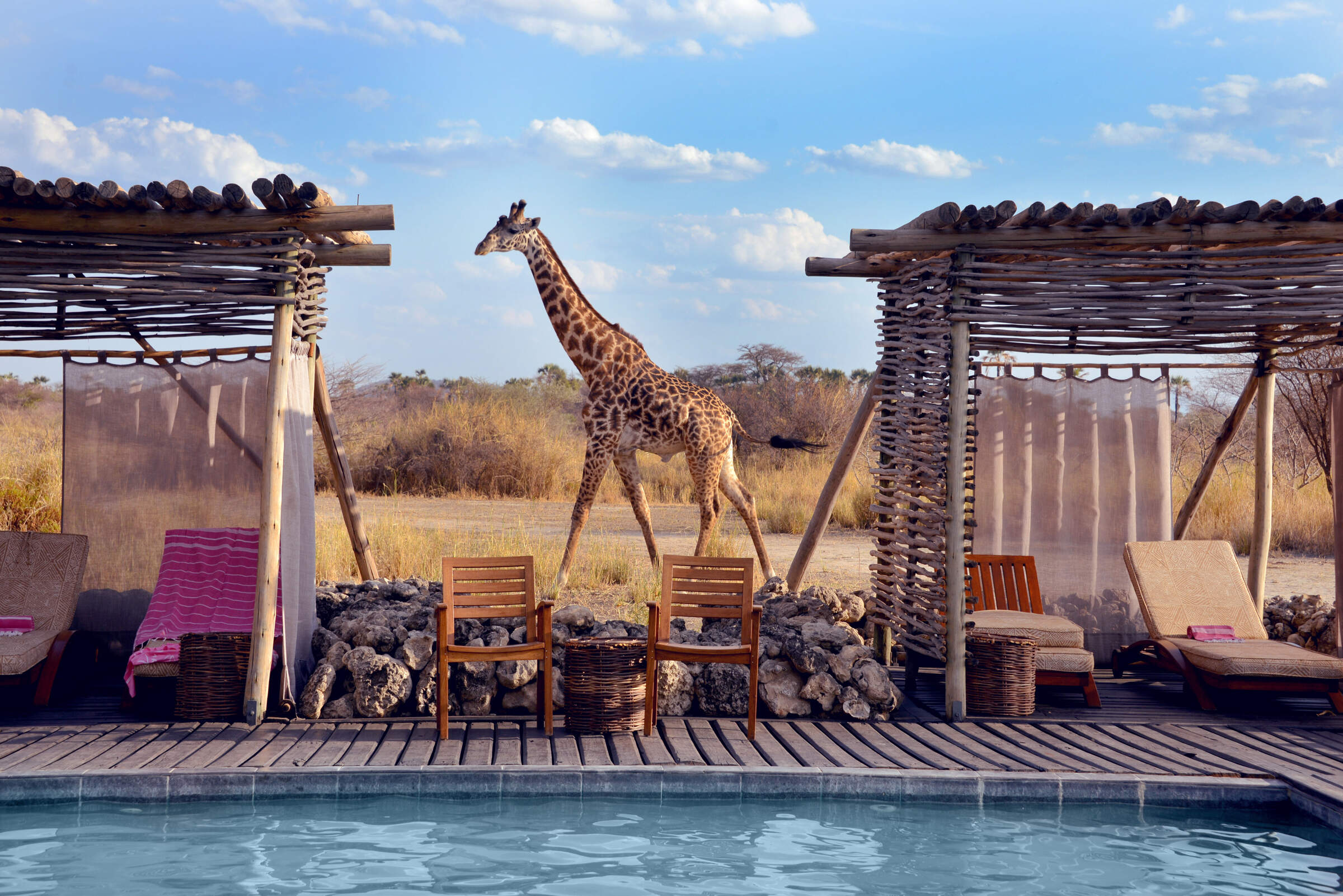
First-class service, scenic vistas and unparalleled comfort await you during these carefully selected luxury holidays.
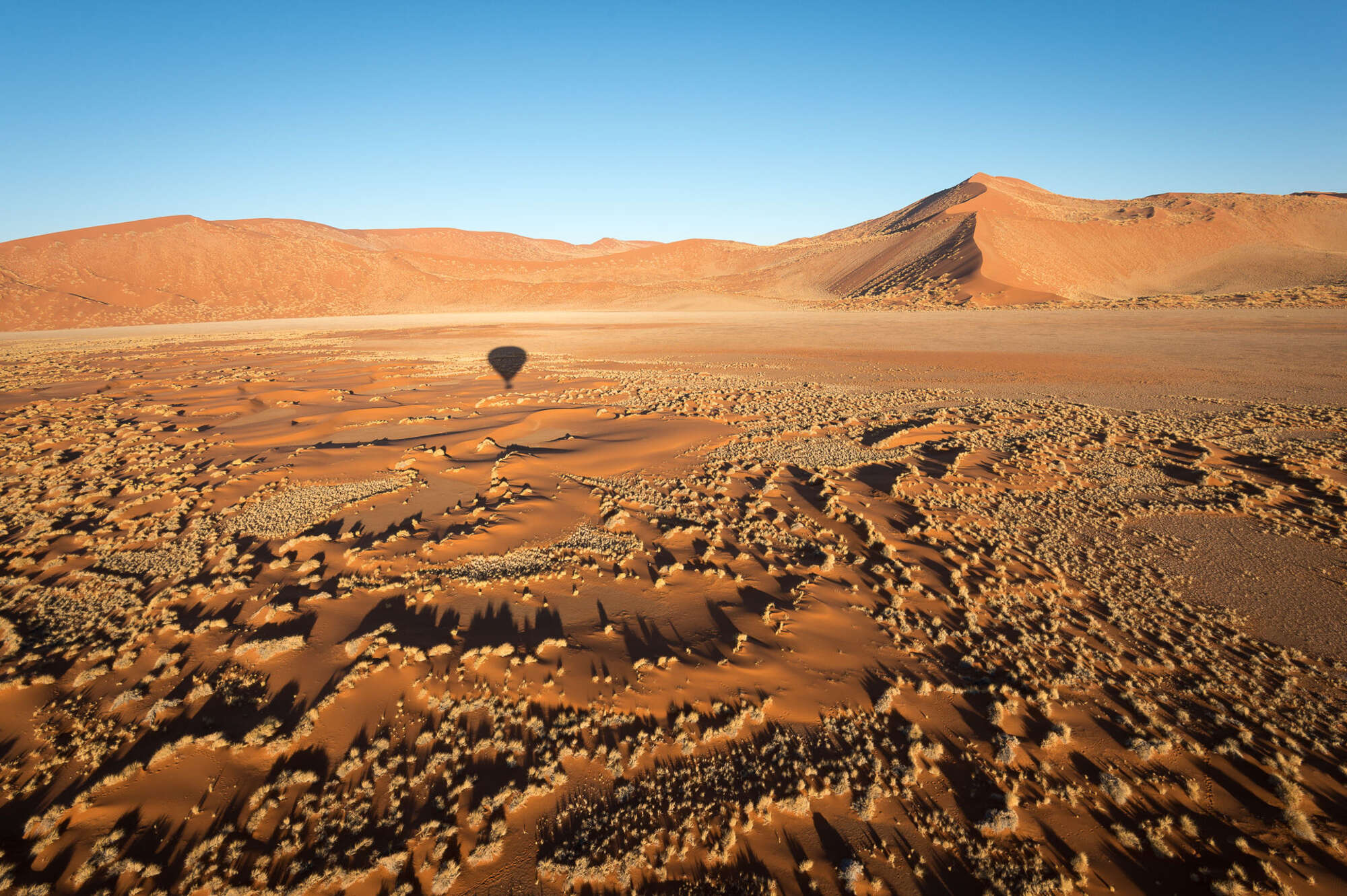
Photography holidays
Great holidays to suit the keen photographer.
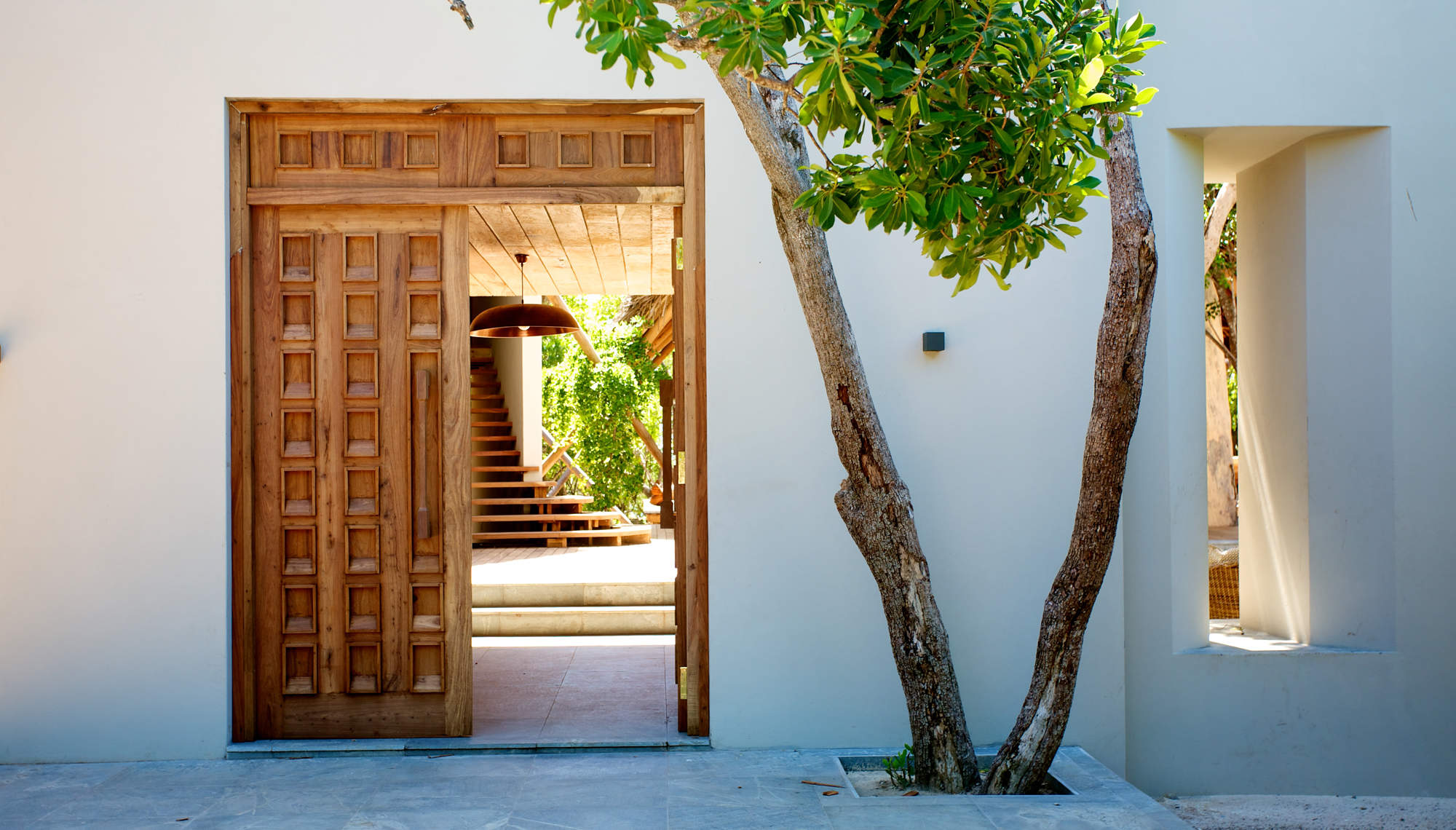
Private villas & houses
Enjoy Africa with just your friends & family
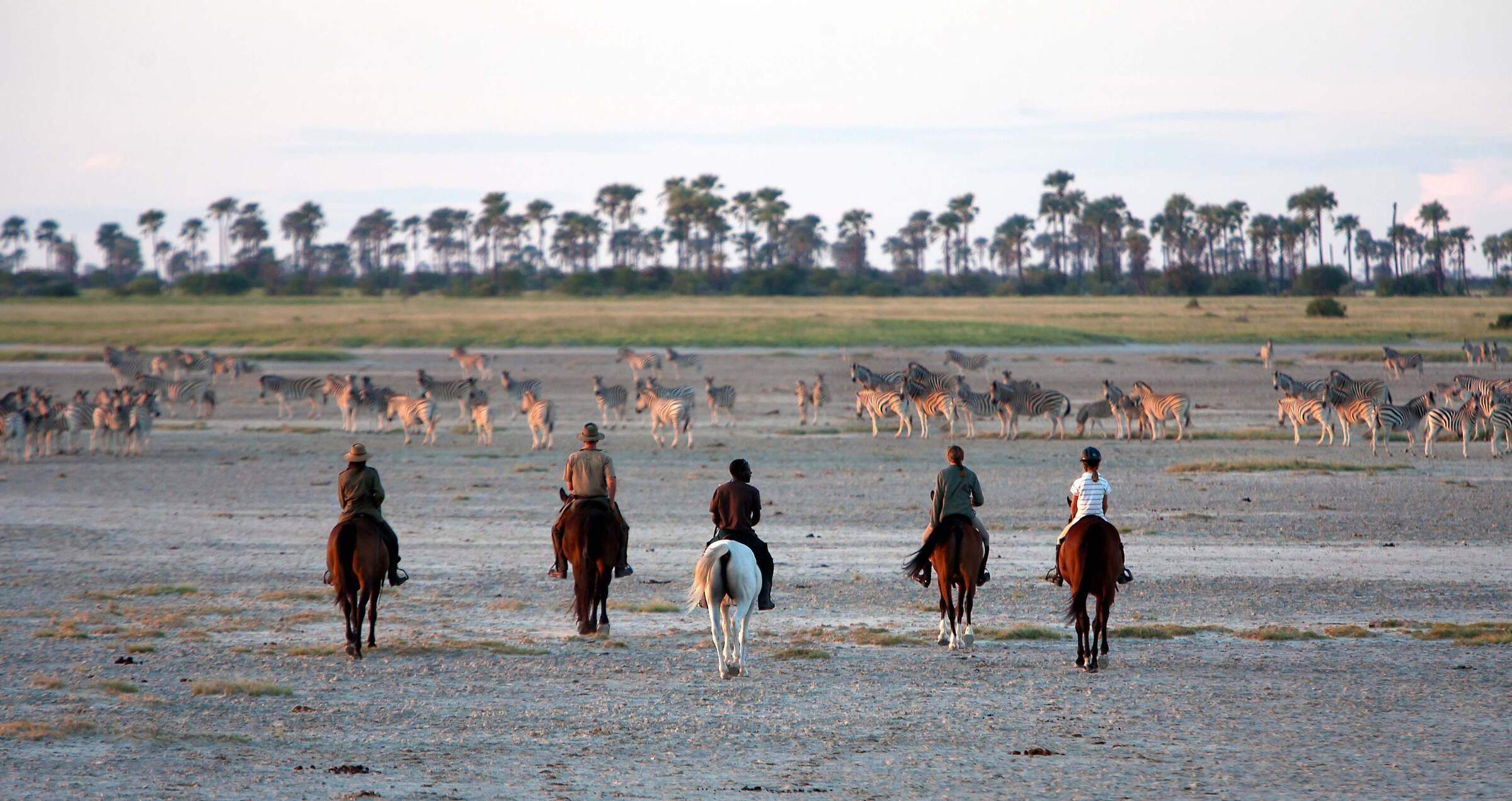
Riding holidays
Explore Africa's wilderness on horseback.
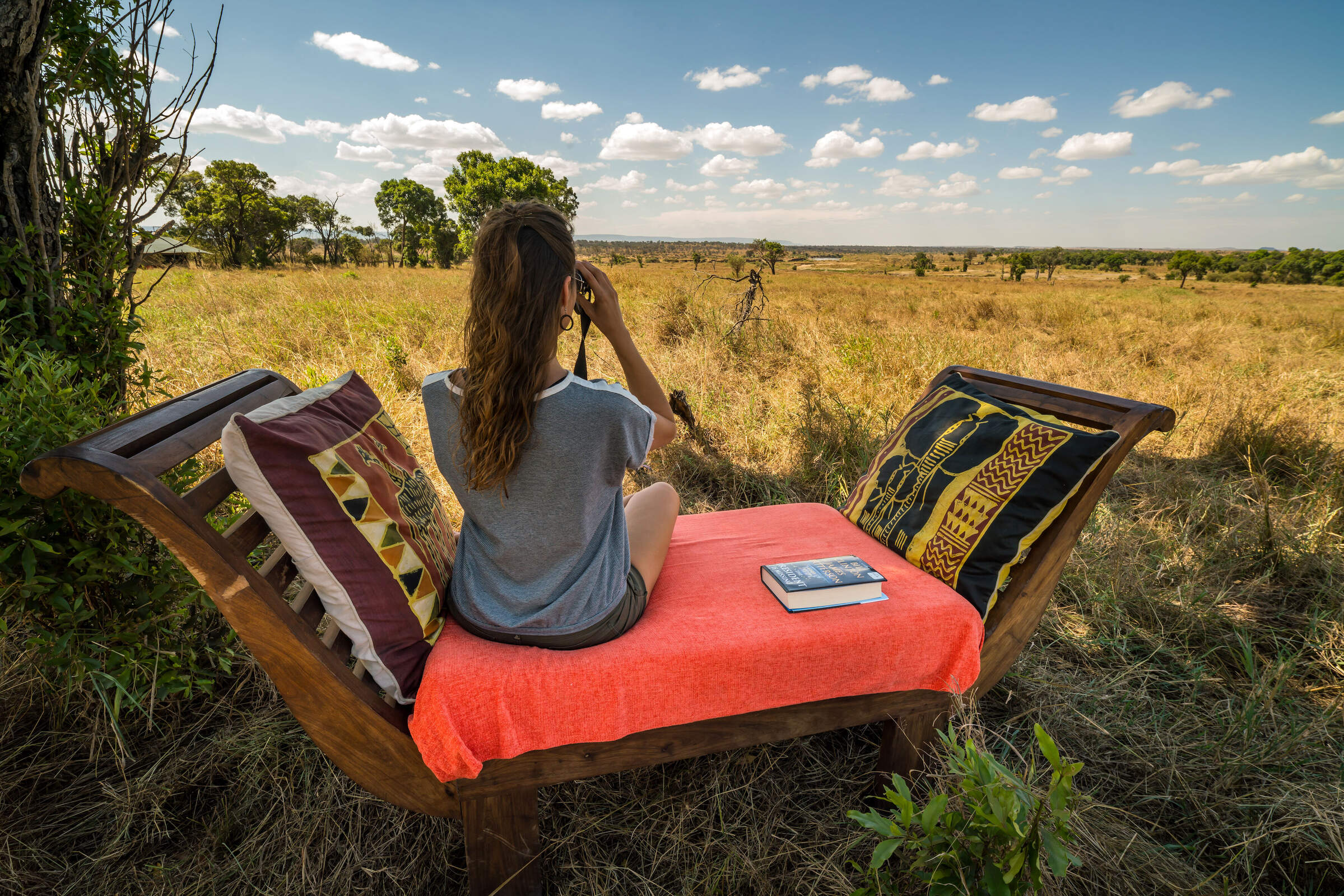
Solo Travel
Trip ideas ideally suited for a solo traveller.
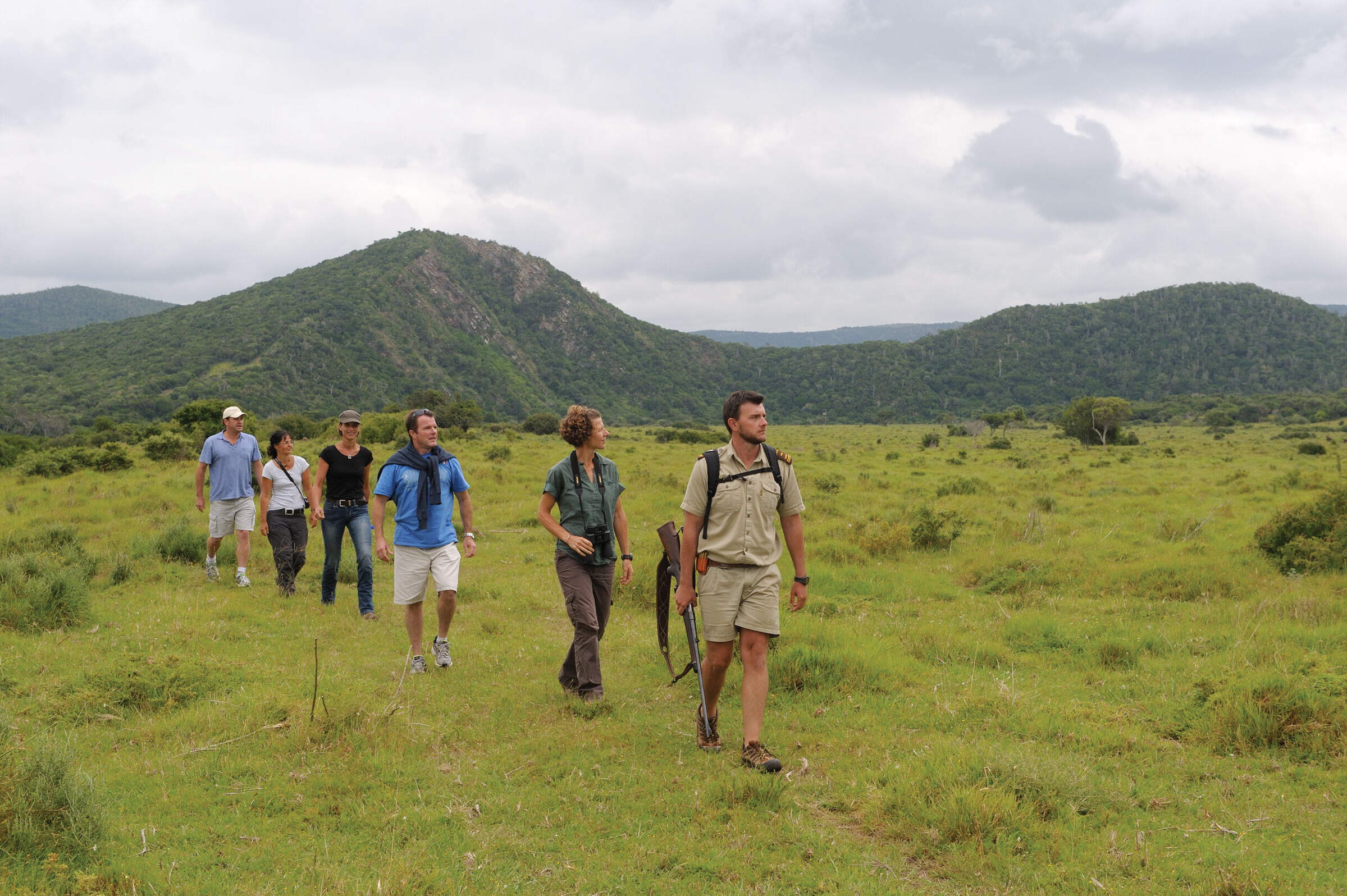
Explore Africa's most scenic trails on foot.
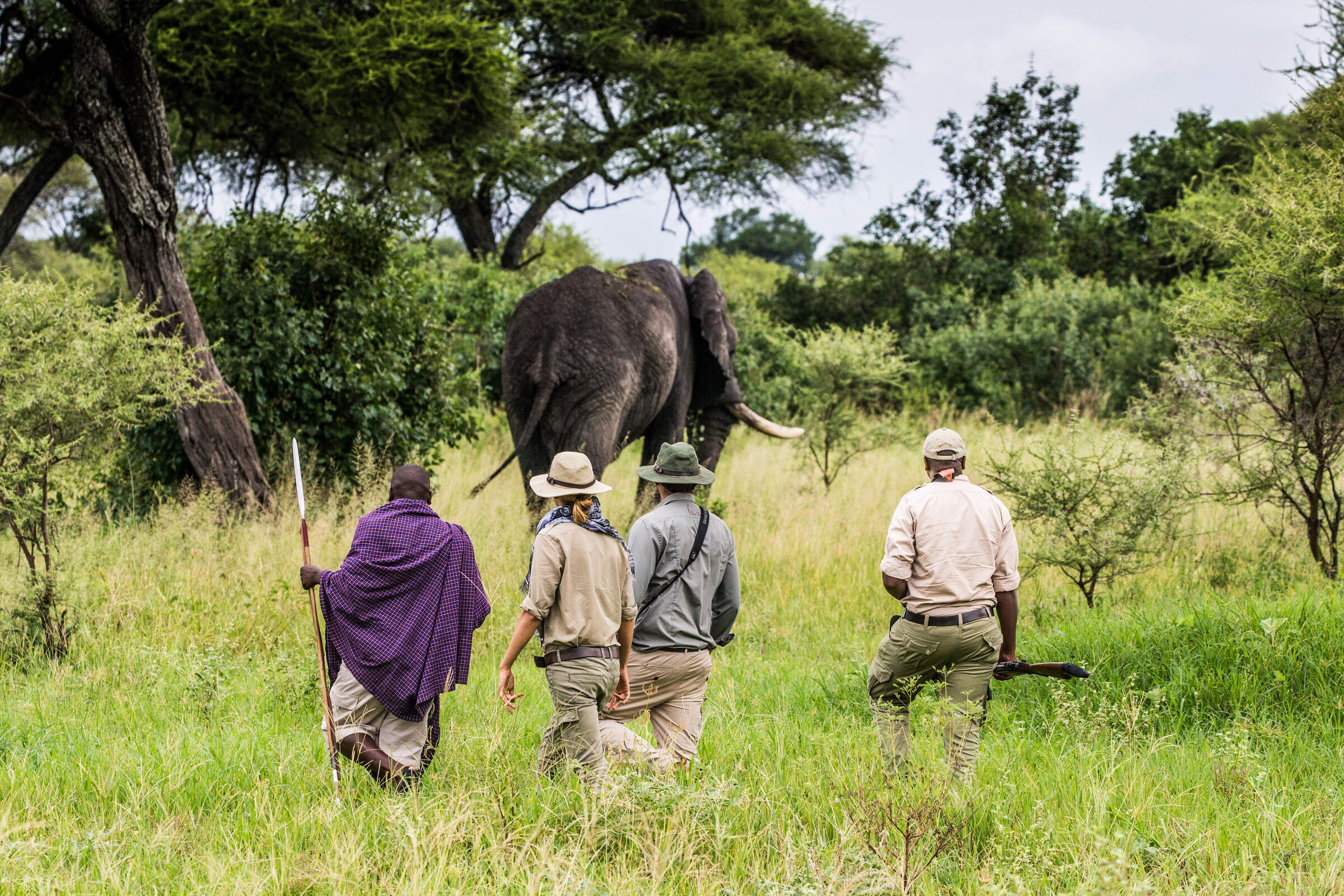
Walking safaris
Explore Africa's untouched wildernesses on foot.
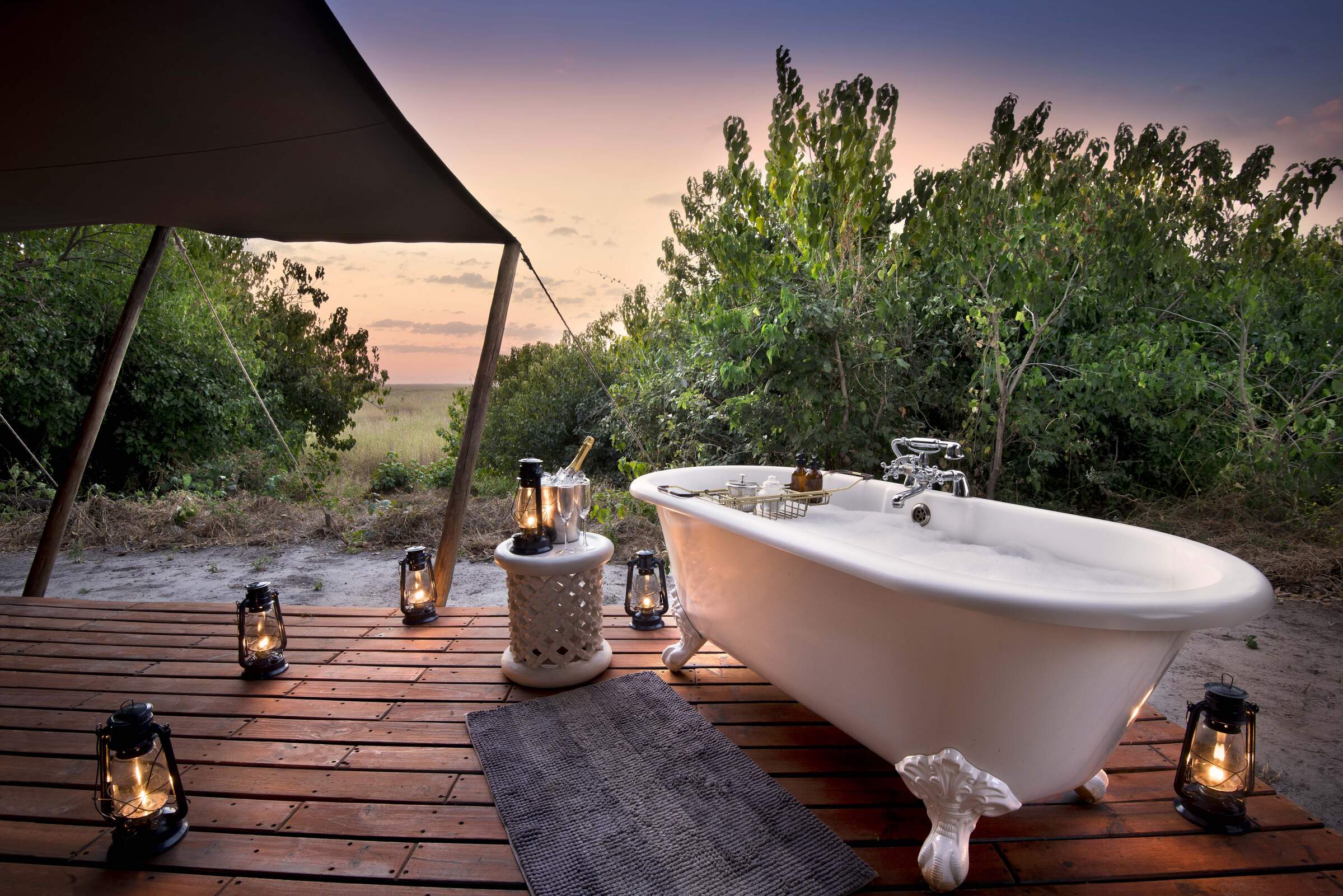
Wellness escapes in stunning locations
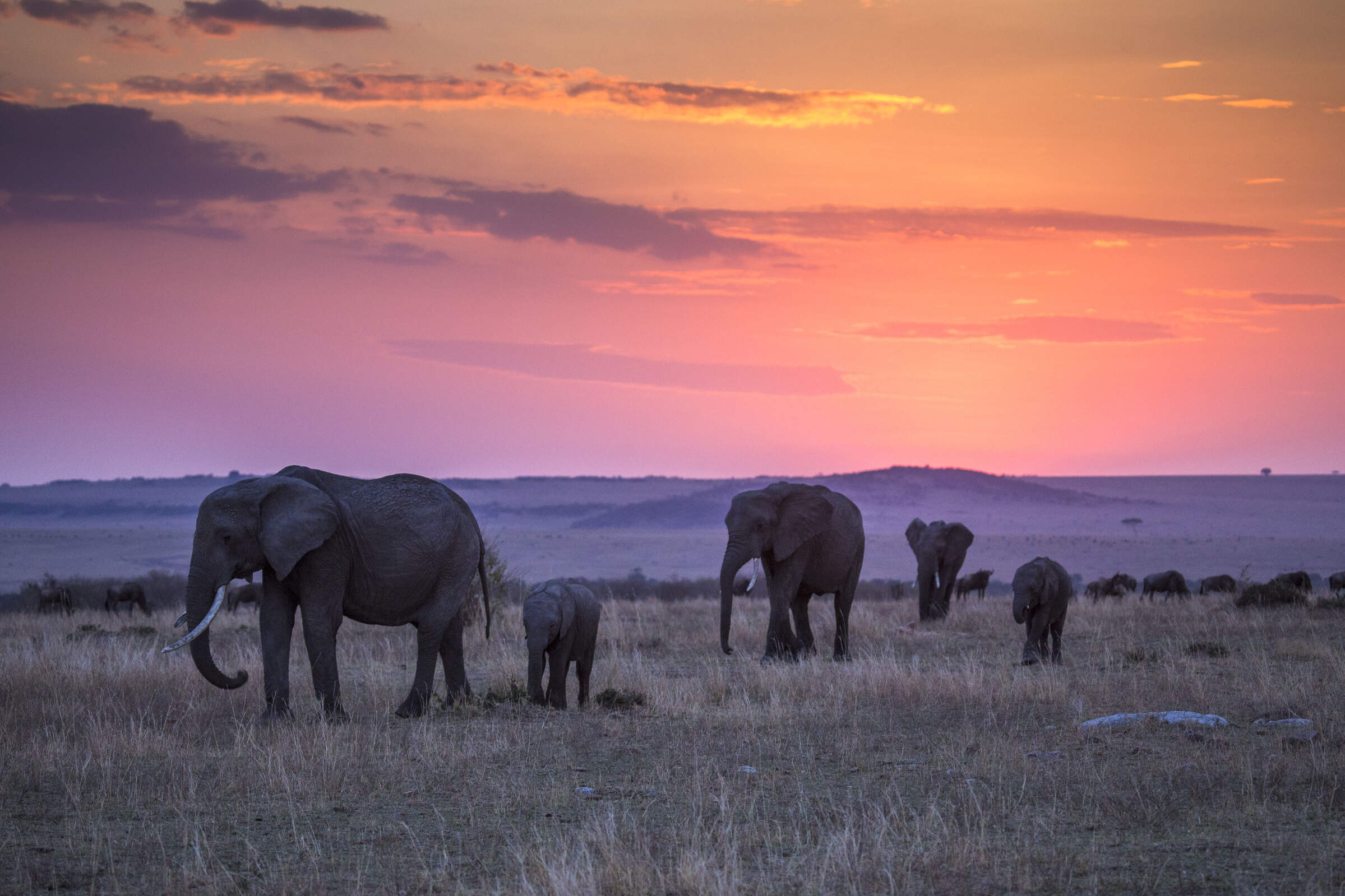
Wildlife safaris
These trips include hard-hitting game and fascinatingly elusive species alike, as well as superb guiding and a variety of diverse ecosystems.
Frequently Asked Questions
At Expert Africa we often get asked the same questions - understandably. It can be hard to imagine how it works when you mix lions and elephants with human beings, or how you'll manage charging your phone out in the bush. Here we try to provide some answers.
Is Kenya crowded with tourists?
Kenya is the country where photographic safaris originated ( safari is a Swahili word meaning “journey”) so it’s not surprising that some parts of it can be busy with visitors, especially in the peak holiday seasons. However Kenya’s visitor numbers are tiny relative to its size, and it’s nowhere near as touristy as big holiday destinations such as Mexico or Thailand. Expert Africa has decades of experience in visiting every corner of the country, including some really off-the-beaten-track locations. If you want small camps and peaceful wildlife-viewing we know how to make that happen for you.
Is it safe? What about being in an unfenced safari camp or an open-sided vehicle with animals around?
This is one of the hardest things to get your head around if you’ve not experienced a safari before: what stops the animals from attacking the people? The facts of this are disarmingly simple: very few species of Kenya’s magnificent megafauna are dangerous to people in normal circumstances. The wildlife tends to stay away from centres of human activity, and that includes unfenced safari camps. All such camps are patrolled, especially at night, by askaris (night watchmen or security guards), usually traditionally dressed and armed with alarming spears and big torches. Harmless grazers (for example impalas or zebras ) sometimes come into camp to munch on the lawn, but only solitary buffalos and elephants are considered bold enough and unpredictable enough to be worthy of serious concern and are always carefully monitored and ushered out of the camp if possible. After dark, you will always be accompanied by an askari when walking between your tent and the central area of camp. The big cats are not considered dangerous while you’re in a vehicle, and rarely come into camps. Hippos are certainly dangerous, but not unless you come between them and the water – not something that a walking guide would ever allow.
I’m not sure about camping. What are the tents like?
Back in the day, safaris were conducted with the kind of tents you might be familiar with putting up yourself; not any more (at least not for the most part). The vast majority of the tented camps in Expert Africa’s Kenya programme are permanent properties set in beautiful locations, with very large, fully furnished en-suite tents or chalets, usually set on a plinth or platform, often with a pleasant deck at the front equipped with chairs or loungers. Bathrooms, which may be solid constructions, are usually plumbed in and 24-hour hot water and electricity are the norm. The central area of the camp will include a comfortable lounge and dining area, and many camps have small libraries, gift shops, sometimes even a swimming pool. If all that sounds too much, then more rustic but still fully furnished and comfortable camps are still widely in use – please ask your specialist consultant to suggest examples of the kind of camp you’d like to stay in.
What plugs does Kenya use? Will I be able to charge my phone and batteries?
Wall sockets in Kenya take the square, three-pin plugs used in the UK (“Type G”). The standard electricity supply (220–240V) from Kenya Power and Lighting is unreliable, and most tented camps and lodges are not on the grid and generate their own electricity from solar panels, with some using backup generators. Increasingly, guest tents and rooms have 24-hour electricity and some provide USB sockets as well as plug sockets. Safari vehicles in some camps are also fitted with plug sockets. It’s a good plan to take a power bank and possibly an extension lead for convenience.
What about bugs and snakes?
If you like creepy crawlies , you may be disappointed to see so few. You do tend to have to look for them, and a bush walk will give you some opportunities to see the smaller fauna. On the other hand, if you – or a travelling companion – are horrified at the prospect of insects drawn to the lights at night, or of the smaller critters that certainly dwell in the bush, then you’ll be relieved to know that your accommodation will always be insect-proof and the afternoon turn-down service will usually include some diligent bug spraying.
Is staying in a safari camp less expensive than staying in a more hotel-like lodge?
Usually not. Safari lodges (essentially hotels in the bush) tend to work on a volume-driven model, whereas tented camps are usually smaller, more personal and more expensive.
What happens if you need to use the loo/have a comfort break while on safari?
Game drives typically last for around three hours, and driver-guides are very used to receiving requests to “mark your territory” at some point. If you stop for a bush breakfast or sundowner drink, the area will already have been judged safe for you to be out on foot. Otherwise, driver-guides will always stop for your comfort and if no suitable safe bush is available to hide behind, then “checking the tyres” at the back of the vehicle is another popular euphemism. Safari vehicles are equipped with toilet paper, shovel and hand sanitiser.
Expert Africa's other destinations in Africa
Expert Africa offers tailor-made itineraries to 12 countries in East and Southern and Africa. Click below to see where else we've been - and where you might choose for your next trip.
You might well consider Tanzania , which borders Kenya to the south. It's a good deal larger than Kenya, with a wide variety of national parks, but few conservancies.
Tucked between East and Central Africa lies Rwanda , with its outstanding opportunities to do walking safaris tracking primates in the forest-clad mountain parks, including to meet a family of mountain gorillas.
Or consider Zambia , which stands out for exceptional wildlife and intimate camps. Malawi , to the east, has little visited parks and the crystal waters of Lake Malawi.
Further south, Zimbabwe offers an experience which can be more rustic, but is enhanced by the quality of its safari guides. Botswana , too, typically offers excellent guiding and and the allure of the Okavango Delta.
For an entirely different kind of safari, consider Namibia . Its vast landscapes allow for self-drive adventures. The same applies in South Africa .
If you're thinking of pairing your safari with diving, snorkelling or seaside relaxation, consider Mozambique , Zanzibar or the Seychelles , all of which are outstanding options.
The choices are vast and varied, so contact Expert Africa to craft your perfect safari, wherever that may be.
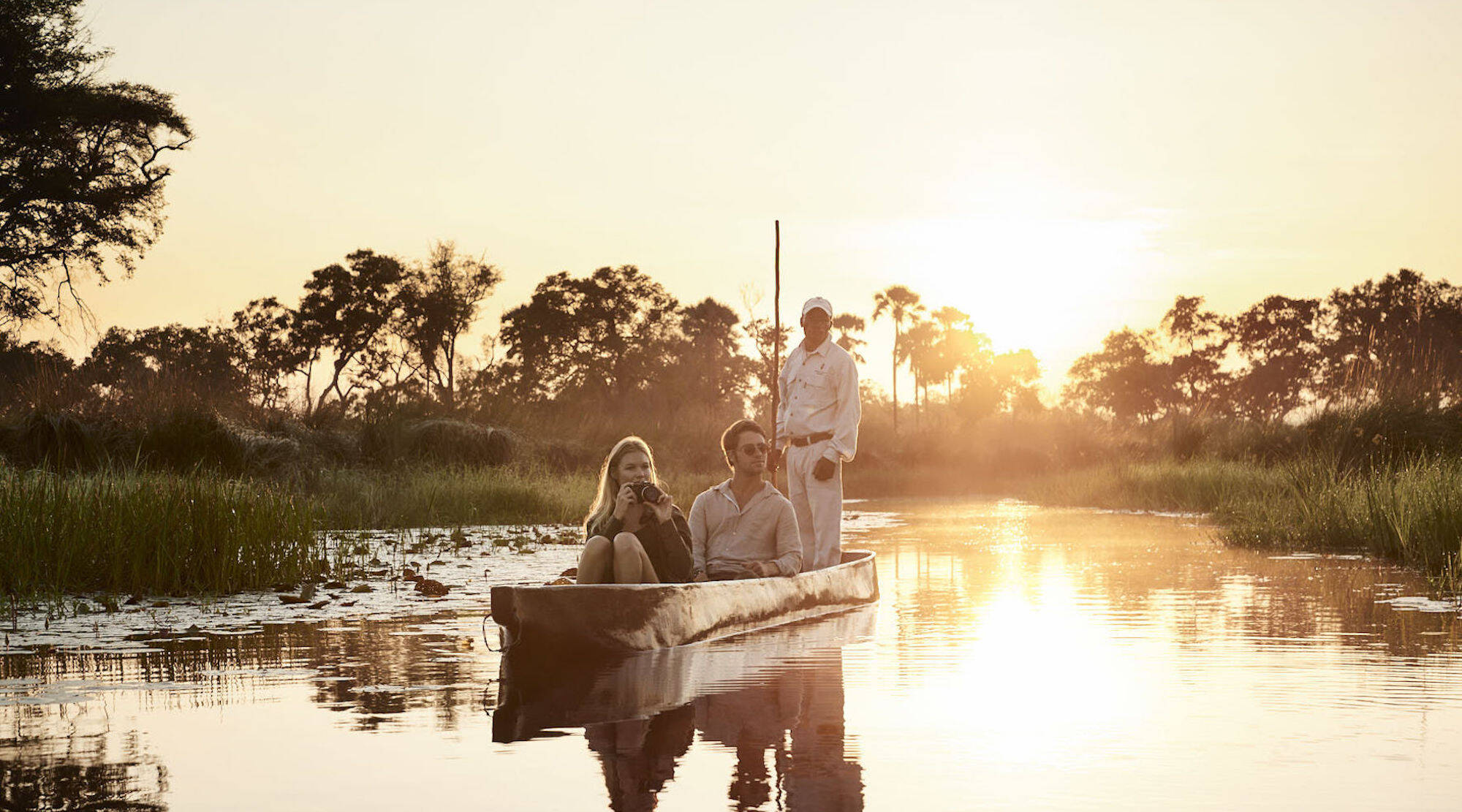
With big game, glamorous lodges and one of the greatest unspoilt wildernesses on Earth, Botswana is perhaps Africa's most exclusive safari destination.
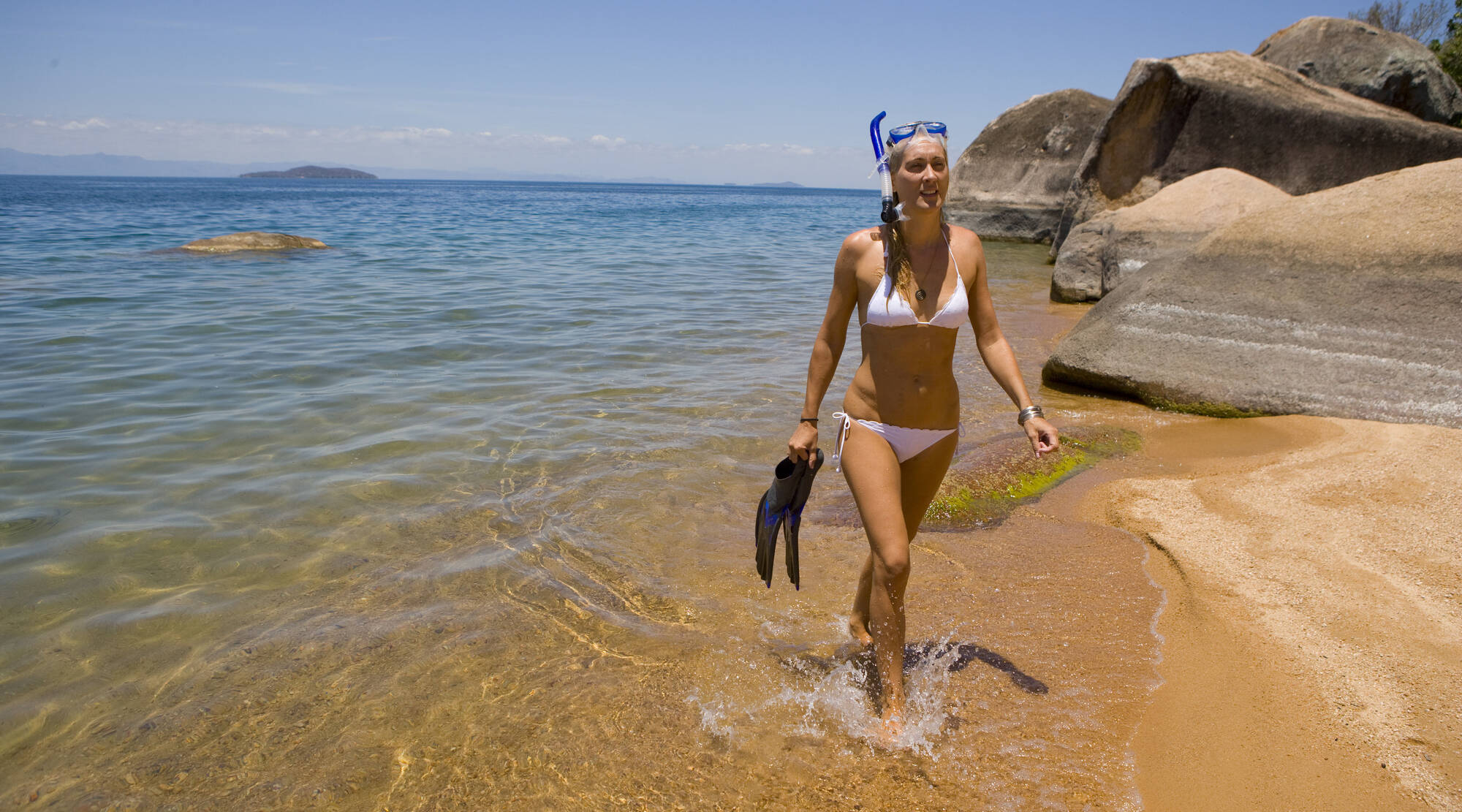
With tropical rivers, Rift Valley plateaux, the crystal-clear waters of Lake Malawi and a stunning lakeshore, Malawi invites relaxed exploration.
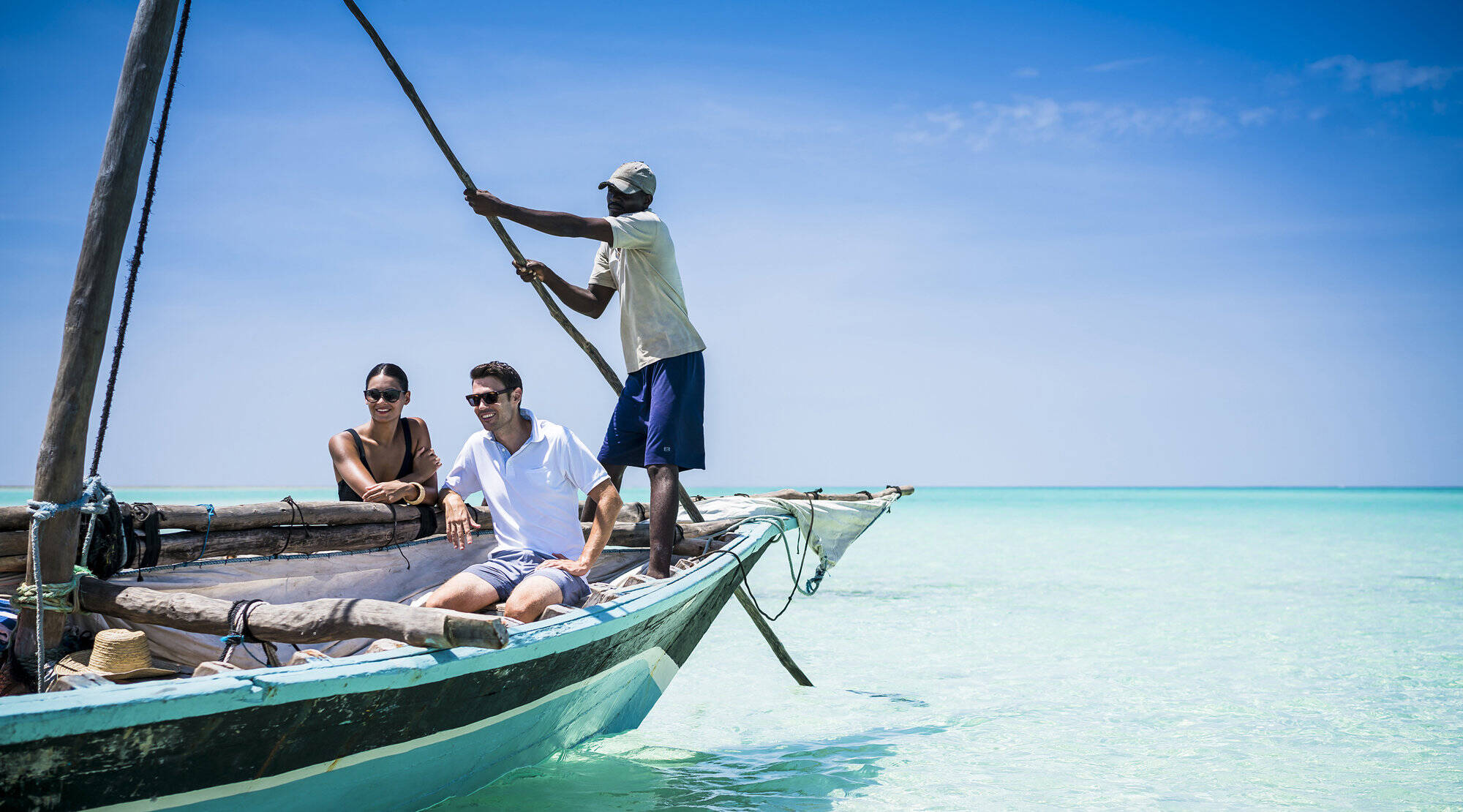
An ocean paradise protected by world-class marine parks, Mozambique’s idyllic archipelagos offer heavenly hideaways, outstanding diving and laid-back luxury.
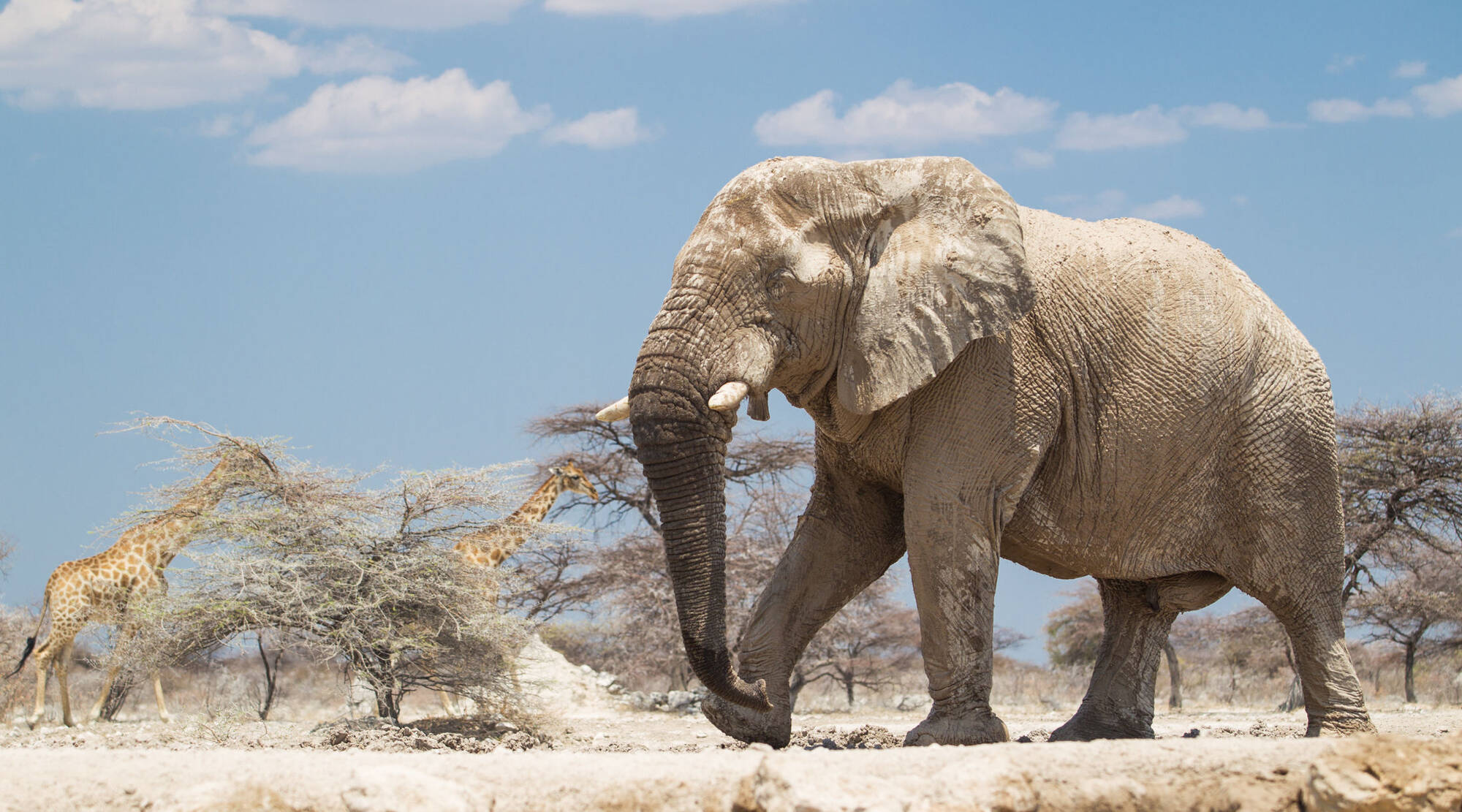
Spectacular scenery, diverse wildlife and a rich cultural heritage await discovery by air, with a guide or on a self-drive adventure.
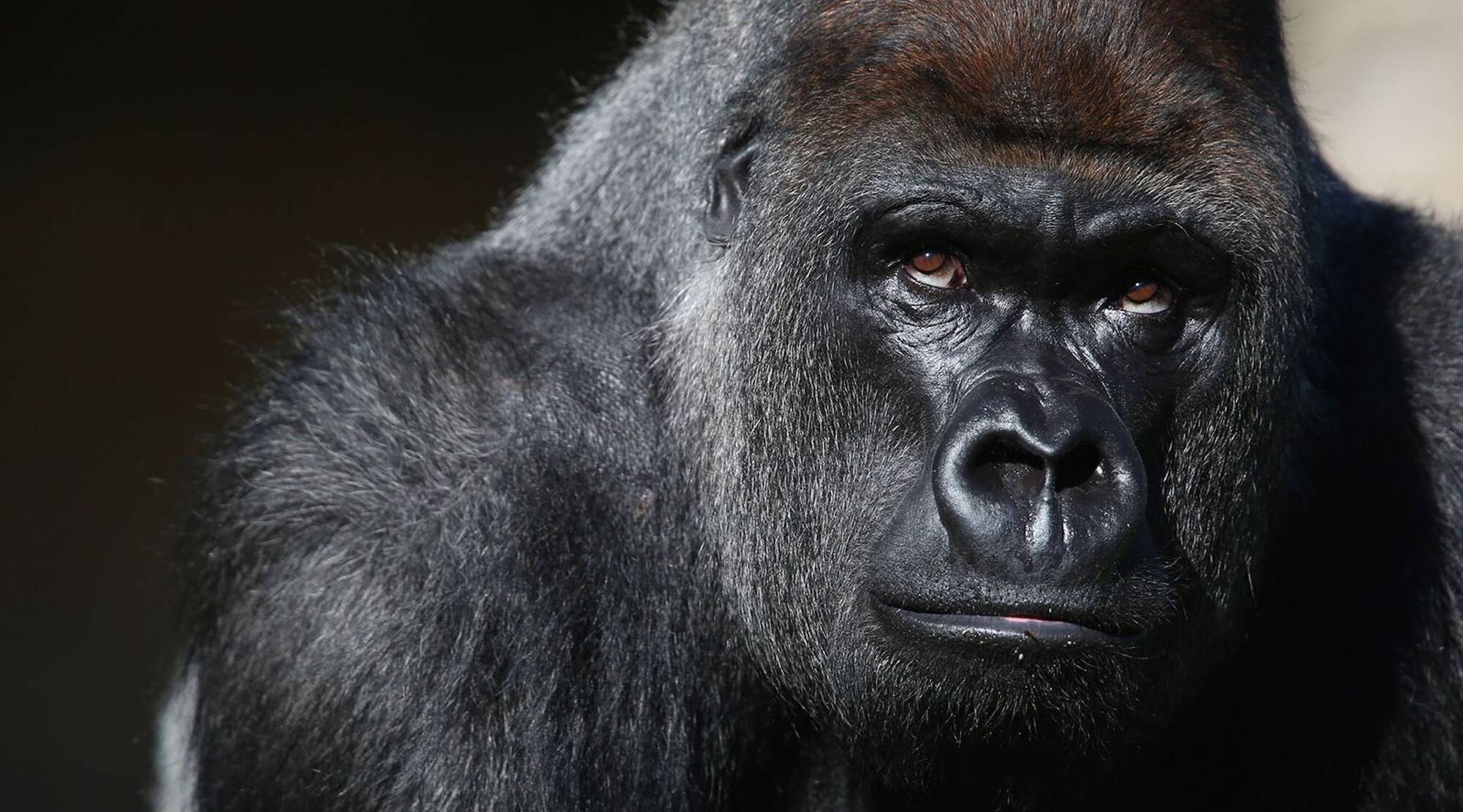
This small, mountainous country offers Africa’s best gorilla treks, other good safari options and a profound human element in every trip.
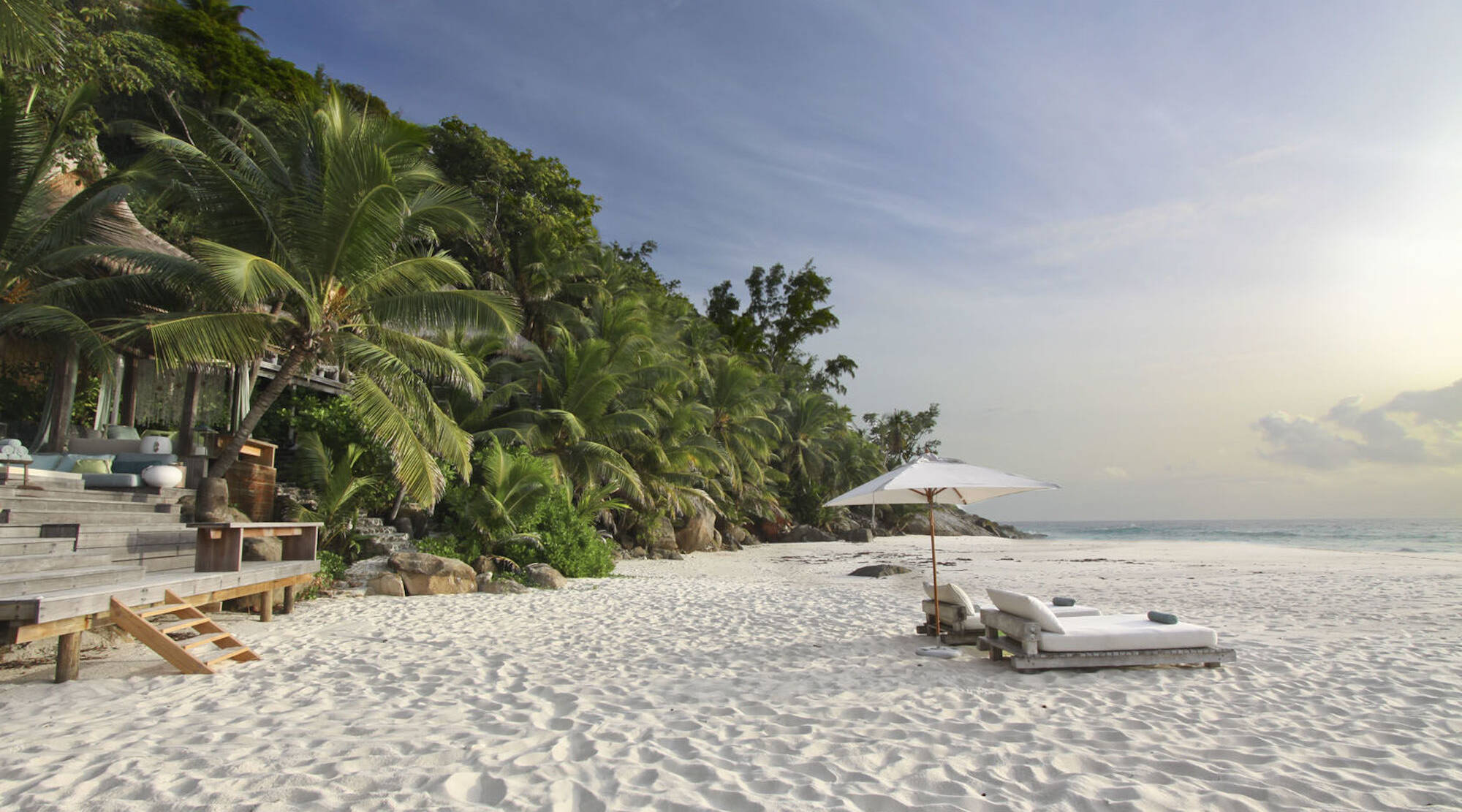
The ultimate glamorous getaway: the lush islands of Seychelles are enchantingly beautiful and stylish sanctuaries for both wildlife and ocean-lovers.
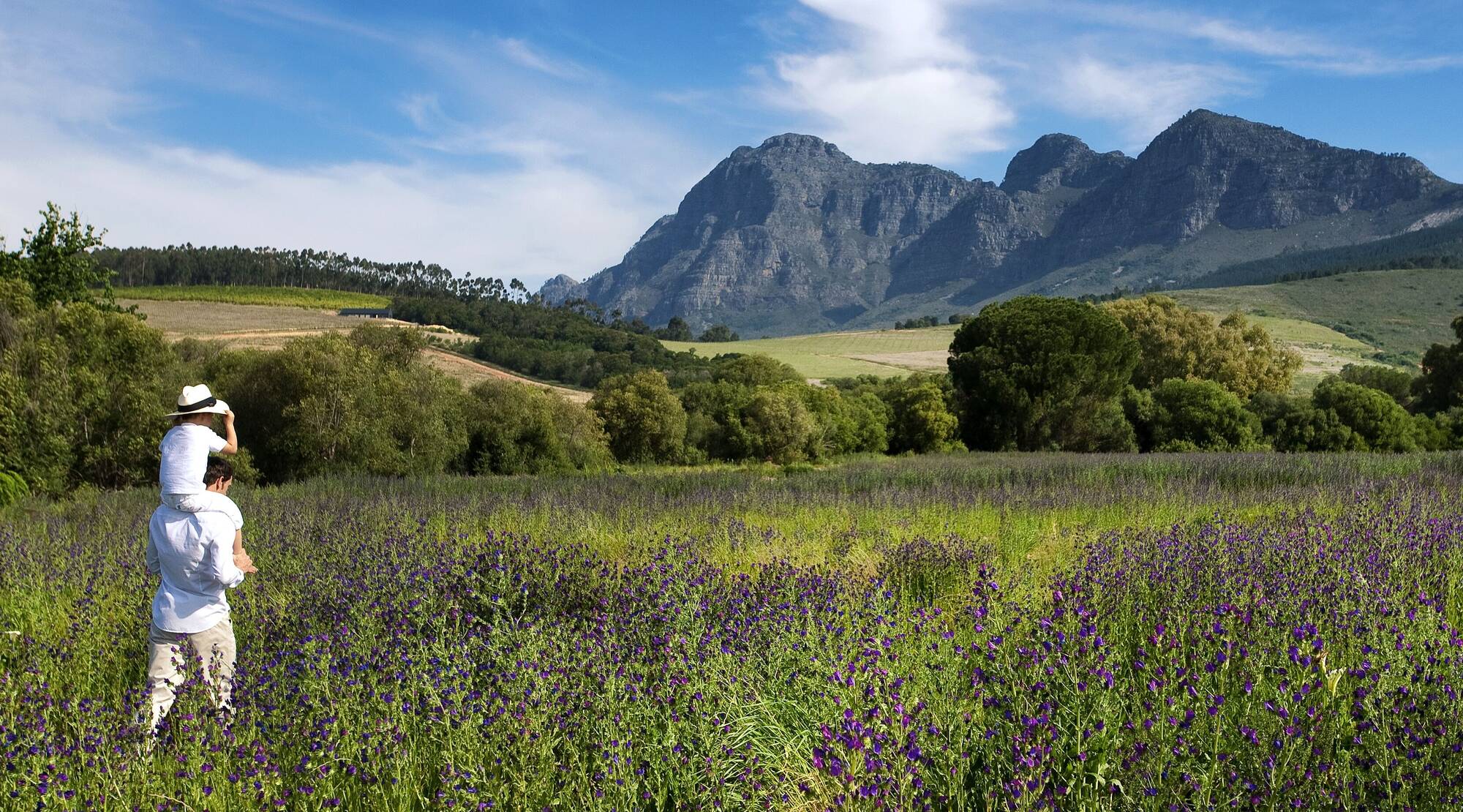
South Africa
Cosmopolitan Cape Town, world-class wineries, brilliant ‘Big Five’ safaris and spectacularly diverse scenery make South African holidays fabulously exciting and enjoyable.
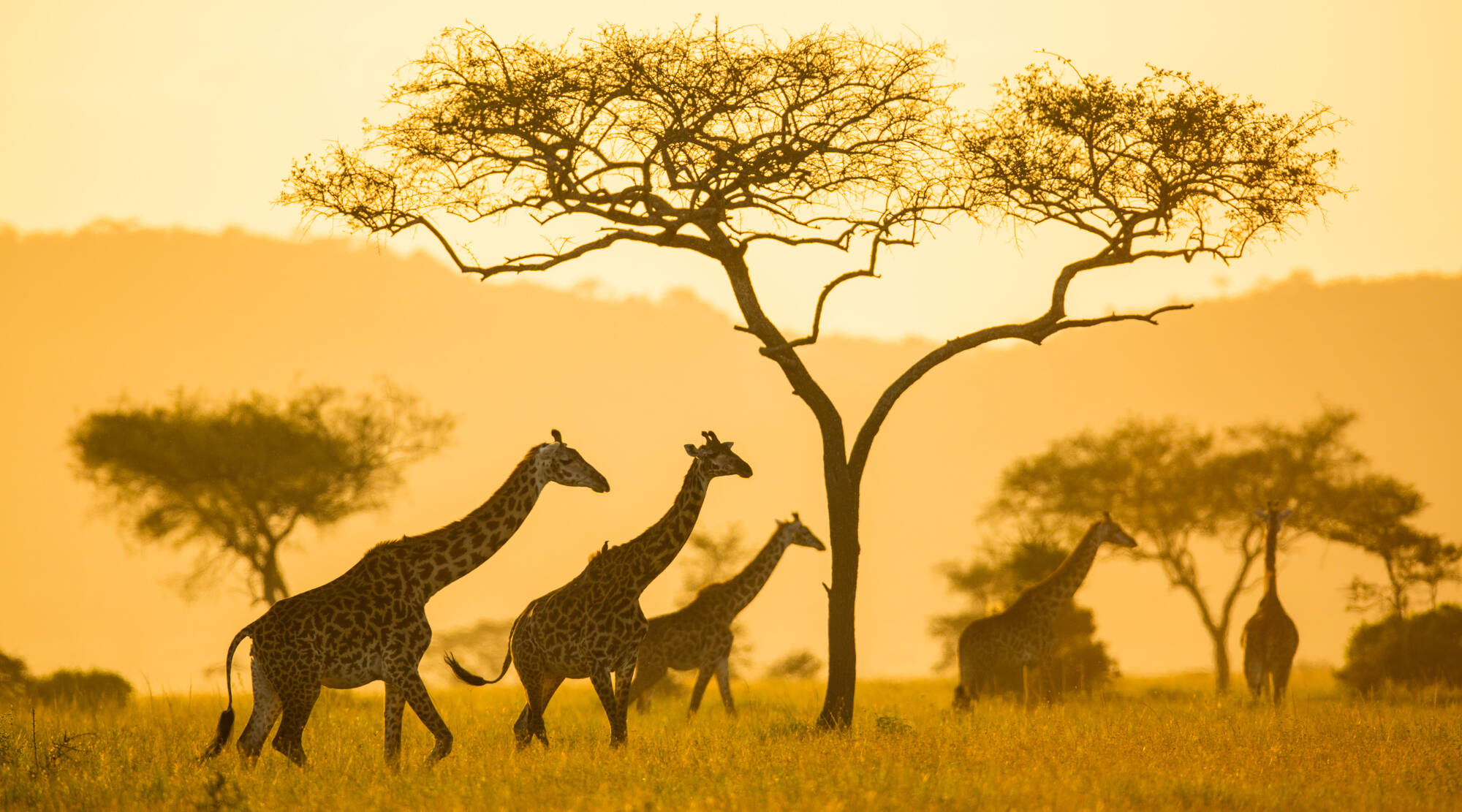
East Africa’s biggest country has a wide range of parks to explore and some of the Indian Ocean’s best island retreats.
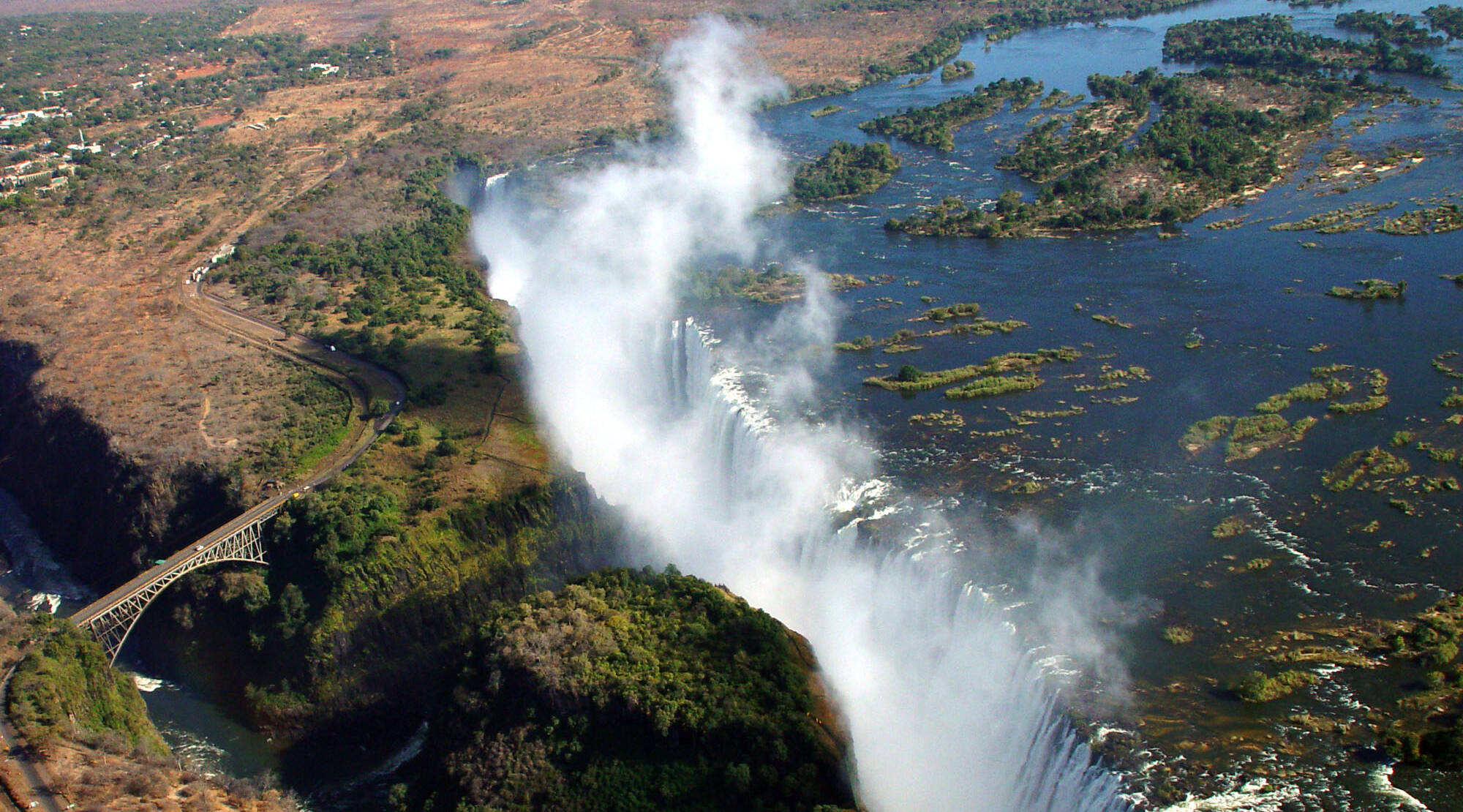
Home to walking safaris, exceptional wildlife, superb guiding and the mighty Victoria Falls, Zambia is Africa at its most alluring.
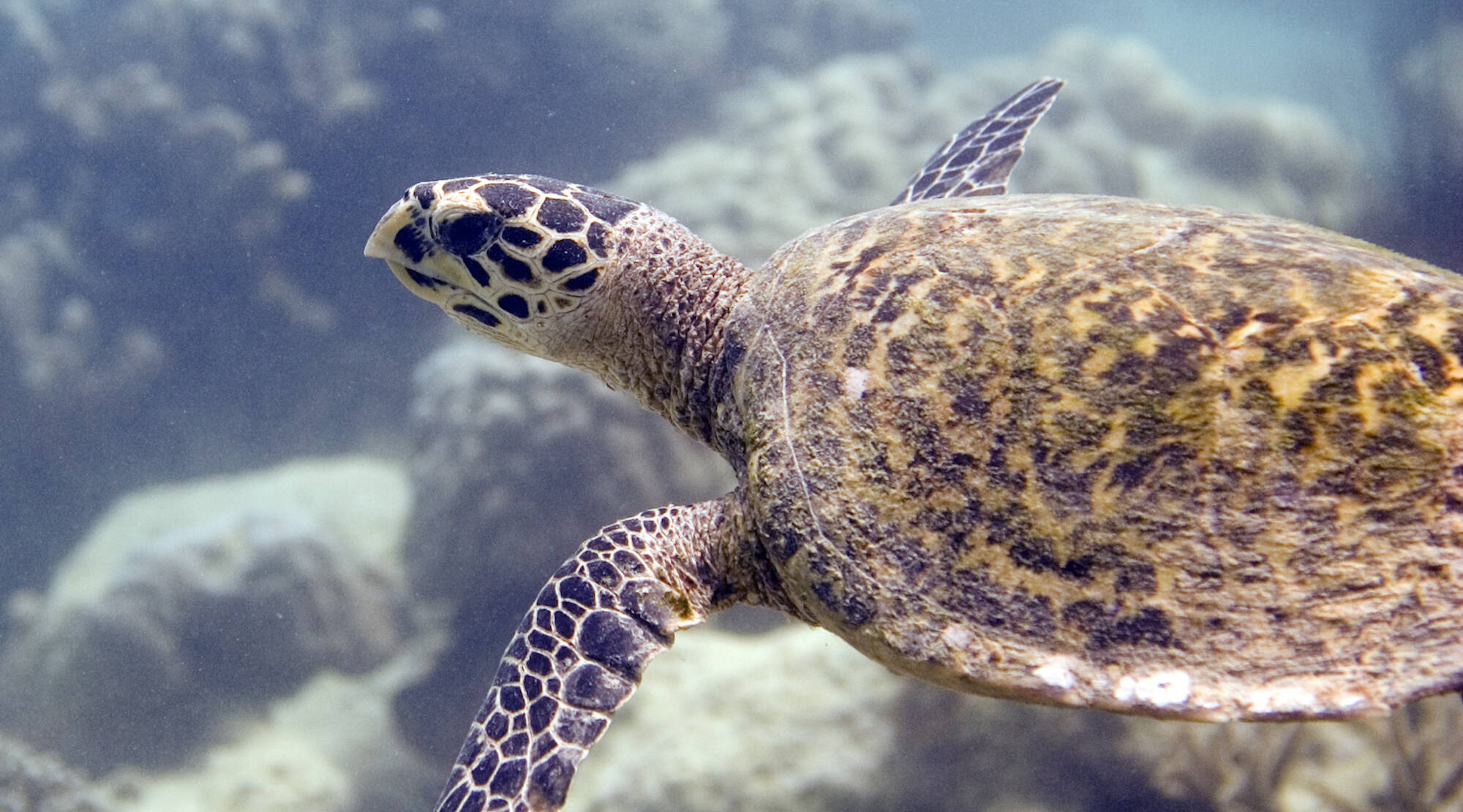
The ultimate Spice Island: Zanzibar’s mystique, marine life and chic beach retreats make it Africa’s most alluring archipelago.
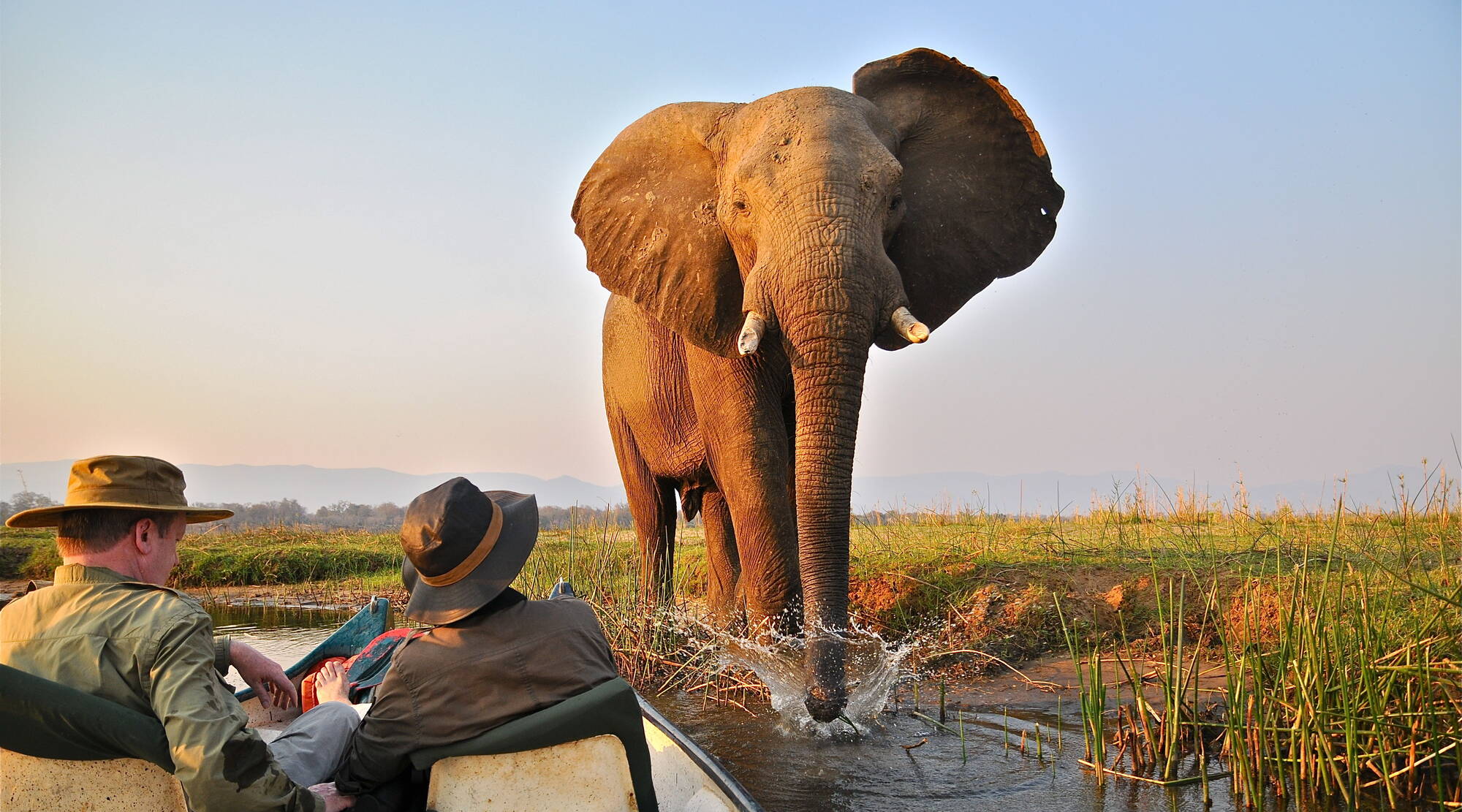
Stunning national parks teeming with game, plus Africa's finest professional guides and the spectacular Victoria Falls: Zimbabwe is enthralling.
Elephant safari in Linyanti
Login to Expert Africa
Sign in with password
Sign in with email link
New to Expert Africa? Create an account
Forgotten your details?
It's free & quick to set up
- Save your wish-list
- Send us an enquiry
- Pay online for your trip
- Subscribe to our newsletter
- Give us feedback on your trip
- Full site benefits of the site
Need some help? Talk to our team

A Guide to Planning an African Safari in Kenya
Written by dynie sanderson, africa | luxury travel | travel.
An African safari is the dream of a lifetime. Ensure it’s the best experience by reading our guide to planning an African safari.
Planning a 7-day safari in Kenya and choosing a safari outfitter was an exhilarating and meticulous process involving carefully considering various factors. To begin with, we had to decide on the ideal time of year for our adventure, considering the migration patterns of wildlife and the climate.
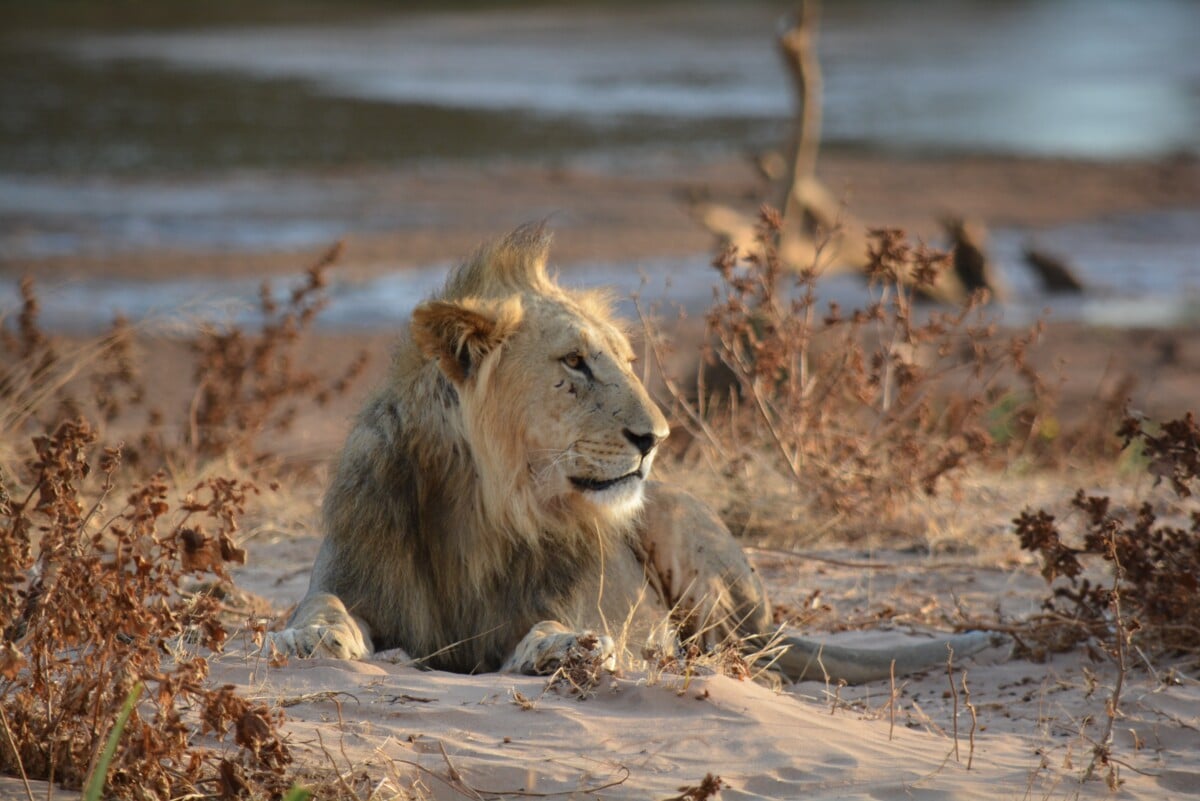
Lion in Samburu National Reserve. Photo by Dana Sanderson
After settling on the perfect season, under the guidance of our chosen safari outfitter, Safari Herd Holidays , we had to select the national parks, conservancies, and reserves we were interested in visiting as each offers unique wildlife and landscapes. The types of accommodations we would be staying in and how many days we were comfortable trekking in the wild were also factors.

Wildebeest Migration Masai Mara National Reserve. Photo © Giancarlo Bisone
An African safari is the adventure of a lifetime, promising unforgettable moments in the wild and the chance to witness Africa’s magnificent wildlife. However, a successful safari requires meticulous planning and choosing the right safari outfitter. In this guide, we’ll explore the process of planning an African safari and selecting a safari outfitter, focusing on Kenya, as this was our destination of choice.

Samburu National Reserve. Photo courtesy of Safari Herd Holidays
What's in This Article:
When to Start Planning
Choosing your safari destination should be at the top of your list in your planning process. The timing of your safari planning is crucial to securing the best options. While there is no fixed rule, planning at least a year in advance is advisable, especially if you intend to travel during the peak season.
Initial Research on Selecting a Safari Destination
Selecting the right safari destination is the first crucial step in planning your African adventure. Africa is a vast continent with numerous countries offering diverse wildlife experiences.

Sunrise in Masai Mara. Photo by Dynie Sanderson
Africa boasts 54 countries, but not all are known for their wildlife safaris. These nine countries are renowned as prime safari destinations:
- South Africa
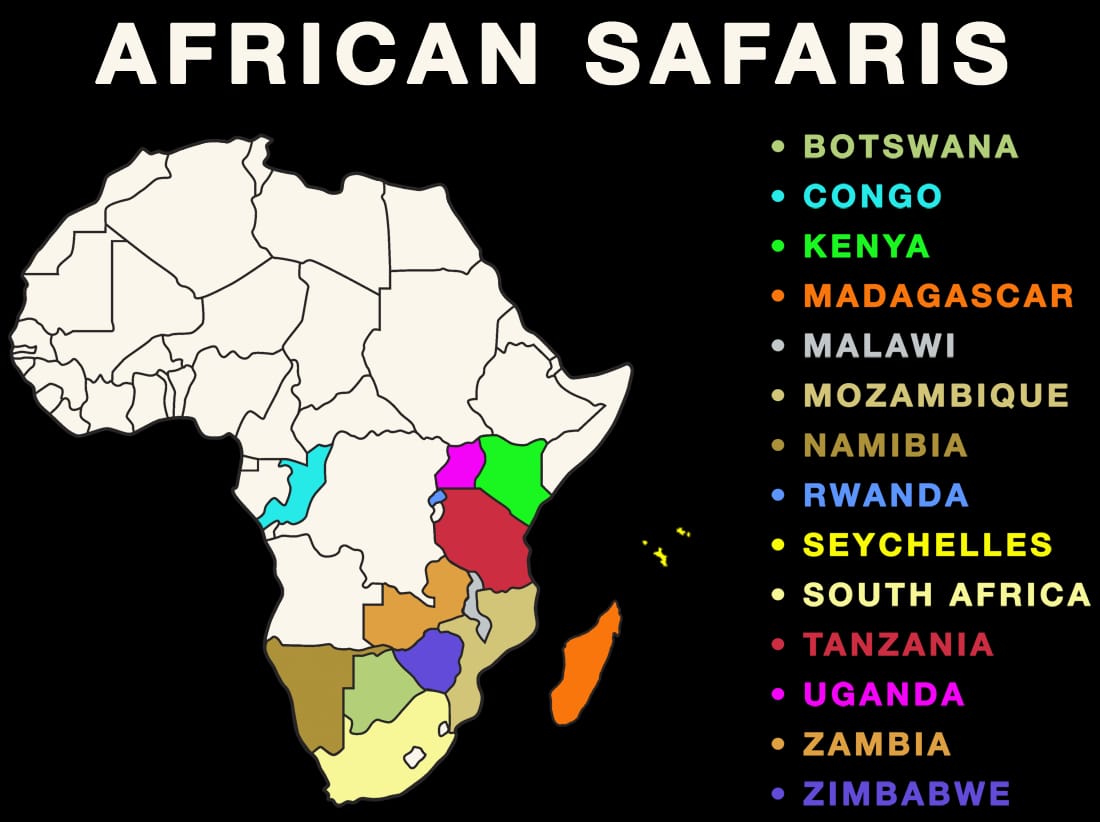
Safari Map. Photo courtesy Safari Herd
Among these countries, Kenya, South Africa, and Namibia are often considered the more affordable options for safari enthusiasts.

Giraffes in Kenya. Photo Photo © Giancarlo Bisone
Conduct Research
Begin by conducting thorough research to understand the different safari destinations and what they offer. Dive into travel books, websites, YouTube videos, and social media to gather information.

Seek Recommendations from Fellow Safari Adventurers
Reach out to friends, colleagues, or fellow travelers who have embarked on similar African safari journeys. Their insights and recommendations on where to go and what to do can be invaluable.
Consider Your Budget
Determine your budget for the entire trip, including flights, accommodations, safari packages, and other expenses. Keep in mind that some countries are more budget-friendly than others.
Choose a Safari Outfitter
Begin to research safari outfitters a year ahead to gain a comprehensive understanding of your options. There are so many safari outfitters that it can be daunting to pick the safari planner for your specific travel desire, dates, and budget.
Your safari planner can take it from there if you have already chosen your safari destination and dates. Or if you are not quite sure of which safari location to choose, your outfitter can also make recommendations. You will find them helpful in guiding you to set up the perfect itinerary. Most safari companies have a wide selection of options for different safaris, styles, and pricing all over Africa. You can go with one of their set safari packages or have them personalize it for you, which is what we ultimately did with Safari Herd Holidays.
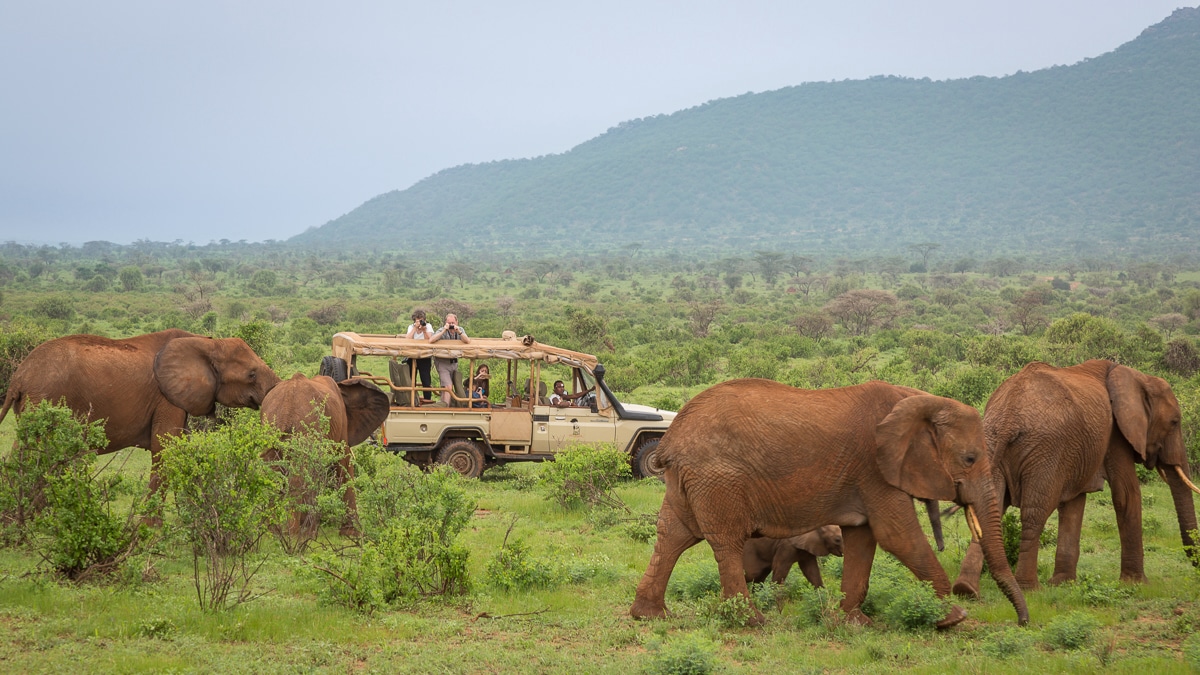
Samburu National Reserve. Photo courtesy of Safari Herd
These were important steps for us in the process:
- Conduct Extensive Research . Begin by researching safari companies that operate in your chosen destination for your African adventures. Seek recommendations and read reviews to gauge their reputation and offerings. Look at the various packages the different operators offer, as it will give you a better idea of what they can customize for you.
- Amenities and Inclusion . Determine the amenities and services included in the safari packages. Most safaris typically include transportation, accommodations, guided tours, game drives, meals, and some beverages. Extras like balloon rides, spa treatments, premium wines and liquors, and tips are usually not covered.
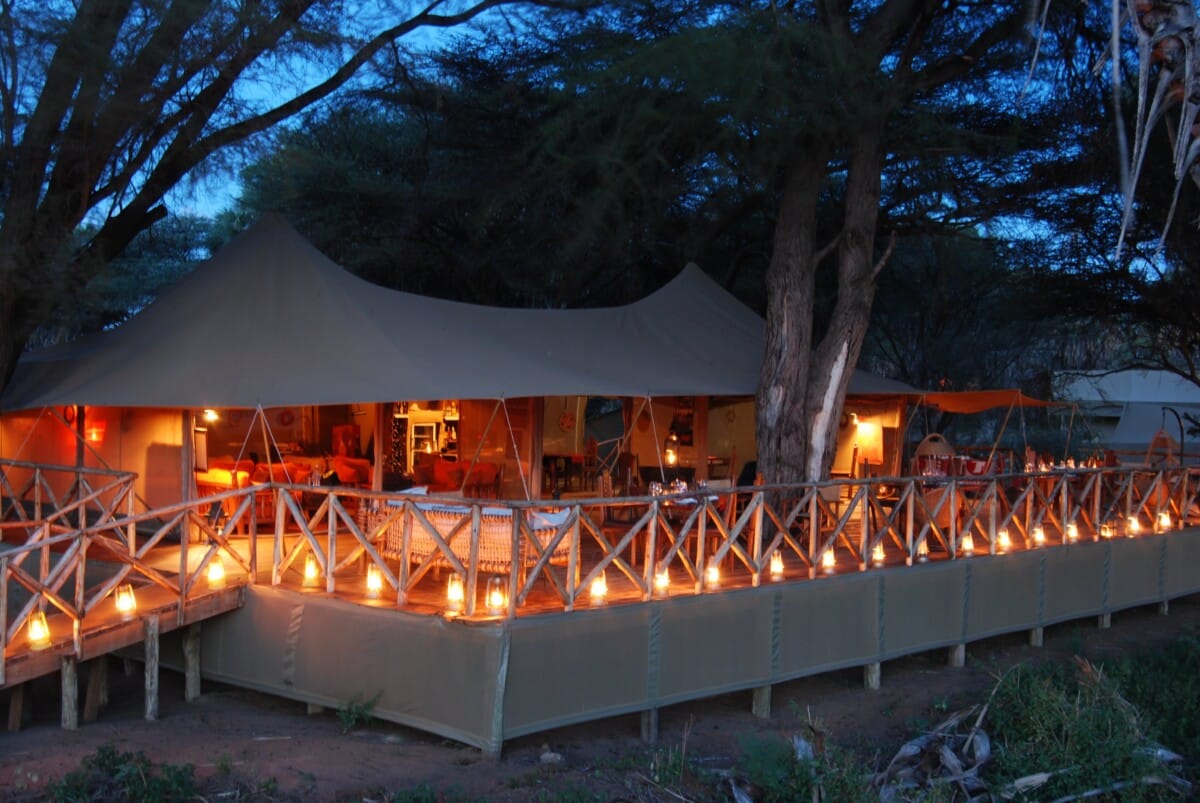
Main Lodge Elephant Bedroom Camp Samburu National Reserve. Photo courtesy of Safari Herd
- Flight Logistics . Consider your flight logistics and how they align with your safari plans. Ensure you have your flights secured before finalizing your safari dates.
- Customization . Work closely with the safari outfitter to customize your safari experience based on your preferences and budget.
- Budget Considerations . Establish your budget and choose a safari outfitter that offers a package that aligns with your financial plans.
- Destination Expertise . Opt for a safari outfitter with extensive knowledge of your chosen destination. They should help you create an itinerary that maximizes your wildlife encounters.
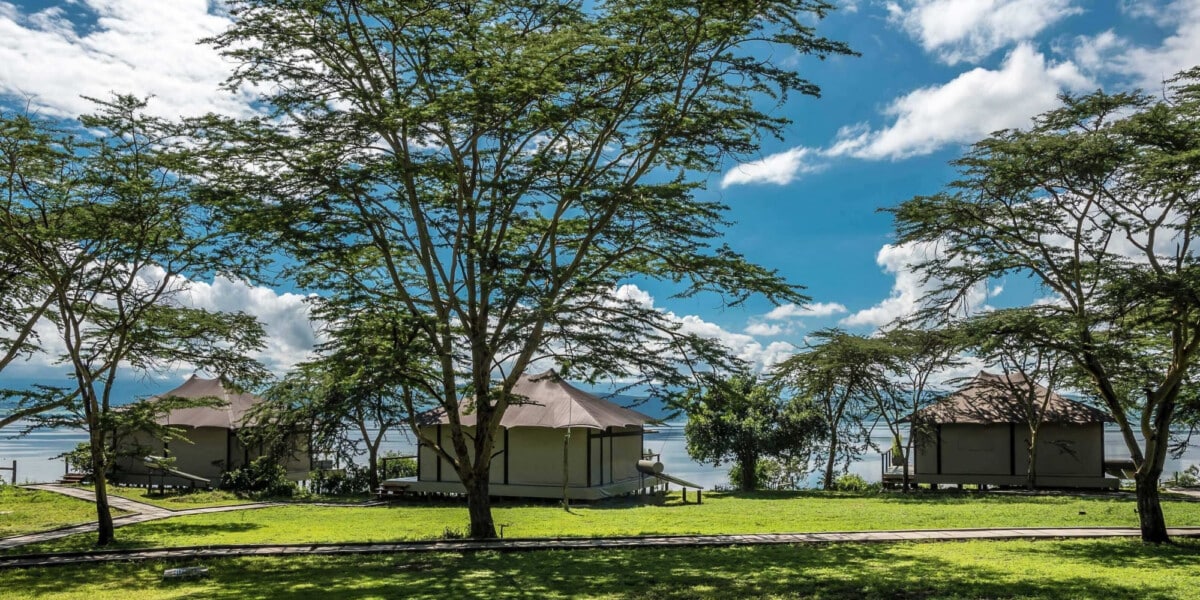
The Cliff Lake Nakuru Camp. Photo courtesy Safari Herd
Wildlife Sightings in Kenya Were a Big Part of Our Choice
After extensive research on the numerous safari regions available in Africa, we settled on Kenya as our safari destination. Kenya offers an array of diverse landscapes, incredible wildlife, and convenient access through Nairobi, the capital city. Choosing your destination will also help you to narrow down your options when selecting a safari outfitter. Safari Herd Holidays offers several safari selections in Kenya .
Kenya is the origin of safaris and will likely deliver some of the best African safaris. The standards of service are high and range from lavish luxury, colonial lodges, contemporary boutique hotels, and authentic tented camps. Masai Mara is a top pick as it provides an abundance of wildlife, such as the Mara’s Big Five—lion, leopard, rhinoceros, elephant, and African buffalo.
The Masai Mara National Reserve and Samburu National Reserve in Kenya are known for their large populations of big cats, hippos, the rare black rhino, elephants, zebra, giraffes, and spotted hyenas. The abundance of wildlife led us to choose Kenya as our destination.
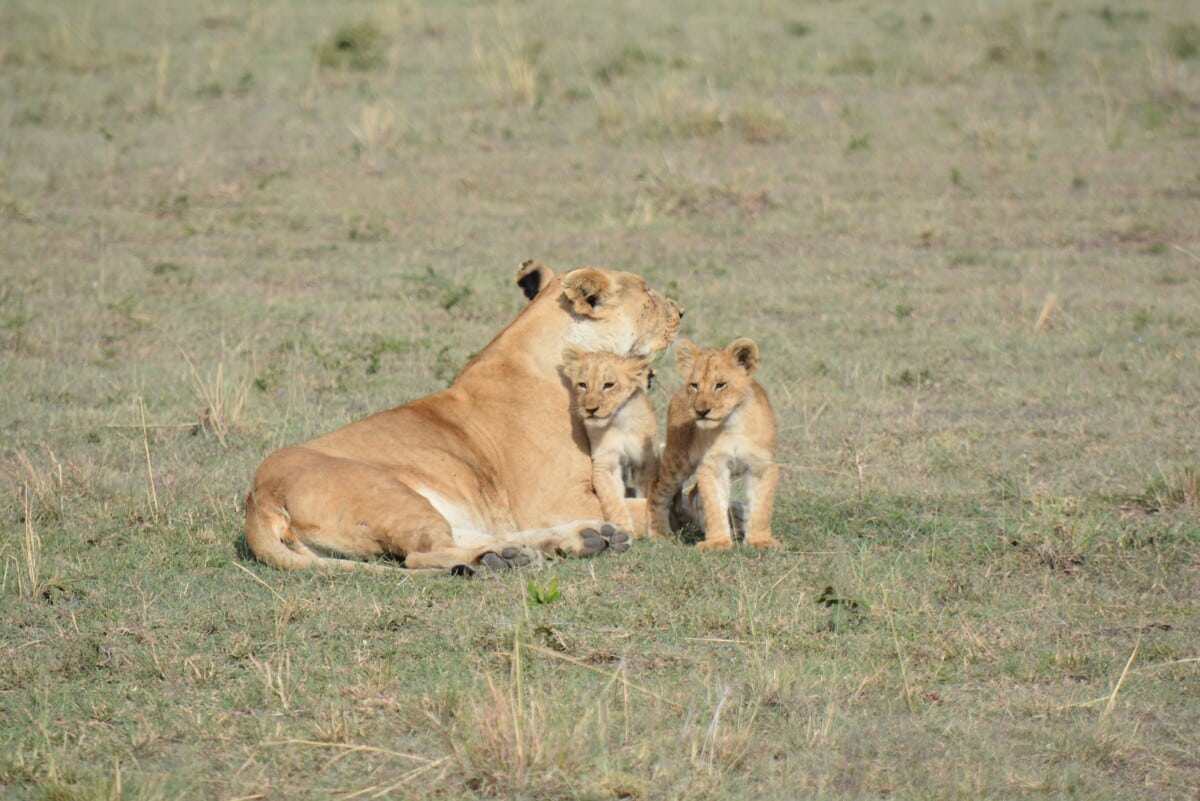
Lioness and her cubs in Masai Mara. Photo by Dynie Sanderson
Locking in Your Destination and Travel Dates
Once you have your destination and your outfitter, it’s time to lock in your travel dates and make final arrangements.
Safari Season Dates
Our first step was to determine the best time to travel. When did we want to travel, and when are the best months to go on safari? What is the high season, and what is the low season in Kenya?
High or Peak Season runs from May to September. The weather is colder and drier during the peak season. You will find the highest rates during that time and must book at least a year in advance.
The Low or Green Season runs from March to June and October to December. During those dates, it will be a bit hotter, and there will usually be more precipitation.
The best time for a safari in Kenya is September to October and late December to February. The best weather is in February and September, while the worst is in April and May. Some lodges close down in high rainfall areas.

Black rhinoceros in the Samburu National Reserve. Photo courtesy Safari Herd Holidays
Flight Bookings
Book your flights as early as possible to secure the best availability, particularly if you plan to use frequent flyer miles. If you plan to use airline miles, book at least nine months out, as there are limited award travel options, particularly if you want to travel in business class. Check with your safari outfitter, as they may have international travel packages.
Inter-Africa Travel
Also, if you plan on traveling to other countries while you are in Africa, most safari companies offer to set up your inter-Africa air travel for you. As we were also traveling to Victoria Falls and Cape Town, South Africa, our travel coordinator made these flight arrangements for us well in advance to secure our spots.
International Flights into Africa
Once your International flights are confirmed, choose the beginning of your safari dates based on the day of your arrival in Africa. If you travel long distances from the United States, take a day or two to explore Nairobi, Kenya, for example, before commencing your safari sojourn. The days out on safari can be long and grueling, as you may go on several safari treks daily. The last thing you want to do is start your safari adventure exhausted and jet-lagged.
Our Kenya Safari with Safari Herd Holidays
Safari Herd’s flexibility and attention to detail were key factors in our decision-making process. Their safari expert’s communication provided extensive safari particulars and personalized touches and presented an excellent experience.
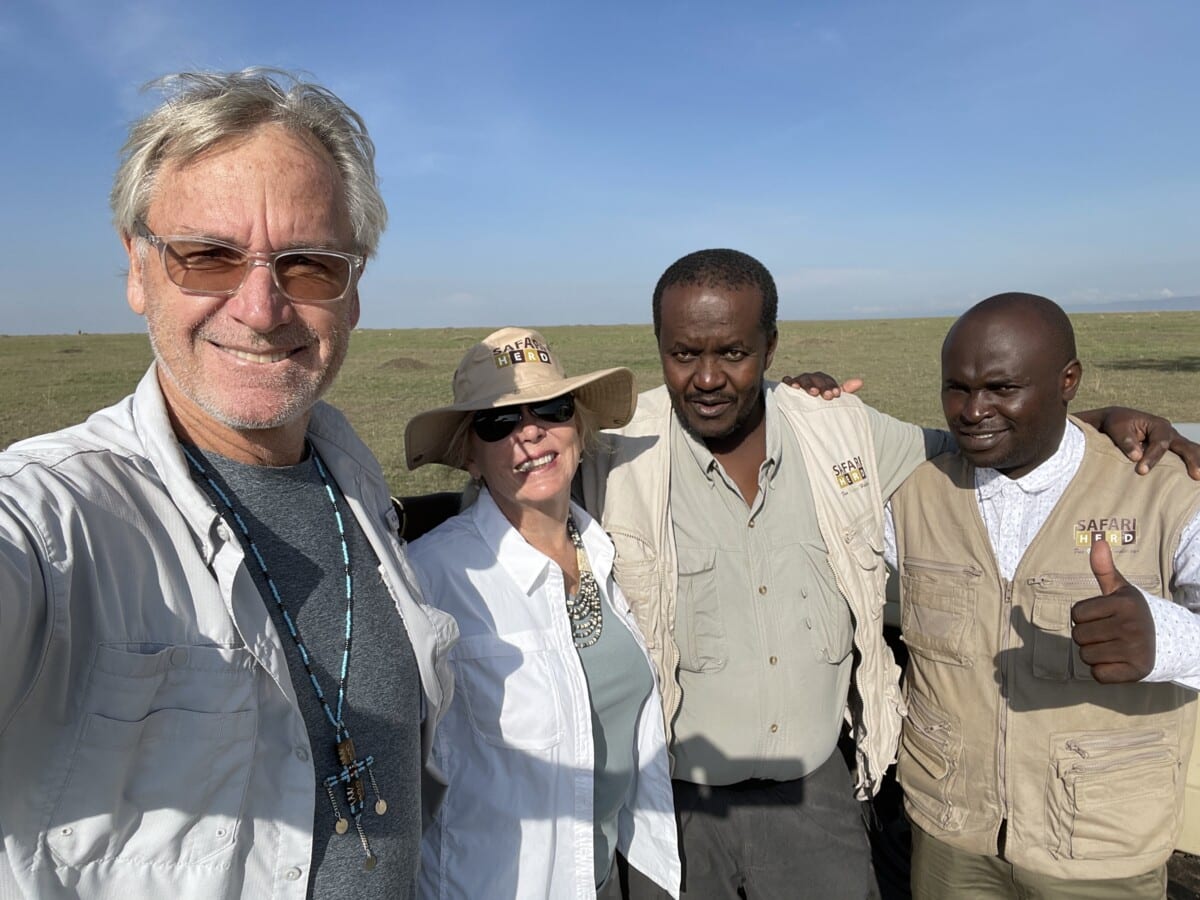
Exploring the Masai Mara with our team from Safari Herd Holidays. Photo by Dana Sanderson
Here are some additional tips to help you choose the right safari outfitter:
- Compile a List . Begin by compiling a list of potential safari outfitters based on your research, recommendations, and reviews.
- Read Reviews . Thoroughly read testimonials and reviews from previous clients to gain insights into the outfitter’s performance.
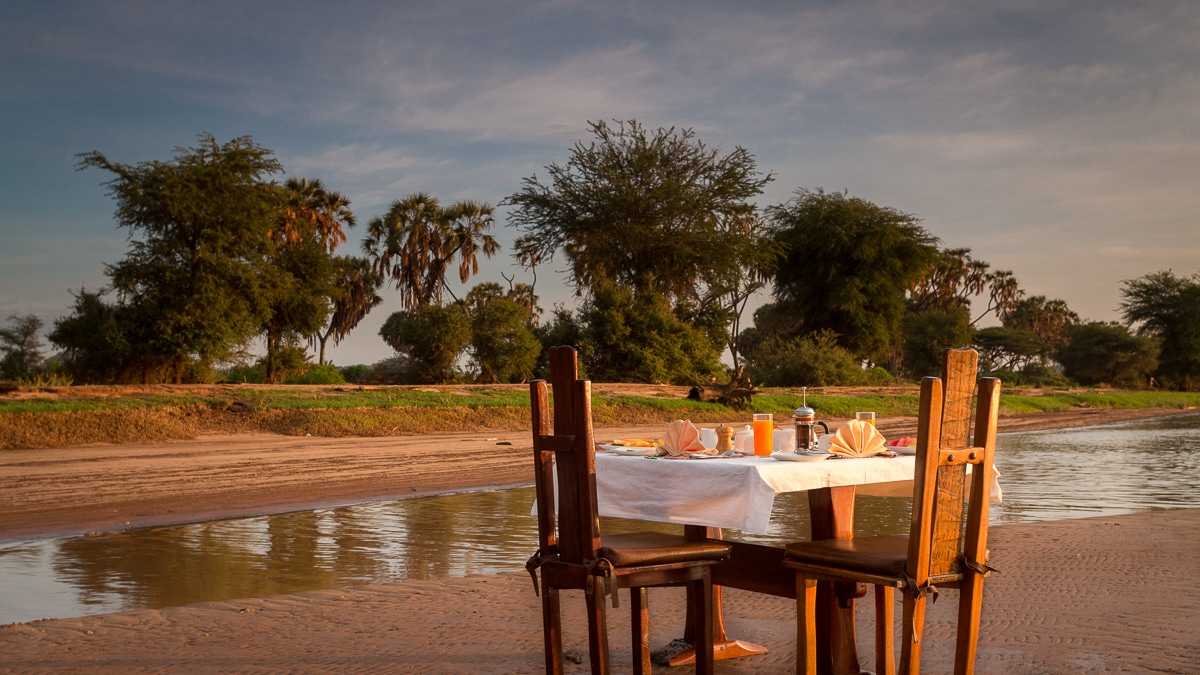
Elephant Bedroom Camp – Samburu National Reserve Courtesy of Safari Herd

The Cliff Lake Nakuru Camp Luxury Tent Courtesy of Safari Herd
- Destination Knowledge . Opting for an outfitter with in-depth knowledge of your chosen destination and knowledgeable, experienced guides is essential. They should be well-versed in the region’s wildlife, culture, and unique experiences.
- Booking Logistics . Evaluate the booking process, including payment terms, cancellation policies, and flexibility in customizing your itinerary.
Preparing to Depart for Your African Safari
Once you have your trip booked, there are several things you need to do before departing on your African safari. Here are the most essential ones:
- Packing and Attire . Pay close attention to the outfitter’s recommended packing list and attire. These may vary based on your destination, the time of year, and other factors.
- Incidental Costs . Discuss incidental costs, such as tips and additional activities, with your outfitter to clearly understand your overall expenses. Nobody likes surprises.
Articles Related to Planning an African Safari
- What You Need to Know for Planning a Hot Air Balloon Safari in Kenya
- On Safari in Zambia: The Bush in Photos
- Up Close and Personal with a Leopard in Zambia
- Best Places to Visit in Tanzania
Embarking on Your Dream African Safari
Planning an African safari is an exhilarating journey that involves careful consideration of your destination, itinerary, and safari outfitter. Kenya is a remarkable safari adventure choice with its diverse landscapes and abundant wildlife.
Starting your planning process well in advance, staying informed about your destination, and selecting a safari outfitter that aligns with your preferences are essential steps in ensuring a memorable and fulfilling safari experience. With meticulous planning and the right outfitter by your side, you can embark on your dream African safari adventure in Kenya with confidence, excitement, and anticipation of unforgettable memories.

Elephants in Kenya. Photo © Giancarlo Bisone
We invite you to explore Wander With Wonder for more of our favorite destinations across the African continent .

Outdoor Activities | Outdoor Adventures | Safari
You may also like….

Mastering the Art of Gift Selection: A Comprehensive Guide
by EJ Ray | Apr 15, 2024 | Bring Travel Home , Travel
Having trouble choosing the right gift? Selecting meaningful gifts is an art. This comprehensive guide to gift...

Best Supplements to Help Boost Your Immune System When You Travel
by EJ Ray | Apr 13, 2024 | Travel , Travel News , Travel Tips
Read on to learn more about the best supplements to boost your immune system when you travel—and every day!...
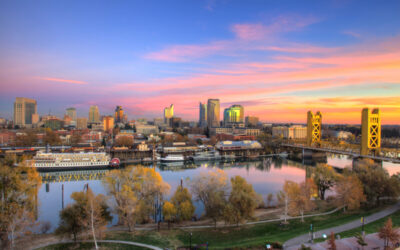
What to Do and Where to Go if You’re Visiting Sacramento
by EJ Ray | Apr 10, 2024 | California , Destinations , North America , Travel , United States
Sacramento offers a captivating history, beautiful outdoor landscapes, a vibrant arts scene, and locally sourced...
Submit a Comment Cancel reply
Your email address will not be published. Required fields are marked *
Submit Comment

Subscribe To Our Newsletter
Sign up for our newsletter to get the latest food, wine & travel updates! We look forward to having you Wander with us.
You have Successfully Subscribed!
TOP DESTINATIONS
- Kruger Park
- Okavango Delta
- Serengeti National Park
- Victoria Falls
TOP COUNTRIES
- South Africa
TRAVEL DEALS
View All Travel Deals
SOUTHERN AFRICA
East africa, indian ocean islands, top experiences.
- Beach Holidays
- Family Safaris
- Honeymoon Safaris
- Desert Safaris
- Luxury Rail Safaris
- Multi-Generational Safaris
- Positive Impact Safaris
- Photographic Safaris
- Walking Safaris
WILDLIFE SAFARI
- Big Five Safaris
- Birding Safaris
- Gorilla Trekking Safaris
- Migration Safaris
- Mobile Camping Safaris
- Horseback Safaris
FEATURED EXPERIENCES
Comfort levels, property types.
- Tented Camps
- Boutique Hotels
Featured Safari Collections
- African Bush Camps
- Red Carnation
- Green Safaris
- The Safari Collection
GET TO KNOW US
- Meet The Team
- Pricing Explained
- Traveller Reviews
- Traveller Stories
- Why Book With Us?
- HerdTracker
- Safari Cost Calculator
- South Africa In 360
- Trusted Safari Partners
What are you looking for?
- Safaris & Tours
- Destinations
- Experiences
- Accommodations
- Why book with us?
Hello traveller!
It's in Cape Town now.
We're sorry. Our safari planners aren't available now. Our office hours are 08:00 - 19:00 (GMT+2).
Call us to speak to an experienced safari planner.
Alternatively, we recommend...
Schedule a phone or Zoom call with one of our safari planners
Complete our travel enquiry form to connect with a safari planner
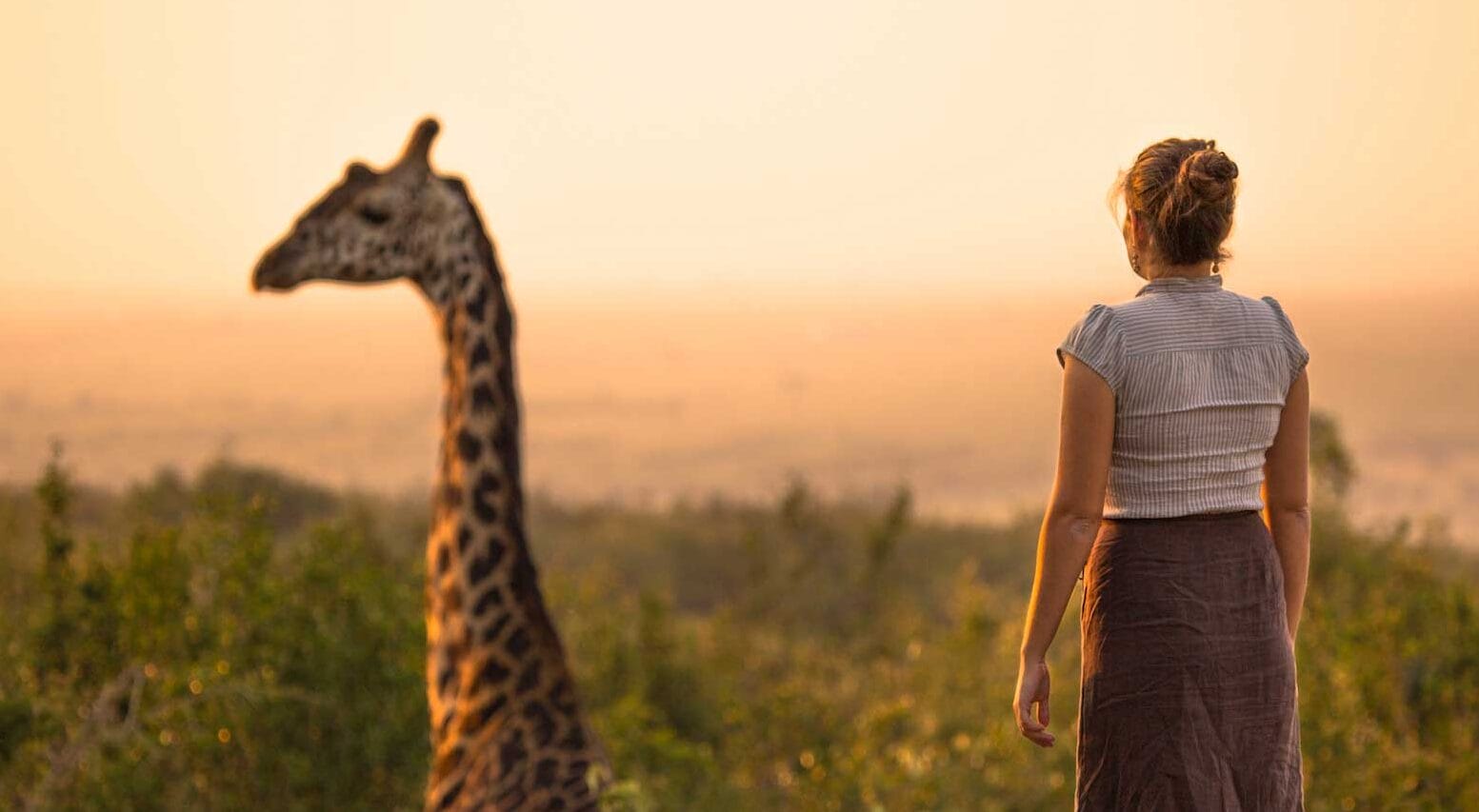
- Kenya Safari
The ultimate guide to your next Kenya Safari
Get to know kenya.

By Matthys van Aswegen
Safari Travel Planner
A safari in Kenya offers breathtaking natural beauty in one of the world’s most pristine environments and allows you to get up close and personal with some of Africa’s most sought-after animals.
Combined with the sight of Mount Kilimanjaro , all this makes a Kenya safari experience unique. The annual Great Wildebeest Migration is best viewed from both sides of the Mara River, but you can experience the herds on the Kenyan side between August and October.
The southern parks and reserves like the Masai Mara and Amboseli National Park are well worth seeing. So are the northern parts of Kenya’s private concessions and Samburu reserves, where you can find the Special Five – reticulated giraffe, Grevy’s zebra, Gerenuk, Somali ostrich, and Beisa oryx.
Kenya Video
How it Works
View our recommended safaris for inspiration and get ready to plan your dream safari
Contact us or fill out an enquiry form and one of our travel experts will help you tailor make your perfect safari
Enjoy an authentic African experience, with peace of mind
- Meet and learn about the famous Maasai culture during a safari in Kenya.
- About 60 national parks and reserves are located in Kenya. The Masai-Mara, Amboseli, and Tsavo national parks are some of the most well-known.
- It’s a great destination as it has a selection of rustic beaches to relax on after an exciting safari in Kenya.
- Observing the Great Migration in Kenya is a must for every wildlife lover visiting Kenya. This is nature’s most fantastic migration, with hundreds of thousands of wildebeest, zebra, and gazelle moving through East Africa.
- The lakes of Africa’s Rift Valley connect three sizable catchments and cross numerous countries. Eight lakes, including the gorgeous birdlife-attracting Lake Naivasha, are found in Kenya. A “soda lake,” Lake Nakuru is well known for drawing sizable groups of flamingos that feed in the shallows.
Where to go in Kenya
- Amboseli National Park
- Laikipia Plateau
- Masai Mara National Reserve
- Mombasa and Surrounds
- Mount Kenya and Aberdares
- Northwest Safari Circuit
- Rift Valley Lakes
- Samburu Springs and Mount Meru National Park
- Southern Safari Circuit in Kenya
- The Coastal Belt
- Tsavo East and West
- Watamu and Malinda
A long-standing highlight of Kenya’s safari circuit, 392 km2 (151 square mile), Amboseli was set aside as a wildlife reserve in 1899 and made a national park in 1974.
Renowned for its high density of elephants, the park forms the unfenced core of an 8,000 km2 (3088 square mile) ecosystem that includes large tracts of Maasai community land both in Kenya and across the border in Tanzania.
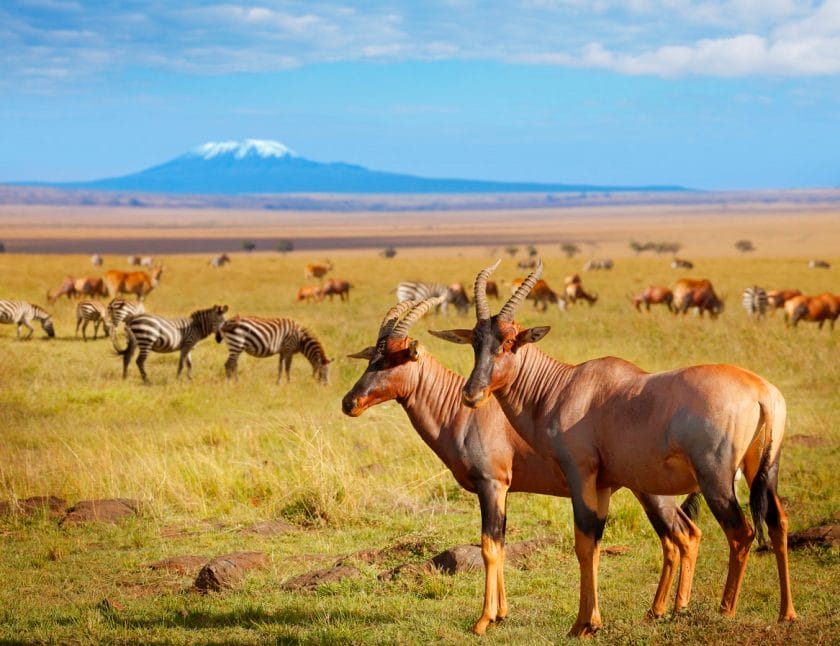
Amboseli National Park lies at the northern base of Mount Kilimanjaro and, cloud permitting, offers tremendous opportunities to photograph plains wildlife below the snow-capped peak of Africa’s tallest mountain.
Highlights of Amboseli National Park
The 5,891m (19,327ft) summit of Kilimanjaro – the world’s tallest freestanding mountain and Africa’s highest peak – actually stands within Tanzania. Still, the finest views of it are to be had from Amboseli.
For much of the day, the volcanically-formed mountain is rendered invisible by a shroud of clouds, but this usually lifts at dusk and dawn to reveal the iconic snow-capped peak rising a total 5km (3,1mi) above the dusty plains in all its breathtaking glory.

A dominating blue presence on maps of the park, the eponymous Lake Amboseli only holds water briefly in years of exceptional rainfall.
The rest of the time, this flat dry dust bowl supports large numbers of wildebeest, zebra, gazelle, and various exotic birds. The exotic birds you can expect to include the Secretary bird, Yellow-necked spurfowl, and the localized Pangani longclaw.
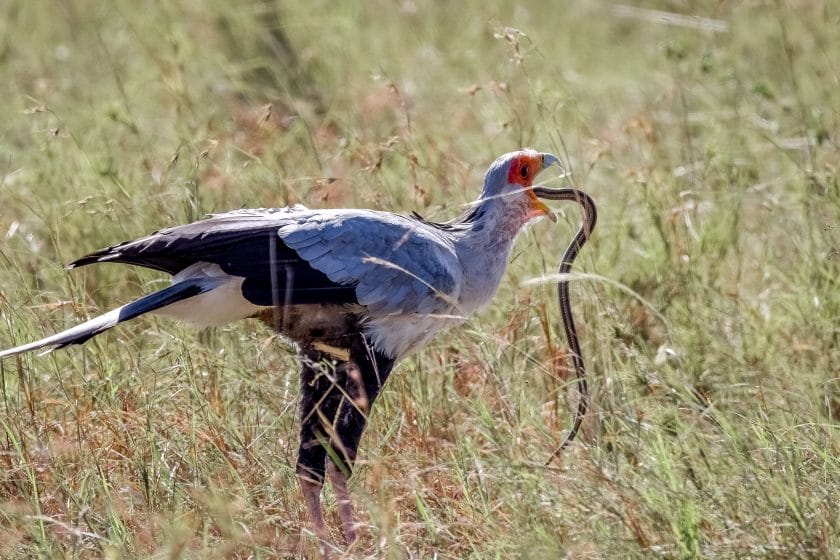
Scattered stands of umbrella thorn woodland, dominated by the distinctive flat-topped Acacia tortilis, are home to giraffe, impala, and a host of striking dry-country birds, notably Von der Decken’s hornbill, red-and-yellow barbet, rosy-patched bushshrike, and steel-blue whydah.
The permanent Enkongo Narok and Olokenya Swamps, fed by underground streams that rise on the upper slopes of Kilimanjaro, are home to plentiful hippos and a wide range of aquatic birds, among them long-toed lapwing, painted snipe, great white pelican, and grey crowned-crane.
Another must-see landmark is Observation Hill, which offers panoramic views across a pretty lake towards Tanzania, with Kilimanjaro often visible at dusk and dawn.
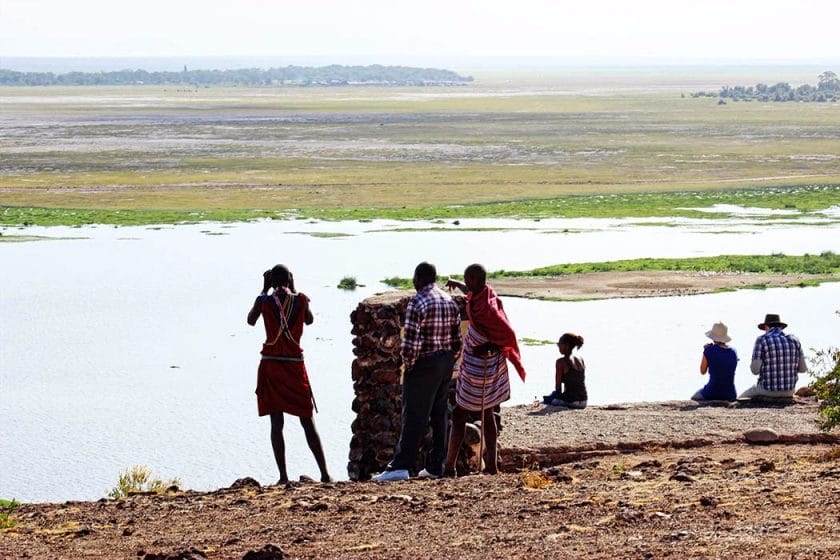
Amboseli’s most famous and entertaining mammalian residents are the subjects of the Amboseli Elephant Research Project , founded in 1975 by Dr. Cynthia Moss and retains detailed records of most births, deaths, and relationships within an extended community of around 50 families, whose range centers on the national park.
As a result of this close monitoring, the elephants of Amboseli are unusually well-habituated and contain a high proportion of old tuskers – excellent sightings are all but guaranteed.
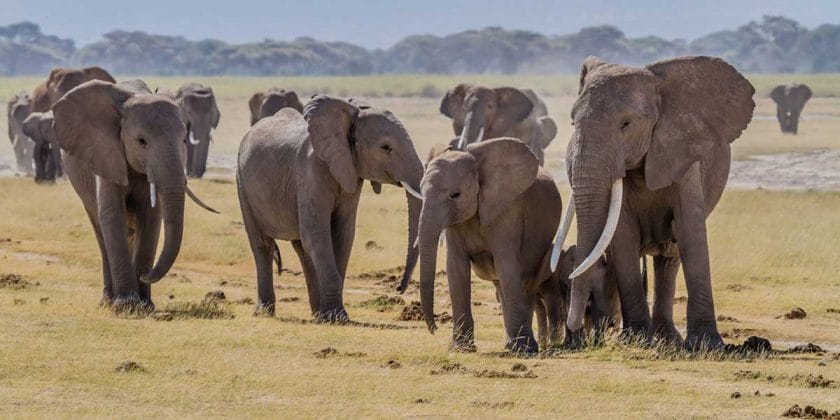
The core national park is surrounded by several private conservancies that comprise Maasai community land and offer exclusive traversing rights to one or two small camps or lodges.
The conservancies support several species seldom observed within the national park, for instance, Gerenuk and Lesser kudu, and the ability to head off-road allows guests to make the most of cheetah and lion sightings.
Practical Advice for an Amboseli Safari
- Coming by road, Amboseli is 230km (143mi) from Nairobi via Namanga, a drive that includes some heavily corrugated sections and takes about five hours in either direction.
- Road safaris in Kenya often combine Amboseli with Tsavo West National Park, which lies about 120km (75mi) away along a poor dirt road.
- It is also possible to fly into Amboseli from the likes of Nairobi, Mombasa, and the Masai Mara.
- Several safari lodges lie within the national park, and some excellent upmarket tented camps service the surrounding conservancies.
Dominated by livestock ranches in the colonial era, the vast Laikipia Plateau has since been transformed into one of East Africa’s finest and most exclusive wildlife destinations.
Indeed, this mosaic of several dozen private and community-owned sanctuaries, overseen by the non-profit Laikipia Wildlife Foundation , now operates as Kenya’s second-largest conservancy after Tsavo, comprising 9,500km2 (3668 square miles) in total.

Ecologically, the plateau is transitional to the central highlands and northern deserts. It provides an essential stronghold for rarities such as Grevy’s zebra, Black rhino, and African wild dog.
It also supports substantial numbers of lions, leopards, cheetahs, and dry-country specials such as Reticulated giraffes, Greater and Lesser kudu, Gerenuk and Beisa oryx.
Although the plateau forms a cohesive and jointly-managed ecological entity, the individual ranches and conservancy lodges all operate as self-contained tourist destinations.
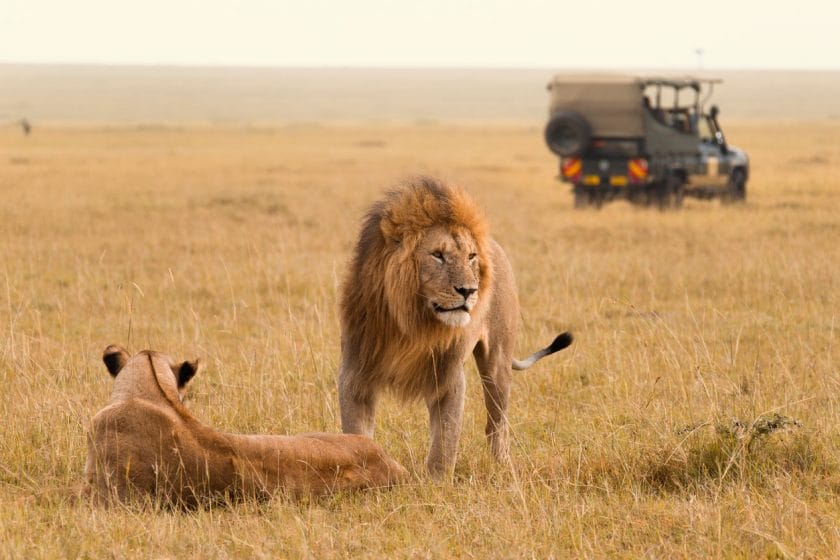
Most offer an all-inclusive tour package similar to those associated with the famous private game reserves bordering South Africa’s Kruger National Park . Activities include expertly guided game drives, and some conservancies also offer night drives, guided walks, and horseback safari excursions .
Highlights of Laikipia Plateau
The 365km2 (140 square mile) Ol Pejeta is the most accessible of the Laikipia conservancies and the only one that welcomes day visitors. It flanks the upper reaches of the Ewaso Nyiro River at the southern end of the plateau, only 25km (15,5mi) from Nanyuki.
One of the most crucial rhino sanctuaries in East Africa, it also supports elephant, buffalo, lion, leopard, cheetah, reticulated giraffe, Jackson’s hartebeest, Beisa oryx, gerenuk, and 500-plus bird species.
In addition to guided drives and walks, activities include lion tracking with researchers and visits to traditional villages.
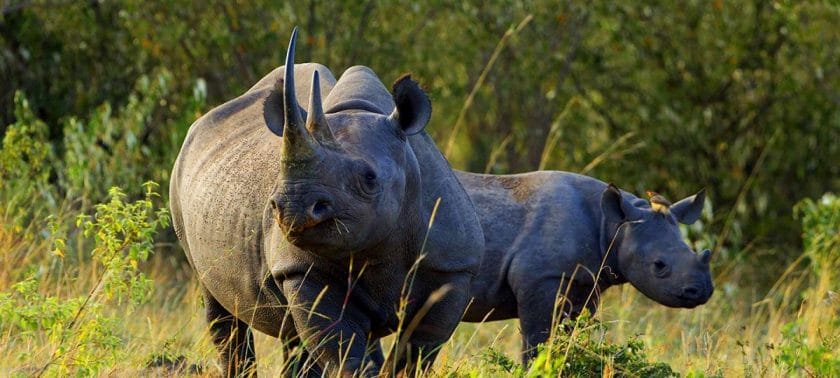
Situated within Ol Pejeta, Sweetwaters Chimpanzee Sanctuary was established in 1993 to protect orphans formerly housed at the Jane Goodall Institute in Burundi.
Since chimpanzees are not indigenous to Kenya, it’s the only place in the country where these charismatic apes can be seen on a Kenya safari tour , ideally by taking a boat trip along the Ewaso Nyiro River, which runs through the riparian forest where they now live.
A former cattle ranch reconstituted as a non-profit wildlife sanctuary in 1983, the 263km2 (102 square mile) Lewa Wildlife Conservancy is one of the oldest reserves in Laikipia and relatively accessible by car.

It’s a crucial stronghold for the endangered Grevy’s zebra, supporting around 400 individuals. It also provides sanctuary to significant numbers of Black and White rhinos and an easily spotted population of the localized Sitatunga antelope. Other wildlife includes elephant, lion, leopard, Spotted hyena, and a semi-resident pack of African wild dogs.
Remote and pristine, Northern Laikipia is carved up into a patchwork of community and private conservancies fronting the spectacular Ewaso Nyiro Gorge. The bush here is thicker and scrubbier than it is in the south, and while the Big Five are all present, densities are pretty low.
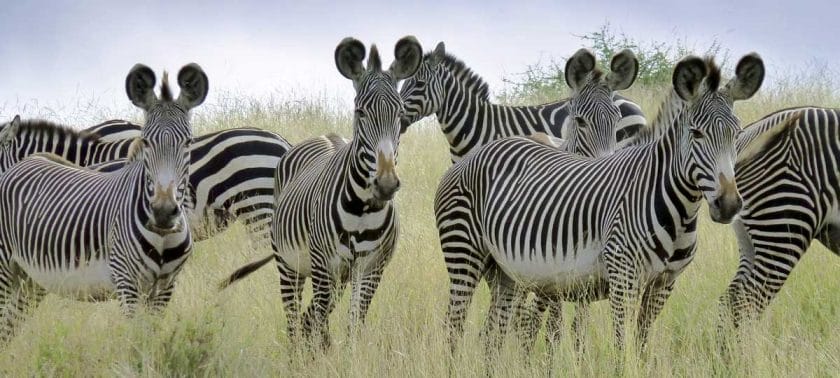
As a result, lodges tend to focus more on walking safaris than on motorized game viewing, making it an ideal bush retreat at the end of a longer safari in Kenya and offering an opportunity to concentrate on smaller mammals and exceptional birdlife.
Maralal, the informal capital of the Samburu people and gateway town to remote Lake Turkana, is perched at an altitude of 1,965m (6447ft) on the northern edge of the Laikipia Plateau. Its annual Camel Derby, held over the second weekend in August, is popular with residents and foreign visitors to Kenya.
Travel Tips for Laikipia Plateau
Private lodges in Laikipia mainly cater to the top end of the luxury Kenya safari market. Their standard package is an all-inclusive package that covers transportation, meals, activities, and, in some cases, drinks.
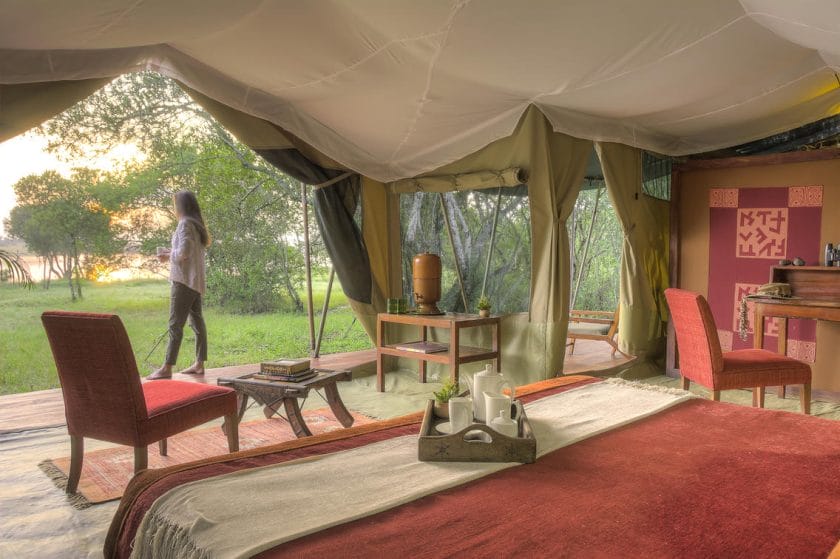
Coming from Nairobi, or elsewhere for that matter, the standard procedure would be to catch a scheduled flight from Wilson Airport to Nanyuki Airport, from which Ol Pejeta and Lewa Wildlife Conservancy are both relatively accessible by road. More remote lodges are usually reached by light aircraft charter.
Located in the far southwest of Kenya in the Great Rift Valley, the Masai Mara National Reserve is the country’s flagship park. It’s a vast wilderness of abundant big game, spectacular landscapes, and the scene of one of the planet’s most dramatic wildlife migrations .
The reserve is named after the Maasai people, a semi-nomadic tribe of pastoralists who have long inhabited the region, and their word to describe this landscape – “mara” – which means “spotted” – is a reference to the trees and bushes, as well as the shadows of passing clouds, that dot the plains.
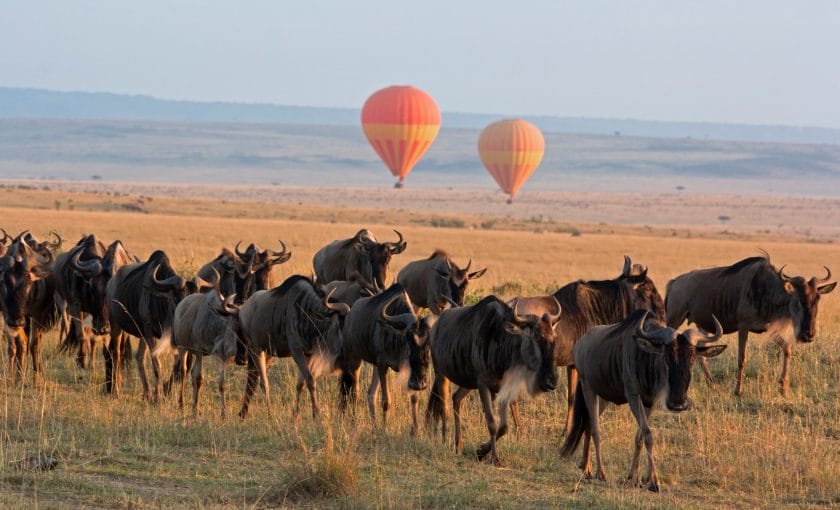
The Masai Mara was established in 1961 as a wildlife sanctuary. Today, it encompasses an area greater than 370 000 acres, with no fences between the park and the Serengeti National Park’s neighboring wilderness across the border in Tanzania.
A Masai Mara safari experience is one of the best ways to see wildlife: the concentrations of game here are astounding.
Resident in the reserve are the Big Five (although not many rhinos, and they’re hard to spot), as well as vast herds of plains game, hippos, and crocodiles in the rivers and more than 500 species of birds.
The reserve is particularly famous for its big cats – lions, leopards, and cheetahs – and the nature documentary BBC’s Big Cat Diary was shot on the reserve’s plains.
While the wildlife viewing at almost any time of the year is superb, the Masai Mara is best visited during the months of the Great Migration.
This is when millions of zebra, wildebeest, and gazelle make their way north into the park from the Serengeti, crossing the Mara River in search of fresh grazing.
Watching vast herds of animals on the move, as well as the thrilling kills by the big cats that pursue them, is one of the most exciting Masai Mara safari experiences you can have, and it’s no wonder that the Great Migration is at the top of most safari travelers’ bucket lists .
Apart from wildlife, the landscapes of the Masai Mara are stunningly beautiful: the classic Out of Africa backdrops of seemingly never-ending savanna studded with photogenic acacia trees are jaw-dropping.
To the west, the park is bordered by the Oloololo Escarpment, a dramatic plateau, while the rest of the park consists of rolling grasslands, acacia woodlands, riverine forests, and rocky hills.
Two major rivers – the Talek and the Mara – cut through the Masai Mara National Reserve, splitting it into three sectors: the Sekenani Sector, which lies to the east of the Talek River, the Musiara Sector, which is sandwiched between the two rivers, and the Mara Triangle, which is west of the Mara River.
The Narok County Council controls the Musiara and Sekenani sectors. At the same time, the more remote Mara Triangle is administered by a non-profit conservancy company, the Trans Mara County Council.
Musiara Sector offers excellent game viewing in the Musiara Marsh and some of the most spectacular wildebeest crossings at the Mara River. In the southeast of the park (and bordered by the Sand, Talek, and Mara Rivers), the Central Plains make up the largest part of the reserve.
The expansive grasslands of the Central Plains attract vast herds of plains animals, especially during the Great Migration from August to October, when the area is also famed for exciting big cat sightings.
Within the Central Plains, the savanna of Paradise Plain is prime cheetah territory, while Rhino Ridge is ideal for black-backed jackals, spotted hyenas, and bat-eared foxes.
Head to Lookout Hill for incredible panoramas of the Olpunyaia Swamp and sightings of hippos and for scenes of wildebeest crossing the river during the months of the migration.
As the closest area to Nairobi and with a vast number of lodges, hotels, and camps, the Central Plains is the most popular area of the reserve for tourists.
The Masai Mara’s rivers are home to hippos, massive Nile crocodiles, and many species of waterbirds. At the same time, the Mara River, which winds its way through the national reserve, plays host to huge pods of hippos and the dangerous crossings of wildebeest during the Great Migration.
Highlights of the Masai Mara National Reserve
An excellent introduction to the reserve’s varied grassland, woodland, and wetland habitats is provided by dawn hot air balloon safaris offered by almost all the lodges.
Over August and October, hot air balloon trips can also provide an astonishing vulture’s-eye view of the migrating wildebeest herds.
The Big Five are all present and seen with varying degrees of ease. Elephants are very common, as are buffaloes, the latter being the favored prey of the reserve’s huge lion prides, which often number 15 or more adults.
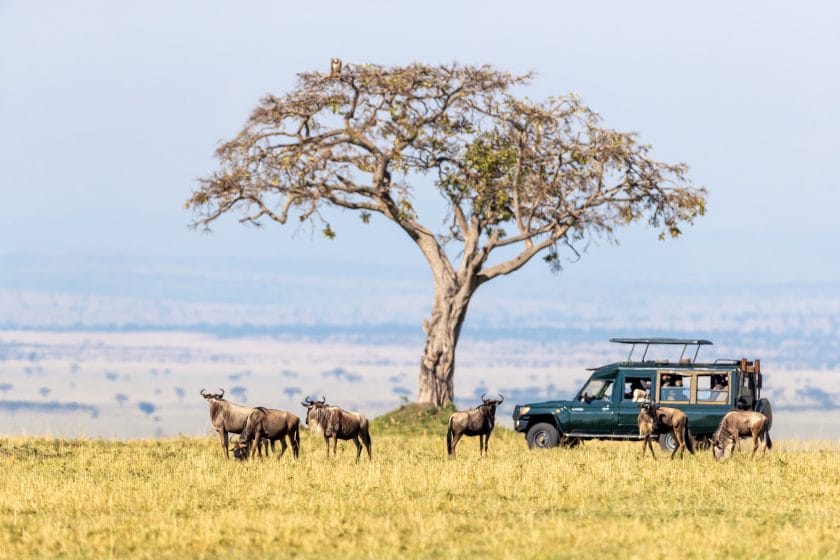
Leopards are more elusive but quite easy to locate if you know where to look, and while numbers of Black rhinos dropped alarmingly in the late 20th century, up to three dozen individuals still survive.
The rhino population here is the only one in Kenya that can be regarded as fully indigenous, with a gene pool (as yet) undiluted by translocated individuals from southern Africa or of mixed origin.
Even outside of the great migrations safari season , ungulates are well represented. There’s no better place for close-up views of Eland, the world’s largest antelope, which seems less skittish here than in most areas. Also likely to be seen are giraffe, impala, gazelle, Topi, Coke’s hartebeest, reedbuck, Defassa waterbuck, hippo, and warthog.

The Mara provides a fine introduction to East Africa’s savanna birdlife, with more than 500 species recorded in and around its borders, including such perennial favorites as Lilac-breasted roller, Superb starling, and Little bee-eater. Which makes this the perfect destination for photographic safaris in Kenya.
Large ground birds such as ostrich, Southern ground hornbill, Kori bustard, and the localized Denham’s bustard are also common. The riparian forest along the Mara and Talek Rivers is an essential habitat for niche species such as Ross’s turaco, Schalow’s turaco, and Grey kestrel.
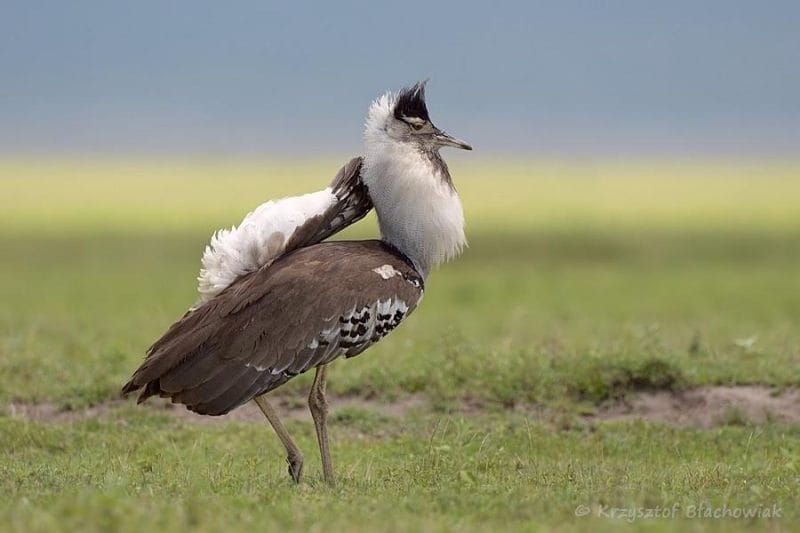
The drama of the wildebeest migration is encapsulated by the multiple river crossings that punctuate the great herds’ three-month tenure in the Masai Mara.
The river crossings usually start in August, when the wildebeest disperse into the plains surrounding the Mara River and continue regularly until the southward migration begins in October.
The wildebeest tend to stick to a few favored crossing points; the four used with greatest regularity lie along a 5km (3,1mi) stretch of river, meaning it’s pretty easy to keep tabs on any pending crossing.
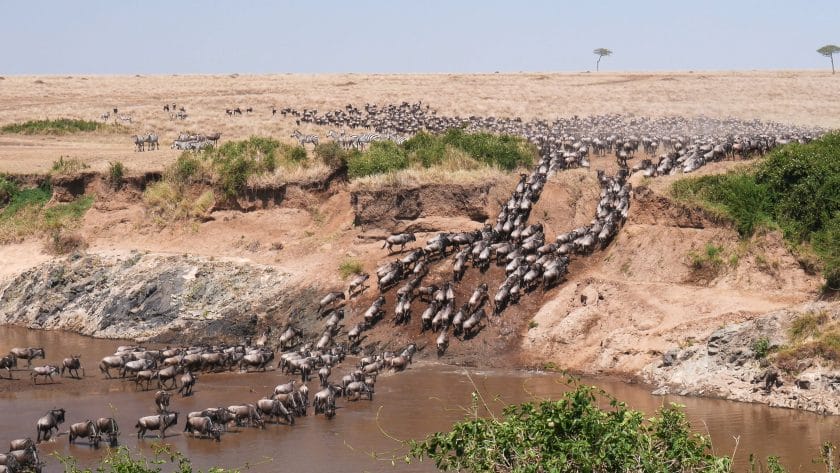
Bounded by the Mara River to the east and Oloololo Escarpment to the northwest, the Mara Triangle is an untrammeled westerly wedge that forms part of the national reserve. Still, it has been managed by a non-profit management company, the Mara Conservancy , since 2001.
The Mara Triangle offers a similar standard of game viewing to the rest of the national reserve, but it’s easier to escape the congestions of safari vehicles that tend to congregate around wildlife sightings east of the river, especially during the migration season.
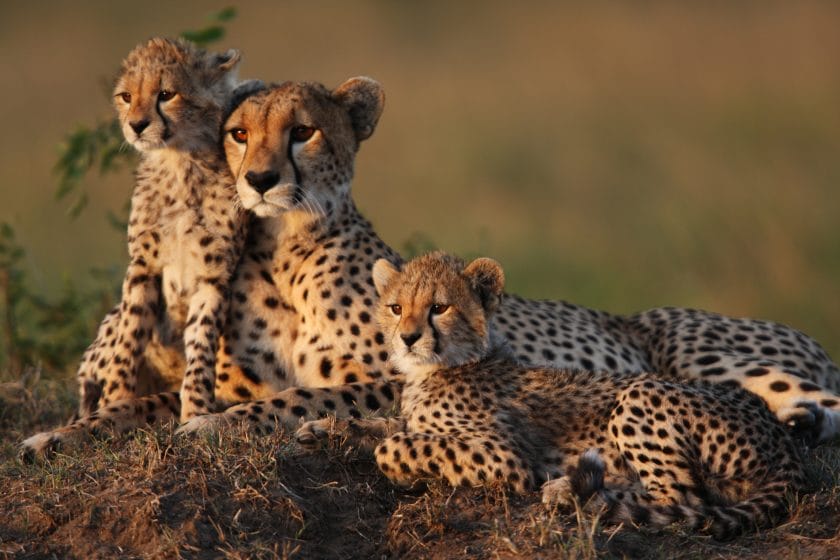
The national reserve is bordered by a cluster of private concessions and ranches, most of which are leased from or owned by local Maasai communities and serviced by a handful of small tented camps that share exclusive traversing rights.
The significant advantage of staying in one of these concessions is that, even more so than the Mara triangle, there is very little tourist traffic, so you are more likely to have sightings all to yourself. Many concessions also offer guided game walks and night drives, both of which are forbidden in the reserve proper.
Practical Advice for the Masai Mara National Reserve
- The easiest and most comfortable option is a fly-in safari package from Nairobi. This can be arranged through any reputable operator as a standalone safari or as part of a longer countrywide itinerary.
- Road safaris from Nairobi generally work out to be cheaper, but it’s worth bearing in mind that the bumpy six-hour drive will consume a significant proportion of your time and energy in either direction.
- There is no shortage of lodges and camps scattered in and around the Masai Mara . Unfortunately, this means that the reserve has acquired a reputation for being touristy and overcrowded, especially at the busiest times of the year.
- When you book a lodge, be aware that crowding tends to be most extreme in the sector southeast of the Talek River and its confluence with the Mara.
- The central sector, cupped between the Talek and Mara, tends to be quieter. Still, the best lodges for those seekng an authentic bush experience are those in the westerly Mara Triangle and private concessions and ranches outside the park.
Mombasa is steeped in history. Kenya’s largest port and second most populous city, it was first mentioned by name by the 12th-century Arab geographer Al Idrisi, who described it as a prosperous trade emporium selling spices, gold, and ivory to ships from Arabia and Asia.
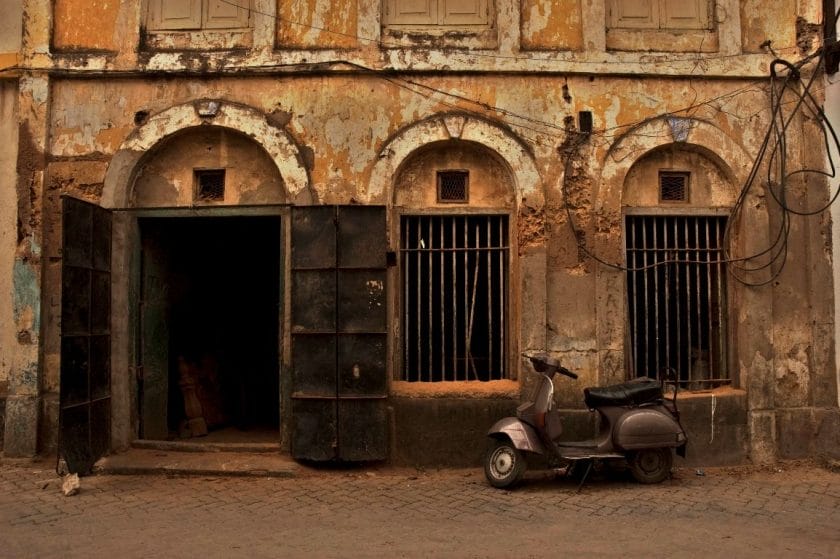
Today, the bustling island-bound city center is overlooked by the imposing Portuguese-built Fort Jesus. Its languid older quarters possess an organic layout and historical feel rare in more modern cities.
For all its commercial and historical importance, Mombasa is not so much a tourist focus as a funnel through which most visitors pass en route to the suburban resort cluster of Nyali, Kenyatta, Bamburi, and Shanzu, or to Diana Beach 30km (19mi) to the south.
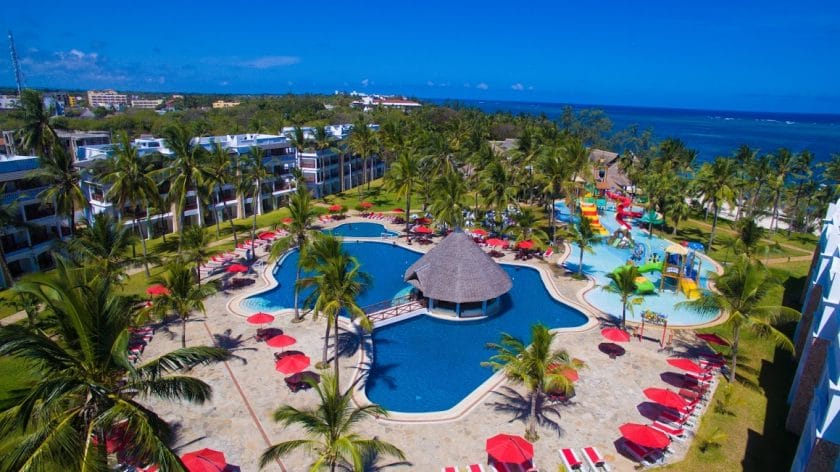
Inevitably, beach and marine activities dominate in this part of Kenya, but the underrated Shimba Hills National Reserve provides an excellent destination for those seeking a quick wildlife fix.
Highlights of Mombasa and its Surrounds
With thick seaward walls and turrets rising a full 16m (52ft) above the coral foundation, Fort Jesus has cut an imposing figure above Mombasa’s old town harbor since it was constructed by the Portuguese in the 1590s.
For centuries afterward, it was the most strategically important building on the East African Coast, changing hands more than a dozen times before its occupation by the British in 1895.
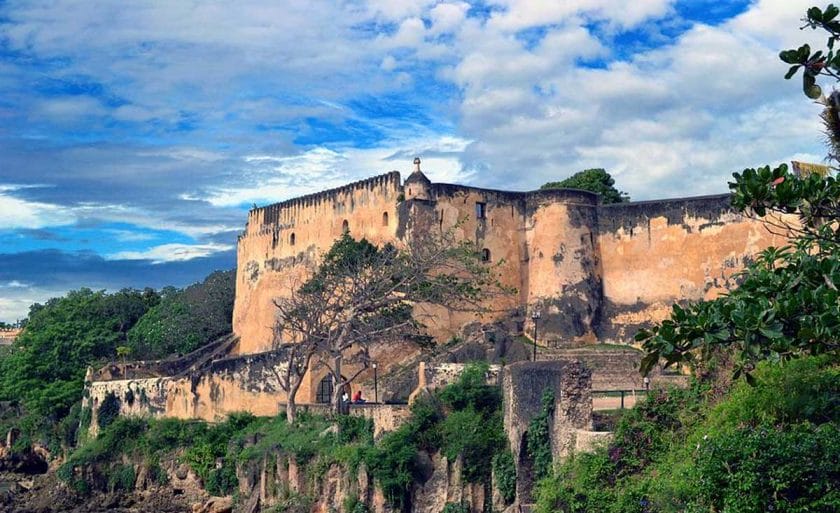
Now a UNESCO World Heritage Site, the fort has more-or-less retained its original plan and incorporates a museum housing an impressive collection of artifacts unearthed during excavations, ranging from Chinese porcelain to Arabic pottery.
A panel of wall paintings executed by an unknown Portuguese sailor sometime before 1639 can be seen in situ. Overlooking the old harbor north of Fort Jesus, Mombasa Old Town is the city’s oldest continuously settled district, and several of its mosques were founded in medieval times.

It comprises narrow alleys lined by two- and three-story Victorian buildings adorned with oriental-influenced fretwork balconies, carved window frames, and Zanzibar doors.
It’s a lovely area to stroll around, infused with a striking sense of community. A post-millennial facelift has seen many once-dilapidated buildings restored as galleries, boutiques, or characterful juice and coffee shops.
The most popular beach destination near Mombasa, Diani is a long and idyllic stretch of palm-fringed white sand, lapped by calm, warm waters protected by an offshore reef.
Despite being the focal point of a holiday in Kenya’s all-inclusive beach package scene , Diani’s beach remains blissfully uncrowded by Mediterranean standards, and there’s some fine offshore diving and snorkeling on offer.

It holds plenty of interest for wildlife lovers too. Relict patches of coastal forest are home to Sykes, Vervet, and Angola colobus monkeys, along with striking forest birds such as Trumpeter hornbill and Schalow’s turaco.
Only 30km (19mi) inland of Diani, the underrated Shimba Hills National Reserve is an excellent destination for a day or overnight luxury safari in Kenya.
The only Kenyan stronghold of the handsome Sable antelope is also home to giraffe, zebra, warthog, elephant, buffalo, and leopard.
The reserve also protects a patch of coastal forest inhabited by Angola colobus monkey, Blue duiker, Red-bellied coast squirrel, and Green-headed oriole. For a leg stretch, take the two-hour guided hike from Elephant Lookout to the 21m (69ft) high Sheldrick Falls.
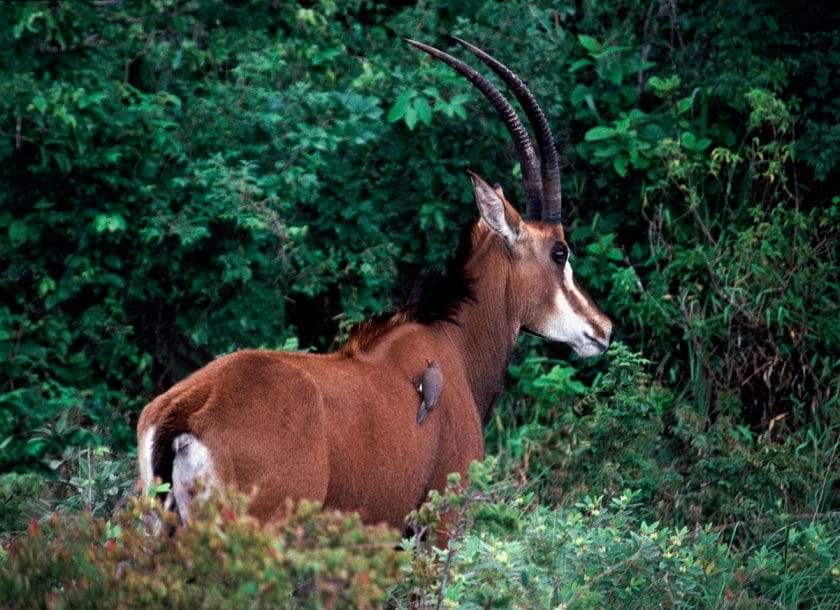
A popular day trip from Diani, Wasini Island is known for its so-called ‘Coral Garden’, a bleakly attractive landscape of partly exposed coral outcrops, sand flats, and mangroves that can be explored from a boardwalk managed as a community project by a local women’s group.
Immediately north of Mombasa, the 8km (5mi) stretch of coast running from Nyali to Kenyatta Beaches is less resort-like than Diani but still hosts some excellent beach hotels, and glass-bottomed boat excursions into Mombasa Marine National Reserve are on offer.
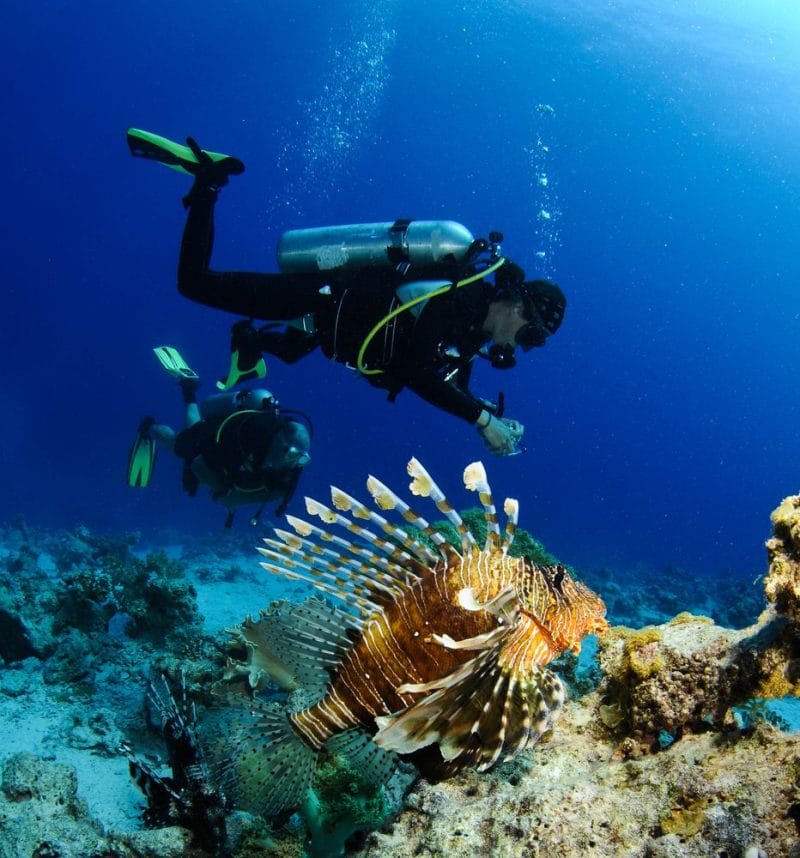
Bombolulu Workshops is an admirable non-profit craft center that creates employment for more than 150 disabled people and sells a wide variety of handcrafted items in its on-site shop.
Slotting in somewhere between a zoo and a safari park, family-friendly Haller Park comprises a reclaimed and reforested limestone quarry that can be explored along a 90-minute nature trail. Large enclosures contain wildlife such as giraffes, hippos, buffalo, and various antelope.
Practical Advice for Mombasa and Surrounds
- Central Mombasa stands on a 5.3km2 (2 square mile) island connected to the north coast by the 400m (1312ft) Nyali Bridge, the interior by the short Makupa Causeway, and the south coast by the Likoni Ferry across Kilindini Harbour.
- Most visitors arrive by air at Moi International Airport (MBA), which is serviced by a steady stream of domestic flights to/from Nairobi and elsewhere and by half-a-dozen international carriers.
- The airport is situated around 10km (6,2mi) from the city center via Makupa Causeway, and travelers heading to or from Diani need to allow sufficient time to pass through the city center and wait for the Likoni Ferry.
- Another popular way to travel between Nairobi and Mombasa is by train, following the so-called Lunatic Express constructed in the 1890s.
- Dozens of tour operators in Mombasa and Diani offer day trips further afield to the likes of Shimba Hills and Wasani Island. Car rental services are also widely available.
- There is no shortage of accommodation in and around Mombasa . The main clusters of beach resorts are at Diani and Nyali, while accommodation in Mombasa tends to be more low-key, with the most attractive options being found in and around the Old Town.
Very different in character to the rest of the country, the lushly vegetated and densely populated central highlands that stretch northward from Nairobi are capped by the hemisphere-straddling Mount Kenya and its permanent equatorial glaciers.
Rising to 5,199m, Mount Kenya is the second-tallest in Africa, topped only by Kilimanjaro , and it is linked to the more westerly 3,999m Aberdare Range by an elevated grassy saddle.
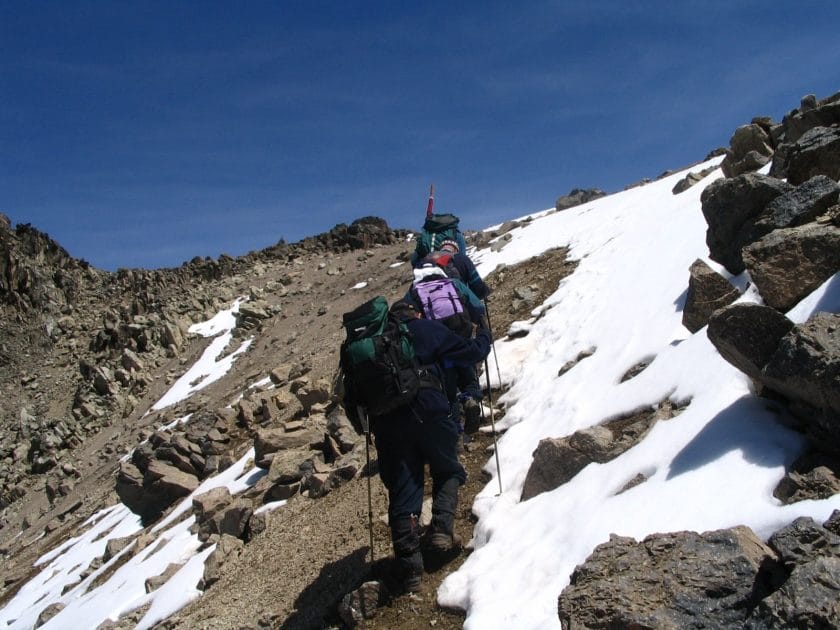
Oddly, these two massifs represent extremes of geological antiquity. Where the contorted folds of the Aberdares rank among the most ancient in East Africa, dating to before the Age of Dinosaurs, Mount Kenya is an extinct volcano that erupted into existence several million years after our earliest bipedal ancestors first strode across the Rift Valley floor.

Mount Kenya and the Aberdares are both protected within a national park. They also share many ecological affinities, and collectively support most of the country’s surviving Afro-montane forest and Afro-alpine moorland, the latter an otherworldly landscape of open moorland studded with bizarre giant forms of heather, lobelia and groundsel.
The two mountains host an outstandingly varied fauna, including all the Big Five alongside more localised forest specialists such as Sykes monkey, black and white colobus, Harvey’s red duiker, mountain antelope and giant forest hog.
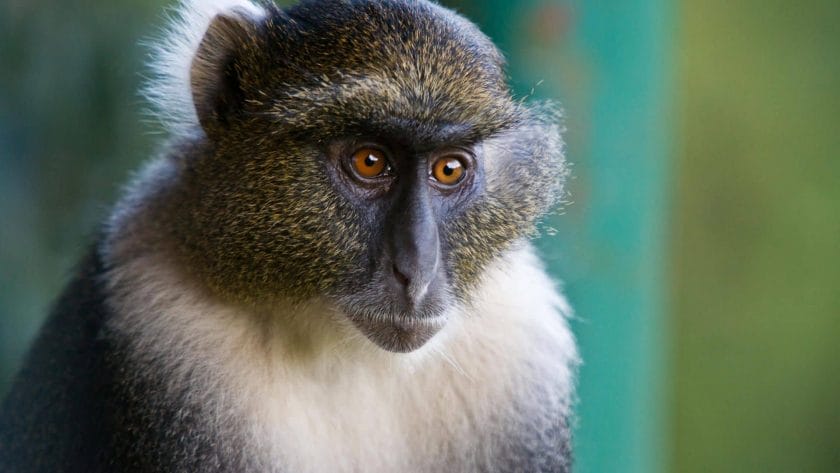
Though not as popular as Kilimanjaro, the multi-day hike to Point Lenana – at 4,985m, the highest point on Mount Kenya accessible without specialist climbing equipment – leads through a similar spectrum of attitudinally-determined Afromontane vegetation zones.
And while it may appeal less to peak-baggers, Mount Kenya has the advantages of being less crowded, less expensive, and less likely to be treated as a single-minded exercise in summiting.
The highest two points on Mount Kenya at 5,199m and 5,188m respectively, Batian and Nelion Peaks are highly alluring to experienced climbers with specialist equipment.
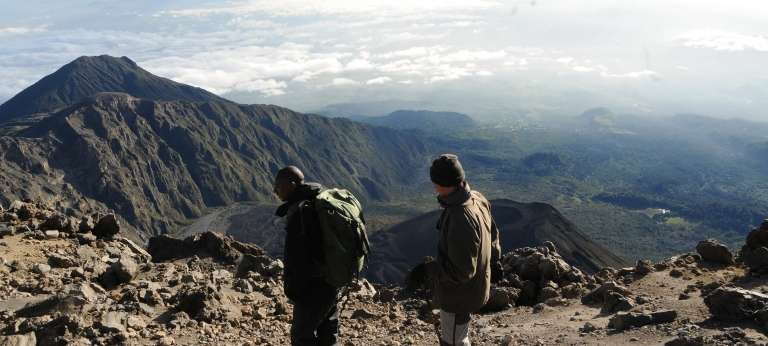
Aberdare National Park is best known as the site of the tree hotels Treetops and The Ark, stilted timber monoliths which double as overnight hides overlooking forest-fringed water holes that attract a steady stream of wildlife, including elephant and black rhino.
Historic Treetops gained overnight fame in 1952 when it hosted the young Princess Elizabeth on the very night that her father King George VI died, and she became the uncrowned Queen of the United Kingdom.
Conceptually similar to the tree hotels of the Aberdares, Serena Mountain Lodge , the only hotel set in Mount Kenya’s forest zone, provides an excellent introduction to highland fauna.
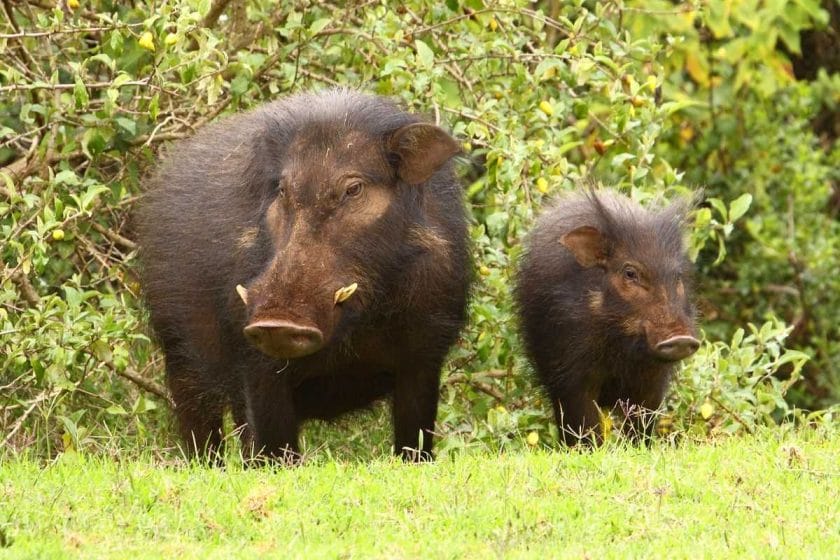
It overlooks a waterhole that occasionally attracts all the Big Five, as well as forest specialists such as giant forest hog, bushpig, Sykes monkey, black-and-white colobus monkeys, silvery-cheeked hornbill and Hartlaub’s turaco.
Game drives in Aberdare National Park follow little-used network of rough 4×4-only roads from the forest zone into an Afro-montane moorland punctuate with lovely waterfalls.
Wildlife includes black rhino, elephant, buffalo, giant forest hog and various monkeys. The Aberdares is one of the few places in Africa where melanistic (all black) leopards are regular.
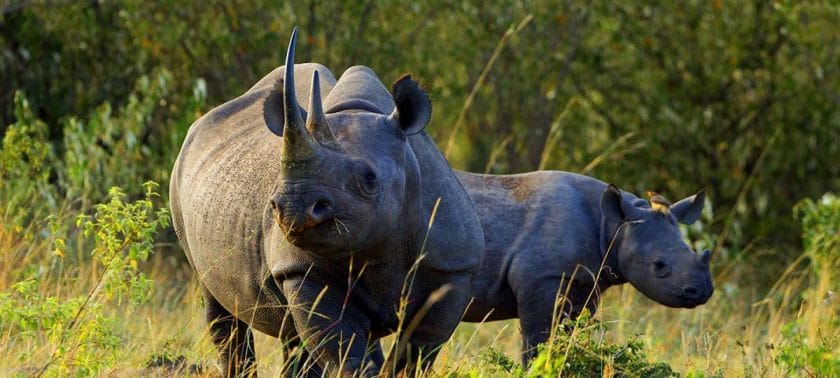
The forests support one of only two remaining wild populations of the mountain bongo Tragelaphus eurycerus isaaci – a beautifully marked and Critically Endangered large forest antelope that is now effectively endemic to Kenya having become extinct elsewhere in its range.
Kenya’s highest town, Nyahururu is perched at 2,360m on the edge of the Laikipia Plateau alongside the attractive Thomson’s Falls, which plummet 75m over a volcanic ledge into a forested gorge inhabited by black and white colobus monkeys and a varied selection of birds.
The private Mount Kenya Wildlife Conservancy is a wildlife orphanage that operates several important conservation projects, none more so than rehabilitation of a herd of captive-born mountain bongos for release into the forests of Mount Kenya, where it was last seen in the wild in 1994.

Founded in 1970 as a breeding centre for rhinos, Solio Game Ranch is a private conservancy situated on the grassy highland saddle that links Mount Kenya to the Aberdares.
Starting with a combined introduced population of 39, it now hosts at least 50 black and 85 white rhino. In addition, more than 100 individuals born at Solio have been translocated to other locations in Kenya.
Travel Tips for Mount Kenya and Aberdares
- All the sites listed above can be reached in up to four hours from Nairobi along well surfaced roads through Thika. Regular domestic charter flights connect Nairobi and the Masai Mara to Nanyuki Airport, from where it is a short drive to most sites of interest in the vicinity of Mount Kenya and the Aberdares.
- Hikes on Mount Kenya are best arranged with specialist operators who know the mountain well and employs experienced guides and porters. The shortest option for a a round hike is three days, but it is advisable to spend at least three nights on the mountain before ascending Lenana to minimise the effects of altitude.
- Any of the region’s three tree hotels – Treetops, The Ark or Serena Mountain Lodge – makes for a great overnight stop on road safaris between the Masai Mara or Rift Valley and Laikipia, Samburu-Buffalo Springs, Shaba or Meru.
- In addition to these upmarket lodges, medium-large highland towns such as Nyeri, Nanyuki, Nyahururu, Meru and Embu all have a few adequate restaurants and hotels. They also offer the opportunity to draw money or do some last-minute grocery shopping before heading out on safari.
The vast swathe of Kenya that runs north from Nairobi towards the remote border with Ethiopia is characterized by geographic extremes. On the one hand, the cool and fertile central highland rise towards the 5,199m (17,057ft) peak of Mount Kenya, not only Africa’s second-tallest mountain but sufficiently lofty to actually support glaciers less than 15km (9,3mi) south of the equator.
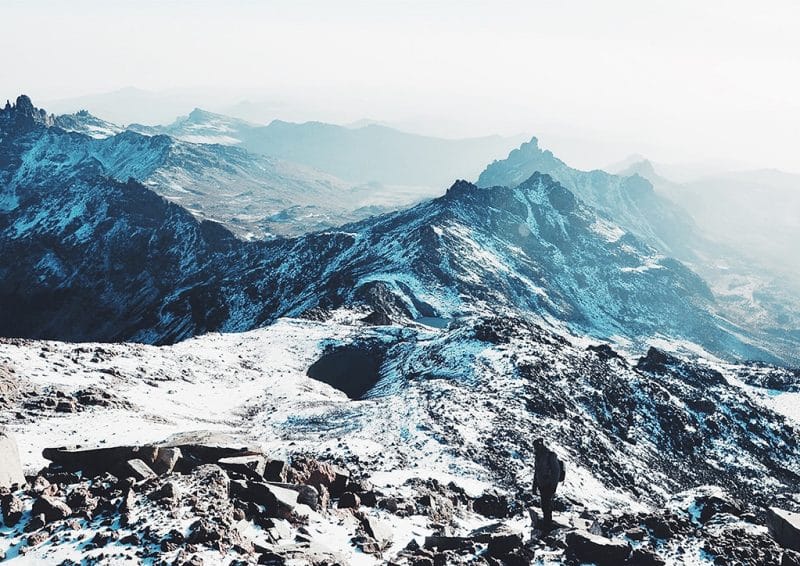
By contrast, the hostile plains that stretch north from Mount Kenya rank among the most arid and barren of sub-Sahelian landscapes, supporting a thin population of nomadic peoples who eke out a living as traditional pastoralists.
These contrasting landscapes offer some of Kenya’s most nuanced and varied game viewing. Admittedly, there’s nothing quite on the scale of the Masai Mara.
Still, the remote and rugged likes of Meru National Park, Samburu-Buffalo Springs National Reserve, and the private ranches of Laikipia support a fascinating array of dry-country wildlife. At the same time, the highlands around Mount Kenya are rich in forest wildlife.
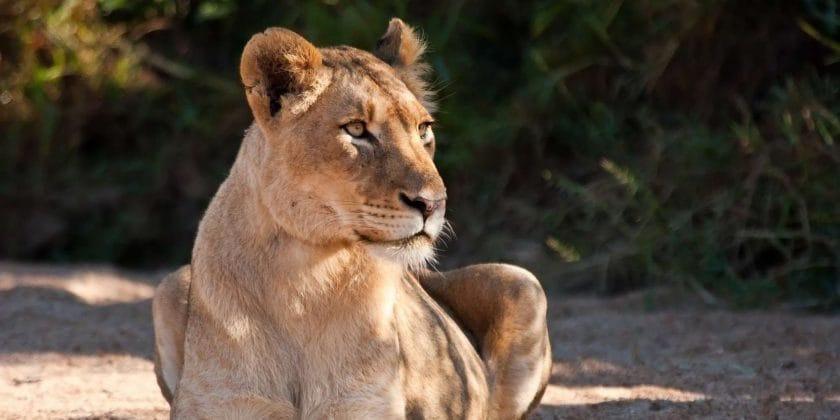
Overall, the northwest will perhaps be less rewarding to first-time Kenya safari goers than the more famous southern circuit. Still, it arguably has more to offer repeat African visitors when it comes to unusual wildlife encounters and a genuine wilderness experience.
Highlights of the Northwest Kenya Safari Circuit
Protecting Africa’s second-tallest mountain, Mount Kenya National Park is also Kenya’s most popular destination for multi-day hikes . For ordinary hikers, the usual goal is the 4,985m (16,355ft) high point Lenana, but peak-baggers with suitable climbing experience and gear can head all the way up to the 5,199m (17,057ft) Batian Peak.
Weather permitting, the landscapes – from lush rainforest to stark equatorial glaciers – are stunning. Set in the forest zones of Mount Kenya and nearby Aberdare National Park , a trio of hide-like tree hotels such as Serena Mountain Lodge, Treetops, and The Ark offer a unique overnight game-viewing experience.
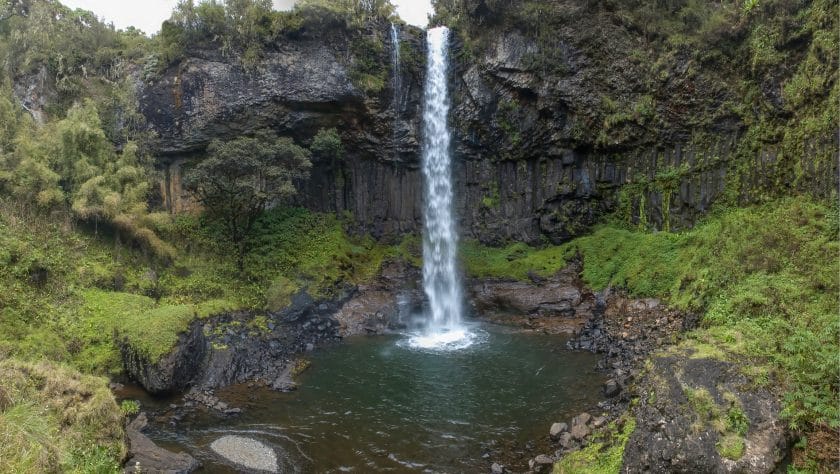
These lodges overlook water holes that regularly attract some or all of the Big Five and a host of secretive forest dwellers. The attractive Thomson’s Falls stands alongside Kenya’s highest town Nyahururu.
Solio Game Ranch, set on the grassy highland saddle between Mount Kenya and the Aberdares, operates Kenya’s most important breeding program for Black and White rhinos.
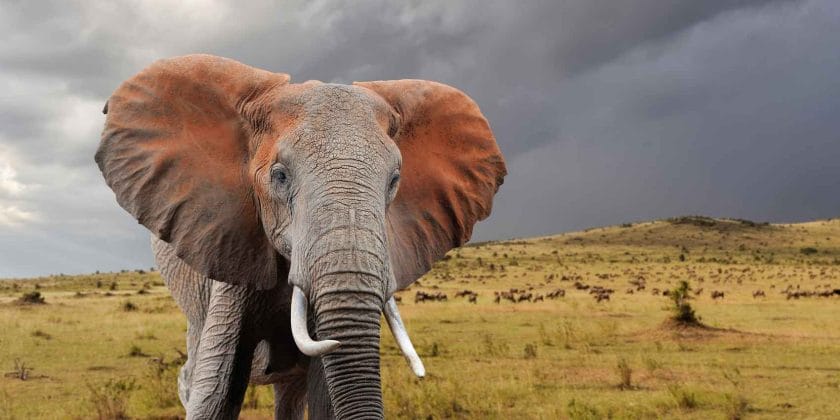
The vast Laikipia Plateau protects a patchwork of private and community-owned sanctuaries that offer exclusive all-inclusive safari packages focussing not only on the Big Five but also on rarities such as Grevy’s zebra and Black rhino.
At many ranches, game drives are supplemented by a more varied menu of night drives, guided walks, and horseback safaris .
Set on the arid plains north of Mount Kenya, the Samburu-Buffalo Springs-Shaba complex of national reserves protects a harsh environment alleviated by the forest-fringed waters of the perennial Ewaso Nyiro River.
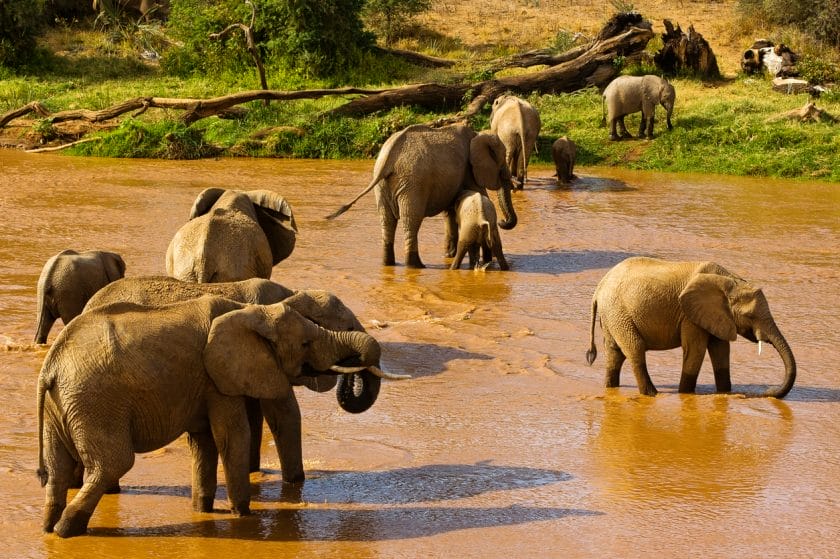
It’s the best place to see a long list of localized dry-country mammals and birds whose range is limited to northern Kenya and bordering parts of Ethiopia and Somalia.
The Namunyak Wildlife Conservancy north of Samburu can be explored on exclusive multi-day camelback and walking safaris .
Arguably a safari in Kenya’s best-kept game-viewing secret, Meru National Park, holds out the possibility of seeing all the Big Five in an unrestrained and little-visited wilderness of grassy plains and babbling jungle-lined streams.
Now accessible along a newly asphalted road running north all the way to the Ethiopian border, the underrated Marsabit National Park protects a volcanic massif that rises in verdant isolation from the surrounding arid plains.
Supporting a cover of lush forest and studded with pretty crater lakes, the park is also home to a good variety of wildlife, including some impressive tuskers.
One of Kenya’s most alluring off-the-beaten-track destinations, Lake Turkana is the world’s largest desert lake, its deep jade waters submerging the Rift Valley floor for 300km (186mi) from north to south.
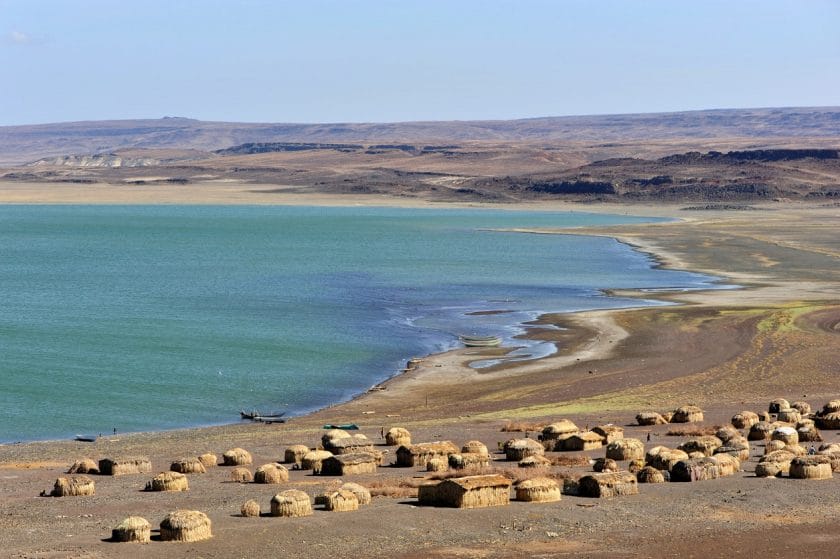
Set in an ancient landscape of extinct volcanoes and naked lava flows, this forbidding lake supports the world’s largest concentration of Nile crocodiles.
It is also where several of the world’s oldest and most important hominid fossils have been unearthed.
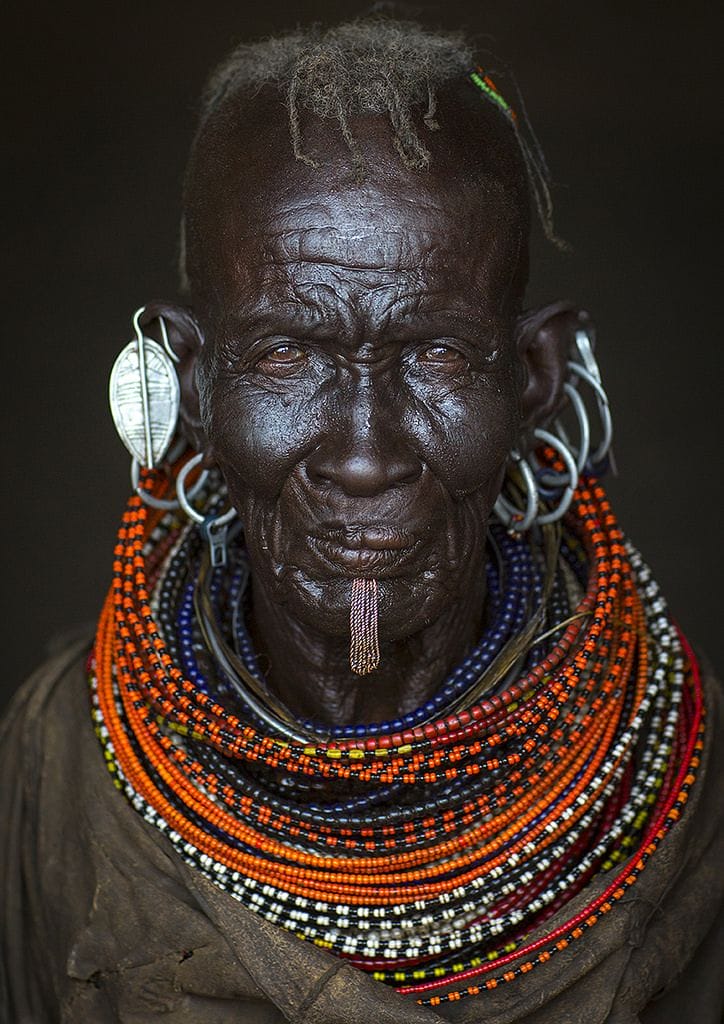
The lake hinterland is of great cultural interest thanks to the presence of traditional and colorfully-attired ethnic groups: the Rendille, Samburu, Turkana, and El Molo.
Practical Advice for a Northwest Kenya Safari Circuit
- The main airport in the region is Nanyuki Airport, which stands close to the eponymous town and is serviced by daily flights from the Masai Mara and Nairobi.
- Nanyuki is a short drive from most sites of interest in the region. Still, those heading on to more remote parts of Laikipia or Namunyak may need to charter an additional flight.
- Public reserves and parks are best visited on an organised safari, which can be arranged through any operator. Self-drive out of Nairobi is also a possibility.
- It’s pretty common to tag a visit to one or more of Laikipia, Meru, and/or Samburu-Buffalo Springs onto a southern safari taking in the likes of Masai Mara and Lake Nakuru.
- Any of the region’s three tree hotels – Treetops, The Ark, or Serena Mountain Lodge – would make for a great overnight break en route.
- Hikes on Mount Kenya are best arranged with specialist operators who know the mountain well.
- Upmarket lodges and tented camps can be found in all national parks and listed conservancies. Private lodges in Laikipia mainly cater to the top end of the safari market.
- Their standard offering is an all-inclusive package that covers transportation, meals, activities, and, in some cases, drinks. Most lodges in public reserves operate more like conventional hotels.
The sheer basaltic cliffs of the Rift Valley northwest of Nairobi hem in a classic East African landscape of open savannah studded with jagged volcanic outcrops and strung with beautiful lakes.
Large mammals are less prolific than in the Masai Mara or Amboseli, but the area is renowned for its prolific birdlife.
The main attention-grabbers are the million-strong flocks of flamingos that frequently amass at saline lakes Nakuru and Bogoria.
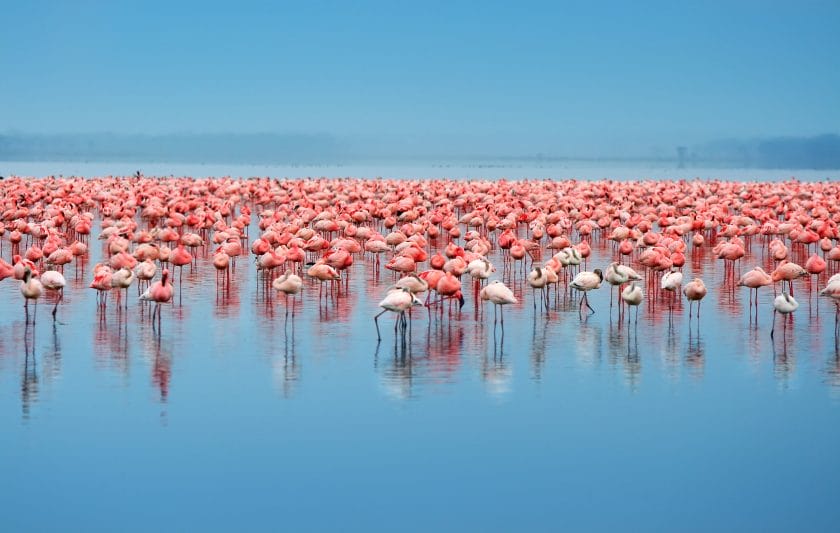
Then again, the freshwater lakes Naivasha and Baringo vie with each other for the accolade of ‘ top general birding hotspot outside the national park system’.
Lake Nakuru National Park is one of the best places in East Africa to look for both Black and White rhinos, while the likes of Crescent Island, Hell’s Gate National Park, and Green Crater Lake Sanctuary offer fantastic opportunities to see large wildlife on foot.
Highlights of Rift Valley Lakes
Fringed by fever-tree forests and low mountains, freshwater Lake Naivasha, only 90km (56mi) northwest of Nairobi, provides a superb ornithological primer for East Africa. Resident birders talk glibly about ticking off 100 species before breakfast.
The shallows host large numbers of hippos, while Crescent Island offers the opportunity to walk amongst giraffes, buffalo, and waterbuck.
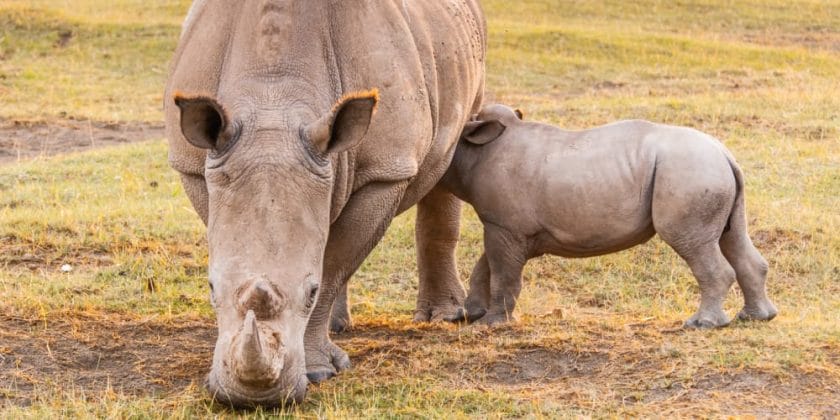
A popular afternoon treat is high tea at Elsamere Field Study Centre, which boasts a small museum dedicated to its former owner Joy Adamson of Born Free fame, and lovely lakeshore gardens frequented by black-and-white Colobus monkeys.
Named after the twin basaltic cliffs that guard its northern entrance, Hell’s Gate National Park protects a dramatic volcanic landscape of ancient lava plugs, sulphuric water vents, and obsidian outcrops.
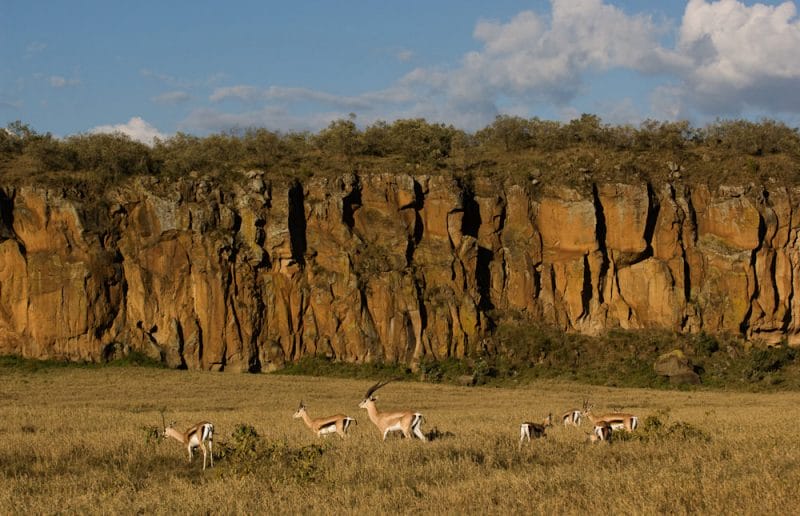
It’s also one of the last places in East Africa where one can walk or bicycle unguided through herds of plains wildlife. Buffalo, giraffe, zebra, wildebeest, gazelle, and eland are resident, and elephant, lion, and cheetah pass through occasionally.
The Green Crater Lake Sanctuary is a private reserve centered on the hyper-alkaline Lake Songasoi, which owes its verdant cast to a dense concentration of Spirulina algae.
Nestled in a forested volcanic crater, the scenic lake often attracts large flocks of flamingos. Guided game walks or horseback excursions come with a good chance of spotting black-and-white Colobus monkeys, buffalo, and various antelope.
The cluster of national parks and reserves set in the semi-arid lowlands running broadly northeast from Mount Kenya includes some of the country’s most rewarding safari destinations .
In part, this is because they protect a very different fauna from their more southerly counterparts: not only an intriguing selection of localised dry-country large mammals, including reticulated giraffe, Grevy’s zebra, and gerenuk but also a long list of birds whose range is more-or-less confined to the north of Kenya and far south of Ethiopia.
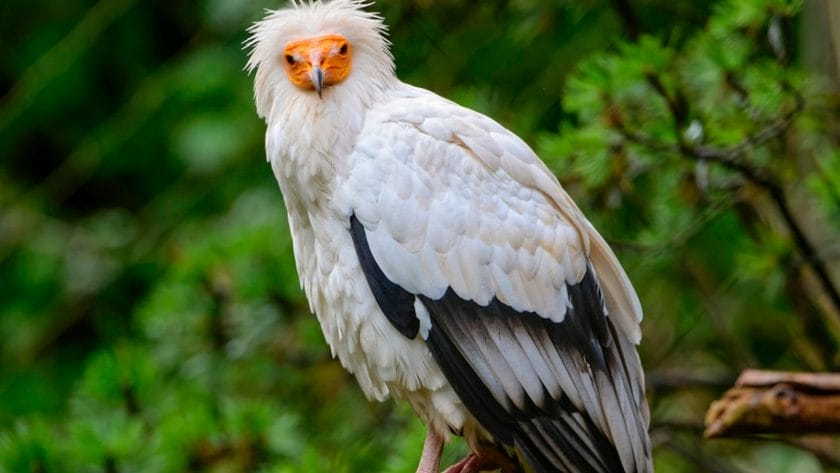
The region’s best-known attraction is the near-contiguous trio of Samburu, Buffalo Springs, and Shaba National Reserves, which protect a combined area of 440km2 (170 square miles) flanking the perennial Ewaso Nyiro River as it flows through an otherwise austere landscape of scrubby rocky plains and bare termite mounds.
Less famous is the 870km2 (336 square mile) Meru National Park, whose cover of tropical grassland and savanna is bisected by a series of narrow perennial streams that rise in the central highlands and empty into the Tana River – Kenya’s longest waterway – as it runs along the park’s southern boundary.
Highlights of Samburu Springs and Mount Meru National Park
Named after the red-robed pastoralist people who inhabit the surrounding plains, Samburu National Reserve, set on the north bank of the Ewaso Nyiro, protects a relatively hilly tract of dry thornbush that rises to 1,250m (4,100ft) at Ol Doinyo Koitogorr.
Characteristic wildlife of the open plains includes the endangered Grevy’s zebra, which is far bulkier and more narrowly striped than the familiar common zebra, and the handsome reticulated giraffe, distinguished by its geometrically-marked coat.
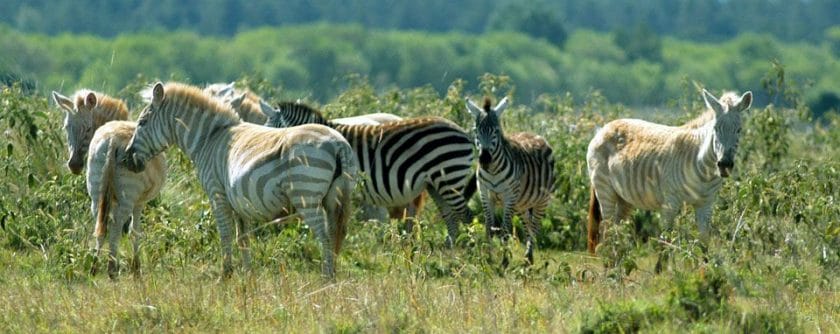
Dry-country antelope include Beisa oryx, Lesser kudu, Guenther’s dik-dik, and the bizarre stretch-necked gerenuk, which habitually stands erect on its hind legs to reach the leaves that most other antelope can’t.
Buffalo Springs National Reserve , set on the south bank of the Ewaso Nyiro, supports a similar range of wildlife to facing Samburu. It’s one of the more reliable places on a Kenya safari for leopard sightings, and the springs for which it’s named – a perennial marsh fed by underground water – attract plenty of wildlife in the dry season.
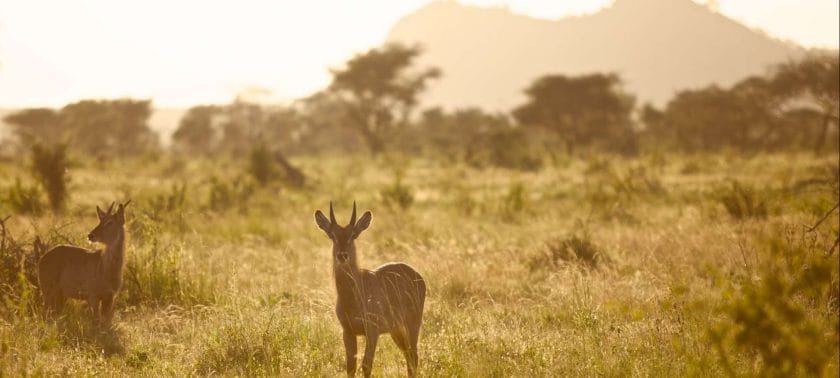
Situated on the south bank of the Ewaso Nyiro, only 5km (3,1mi) east of Buffalo Springs, the little-visited Shaba National Reserve is, if anything, even drier and more sparsely vegetated than its neighbors, but the range of wildlife is similar.
The main game-viewing loop runs through a mosaic of lava-strewn plains, parched grassland, and acacia woodland, offering glimpses of the river and passing by several hot springs.
In the far east, a spring-fed waterhole once used as a campsite by Joy Adamson now attracts a steady trickle of elephants, buffalo, lions, reticulated giraffes, Grevy’s zebra, and antelope.
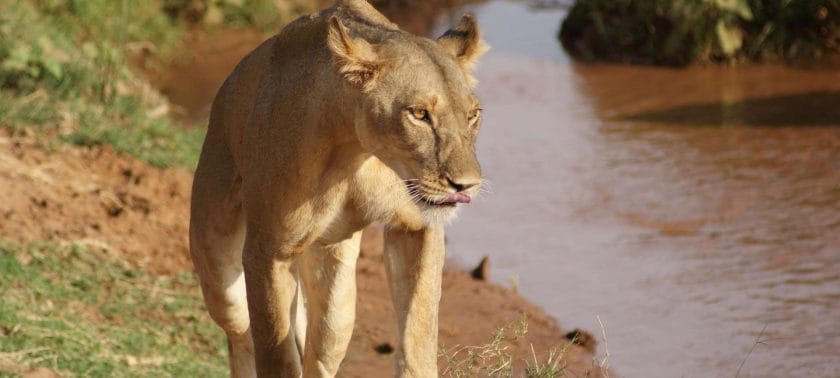
A long list of avian specials whose range is largely restricted to northern Kenya and bordering parts of Somalia and/or Ethiopia makes Samburu-Buffalo Springs-Shaba a key site for bird-watching safaris in Kenya.
Literal heavyweights on this list include the Somali ostrich, Abyssinian ground hornbill, and the spectacular vulturine guinea fowl, and it’s the most reliable site in East Africa for Egyptian vultures.
Other specials include white-headed mousebird, Somali bee-eater, Golden pipit, Rufous chatterer, Bare-eyed thrush, Bristle-crowned starling, and Black-capped social weavers.
Running north from Samburu-Buffalo Springs, the 3,940km2 (1,521 square mile) Namunyak Wildlife Conservancy protects an area of arid northern plains surrounding the Mathews Range, whose forested slopes host plenty of wildlife and several rare plant species. The main attractions here are multi-day camelback and walking safaris .
More lush and moist in feel than Samburu-Buffalo Springs-Shaba, Meru National Park possesses a genuine wilderness atmosphere that makes it a favorite with repeat Kenya safari-goers.

All the Big Five are here. You can be pretty confident of seeing elephants, buffalo, and rhinos, but big cats are generally quite challenging to spot on the tall grassland.
The reticulated giraffe is very common, but other dry-country ungulates, such as Lesser kudu, Grevy’s zebra, Beisa oryx, and Gerenuk are relatively scarce.
The largest of 13 waterways running through Meru National Park, the palm-lined Rojewero River flows through an excellent hippo pool. It is also a good place to look for African finfoot, Pel’s fishing owl, Giant kingfisher, and the endemic Golden palm weaver.
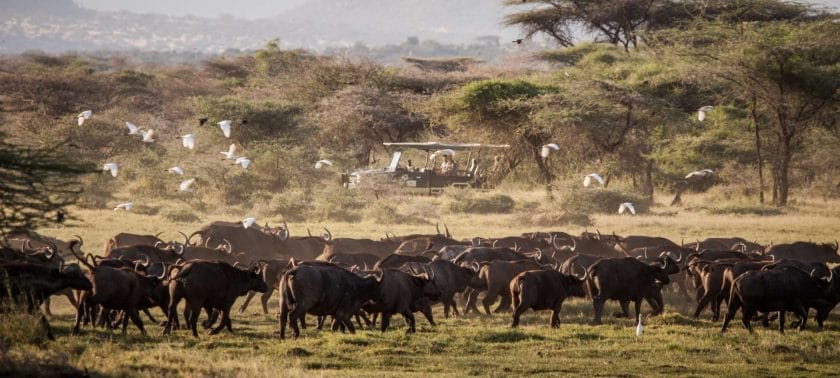
The boundary between Meru National Park and the remote Mwingi National Reserve is a lushly-forested stretch of the Tana River. Here, the rapids known as Adamson’s Falls (after George Adamson) are the most accessible point anywhere along the course of what is Kenya’s largest waterway.
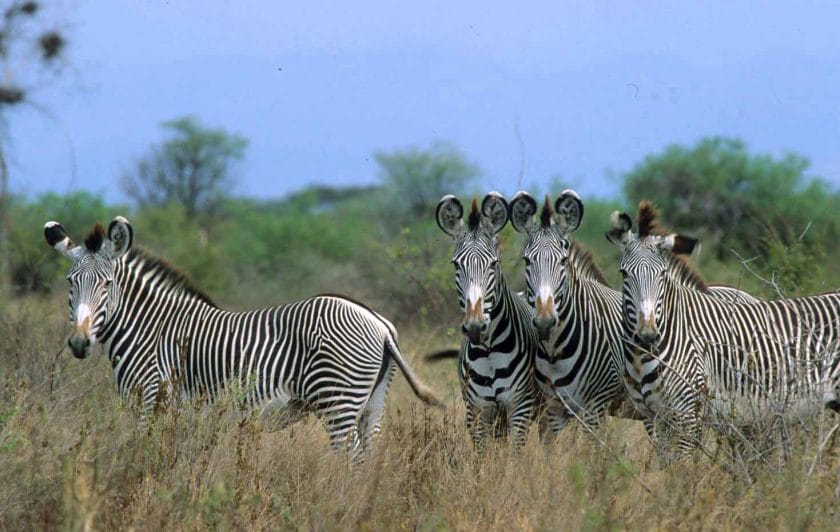
Meru National Park’s Ura River is the site of Elsa’s Grave , the burial place of the lioness subject of the film Born Free. Hand-reared as a pet by Joy and George Adamson, Elsa was released into Meru National Park in 1958 and successfully reared three cubs there before dying of a tick-borne fever at age five.
Practical Advice for Samburu Springs and Mount Meru National Park
- All the reserves and parks described above are best visited on an organised safari in Kenya, though self-drive is also a possibility. They can be reached in a long half-day drive from Nairobi via the frontier town of Isiolo or appended onto a safari, also taking in the likes of Masai Mara, Lake Nakuru, and the tree hotels of Aberdares and Mount Kenya.
- The closest airport for scheduled flights is Nanyuki, but charter flights directly to the reserves are available.
- Samburu-Buffalo Springs is serviced by a good range of lodges, tented camps, and campsites. There are also lodges and camps in Shaba and Meru, but fewer, which only adds to these reserves’ aura of exclusivity.
Southern Kenya offers some of the country’s finest wildlife viewing. The region is a showcase for three of East Africa’s most thrilling safari highlights: the migratory wildebeest that flood into the Masai Mara , the equally prolific flamingos, and the elephant herds that sweep across the Amboseli Plains below the snow-capped peak of Kilimanjaro .
While this region forms the core of most safari itineraries through Kenya , it also offers some great destinations for independent travel and off-the-beaten-track safaris in Kenya.
Lake Naivasha, Lake Baringo, Hell’s Gate, Kakamega Forest, and Saiwa are all perfectly accessible to self-drivers or those using public transport.
Highlights of a Southern Safari Circuit in Kenya
Renowned for its dense population of well-habituated elephants, Amboseli National Park, above the Tanzanian border at the northern base of Mount Kilimanjaro, is the best place to photograph plains wildlife below its majestic and photogenic snow-capped peak.
Kenya’s most prominent safari destination is the Masai Mara National Reserve , the most northerly component in an immense cross-border ecosystem that incorporates Tanzania’s Serengeti Plains and forms the arena for the spectacular annual migration of two million migratory wildebeest.
The Masai Mara peaks in popularity between August and November, when the wildebeest cross over from Tanzania, but offers fabulous Big Five safaris and predator-viewing all year round.
A superb base for keen walkers, birdwatchers, and independent budget travelers, scenic Lake Naivasha offers enough activities to keep you busy for a week.
You can walk amongst big game on Crescent Island or in the nearby – and wonderfully scenic – Hell’s Gate National Park and Green Crater Lake Sanctuary.
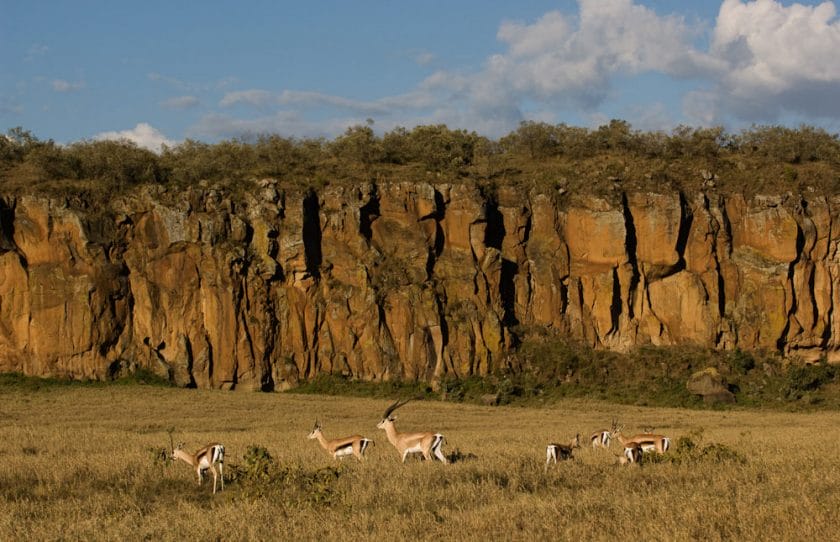
More challenging is the hike up the barely vegetated slopes of Mount Longonot, a 2,776m (9,108ft) high volcano that last erupted in the 1860s and whose summit offers fine views in all directions.
Although it’s no longer a reliable site for the flamingos that used to amass in its shallows, peri-urban Lake Nakuru is set within a small national park that offers a good chance of spotting both Black and White rhinos in the course of one game drive.
Often home to hundreds of thousands of flamingos, Lake Bogoria National Reserve is also noteworthy for the dramatic hot geysers that erupt close to its western shore.
A top-notch birding destination , freshwater Lake Baringo is also home to plenty of hippos and crocs and has a refreshingly off-the-beaten-track feel.
The southwest of Kenya is occupied by Lake Victoria , which it shares with Uganda and Tanzania. This is the largest lake in Africa at 66,800 km2 (2579 square miles), but its Kenyan portion is poorly developed for tourism and suited only to fans of genuinely off-the-beaten-track travel.
A contender for Kenya’s most underrated attraction, Kakamega Forest National Reserve protects the country’s largest stand of the equatorial rainforest. It’s easily explored on foot, and its diverse fauna possesses strong affiliations to Central Africa.
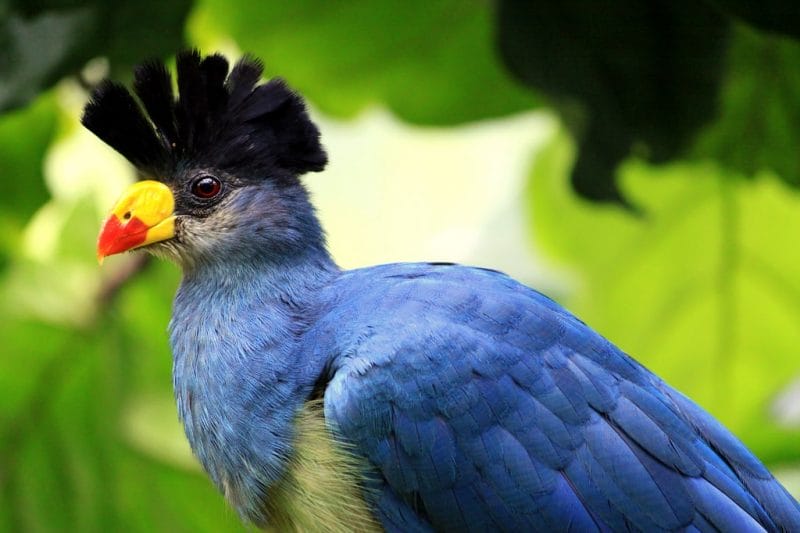
A tally of seven primate species includes black-and-white Colobus, Blue and red-tailed monkeys, and the nocturnal Potto.
The checklist of 360 bird species has more than 30 forest-dwellers found nowhere else in Kenya, among them the spectacular Great blue turaco.

Another underrated pedestrian-friendly gem is the tiny Saiwa Swamp National Park. Traversed by a walking trail that leads to a series of wooden viewing platforms, it’s possibly the best place in Africa to observe the semi-aquatic Sitatunga antelope and white-bearded DeBrazza’s monkey. A long list of forest and swamp birds includes the gorgeous Ross’s turaco.
Practical Advice for a Southern Safari Circuit in Kenya
- The most straightforward way to explore the Masai Mara , Amboseli, and to a lesser extent, Lake Nakuru is on a fly-in safari combining one or all of these destinations with other national parks and reserves elsewhere in Kenya.
- It’s also possible to drive into and between reserves, a more affordable option that will entail a lot of time spent on dusty roads getting from A to B. Most other destinations within this region are less remote and quite easily reached by car or by using public transport.
- Accommodations to suit most tastes and budgets can be found throughout the region. These range from exclusive tented camps and larger hotel-like lodges in and around the national parks and reserves to agreeable budget lodgings in more accessible destinations.
Kenya’s gorgeous Indian Ocean coastline is the ideal place to chill out on the beach after a few days on a dusty safari. It is lined with a seemingly endless succession of white sandy beaches that look like they’ve leaped straight out of the pages of a travel brochure.
Indeed, for a country often billed as the ultimate home of the safari, Kenya can also claim to be one of the world’s great beach destinations. Better still, there is much more to the Kenyan coast than a stock tropical beach holiday .
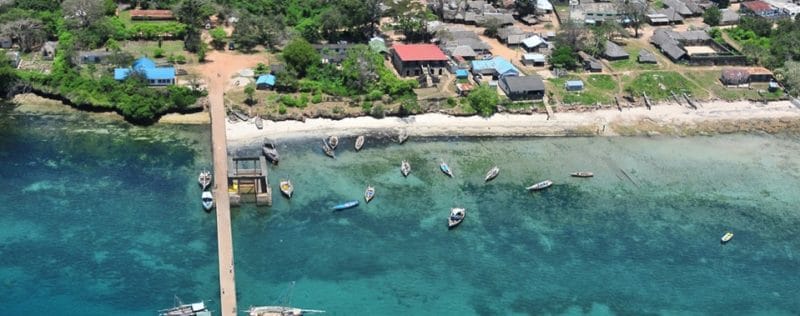
Most coastal towns and villages possess a strong sense of place, determined both by the cultural cohesion of the Swahili people who inhabit them and the antiquity of medieval trade ports such as Mombasa, Malindi, and the jungle-bound ruins of Gedi.
The offshore reefs, alive with colorful fish, offer world-class snorkeling and diving. At the same time, coastal forests protected in the likes of Shimba Hills National Reserve and endemic-rich Arabuko-Sokoke National Park are rich in terrestrial birds and mammals.
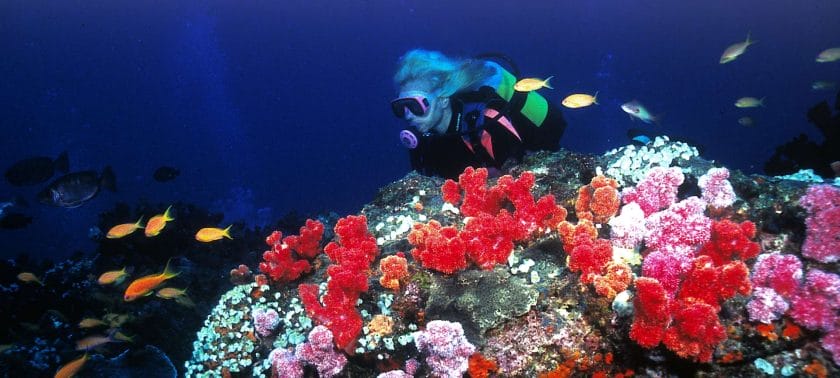
Deeper inland, the vast plains of Tsavo East and West National Parks – which together form the country’s largest contiguous protected area – offer fine Big Five game-viewing in a classic African safari setting .
Highlights of The Coastal Belt of Kenya
The historic island port of Mombasa is Kenya’s second-largest city and the central air, rail, and road gateway to the coast. Its atmospheric old town is capped by the 16m (52ft) high Fort Jesus, which has stood sentinel over the old harbor since the Portuguese constructed it in the 1590s.
Arguably the most popular and best-equipped tourist destination on the Kenyan coast, Diani doubles as an idyllic palm-fringed beach resort and base for some fine marine and terrestrial wildlife viewing.

The rolling slopes of Shimba Hills National Reserve, inland of Diani, support giraffes, zebra, warthog, elephant, buffalo, and sable antelope.
Situated to the south of Diani, only 10km (6,2mi) from the Tanzanian border, Shimoni is a low-key fishing village whose name – “Place of the Hole” – alludes to a gloomy beachfront cave that once served as a holding pen for slaves before they were shipped to Zanzibar. Chains and hooks dating to the cave’s ignominious past are still embedded in the walls.
Kenya’s most overt resort town, Malindi, has a delightful beach and lively Italian-influenced culinary scene, but it’s also scattered with landmarks that recall its long history as a medieval Swahili port and 16th-century Portuguese stronghold.
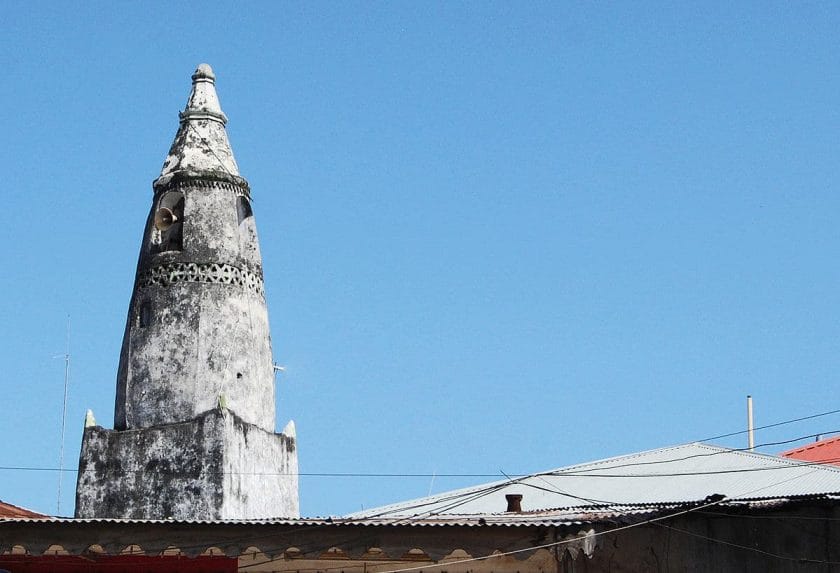
Arguably the most beautiful beach resort in Kenya, low-key Watamu is known for its superb offshore snorkeling and proximity to the jungle-bound Gedi National Monument and endemic-rich Arabuko-Sokoke National Park.
The remote and little-visited 28km2 (11 square mile) Tana River Primate Reserve protects an isolated stretch of riverine forest that supports the only known populations of two critically endangered species of endemic monkey: Tana River red colobus and Tana mangabey.
The sleepy and remote Lamu Archipelago is liberally endowed with idyllic beaches and snorkel sites, but its main attraction is Lamu Town, a traditional Swahili enclave whose unique architectural and cultural integrity has led to it being inscribed as a UNESCO World Heritage Site. Visits are not currently recommended due to security concerns relating to its proximity to Somalia.
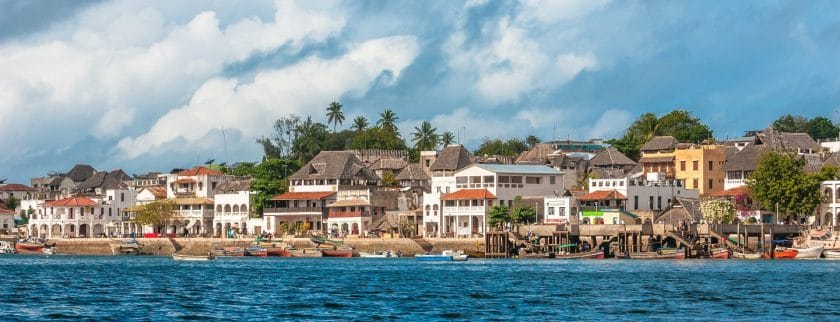
The vast Tsavo West National Park, bounded by the main road between Nairobi and Mombasa, is an untrammeled Big Five destination notable for its wilderness atmosphere, dramatic volcanic landscapes, and dense population of Black rhino protected within the well-guarded Ngulia Rhino Sanctuary .
Larger even than the eastern namesake it borders, Tsavo East National Park protects a wonderfully remote habitat of red-earth plains bisected by the perennial Galana River and inhabited by plentiful elephants, along with an alluring variety of localized dry-country birds and mammals.
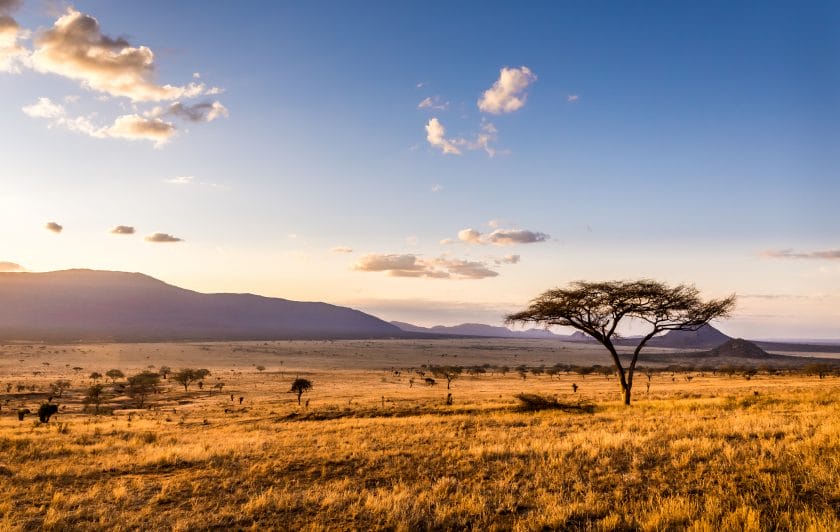
Ideal for beach holidaymakers seeking a one-night safari break, the Taita Hills Wildlife Sanctuary, which borders Tsavo West, offers stellar elephant viewing, as well as a good range of other plains wildlife, including lion and leopard.
Practical Advice for The Coastal Belt of Kenya
- The main gateway to the region is Mombasa, whose Moi International Airport is serviced by a steady stream of domestic and international flights. Mombasa is also connected to Nairobi by a direct 480km (298mi) road flanked by Tsavo West and East National Parks and a historic railway line that started operating in the 1890s.
- There are also regular flights to Malindi and Lamu, or you can travel by road between Mombasa and Diani, Malindi, or Watamu. Visits to Tsavo West and East National Parks, Shimba Hills National Reserve and Taita Hills Wildlife Sanctuary are best arranged with operators, though self-drive is a possibility for the intrepid.
- Accommodation is plentiful throughout the region, though it tends to be pricey in the national parks and more exclusive beach resorts. Good budget accommodation is available in Mombasa and Malindi.
Extending over 21,812km2 (8421 square miles), both Tsavo East and West form the largest conservation area in Kenya, protecting significant populations of all the Big Five.
Despite this, the parks are less popular than the Masai Mara and Amboseli due to the relatively low wildlife densities and difficulty spotting animals in the dense acacia woodland.
Separated somewhat arbitrarily by the main road between Nairobi and Mombasa, the two parks are nevertheless quite different in character.
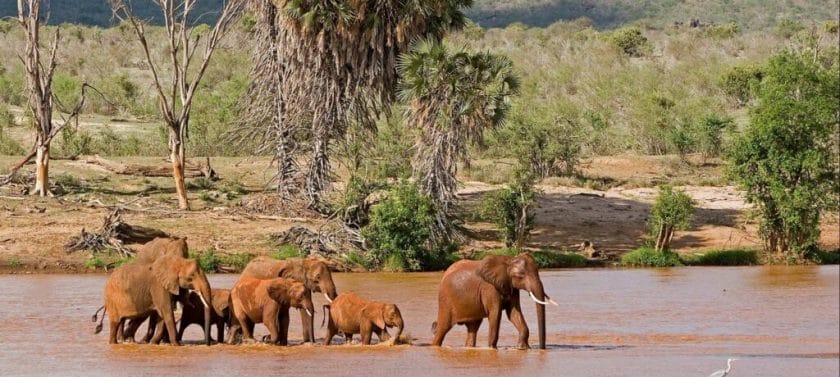
Tsavo West protects a volcanic landscape of jagged black outcrops, solidified lava flows, and tangled acacia woodland overshadowed by Kilimanjaro on the southwest horizon.
The red-earth plains of the larger and less developed Tsavo East have stronger affiliations with the semi-arid badlands of northern Kenya, despite being alleviated by the presence of the perennial Galana River.
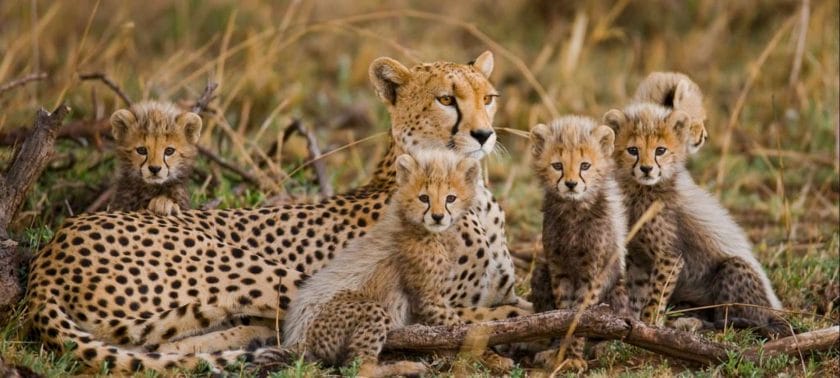
Both parks have a limitless wilderness atmosphere that will appeal to repeat safari-goers, with the western component being marginally better for conventional Big Five viewing. At the same time, its eastern counterpart ranks higher for localized antelope and bird species associated with northern Kenya.
Highlights of Tsavo East and West in Kenya
The Shetani Lava Flow is the most spectacular of the many stark volcanic landmarks that scar the northern circuit of Tsavo West.
A 200-year-old stream of jagged tar-coloured solidified magma, its Swahili name means ‘Devil’. It’s avoided by locals, whose oral traditions recall that many people and animals were buried alive beneath the fast-flowing fiery lava when it erupted from the nearby Chyulu Hills.
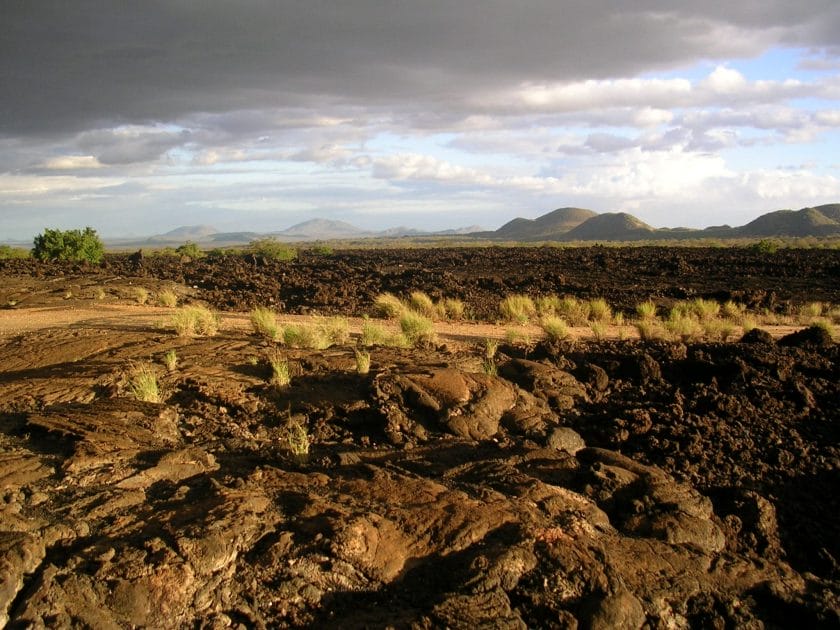
At once immensely beautiful and a fascinating geological phenomenon, the oasis-like Mzima Springs is fed by a sparkling clear subterranean stream that rises on Kilimanjaro before being filtered through the porous volcanic rocks of the Chyulu Hills.
The primary source of water for Mombasa, Mzima supports a lush groundwater forest of palms and fever trees, plenty of woodland and aquatic birds, and a few pods of hippos that can sometimes be observed underwater from a submerged observation chamber.
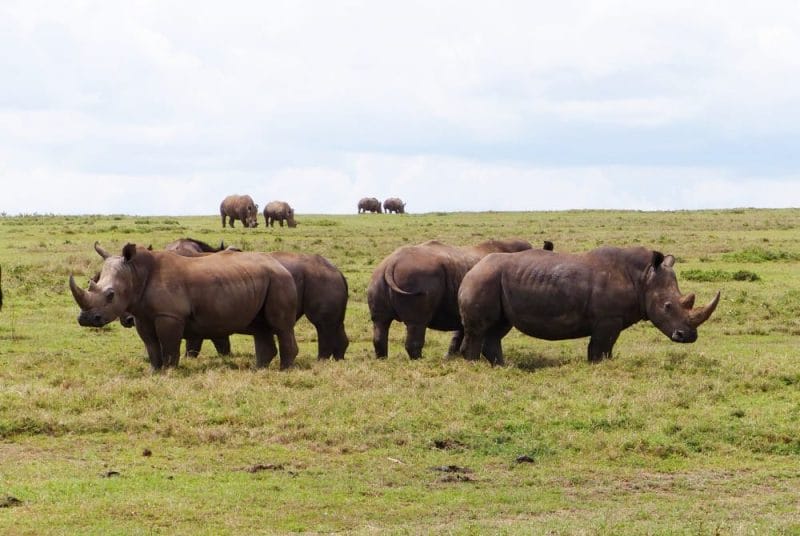
Created in 1986 to protect the Tsavo West’s last few Black rhinos, Ngulia Rhino Sanctuary is enclosed by a tall electric fence and guarded by a dedicated anti-poaching unit.
The sanctuary has five waterholes and now supports a population of around 70 Black rhinos (roughly one per square kilometer), which means the chances of spotting this elusive creature are excellent.
A shallow sump-like waterbody set in the far south of Tsavo West below Tanzania’s North Pare Mountains, Lake Jipe attracts plenty of elephants and supports large numbers of hippos and crocodiles. Boat trips offer an opportunity to see localized aquatic birds such as Lesser jacana, Pygmy goose, and Black coucal.
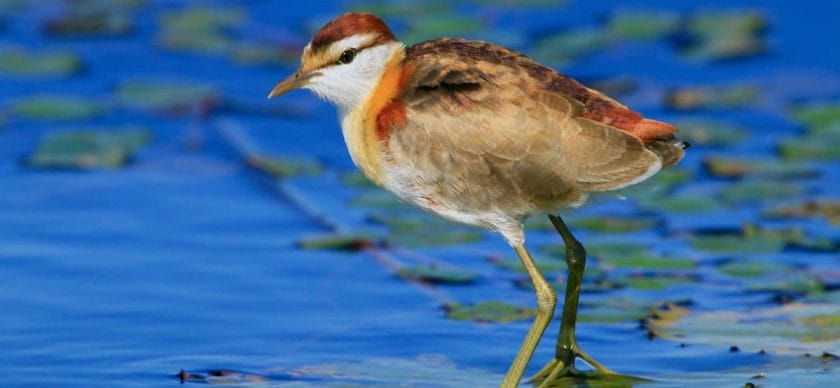
Lake Chala is a translucent crater lake situated on the southern foot slopes of Kilimanjaro bordering Tanzania. Almost 3km (1.9mi) in diameter, yet practically invisible until you topple over the caldera’s rim, wherein it nestles, the lake is gorgeous when Kilimanjaro emerges from the clouds on the northern horizon.
Rising to 2,208m (7,244ft) on the border of Tsavo West, the isolated Taita Hills is the only Kenyan component of the Eastern Arc Mountains, a series of 13 massifs whose ancient forests are known for their high level of endemism.
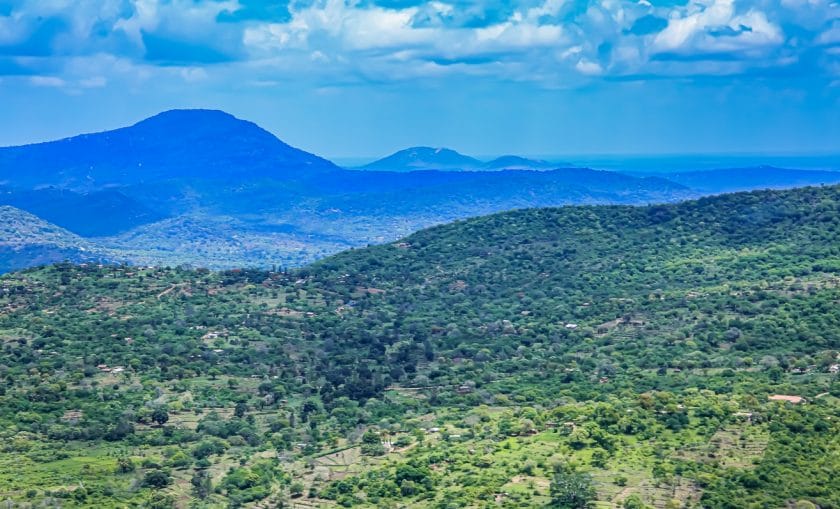
It is renowned among birdwatchers as the only place to see the Critically Endangered Taita thrush, along with Taita apalis, Taita white-eye, and Taita falcon.
Sharing an unfenced border with Tsavo West, Taita Hills Wildlife Sanctuary lies on the scrubby plains below the mountains after which it is misleadingly named.
It’s most often visited on a standalone overnight safari package from the coast, inclusive of day and night drives – the latter offering a good chance of spotting secretive nocturnal species such as leopard, White-tailed mongoose, Honey badger, and Genet. The quirkily stilted Salt Lick Lodge is wonderfully positioned for in-house elephant viewing.
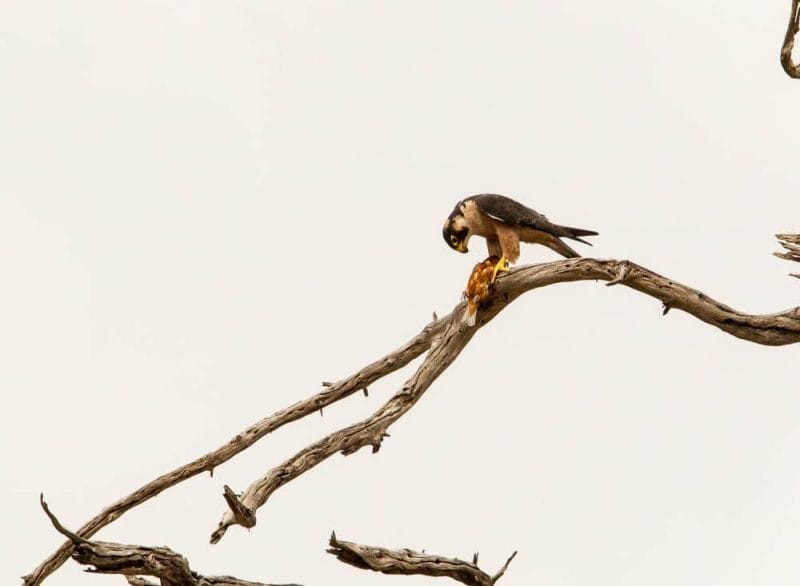
A significant focal point for game-viewing in Tsavo East is Aruba Dam, which was constructed on the Voi River in 1951 and is the only permanent water source in the vicinity.
Lions are often seen resting below the trees around the dam, while the road running west towards Voi Gate is an excellent place to look for cheetahs, impala, Coke’s hartebeest, zebra, and gazelle.
The arid plains running north towards the Galana River pass through scrubby plains that support several localized dry-country creatures, notably Gerenuk, Fringe-eared oryx, Somali ostrich, Golden pipit, Vulturine guineafowl, and Golden-breasted starling.
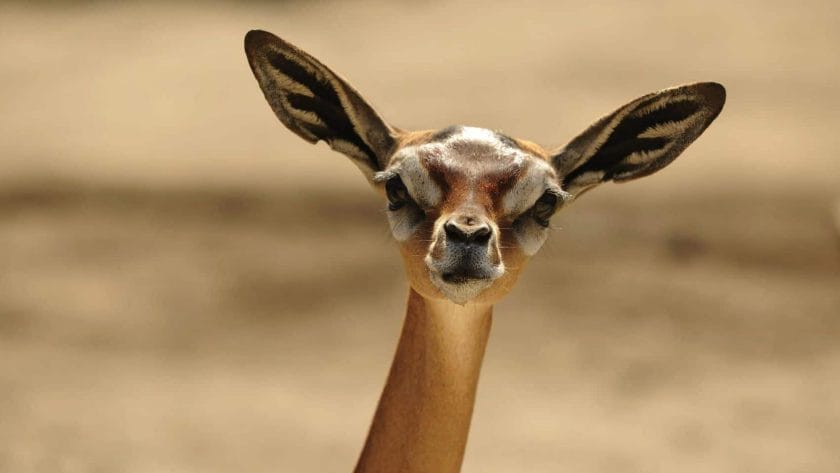
The most significant landmark on the Galana River as it runs through Tsavo East is Lugard Falls, a series of rapids that flows across a bed of black dolomite striated with white quartzite rocks. A good hippo pool stands a short way downriver of the falls.
A significant landmark in Tsavo East, the 1.5km (0,93mi) long Mudanda Rock – East Africa’s answer to Ayer’s Rock – overlooks a waterhole where elephant and buffalo gather to drink and wallow, and leopards sometimes emerge towards dusk.
Practical Advice for Tsavo East and West in Kenya
- Road access to both Tsavo East and West is straightforward since the two parks are bisected by the Nairobi-Mombasa highway, which also forms the border between them.
- Tsavo West is often incorporated into a southern road safari out of Nairobi or running between Nairobi and the coast, together with Amboseli. Tsavo East is perhaps more often visited as a standalone road excursion from coastal resorts such as Malindi or Mombasa, as is the Taita Hills Wildlife Sanctuary.
- In all instances, it’s best to make arrangements with an experienced safari company, though self-drive out of Nairobi or Mombasa is a possibility too, and charter flights service both national parks.
- Tsavo East and West and Taita Hills Wildlife Sanctuary are all served by a selection of upmarket lodges and tented camps . Budget accommodation can be found in the towns of Voi or Mtito Andei, which stand alongside the Nairobi-Mombasa highway close to the main gates for Tsavo East and West, respectively.
Like Mombasa, Malindi is an ancient Swahili trading port that fell under Portuguese influence in the 16th century. It is far smaller and more low-rise than Mombasa and has a less conspicuous sense of antiquity, though the old town is scattered with a few important historical landmarks.
These days, Malindi, more than any other comparably large town in Kenya, functions mainly as a beach resort. It offers a good choice of midrange lodges aimed at the European package market, as well as a lively beachfront restaurant scene and a host of other urban distractions, from nightclubs to supermarkets.
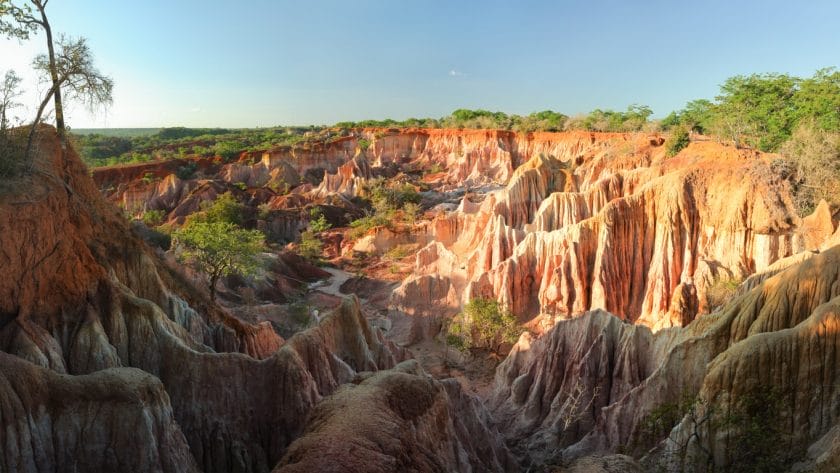
Separated from Malindi by 15km (9,3mi) of Indian Ocean frontage, Watamu feels less like a resort town than an overgrown fishing village and is all the better for it.
Boasting arguably the most gorgeous beach in Kenya, Watamu also offers superb offshore snorkeling in the calm, transparent waters of Turtle Bay. It stands practically within walking distance of the jungle-bound ruined medieval city of Gedi and forest wildlife of Arabuko-Sokoke National Park.
Highlights of Watamu and Malinda
The most significant monuments in Malindi Old Town are a pair of 15th-century pillar tombs standing in front of the seafront Friday Mosque and a small thatched chapel built by the Portuguese in the early 16th century.
The limestone Da Gama Cross, erected by the pioneering Portuguese navigator Vasco Da Gama after he landed at Malindi in 1499, stands on a windswept coral peninsula a short walk south of the town center.
The National Museum of Malindi is housed in the three-story waterfront ‘House of Columns’ built by an Indian trader circa 1890. Displays include a stuffed 77kg (170lb) coelacanth and a collection of engraved Gohu burial totems.
Malindi and Watamu have good sandy swimming beaches, but the latter’s Turtle Bay stands out scenically, thanks to a distinctive forest of ragged coral formations that rise out of the preposterously clear water like giant mushrooms.
Africa’s oldest marine reserve, Malindi Marine National Reserve, protects 213km2 (82 square miles) of offshore reefs and open water, running south from Malindi to Mida Creek. It offers some of East Africa’s finest marine wildlife viewing, with the tranquil coral gardens of Watamu’s Turtle Bay ideal for snorkeling, while diving is usually undertaken on the more extensive barrier reefs further out to sea.
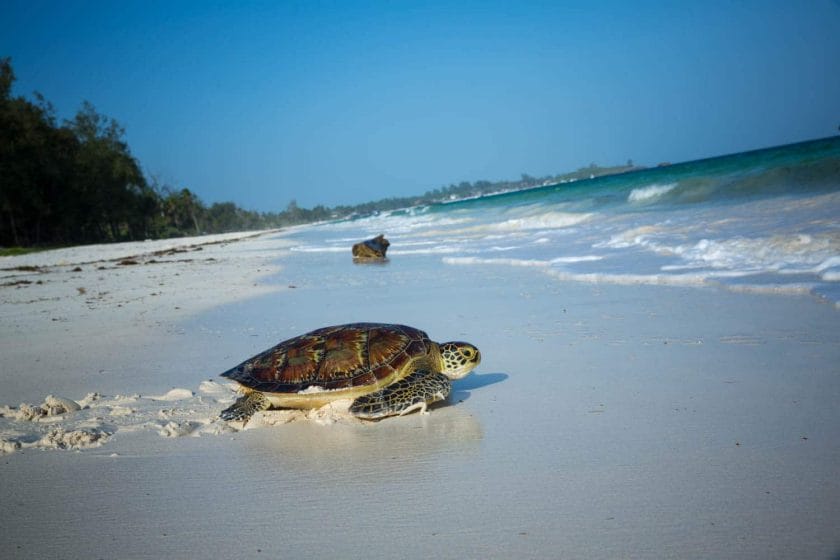
Separated from the open sea by the Watamu Peninsula, Mida Creek is an essential marine bird-watching site that can be explored on a stilted boardwalk and small hide constructed as part of a community-based ecotourism project.
A vital wintering site for Palaearctic migrants such as Crab plover and Grey plover, it is also a good place for Mangrove kingfisher and Greater flamingo. The surrounding coastal scrub hosts the less striking, but very rare, Sokoke pipit.
The 420km2 (162 square mile) Arabuko-Sokoke National Park protects East Africa’s largest remaining tract of coastal forest and a host of globally threatened and near-endemic mammals and birds, including Ader’s duiker, Sokoke dog mongoose, Yellow-rumped elephant-shrew, Chestnut-fronted helmetshrike, Clarke’s weaver and Sokoke scops owl.
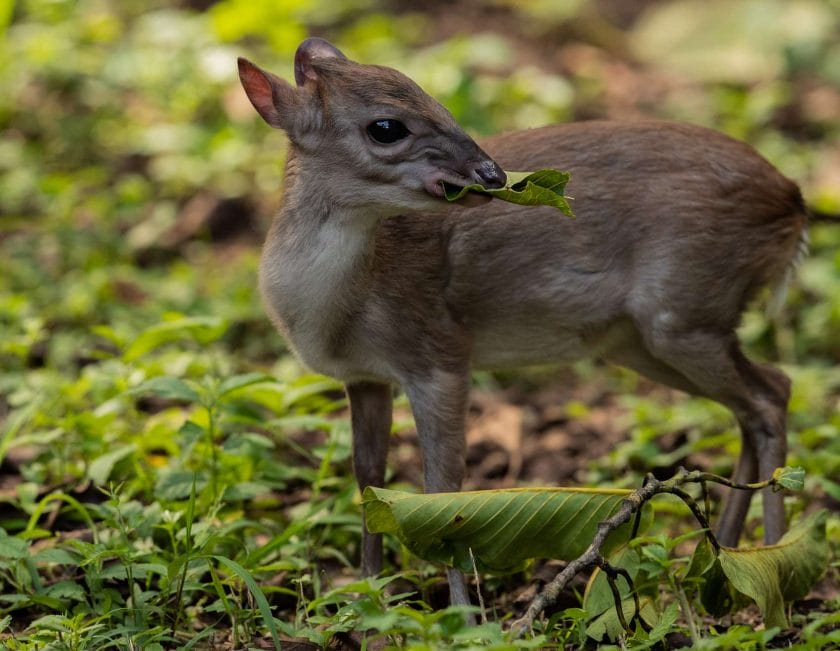
Large fresh paths often seen on the park’s extensive network of roads and walking trails serve to remind that it’s also home to a furtive and seldom-seen population of 120 elephants.
The most impressive and atmospheric of the many medieval ruins along the Kenyan coast, Gedi National Monument protects the remains of a 20-hectare walled Swahili city-state that flourished as a cabinet of maritime trade between the 11th and 13th centuries.

The museum displays artifacts found on site but manufactured from as far afield as India, Egypt, Arabia, and Spain, and the jungle-bound ruins include a 900m2 (9,688 square foot) Sultan’s Palace and eight mosques. A birdwatching platform high in a baobab tree between the palace and the largest mosque offers a superb monkey’s-eye overview of the site.
Also known as Hell’s Kitchen, the Marafa Depression, 35km (22mi) northwest of Malindi, is studded with spectacular sandstone pillars that stand up to 30m (98ft) tall and come across like a miniature version of the Grand Canyon. It is most impressive in the early morning when the layered columns glow pink.
Practical Advice for Watamu and Malinda in Kenya
- Watamu and Malindi lie about a 90-minute drive north of Mombasa. There are also scheduled flights from Mombasa, Lamu, and Nairobi to Malindi, whose airport lies 3km (1,9mi) from the town centre and less than 20km (12mi) from Watamu.
- Both towns have plenty of accommodation. Malindi is stronger on package hotels and budget accommodations aimed at backpackers, while Watamu’s hotels tend to have a more individualistic feel.
- Any hotel or local operator can set up diving and snorkeling excursions or day trips to Gedi, Arabuko-Sokoke, or the Marafa Depression.
Travel with Confidence
With over 20 years of experience, our team will help you choose the perfect african safari for your adventure., 24/7 support, personalized, popular kenya safaris, these recommended tours for kenya can be tailor-made to match your budget..
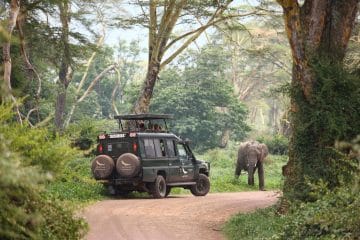
Highlights of East Africa - Luxury experience
East Africa Tanzania Ngorongoro Crater Serengeti Kenya Maasai Mara
From $ 8900 /USD
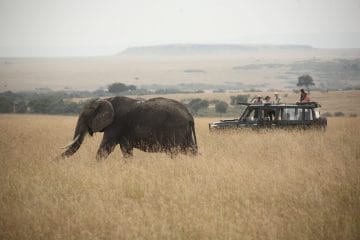
Kenya & Tanzania Highlights Luxury Safari
East Africa Kenya Chyulu Hills Maasai Mara Tanzania Tarangire
From $ 15600 /USD
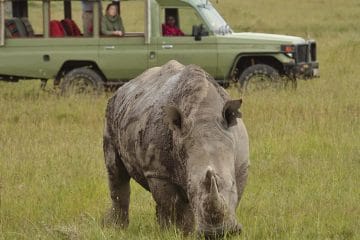
- Family Safari in Kenya
East Africa Kenya Laikipia, Lewa and Ol Pejeta Conservancy Maasai Mara
From $ 15300 /USD
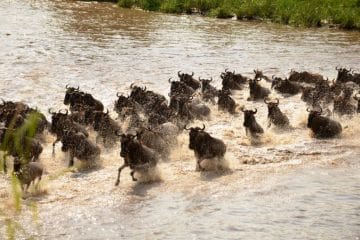
Migration Safari in Kenya and Tanzania With a F...
East Africa Kenya Maasai Mara Tanzania Serengeti Ngorongoro Crater
From $ 7250 /USD
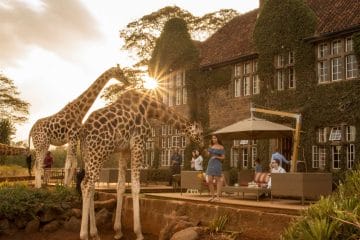
Giraffe Manor and Luxury Mara Wildlife Discovery
East Africa Kenya Nairobi Maasai Mara
From $ 10900 /USD
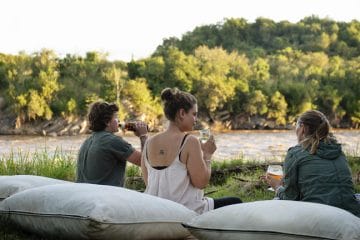
Unplugged Safari in the Mara
East Africa Kenya Maasai Mara
From $ 7880 /USD
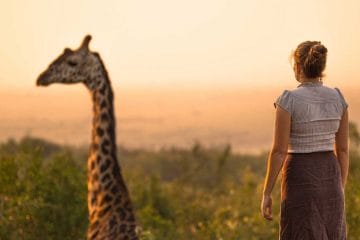
21 Kenya Safaris to choose from
Stay for 4 - 17 days
Experience our Tailor-made Tours in Kenya
When is the best month to travel to kenya.
- Kenya in January
January tends to fall in Kenya’s wet season in the broader sense of the term (November to May). It lies outside of the two notable ‘long’ and ‘short’ rain periods, which means that you can expect much less rain with stunning landscapes, albeit unpredictable at times. Potential showers are generally quite short and occur in the afternoon, so they won’t affect your safari.
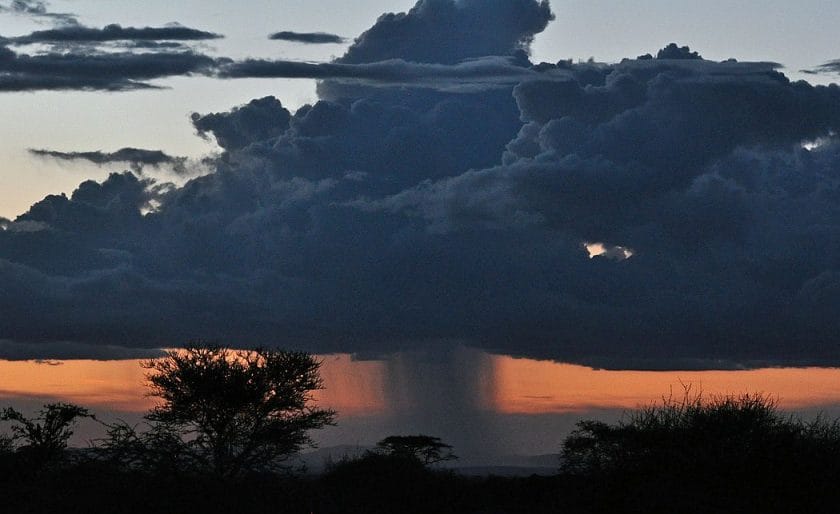
Nairobi and the central highlands are hot by day, cool by night, and receive moderate rain. Mombasa and the coast are scorching by day, rather hot at night, and receive little rainfall.
The Rift Valley and western interior are hot by day, cool at night, and receive very little rainfall.
- January is a good time for beach holidays on the Kenyan coast, though daytime temperatures can get very high. This is an excellent time to visit the Mara because January is when it experiences one of its driest spells, with only around five days of rain.
- Game viewing in most Kenya safari destinations is good in January. Birdlife is boosted by a variety of intra-African and Palaearctic migrants.
- For divers and snorkelers, January is probably the best month to see larger marine creatures such as whale sharks, manta rays, and various sharks, dolphins, and turtles.
- Being relatively warm and dry, January is one of the best months for climbing Mount Kenya.
- Kenya in February
Nairobi and the central highlands are hot by day, cool by night, and receive a moderate amount of rain. Mombasa and the coast are sweltering by day, rather hot at night, and receive very little rain.
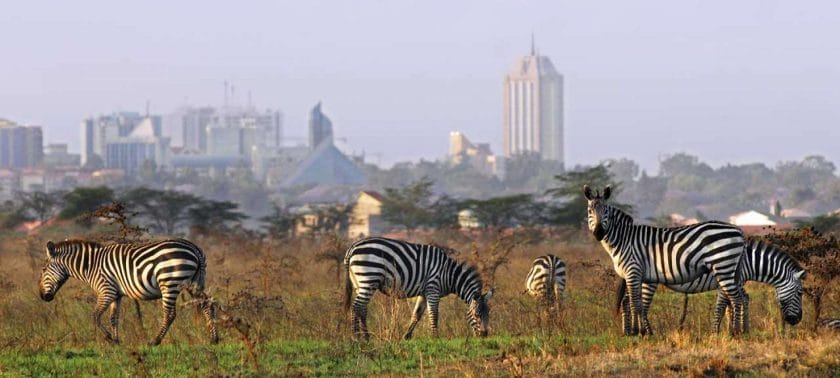
- February is a good time for beach holidays on the Kenyan coast, though daytime temperatures can get very high. Game viewing in most safari destinations in Kenya is good this time of the year, while birdlife is boosted by various intra-African and Palaearctic migrants.
- February experiences the lowest precipitation levels in the Masai Mara, compared to the rest of the year, with only around three days of rain. Due to this, the chances of spotting the wildlife at the watering holes are higher.
- For divers and snorkelers, February is a good month to see the larger marine creatures such as whale sharks, manta rays, and various sharks, dolphins, and turtles. Being relatively warm and dry, February is one of the best months for climbing Mount Kenya – Africa’s second highest peak after Mount Kilimanjaro in neighboring Tanzania.
- Kenya in March
Nairobi and the central highlands are hot by day, comfortable at night, and receive moderate to high rainfall. Mombasa and the coast are very hot by day, rather hot at night, and receive occasional rain.
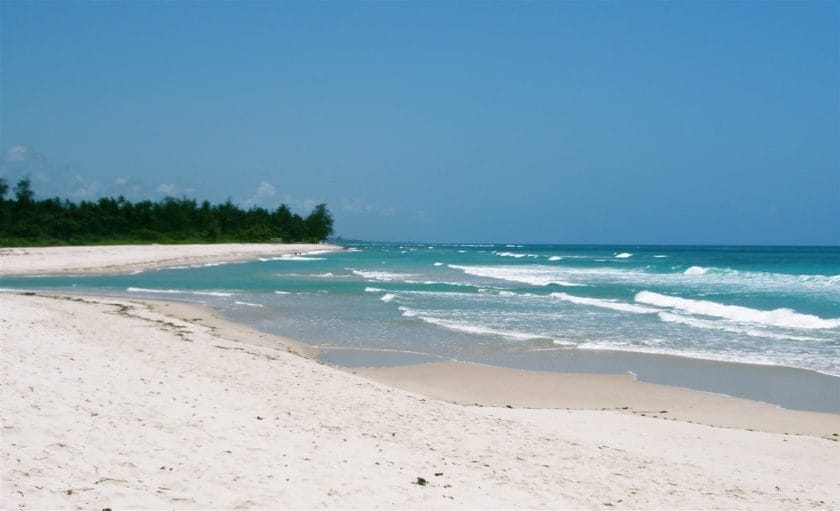
The Rift Valley and western interior are hot by day, cool at night, and receive periodic rain.
- March is the hottest month on the coast, but if you can tolerate the heat, it’s a good time for beach holidays .
- March usually signals the start of the long rains in most Kenya safari destinations , which means that game viewing can be relatively challenging, as animals are dispersed away from water sources. Thick vegetation tends to reduce visibility, and minor tracks may be inaccessible when inundated with water.
- Coastal areas will benefit from clear sea visibility before the arrival of the rains, so diving is excellent, and marine life abounds.
- Kenya in April
Nairobi and the central highlands are hot by day, comfortable at night, and receive plenty of rain. Mombasa and the coast are very hot by day, rather hot at night, and receive little rain.
- The Rift Valley and western interior are hot by day, cool at night, and receive high rainfall. April can produce some moody backdrops for wildlife and landscape photography – be sure to take the correct gear along to protect yourself and your equipment from the elements.
- April is one of the wettest months on the coast and not suitable for beach holidays or underwater activities. As a result, game viewing can be challenging, as animals are dispersed away from water sources, and thick vegetation tends to reduce visibility. Minor tracks may be inaccessible when inundated with water. Most Intra-African and Palearctic migrant birds will have flown north by April.
- Kenya in May
The Rift Valley and western interior are hot by day, cool at night, and receive high rainfall.
May could be an excellent (more cost-effective) option for seasoned safari-goers because it offers the chance to experience a Kenya safari in a completely different light.
Although, this is not recommended for first-time safari enthusiasts because the chances of seeing much wildlife are slimmer.
- May is by far the wettest month on the coast, with an average monthly rainfall of more than 300mm (12in), making it a very poor time for beach holidays or underwater activities.
- The long rains continue into May in many Kenya safari destinations . As a result, game viewing can be challenging, as animals are dispersed away from water sources, and thick vegetation tends to reduce visibility. Minor tracks may be inaccessible when inundated with water.
- Kenya in June
Nairobi and the central highlands are warm by day, cool at night, and receive little rainfall. Mombasa and the coast are hot by day, relatively cool at night, and receive a fair amount of rain.
The Rift Valley and western interior are hot by day, cool at night, and receive occasional rain. Some of the rains brought in by the Kusi monsoon occur early in June. However, as the month progresses, the cooler, drier weather develops.
The climate throughout June becomes much more comfortable than in the preceding months, particularly in the highlands.
Although drier, it is likely to remain cloudy, keeping the sun and higher temperatures at bay. This can be a great time to travel with children as you don’t need to worry about humidity and constant sunscreen application.
- June is one of the wettest months on the coast and not suitable for beach holidays or underwater activities.
- Game viewing in most safari destinations in Kenya is good in June.
- First held in 2008, the annual Lake Turkana Festival, a colourful showcase for 14 traditionalist ethnic communities associated with the northern deserts, takes place in the small town of Loiyangalani, usually in June.
- Kenya in July
Nairobi and the central highlands are warm by day, cool at night, and receive practically no rain. Mombasa and the coast are hot by day, relatively cool at night, and receive a fair amount of rain.
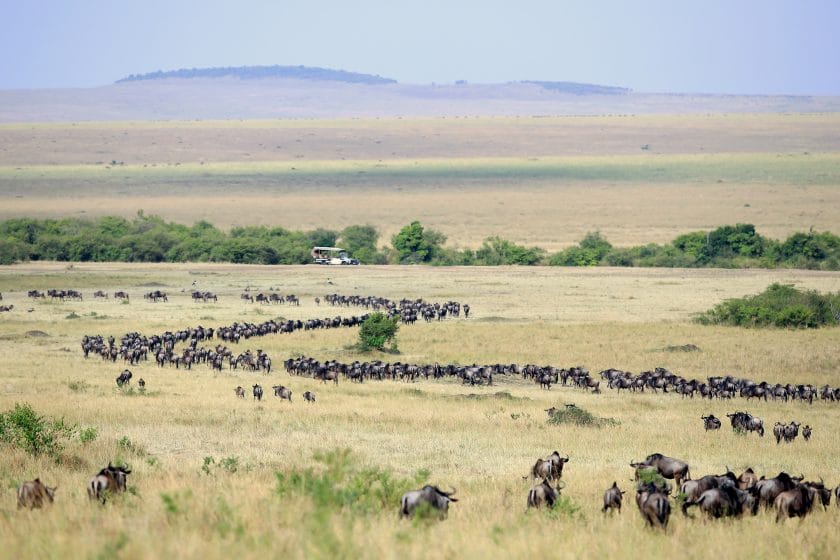
The Rift Valley and western interior are hot by day, cool at night, and receive moderate to high rainfall.
Come prepared with lots of layers, especially for morning and night drives – this is even more important in higher altitude parks and conservancies such as the Mara and Laikipia.
- July is an ideal time for beach holidays on the Kenyan coast, being the coolest month and relatively dry. Game viewing in most safari destinations is good in July.
- The wildebeest migration sometimes arrives in the Masai Mara towards the end of the month, making it a spectacular opportunity to possibly view river crossings.
- Kenya in August
The Rift Valley and western interior are hot by day, cool at night, and receive rather high rainfall.
- August is an ideal time for beach holidays on the Kenyan coast, being the second-coldest month and relatively dry. Game viewing in most safari destinations is good in August. August is usually when the migration arrives in Kenya from Tanzania and prime wildlife-viewing season in the Masai Mara.
- Although safari guides will try their best to take you to the quieter areas at the right time, if you’re looking for a less crowded experience, consider a different time of the year.
- Humpback whales are often seen off the coast in August-September.
- Kenya’s quirkiest annual event since it was first held in 1990 is the International Camel Derby Festival. This three-day event takes place in Maralal, usually on the second weekend in August.
- Kenya in September
Nairobi and the central highlands are hot by day, cool at night, and receive practically no rain. Mombasa and the coast are hot by day, relatively cool at night, and receive a fair amount of rain.
The Rift Valley and western interior are hot by day, cool at night, and receive moderate rainfall.
- September is a good time for beach holidays on the Kenyan coast, being relatively cool and dry.
- Game viewing in most safari destinations during a holiday in Kenya is good in September. The wildebeest migration is usually well ensconced in the Masai Mara, making it arguably the best time to visit this reserve.
- Humpback whales are often seen off the coast in August-September. Being relatively dry in the highlands, September is one of the best months for climbing Mount Kenya .
- Kenya in October
Nairobi and the central highlands are hot by day, cool by night, and might receive occasional rain. Mombasa and the coast are very hot by day, rather hot at night, and receive moderate to high rainfall.
- October is a reasonable time for beach holidays on the Kenyan coast, being relatively cool and not too wet.
- Game viewing in Kenya on safari at most safari destinations is good in October. The wildebeest migration is usually still found in the Masai Mara, making it a great time to be on safari there.
- The post-migration calm and pleasant climate make October a good time to visit Kenya for a safari. Wildebeest and zebra can still be seen in their numbers throughout the Mara, offering great photographic safari opportunities .
- Kenya in November
Nairobi and the central highlands are hot by day, cool by night and receive a high rainfall.

Mombasa and the coast is very hot by day, rather hot at night, and receives a moderate to high rainfall. The Rift Valley and western interior are hot by day, cool at night and receive a moderate rainfall.
- November isn’t the best time for beach holidays on the Kenyan coast, since it is quite wet and daytime temperatures can get very high. Game viewing in most safari destinations is good in November, though there is a risk of it being interrupted by storms during the short rains. This transitional month also usually heralds the arrival of large numbers of intra-African and Palaearctic migrant birds.
- For divers and snorkelers, November is a good month to see larger marine creatures such as whale shark, manta ray, and various sharks, dolphins and turtles.
- The multicultural Mombasa Carnival, Kenya’s most colourful street festival, is held in the eponymous port city every November.
- Kenya in December
Nairobi and the central highlands are hot by day, cool by night and receive a moderate to high amount of rain. Mombasa and the coast is very hot by day, rather hot at night, and might receive occasional rainfall.
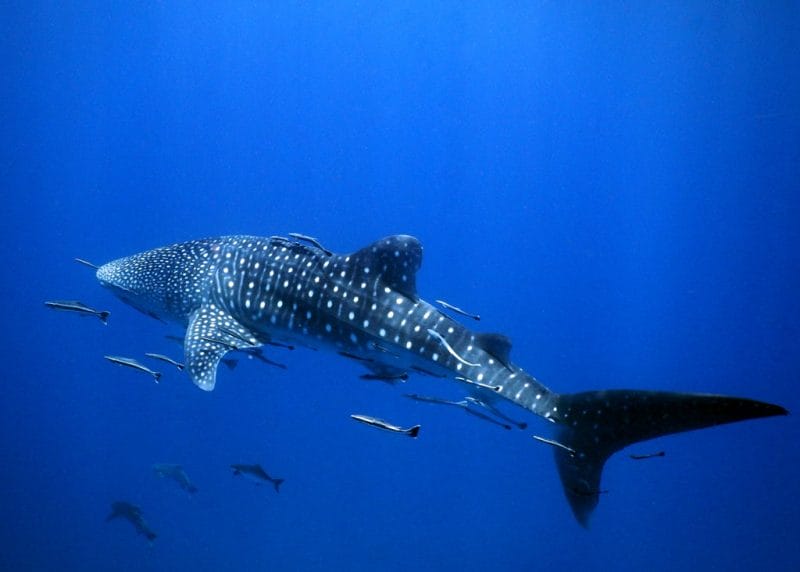
The Rift Valley and western interior are hot by day, cool at night and receive occasional rain.
From December onwards the Tsavo sees an increase in humidity and although it can get rather intense, it’s still a good time to visit the coastal regions. The ocean breeze also helps to alleviate the heat and the warm water is a pleasure.
- December isn’t the best time for beach holidays on the Kenyan coast, since it is quite wet and daytime temperatures can get very high. Game viewing in most safari destinations is good in December. Birdlife is boosted by a variety of intra-African and Palaearctic migrants.
- For divers and snorkelers, December is a good month to see larger marine creatures such as whale shark, manta ray, and various sharks, dolphins and turtles.
Our Recommended Tours in Kenya
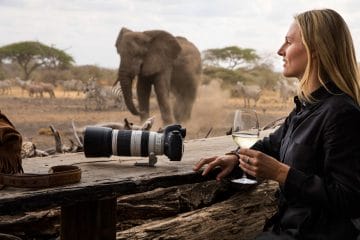
Enchanted Kenyan Safari
East Africa Kenya Chyulu Hills Maasai Mara
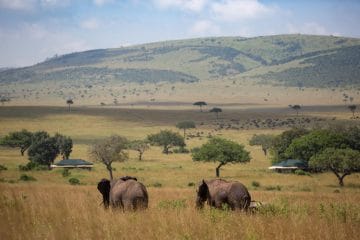
Highlights of Kenya Luxury Fly-In Safari
East Africa Kenya Nairobi Chyulu Hills Maasai Mara
From $ 10068 /USD
Looking for Something Unique?
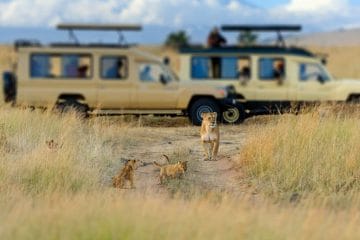
Big Cat Safaris in Africa
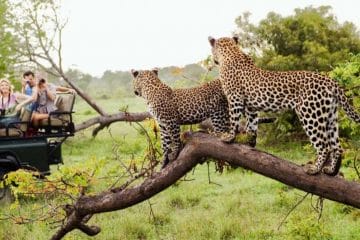
Big Five Safaris in Africa
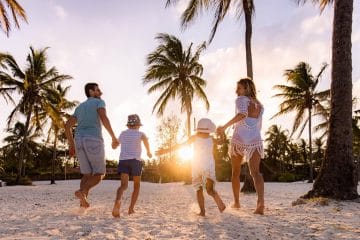
Beach Holidays in Africa
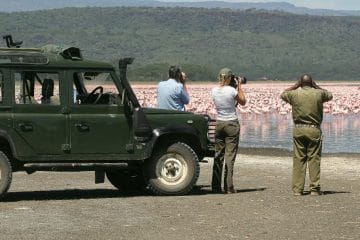
Birding Safaris in Africa
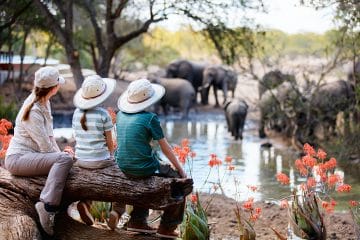
Family and Kid-Friendly Safaris in Africa
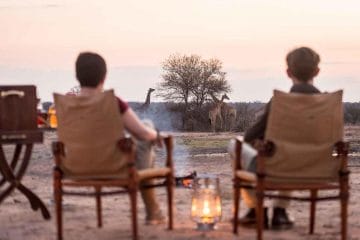
Honeymoons in Africa
Why travel with us?
Recent reviews from travellers who planned and booked their africa trips with discover africa safaris, amazing trip.
Kruger, Mozambique & Cape Town Safari Review
Renee, United States 26 Jan 2024
Trip of a lifetime.
9 Day Makalali & Timbavati Safari Review
Judy, United States 24 Nov 2023
Helpful and very friendly.
Namibia Self-Drive Journey Review
François Couvreur, France 25 Apr 2023
Adelle was amazing, arranging our last-minute holiday and making it simply superb.
Uganda Holiday Review
Anna, United Arab Emirates 21 Feb 2022
Fantastic tour operator who pulled together a wonderful holiday for us at....
Safari Tours in Africa Review
Chris, United Kingdom 13 Jan 2021
Our agent was very efficient and replied to our emails without any....
Review of South African Safari
Madeline & Raymond Goodman, Australia 13 Jun 2015
Ready to plan your tailor-made safari.

Devryn Panaino, Safari Travel Planner
Free safari planning advice from destination experts
Faqs about kenya.
- The currency that you will be using on a Kenya Safari is the Kenyan shilling.
- Pack neutral-coloured clothing to blend into the bush during Game drives
- Long-sleeved shirts help to provide sun and mosquito protection
- T-shirts and shorts are also great for warmer days
- Evenings and cooler days call for jeans or longer pants
- A rain-proof jacket is always a good idea to pack along
- White Rhino
- Cape Buffalo
- Masai ostrich
- African Leopard
- The Nile Crocodile
- African Elephants
- The most apparent area to look for rhinos is Nairobi National Park, which is located on the outskirts of Nairobi, Kenya's capital. This national park is a fantastic place to visit during a safari in Kenya .
- Nairobi National Park is a national park in Kenya's south-central region, located 5 miles (8 kilometers) south of Nairobi.
- August is the best time to see the wildebeest migration cross the Mara River . The crossings will continue through September - which is generally your last chance of seeing them cross the Mara River.
- Kenya has a world of variety when it comes to tented accommodation camps, you’ll feel like you’ve been transported to another realm in the bush as your every desire comes try.
Our Recommended Activities in Kenya
- Camel safaris
- Walking safaris – short walks, 2 – 3 hours
A fairly new activity to the African safari, camelback riding is an incredible experience.
Camelback safaris take place in northern Kenya’s Laikipia county. This mode of transport was (and still is) used by the Arab traders and has filtered down to northern Kenya’s Samburu and Turkana tribes. These gentle creatures have a soft nature as they quietly stroll through the arid landscape. Just like horseback riding, there is no disturbance to the wildlife on a camel safari. It’s a great way to get closer to the animals.
There are a few lodges and camps that offer camelback safaris and they are traditionally found close to the northern frontier in Kenya’s Samburu country. Camels have slowly moved further south and places as far as Cape Town also offer camel rides. Bear in mind that these won’t be safaris, just rides through a nature reserve or park. Arusha in Tanzania is another place offering travellers camel rides.
An area that’s starting to thrive with camel rides is the regions close to the Sahara Desert and will be available soon is Chad’s Zakouma National Park.
It’s easy to include a camelback ride or safari to an African itinerary – merely a question of picking the right accommodation options where they are offered. It’s a brilliant way of exploring the area in a traditionally north African way and a great new perspective on wildlife and landscape.
Hone your senses to the African bush, see the small things that you miss from the vehicle and get the chance to see the Big Five on foot.
Walking Safaris bring the bush alive and the thought that a lion, elephant or buffalo may be just on the other side of a bush is absolutely thrilling. Seeing the African savanna on foot gives it an entirely different beauty, with sights and smells that are easy to miss from an elevated safari vehicle.
There are many camps throughout Africa that offer short or half day walks beyond the camp or along a designated walking route. All the walks take place within a controlled environment and the routes are safe. Travellers are accompanied by trained guides, making it a secure and gentle way to walk in the wild.
Walking through the Masai Mara, Loita Hills, Tsavo, Amboseli, Lake Natron or Serengeti with a traditional Masai must be one of the best walks to do in Africa as he shows travellers his childhood village, the land beyond and shares local wisdom acquired by these tribes over centuries. Things like scorpion catching, bow hunting and herding cattle in these vast lands is just part of everyday life for the Masai and they invite safari goers to try their hand at these skills and have a peak into a life lived as nomads of the East Africa plains.
These walks should not be confused with multiday walking safaris where travellers walk for three or four full days, sleeping in bush camps. The day walks are ideal for bringing the kids along as it’s easy, educational and loads of fun.
There are many accommodation options, and consequently many walking safaris, within and far beyond the Masai Mara. Many camps in Africa offer bush walks as an activity, so it’s simply about booking the perfect accommodation that will take you on one of these memorable walks.
See Kenya in Your Comfort
- Affordable Safari Holiday in Kenya
- Budget Safari Holiday in Kenya
- Luxury Safari Kenya
Visitors who want to explore the major attractions without spending too much money should consider joining a set departure or group safari tour in Kenya , either with a safari company or an overland truck. You could also consider traveling out of season.
The set group safari departures in Kenya have different accommodation options, starting from mid-range and going up.
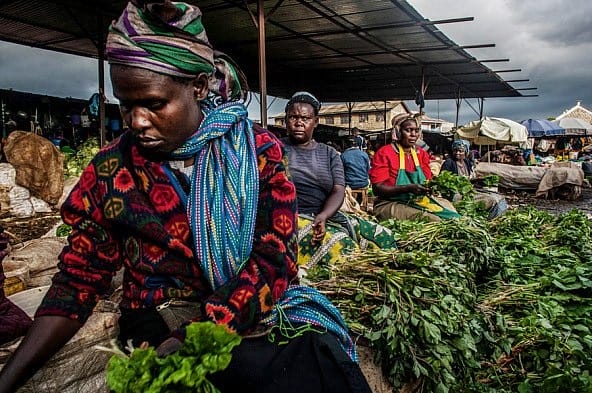
Eating out is generally quite inexpensive unless you actively seek out top-of-the-range restaurants aimed at upmarket tourists and ex-pats.
Wine is almost all imported and tends to be disproportionately expensive compared to the cheap and refreshing local beers.
Kenya is relatively easy to travel through on a tight- budget safari holiday tour , with two main provisos. The first is that high daily entrance fees at game parks, and the need for a 4×4, make most safari-oriented reserves difficult to explore cheaply, so you would need to focus on other attractions.
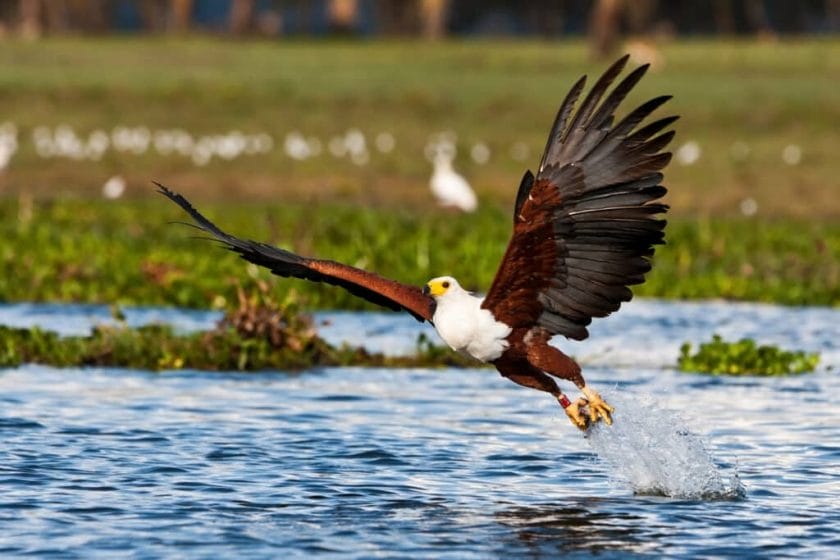
The second is that, wherever possible, you’ll need to use amenities geared towards the local economy (buses, guesthouses, and small restaurants catering mainly to Kenyans) rather than those charging inflated prices to tourists and ex-pats.
Attractions particularly well-suited to budget Kenya safari travelers include Lake Naivasha, Lake Baringo, most parts of the far west and central highlands, and the entire coast.
Kenya is a country of contrasts; everywhere you look, you’ll see different tribes, all dressed up in their finest. The culture here is incredible, but regions like the Masai Mara, when paired with the north (Samburu, Laikipia, or Meru), feel like you’ve been transported to another country.
Kenya’s coastline is equally beautiful, with white beaches and a turquoise sea, not to mention Lamu, one of the world’s most distinctive islands and a quiet refuge. Kenya is also home to the Great Rift Valley , whose lakes will provide a peaceful break from your luxury safari in Kenya.
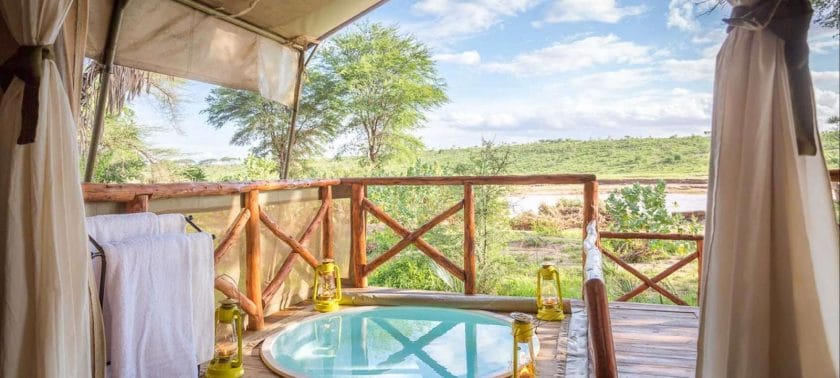
Overcrowding isn’t a concern for visitors who intend to travel to Kenya’s most isolated and luxury safari properties . It’s typically the Kenyan people who make your luxury Kenya safari so memorable – they are fascinating, engaging, and have a great sense of fun.
Your luxury Kenya Safari may include everything you choose, from the wilderness to the beach, leisure to action. Travel to two distinct locations and feel as if you’ve visited two different nations.
Those seeking luxury in the bush can pick from a variety of premium tented camps located on community or private concessions abutting the Masai Mara and Amboseli, as well as on the Laikipia Plateau.
Holiday Styles and Options in Kenya
- A Relaxed Safari Holiday in Kenya
- Adventure Holidays in Kenya
- An Active Holiday in Kenya
- Beach and Bush Safari Holidays in Kenya
- Big Five Safari Holidays in Kenya
- Birding Safari Holidays in Kenya
- Foodie Holidays in Kenya
- Kenya Honeymoon Safari
- Kenya Photographic Safari
- Malaria Free Holidays in Kenya
- Walking Safari Holidays in Kenya
Kenya’s Indian Ocean coastline offers ideal conditions for relaxation. The most popular resorts are Diana, Malindi, and Watamu. These resorts also boast a fine array of restaurants specializing in seafood and other international cuisines.
The interior of Kenya is suited to a feet-up kind of holiday. The best way to keep a safari in Kenya relatively relaxed is to visit fewer places and stay at least three nights at each of them to truly immerse yourself in the environment and engage fully with the wildlife.
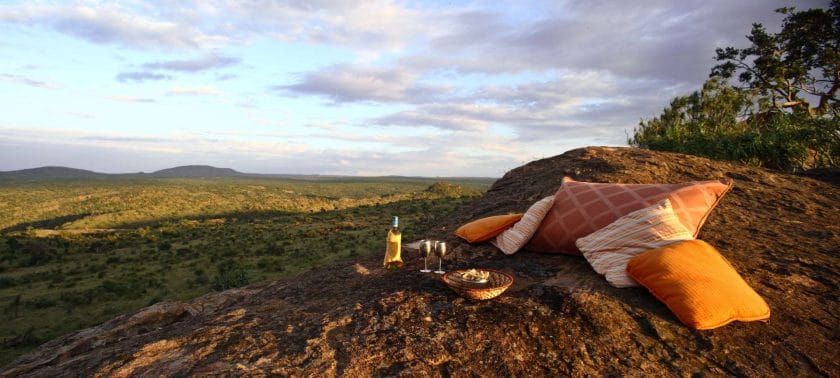
The tree hotels of Mount Kenya and the Aberdares offer possibly the most passive and relaxing safari experience in Africa, the idea being that you wait for the wildlife to come to the lodge rather than chasing it on game drives or walks.
Witness the annual Great Wildebeest Migration as it passes through the Masai Mara, the world’s eighth natural wonder . Observe lions, leopards, and cheetahs as they chase down unwitting victims before retiring to the tempting turquoise waters of the Indian Ocean, learn the Masai and Samburu traditions, and dance around the campfire.
Kenya offers many options to adventurous travelers. For budget-conscious travelers, exploring the country on public transport can be an adventure in itself.
Rift Valley lakes such as Naivasha and Baringo offer plenty of opportunities for visiting wildlife-rich areas on foot or by boat, as do Kakamega and Saiwa Swamp National Park in the far west and parts of the coast.
For a more curated budget Kenya safari, join an overland truck safari to the major reserves or one of the occasional departures to remote Lake Turkana, set in the northern deserts bordering Ethiopia.
An excellent option for those with fewer budget restrictions is a camelback safari through the little-visited Mathews Range in the vast Namunyak Wildlife Conservancy.
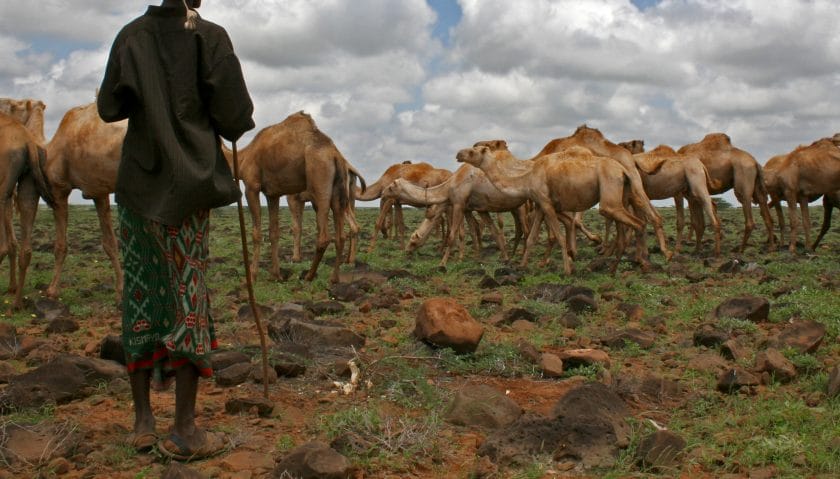
Horseback safaris and walking safaris are conducted in several individual conservancies on the Laikipia Plateau. The premier hiking destination is Mount Kenya, whose glacial peak is the second-highest in Africa after Kilimanjaro.
A trip to Kenya that includes hiking Mount Kenya would be a true Kenya adventure holiday for any adrenaline junkie. Diving and snorkeling can also be done on most Kenya Adventure tours .
Safaris and beach holidays are the two most popular activities for an active holiday in Kenya. Since the safaris in Kenya generally involve long hours being driven through the bush in search of animals, and the beaches are all about chilling out and doing as little as possible, neither is inherently well suited to active travelers on safari.
That said, except during the long rains, Kenya’s climate makes it ideal for outdoor activities. There are many ways of keeping yourself physically active, whether on the beach or on safari.

Of Kenya’s leading beach resorts, the best suited to active travelers is Watamu. Here you can take long walks in the coastal forests of Arabuko-Sokoke, explore the mysterious ruined city of Gedi, and spend long hours snorkeling offshore in lovely Turtle Bay.
When it comes to active safaris in Kenya, the private concessions of Northern Laikipia are also well-suited to active travelers since guided walks take precedence over game drives.
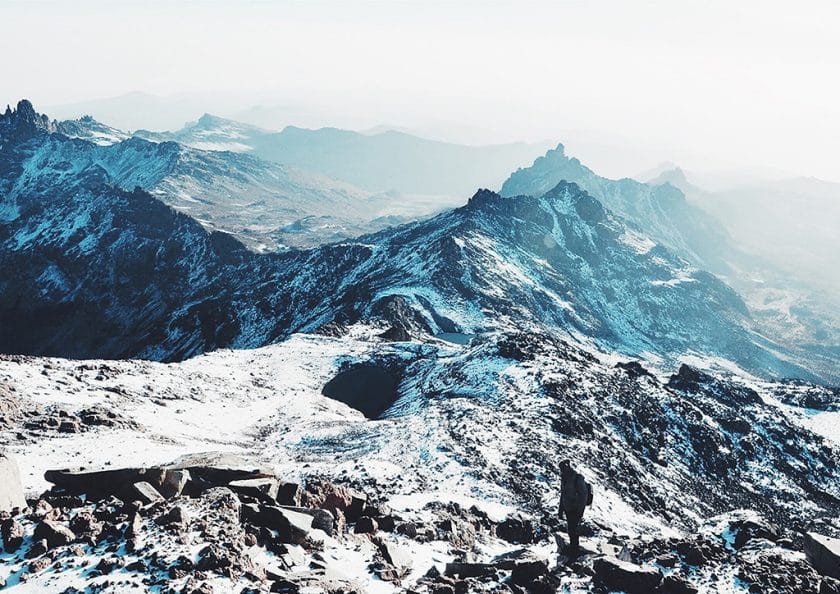
Another excellent destination for active travelers is Mount Kenya , whose thrilling landscapes make it the country’s premier hiking destination.
Bring suitable footwear and a few pairs of thick socks if you plan on walking a lot. A walking stick can be useful in hilly areas or trails with loose rocks underfoot. Binoculars will significantly enhance bird and other wildlife sightings on the trail.
Kenya is ideally suited to a beach and bush holiday. Indeed, you could say that it is tailor-made for this combination of activities. Kenya Safari tour options are covered in detail elsewhere on this website.
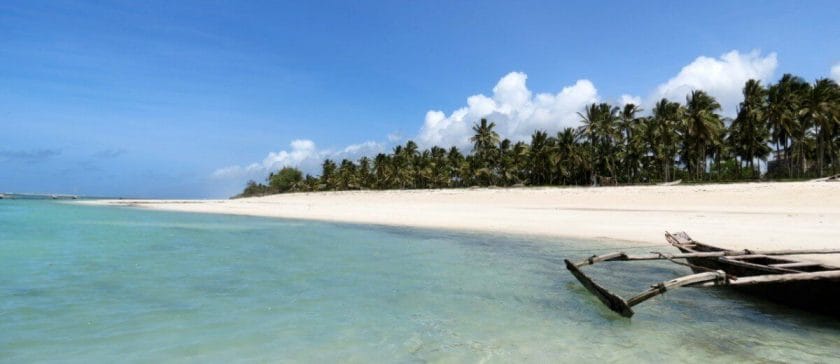
Still, we would broadly recommend 7-10 days on safari, ideally split between two or three major reserves, broken up with overnight stays at Lake Nakuru and/or one of the Tree Hotels of the Aberdares and Mount Kenya. This could be followed with 4-7 days at a beach resort such as Diani, Malindi, or Watamu.
Kenya is one of the best places in Africa for ticking off the Big Five: lion, leopard, buffalo, elephant, and rhino. An excellent short safari combination tour for Kenya for those hoping to see all these charismatic creatures (and much more besides) would be Masai Mara (for lion, leopard, buffalo, and elephant) and Lake Nakuru (for black and white rhino).
Other top safari destinations that host all or most Big Five safaris in Kenya include Tsavo East, Tsavo West, Amboseli, Laikipia Plateau, Samburu-Buffalo Springs-Shaba, Meru, and to a lesser extent Shimba Hills.
It’s important to note Kenya’s ongoing conservation efforts to protect some of its greater and lesser species – one of which is the elephant population.
The David Sheldrick Wildlife Trust is today the most successful orphan-elephant rescue and rehabilitation program in the world and one of the pioneering conservation organizations for wildlife and habitat protection in East Africa.
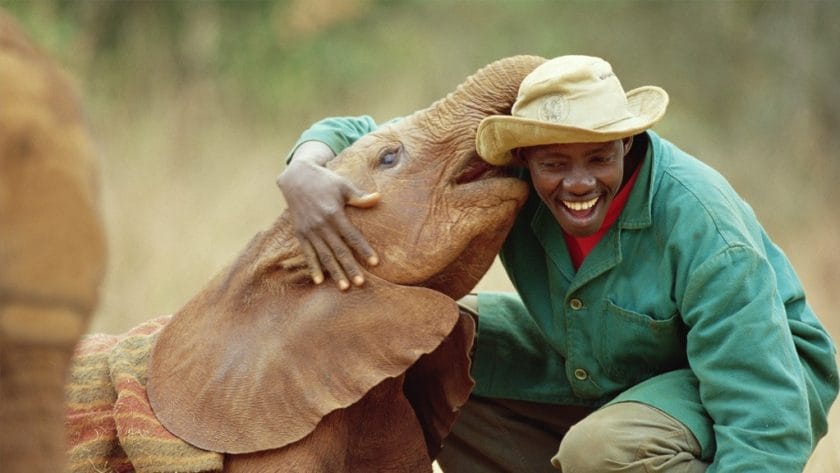
Founded in 1977 by Dr. Dame Daphne Sheldrick D.B.E, in honor of the memory of her late husband, famous naturalist and founding Warden of Tsavo East National Park, David Leslie William Sheldrick MBE, the DSWT claims a rich and deeply rooted family history in wildlife and conservation. The DSWT has remained true to its principles and ideals, remaining a sustainable and flexible organization.
Guided by experienced and dedicated trustees and assisted by an Advisory Committee of proactive naturalists with a lifetime of wildlife and environmental experience, the Trust takes effective action and achieves long-lasting results.
Kenya is one of only 15 countries globally where more than 1,000 bird species have been recorded, and it lies third on the African avian diversity list after DR Congo and Tanzania.
This list includes the world’s two largest birds (Common and Somali ostrich, now regarded as separate species) and its bulkiest flying creature (Kori bustard), along with a wealth of raptors and a dazzling array of colorful bee-eaters, turacos, parrots, rollers, and passerines.
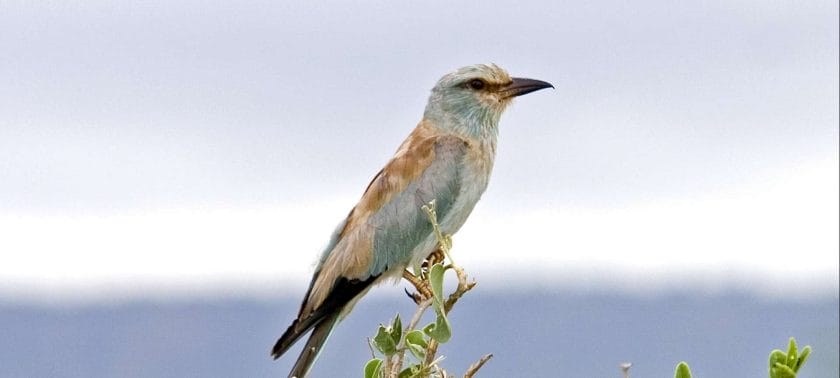
Birding Safaris are rewarding everywhere in Kenya. For dedicated birdwatching on a safari in Kenya, a well-planned two-week itinerary is likely to result in a trip list of 350–400 species, a figure that compares favorably with anywhere in the world.
The open savannah of southern Kenyan reserves such as Amboseli and the Masai Mara provides an excellent introduction to East Africa’s more common birds, with Superb starling, Purple grenadier, Lilac-breasted roller, and African grey hornbill all conspicuous.
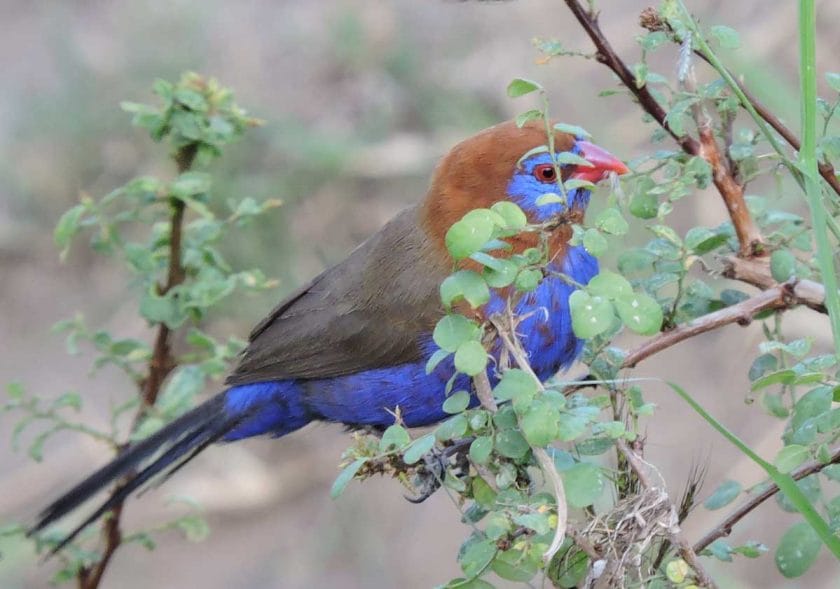
The Rift Valley lakes are also superb: Nakuru and Bogoria are rightly famed for their mind-boggling flamingo aggregations, but the less celebrated Naivasha and Baringo are arguably even better for general birding.
For regular bird-watching safari goers, a region of particular interest is the arid north, where Samburu-Buffalo Springs-Shaba hosts a high quotient of dry-country species whose range is otherwise restricted to less accessible parts of Ethiopia and Somalia.
For visitors with limited exposure to the rainforests of west-central Africa, Kakamega Forest and Saiwa Swamp protect dozens of forest species at the very eastern extreme of their range.
For coastal birds endemic or near-endemic to Kenya, Arabuko-Sokoke National Park near Watamu is home to Clarke’s weaver, Sokoke scops owl, Grey-crested helmet-shrike, Sokoke pipit, and Amani Sunbird. The central highlands also host several endemics, notably Sharpe’s longclaw, Aberdare cisticola, and Hinde’s babbler.
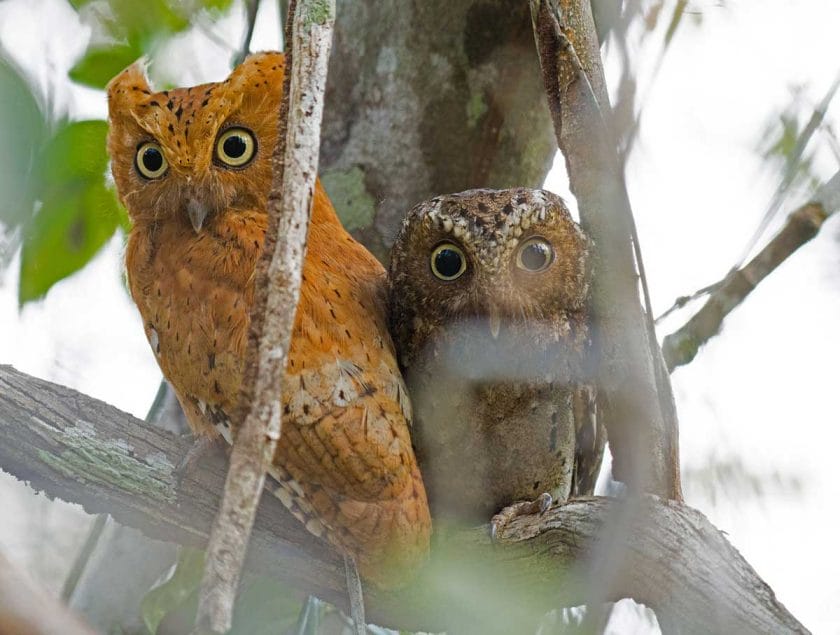
Kenya offers excellent birdwatching safaris throughout the year, but the prime season runs from October to March when Palearctic migrants boost resident populations. This also broadly coincides with Kenya’s rainy season, when several resident species shed their drab eclipse plumage in favor of bright breeding colors.
Kenya doesn’t really qualify as a dedicated foodie destination. Still, there are plenty of opportunities to eat well. Nairobi hosts a wide variety of restaurants representing a cosmopolitan selection of cuisines, as do Mombasa and the various coastal resorts (but to a lesser extent).
Seafood is particularly recommended on the coast, while Nairobi excels when it comes to meat dishes and Indian restaurants, the latter usually offering an excellent vegetarian selection. On a Kenya safari holiday, it’s customary to eat all meals at your lodge or camp. This is because most such places offer full-board packages, and there is generally no alternative within a reasonable driving distance.
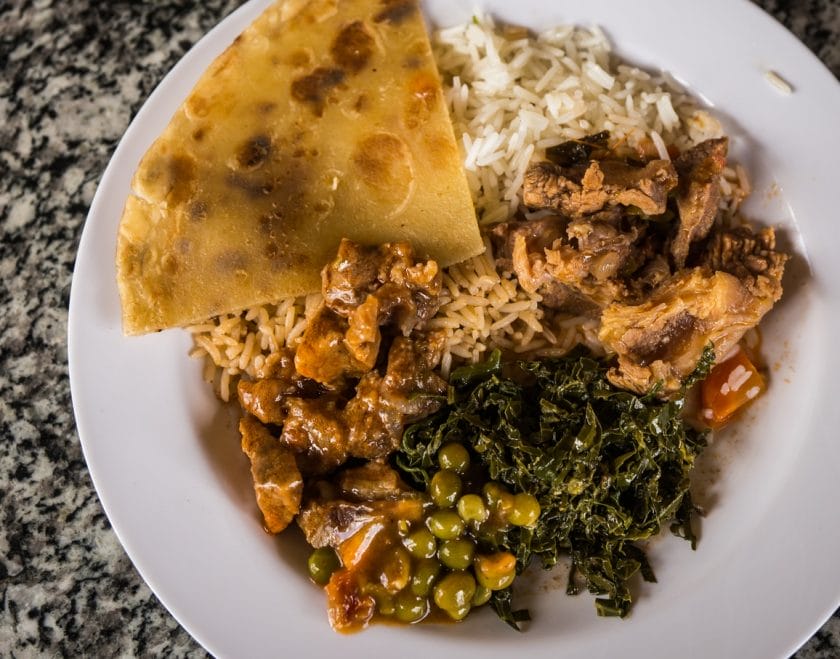
Larger lodges typically serve expansive buffet meals, while smaller lodges and tented camps generally offer three- or four-course set menus. Standards vary from mediocre at more package-like places to exceptional at certain more exclusive Kenya lodges .
The local cuisine usually consists of a lightly-spiced meat-based stew eaten with rice, ugali (stiff maize porridge), or chapati, a flat Indian-style bread. Whole fried or grilled fish is often available in coastal towns and around the great lakes. The distinctive Swahili cuisine of the coast makes generous use of coconut milk and is far spicier than other Kenyan food.
Generally, Africa is a top choice for nature-loving couples. A Kenya honeymoon safari especially has long been a choice destination for couples wanting spectacular safari experiences .

Kenya is a country where falling in love all over again is as easy as spotting a wildebeest. The rustic surroundings and soft-sand beaches with their azure waters make Kenya a timeless destination for romantics.
Coupled with the excitement of seeing the Big Five, climbing Mount Kilimanjaro , the Great Wildebeest Migration , and some of the world’s most exclusive and romantic secluded private wildlife conservancies, it’s no wonder that a Kenya honeymoon safari is a popular choice.
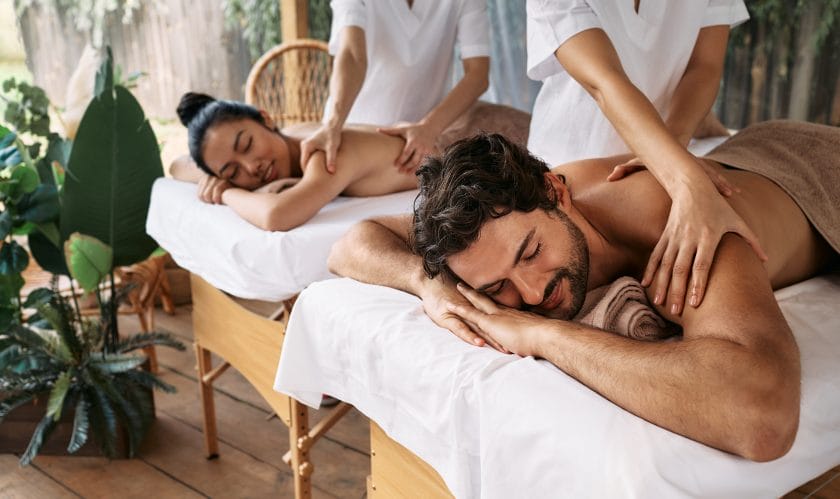
A great Kenya honeymoon safari itinerary would be to start with a few days at one of the exclusive camps that stud the conservancies bordering the Masai Mara or Amboseli, then maybe head to a similar camp on the Laikipia Plateau.
This could be followed by a few days of relaxing at a ‘barefoot luxury’ style beach resort near Diana, Watamu, or Malindi.
Kenya is a highly photogenic country. The main point of interest for most people that want to go on a Kenya photography safari is the prodigious wildlife that inhabits the national parks and other reserves.
Landscapes are greenest in the wet season, and the sky is least hazy then too, but this can be a difficult time to travel as game drives and other activities are washed out by frequent storms.
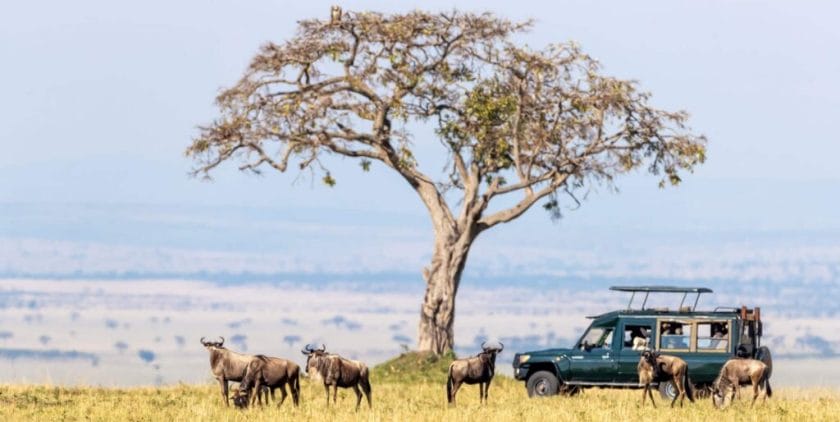
For dedicated Kenya photography safari-goers, there are several advantages to staying in private concessions or reserves, such as those on the Laikipia Plateau and bordering the Masai Mara. These private reserves are relatively costly to visit.
Still, they tend to have better and more sympathetic guides, and the ability to drive off-road, combined with the lack of other tourist traffic, means you can stick longer with a good photographic subject, and usually get far closer to it, and line up better for amazing shots.
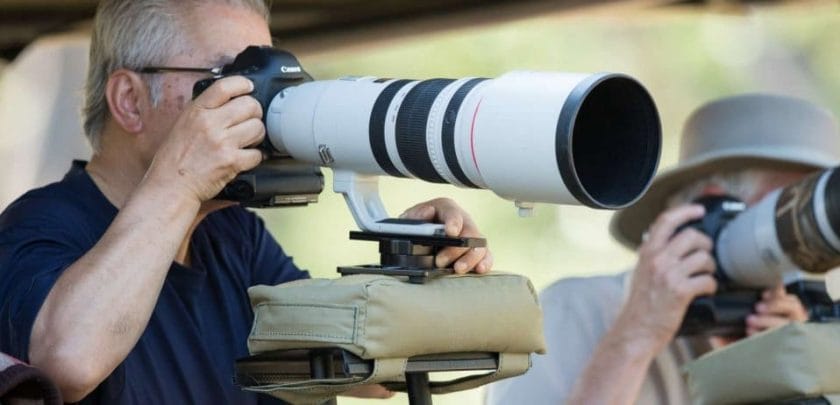
Wildlife photography requires faster and higher-magnification lenses than most other subjects. The ideal lens combination would be a zoom that goes up to 300 together with a fixed 400, with the fastest f-stop of 4, or better, 2.8.
Bring a beanbag upon which to rest your lens to minimize the risk of camera shake; to save weight, you can carry it empty to Kenya and fill it up with rice, beans, or similar after you arrive.

Colourful traditional ethnic groups such as the Maasai, Samburu, and Turkana make for great subjects, but it’s essential to ask permission before photographing them on your photography safari holiday in Kenya.
Many people will refuse, while others will expect to be paid. A good option for photographing traditionally-attired people is to arrange a paid visit to a traditional village bordering the Maasai Mara or Samburu-Buffalo Springs. The Swahili people of the coast are also sensitive about being photographed, particularly the women, whose Islamic culture perceives it to be immodest.
Malaria is prevalent in most parts of Kenya. This includes the entire coast and most safari destinations: Masai Mara, Amboseli, Tsavo, Samburu-Buffalo Springs, Lake Nakuru, and Meru.
Exceptions are parts of the Laikipia Plateau (much of which sits at too high an altitude for the malaria parasite) and the tree hotels of the Aberdares and Mount Kenya .
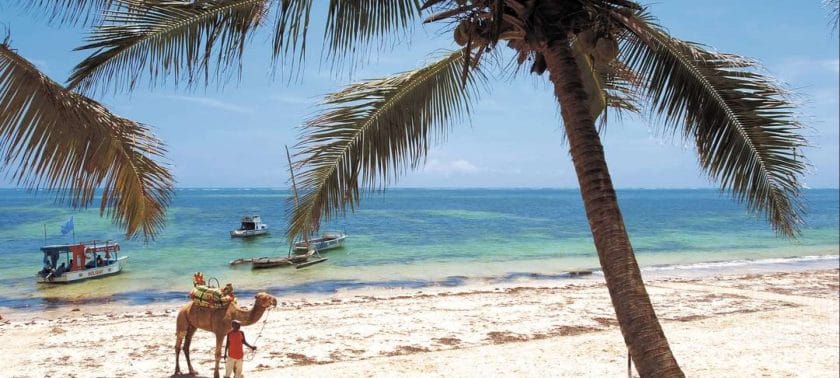
The risk of catching malaria in highland Nairobi is minimal. However, there are occasional incidents thought to be attributed to infected mosquitoes that arrive there on a bus from a lower-lying destination.
A Kenya safari focussing solely on Nairobi, the tree hotels, and Laikipia would thus be borderline malaria-free, but a slight risk would still exist. It’s therefore advisable to take necessary precautions before traveling and check with your local healthcare provider what prophylactics are best suited for a Kenya safari holiday.
Kenya is especially well suited to walking safaris . Climbing Mount Kenya offers more than enough to keep you going for a week, but this suits more dedicated hikers than casual ramblers.
Other destinations that offer some great opportunities include Lake Naivasha (a good base for day hikes to Hell’s Gate and Mount Longonot), Kakamega Forest, Saiwa Swamp, and Watamu. However, the options are better suited to independent travelers with a DIY approach than to organized safari tours .

For tourists looking to see wildlife on foot and be immersed in the environment, there are some concessions that arrange walking (guided) safaris if you are feeling more adventurous.
This offers the unique experience of seeing wildlife in a different light – where the sounds, sights, and smells will play a more prominent role in your Kenya safari experience.
Who is Travelling to Kenya with you?
- Couple Holiday in Kenya
- Solo Travelling Through Kenya
Most parts of Kenya are suited to couples. The coast of Kenya is ideal for romantic getaways, while more active couples looking for quality time together might consider booking a private safari or renting a self-drive 4×4 for your Kenya safari.
Highlights on a Couple Holiday in Kenya
Kenya’s beaches are among the most romantic in the world, with all white sand, shady palms, and lovely sunrises.
As with solo travelers or families, a highlight for most couples on safari in Kenya will be the opportunity to spend a few days on this safari, watching the Big Five and other creatures in the iconic Masai Mara , Amboseli, and Lake Nakuru.
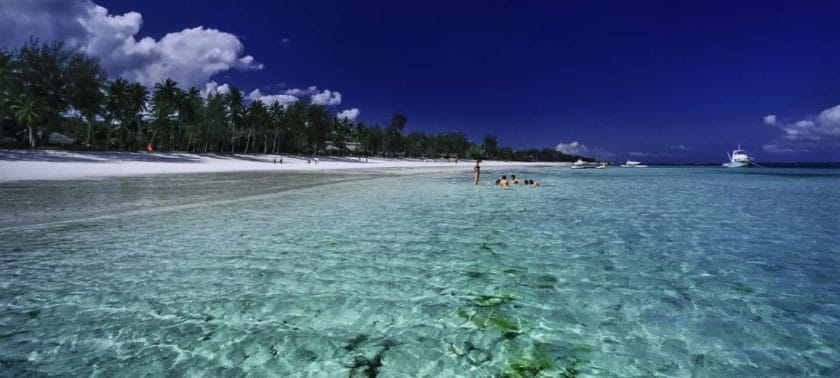
Try self-driving or traveling by public transport through the Rift Valley for something more offbeat.
Travel Tips on a Couple Holiday in Kenya
- Although most couples on holiday in Kenya are happy to spend plenty of time alone together, it can be fun to break things up with the odd night at a more sociable venue such as a backpacker hostel or intimate private lodge.
Kenya is a reasonably family-friendly safari destination, but it boasts few attractions that cater specifically to youngsters, and the threat of malaria might be a deterrent for families with young children. Most children will enjoy a few days on their family safari in Kenya but be warned that youngsters often become bored on long hot game drives.
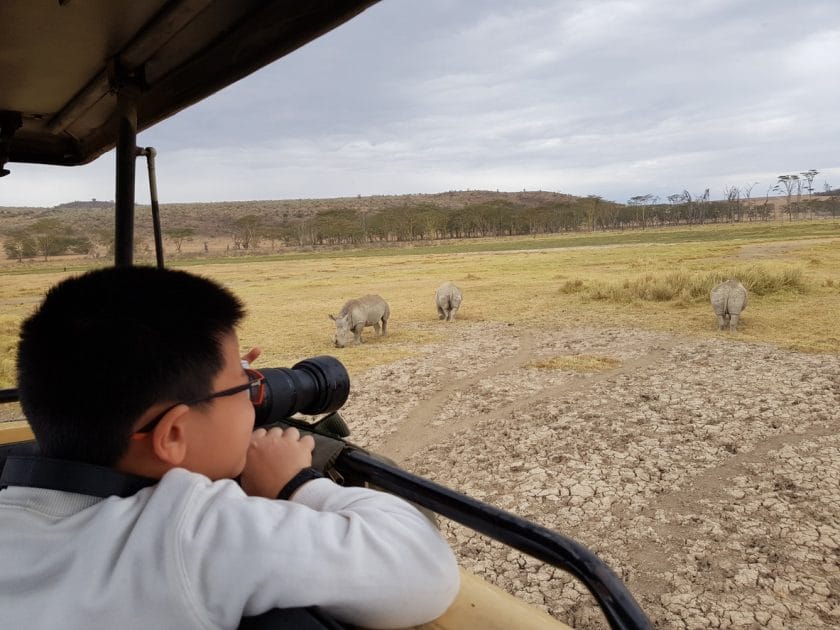
For this reason, smaller and more contained safari destinations such as Lake Nakuru and Nairobi National Park might be preferable for families than the vast expanses of Tsavo, Masai Mara, and the like.
Highlights of a Family Safari in Kenya
The highlights of a family safari in Kenya are much the same as for solo travelers or couples in Kenya: the thrilling volume and variety of wildlife present in the Masai Mara, Amboseli, and Lake Nakuru.
Of the beach resorts, Diani is probably the most family-friendly since its large package hotels tend to have an excellent range of on-site activities and amenities suited to all age groups, and offer plenty of excursions.
Travel Tips for a Family Safari in Kenya
- It’s not advisable to enter malarial areas with children not yet old enough to safely take prophylactic drugs or be able to clearly communicate any malarial symptoms to their parents. Parents of younger children should check whether their hotel offers babysitting services.
- Some private game lodges place a lower-end age restriction on children, while others specifically cater to younger children and provide them with alternative activities when adults are on game drives. Check this when you make a booking.
- Self-drivers with children should avoid overambitious itineraries. Distances in Kenya are far longer than you might be used to at home, and roads tend to be rougher, so children might quickly become bored or carsick.
Most parts of Kenya are suited to solo travel. Independent travelers using public transport will find that locals are very friendly and keen to converse with single foreigners.
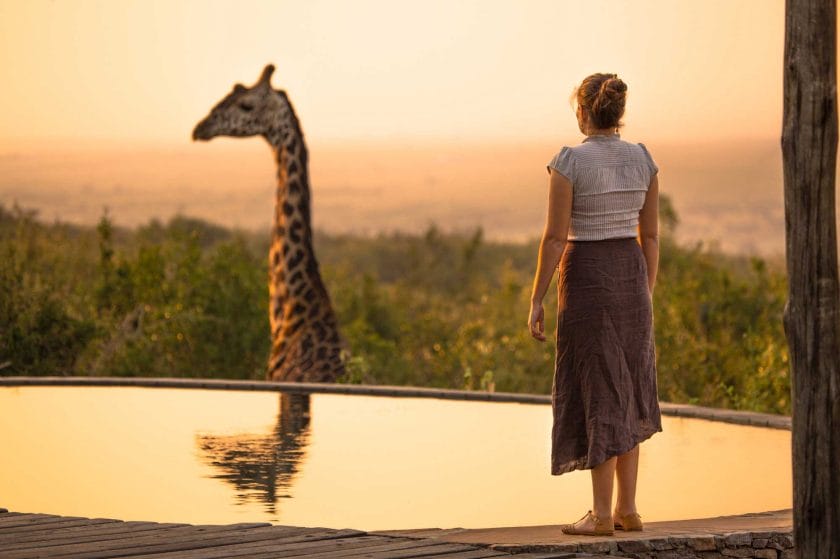
During a solo Kenya safari, small tented camps and private concessions’ reserves are probably better suited to single travelers than larger lodges in public sanctuaries since they tend to offer a more hands-on, personalized service.
Highlights on a Solo Safari in Kenya
Most solo travelers on a Kenya safari also want to visit the coast. The highlights are the same as for other travelers: the thrill of being in the bush and the range of wild animals to be seen in famous reserves such as Masai Mara , Amboseli, and Laikipia.

Of the coastal resorts, Malindi has the most inherently sociable and integrated atmosphere, making it perhaps better suited to friendly solo travelers than rustic Watamu or spread-out Diani. The Rift Valley lakes are a worthwhile destination for solo travelers interested in local cultures.
Travel Tips for Solo Safari in Kenya
Sociable solo travelers in Kenya might be keener to join group safari tours in Kenya or to stay at lodges that offer all-inclusive packages with group game drives and customarily encourage guests to mingle by dining together at one large table.
There are no risks specific to solo travel in Kenya. Still, single women, in particular, should apply the usual common-sense precautions such as not walking alone at night in cities, particularly Nairobi, and avoiding deserted beaches.
What You Need To Know
- Welcome to Kenya
- Travelling to Kenya
- Highlights of Kenya
- Kenya vs South Africa
- Kenya vs Uganda
- Wildlife in Kenya
- Kenya Visa Requirements and Fees
- Getting Around in Kenya
- Changing Money in Kenya
- Is Kenya Safe?
- Kenya Food and Tipping
- Shopping in Kenya
- Languages in Kenya
- Medical Requirements for Kenya
- Packing List for a Kenya Holiday
- What Vaccinations do I Need for Kenya?
- Medical Emergencies in Kenya
- Health Care in Kenya
- Medical Insurance in Kenya
- Lodges in Kenya: The Do’s and Don’ts
- Cultural Practices of Kenya
Often regarded to be the ultimate safari destination, Kenya undoubtedly incorporates some of the continent’s most rewarding and exciting national parks and wildlife reserves. Best known is the incomparable Masai Mara , whose undulating green grasslands support staggering concentrations of lion, cheetah, spotted hyena, and other predators.
From August to October, the Mara also hosts the world’s greatest wildlife spectacle , when hundreds of thousands of manically stampeding wildebeest stream across the Mara River from neighboring Tanzania.
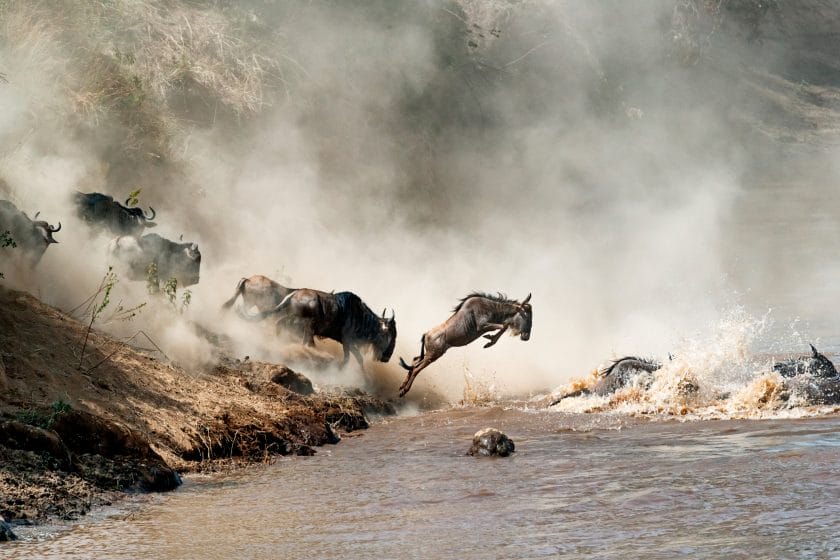
No less iconic is Amboseli, where some of the continent’s most impressive and well-habituated elephant herds can be seen crossing the dusty plains below snow-capped Kilimanjaro , the world’s tallest freestanding mountain.
The country is bisected by a dramatic stretch of the Rift Valley floor, which is studded with gem-like lakes. There’s Lake Nakuru, shores grazed by prehistoric-looking rhinos; Lake Bogoria, its shallows tinged pink by more than a million flamingos; and lovely Lake Naivasha, fringed by reedbeds that are alive with birds and hippos.
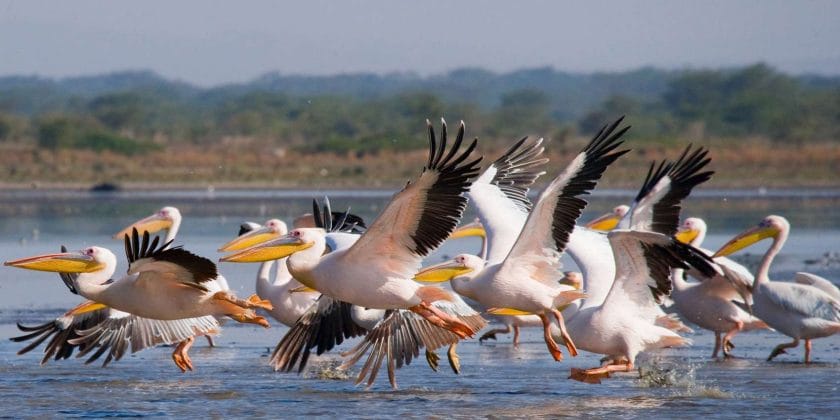
Arguably the most unique of the Kenya reserves are those lying north of the equator. Here, Laikipia, Samburu-Buffalo Springs, and Meru support a range of dry-country specialists – the lovely Reticulated giraffe, the outsized Grevy’s zebra, the freaky Gerenuk, and many dozens of colorful birds – at the southern limit of their restricted range.
There’s no better index of Kenya’s biodiversity, perhaps, than its national bird checklist of more than 1,000 species – placing it third in Africa, a figure made all the more remarkable when you realize that it doesn’t make the continent’s top 20 countries in terms of surface area.
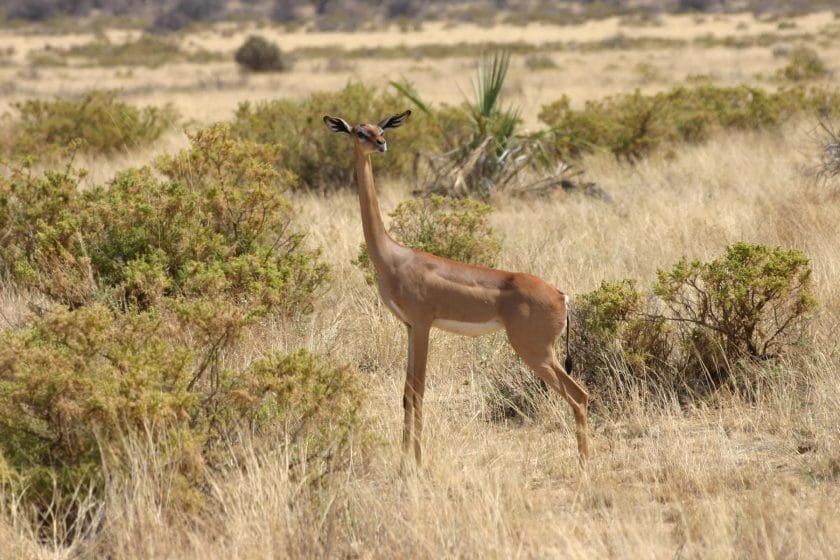
Kenya is undoubtedly one of Africa’s finest Big Five safari destinations . But it has a great deal more to offer than just safaris. Culturally, it is a fascinating mass of contradictions.
One of Africa’s most developed countries, it has an unusually high level of education, a substantial middle class, world-class tourist facilities, and a growing industrial belt sprawling out from its bustling capital.
Yet, away from the cities on dusty plains populated by pastoralists such as the Maasai, Samburu, and Turkana, it ranks among the most visibly traditional of African nations.
Then there is the sultry Indian Ocean coastline, which comprises more than 500km (311mi) of idyllic beach frontage set to a backdrop of mysterious medieval ruins, dense tropical jungles, and traditional Swahili port towns.
Offshore are coral reefs whose kaleidoscopic swirl of fish is as delightful to snorkelers and divers as the country’s more familiar terrestrial wildlife.
- Almost all visitors from abroad fly in. Nairobi’s Jomo Kenyatta Airport (NBO) is the main port of entry for international flights, and it has excellent connections to most other parts of Kenya and many other African capitals. Some carriers also operate international flights to Mombasa Moi International Airport (MBA).The national carrier, Kenya Airways, operates an extensive network of flights to and from major cities in Europe, Asia, and elsewhere in Africa.
- Most major international carriers operate direct flights between their home country and South Africa, among them Air France, Air Mauritius, British Airways, EgyptAir, Emirates, Ethiopian Airlines, Etihad, KLM, LAM Mozambique Airlines, Lufthansa, Malawian Airlines, Oman Air, Qatar, Rwandair, Royal Air Maroc, South African Airlines, Swiss International Airlines and Turkish Airlines and Virgin Atlantic. Particularly coming from a major European city such as London or Paris, there might be dozens of indirect options, and you can save a lot of money by shopping around.
- It’s possible to enter Kenya overland from the neighboring countries of Ethiopia, Uganda, and Tanzania, but you’d only be likely to do so as part of an extended overland trip through Africa or if you were doing a multi-country safari.
A safari in Kenya attracts plenty of repeat visitors. The main reason for this is the unpredictability of its game reserves (no two days on safari are ever alike) and its immense variety of safari destinations (it would be difficult to do full justice to more than half of them in the course of one vacation).
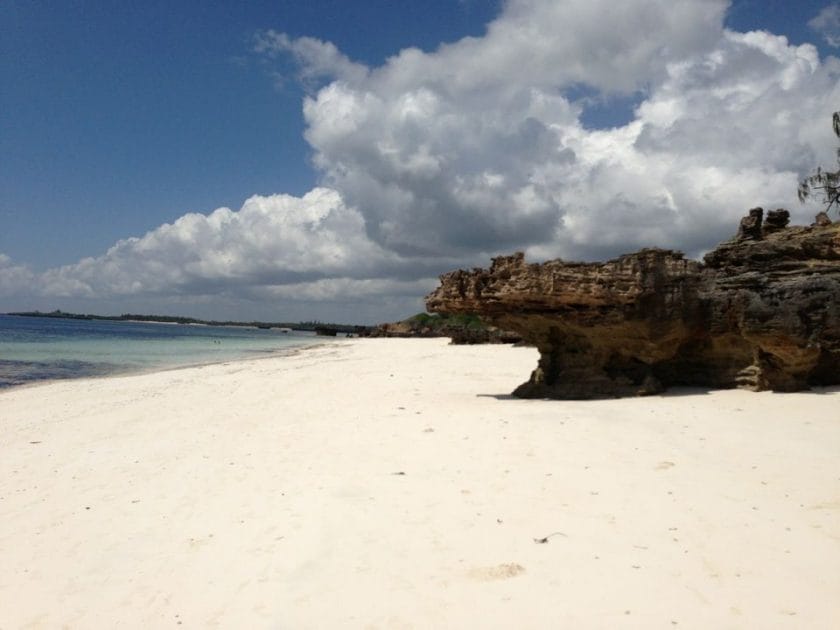
Many people develop an affinity of one particular beach resort, be it Diani, Watamu or Malindi, and return there every few years to soak up the sun and relaxed atmosphere. For independent travelers, Kenya’s extraordinary diversity and number of attractions are enough to keep you busy for a two-month trip – or several shorter ones!
Kenya is more of a dedicated wildlife destination than South Africa. A far more significant proportion of the country is given over to national parks and other wildlife reserves. These tend to have a wilder and more limitless feel than their fenced-in South African counterparts with their asphalt roads and village-like rest camps.
Kenya would thus be a better destination for people seeking a safari-dominated wilderness itinerary . That said, Kenya’s safari circuit is far less suited to budget-conscious travelers, or to DIY self-drivers, than South Africa’s Kruger National Park or Pilanesberg.
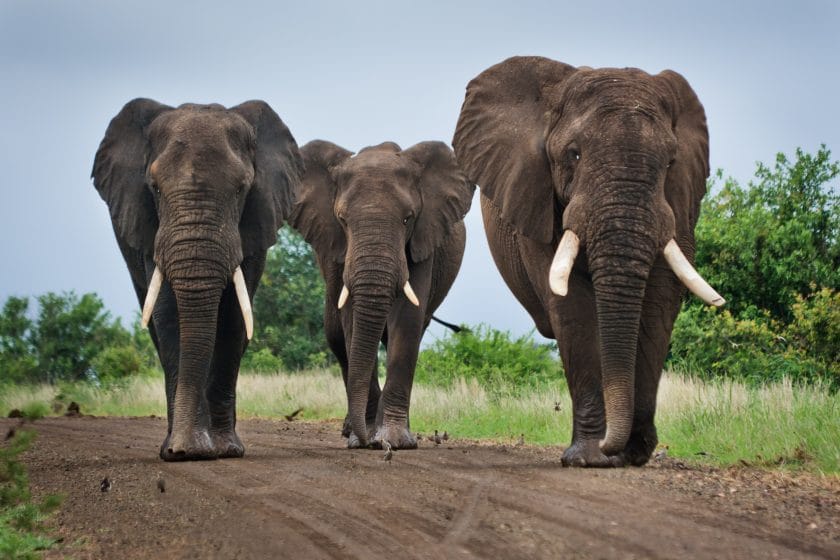
A safari in South Africa offers a far lower risk of contracting malaria, bilharzia, and other tropical diseases. This makes it a safer bet for families, first-time safari goers, and other health-conscious travelers. Indeed, South Africa is also the only country in Africa to boast several malaria-free safari destinations.
South Africa is a far more family-friendly safari destination than Kenya. Both countries have a superb coastlines, but South Africa’s beach resorts tend to be better developed for families and children. In contrast, the ancient ports of Kenya have an interesting cultural dimension provided by the Swahili people and some fantastic ruins dating back to medieval times.
Kenya is a better destination than Uganda when it comes to quality Big Five sightings and plains wildlife in general. Its game reserves tend to be far more extensive than their counterparts in Uganda and offer a more varied selection of lodges and tented camps. Equally, a safari in Uganda offers several attractions not found in Kenya or, indeed, most other safari destinations.
Foremost among these is the opportunity to track mountain gorillas in Bwindi Impenetrable National Park and chimpanzees in Kibale National Park. Overall, Uganda offers far greater diversity when it comes to primate safaris, and it matches Kenya for general birdwatching safaris . However, it tends to be stronger on forest birds that are difficult to see elsewhere in eastern and southern Africa.
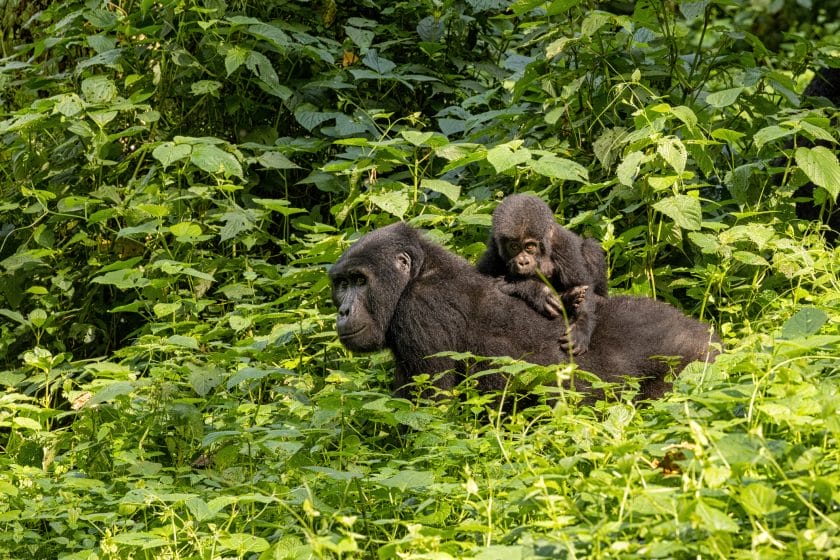
Uganda’s three main savannah reserves are also wonderfully scenic and offer the opportunity to explore thrilling tropical waterways by boat. There is nothing in landlocked Uganda to compare with the Indian Ocean beach resorts such as Diani and Watamu .
Kenya is also a more visibly diverse and fascinating country when it comes to traditional cultures, be it the pastoralist Maasai and Samburu or the Arab-influenced Swahili people of the coast.
Kenya’s geographic diversity means that it supports an extraordinary range of wildlife. The country’s premier national parks and reserves, including the Masai Mara, Amboseli, Tsavo East and West, Samburu-Buffalo Springs, Meru, and Laikipia, are all home to most or all of the Big Five, i.e., lion, leopard, elephant, buffalo and Black rhino.
We would rank the Masai Mara as one of the top five reserves in Africa for lion and cheetah sightings. It is also unusually reliable for leopards, along with other less glamorous carnivores such as spotted hyenas, jackals, and bat-eared foxes. Amboseli is one of the top places anywhere in Africa for watching elephant interactions at close quarters.
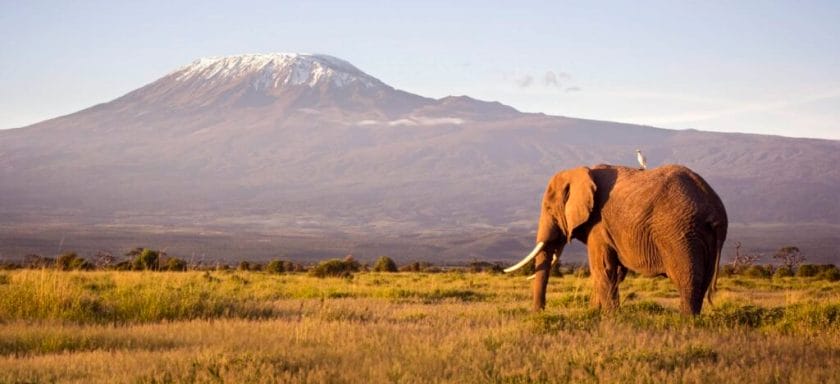
After a South African safari , a Kenya safari is the second-best choice to see both Black and White rhinos, with healthy and conspicuous populations of one or both to be found in Tsavo West, Meru, Lake Nakuru, and several of the reserves on the Laikipia Plateau .
Other wildlife tends to be more regional. The relatively moist southern savannah protected in Masai Mara and Amboseli is home to eland, Coke’s hartebeest, Topi, Grant’s and Thomson’s gazelle and impala, as well as Maasai giraffe, plains zebra, and warthog.
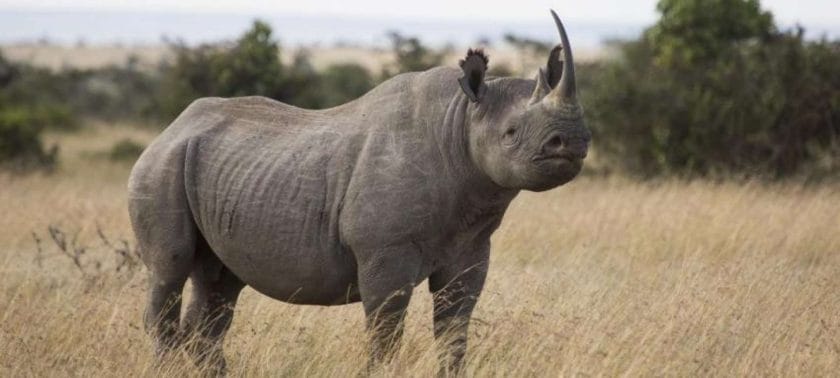
Wildebeest are resident in both reserves, but the Masai Mara is renowned for the migration of hundreds of thousands of these doleful-looking antelope from neighboring Tanzania between August and October.
The more arid northern reserves, most notably Samburu-Buffalo Springs, support a quite different set of grazers, for instance, Beisa oryx, Lesser kudu, Guenther’s dik-dik, and the unique Long-necked gerenuk.
Here you will also see the critically endangered Grevy’s zebra, the world’s largest wild equid and far more narrowly striped than the more widespread plains zebra, which occurs alongside it in Samburu-Buffalo Springs. Another creature unique to the north is the reticulated giraffe, which has a more geometric and striking coat pattern than the Masai Giraffe.
Other major reserves such as Laikipia, Meru, and Tsavo East and West tend to support an intermediate selection of grazers. Very different again are the montane forests of the Aberdares and Central Highlands, coastal forests around Diani and Watamu, and tropical lowland forests in western sites such as Kakamega.

These tend to support a wide range of monkeys, most notably the striking black-and-white Colobus, small forest antelope known as duikers, and oddities like the Golden-rumped elephant shrew (coast only), mountain bongo (Aberdares only), and Giant forest hog.
Kenya is one of the world’s finest bird-watching destinations . A national checklist of more than 1,000 species places it among the world’s top 15 countries in terms of avian diversity. But even this figure doesn’t convey the variety of colorful and striking birds on display countrywide.
There are several places, most notably perhaps Lake Naivasha or Baringo, where a moderately skilled birder could tick off 100 species in a day. And for dedicated birdwatchers, a well-planned two-week itinerary taking in key ornithological sites such as Kakamega Forest, Samburu-Buffalo Springs, Mount Kenya, the Rift Valley Lakes, and the coastal forests around Watamu should result in a trip list of at least 350 species, quite possibly more.
Kenya also hosts diverse marine wildlife. A year-round attraction is the colorful reef fish that proliferate diving and snorkeling sites in the reefs offshore of Watamu, Malindi, Mombasa, and Diani. Other, more seasonal, marine wildlife includes dolphins, whale sharks, marine turtles, and manta rays.
All visitors must present a passport upon arrival at their port of entry. This must be valid until at least 6 months after the end of their intended stay, and must have at least two blank pages to accommodate entry and exit stamps.
Technically, visitors should also have a return or onward ticket, and be able to demonstrate access to sufficient funds to cover day-to-day expenses for the duration of their stay, but these requirements are seldom enforced.
Most visitors require a visa to enter Kenya. This includes nationals of practically all European, Asian, Middle Eastern, and North or South American countries, as well as Australia and New Zealand. For single-entry tourist visits of to 90 days, eVisas can be bought online, provided this is done at least two days prior to departure, and it is also usually possible to get a visa on arrival.
Multiple-entry and non-tourist visas must be applied for through a Kenyan embassy or high commission abroad.
Visas for stays of up to 90 days are not required by passport-holders of certain African and Caribbean countries, among them South Africa, Tanzania, Uganda, Ghana, Malawi and Zimbabwe.
An East Africa Tourist Visa allows multiple-entry visits to Kenya, Rwanda and Uganda, but not to Tanzania or Burundi.
- A good network of scheduled and charter flights connects Nairobi to other major cities in Kenya, for instance, Mombasa, Malindi, and Kisumu. Light aircraft flights connect all the main game reserves to Nairobi and to each other. Note that most (but not all) domestic flights to/from Nairobi depart and arrive not from Jomo Kenyatta Airport, but from the smaller Wilson Airport (WIL), so check your booking.
- Most people explore the country on an organized group or bespoke safari or tour, which can be arranged through innumerable international and local operators.
- Most trunk roads are surfaced and well maintained, so self-drive is an option, provided you have a valid license. Be aware that driving tends to be reckless by Western standards. Driving is on the left side of the road, as in the UK, which may require some adjustment for drivers accustomed to driving on the right.
- National parks and other safari destinations are not generally accessible on public transport, but it is easy enough to travel between towns by bus or local Matatu mini busses. Be warned that these are often poorly maintained, overcrowded and recklessly driven, and fatal accidents are commonplace. A notable exception is the historic train service that connects Nairobi to Mombasa, a trip that qualifies as an attraction in its own right.
The Kenyan shilling (KSh) trades against most international currencies at a favourable rate. There’s no need to bring large amounts of hard currency cash or to buy shillings in advance.
Major international credit/debit cards (for instance Master and Visa) can be used to draw local currency at 24-hour ATMs in most cities and beach resorts, but not in national parks and other safari destinations).
Many vendors do not accept cards, however, so it’s a good idea to carry a few hundred dollars’ worth of hard currency cash as a fall back.
Nairobi has a longstanding reputation as a bit of a crime hotspot, one that is largely justified but unlikely to affect those who stay at a suburban hotel since crime targeted at tourists is mainly associated with the city center.
The triangle of streets between Moi Avenue and River Road should be avoided at all times unless you have a trusted local escort, and it’s best to use a taxi if you leave your hotel after dark.
Crime is also a problem on some parts of the coast but far less so in small upcountry towns, game reserves, and other rural areas. However, the majority of visitors to Kenya have hassle-free holidays, and so should you if you follow the commonsense dos and don’ts below:
- Carry a scan or electronic version of all important travel documents in case they are lost or stolen. You might also want to email all such backups to a webmail address you can access anywhere on the road.
- Padlocking your luggage might not prevent a determined thief from slashing it open, but it’s a solid deterrent to casual light fingers.
- Never leave valuables (cash, mobile phones, electronic devices, etc.) lying around in your hotel room; where possible, stow your passport and other important documents, as well as spare cash and cards, in a hotel safe.
- Leave expensive jewelry at home.
- Avoid exposing cameras, laptops or large amounts of cash in urban areas.
- Avoid walking around towns after dark. If you must, do so as part of a group and stick to busy and well-lit streets.
Tip in local currency where possible; it may be difficult for locals to exchange small amounts of hard cash into Kenya shillings. Tipping is not standard at eateries or bars catering mainly to a local clientele, but that doesn’t mean a little something won’t be appreciated by the recipient.
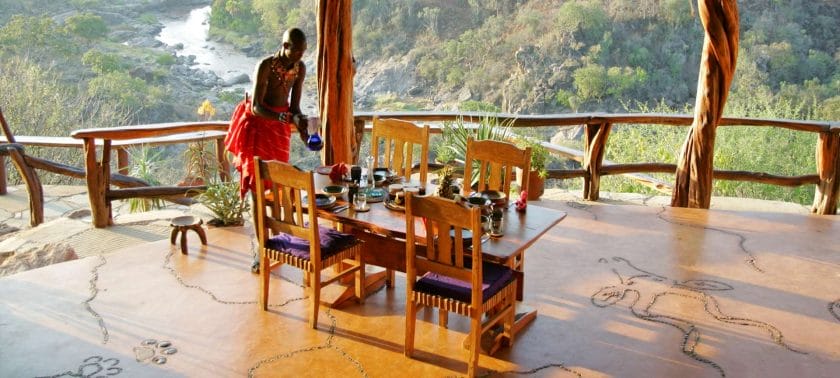
Tourist-oriented restaurants operate similarly to those in Europe or North America. A 10-15% tip to the waiter is standard, depending on the quality of service.
At hotels, it’s usually easier to sign drinks and meals to the room than to pay cash, but you could still leave a tip for an individual waiter or bartender or add one to the bill before you sign it. Hotel porters usually expect a tip equivalent to around US$1 per luggage item.
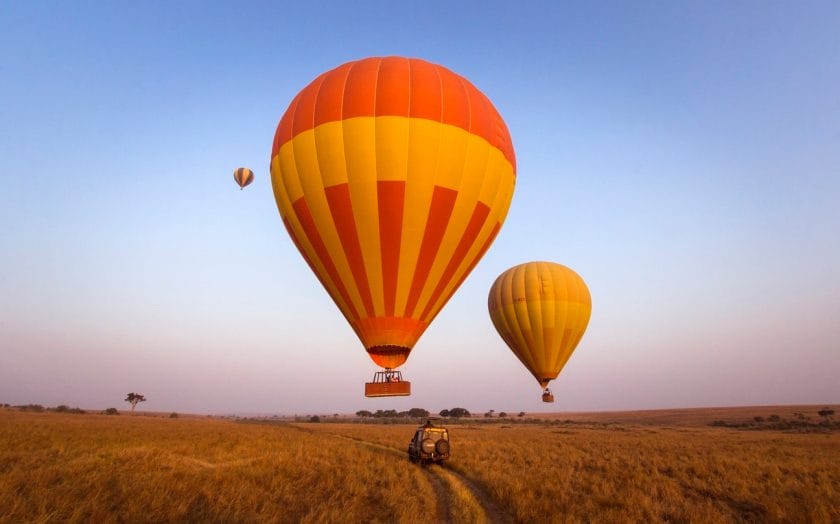
On organized tours in Kenya , it’s customary to tip the guide and/or driver and/or cook at the end, usually as a group rather than individually.
Upmarket lodges and camps in Kenya that operate on a full-board basis generally have a tip box at reception. Tips will usually be distributed between all the staff, a system that seems fairest to backroom workers in a country where hotel staff is very poorly paid.
In game lodges that offer guided game drives, any guides, drivers, and trackers should be tipped. Many such lodges have guidelines in the rooms; failing that, ask management for a directive.
Nairobi and, to a lesser extent, Mombasa and Malindi are equipped with a fair selection of shops and malls, at least by African standards. Shops in smaller towns are less varied and more poorly stocked, but most regulation items likely required by tourists will be available.
Once on safari in Kenya, the only options are usually gift shops in lodges and camps, which generally stock a fair selection of basic toiletries, books about Kenya, expensive touristy clothing, handicrafts, and a few packaged goods such as chocolate bars, crisps, and chewing gum.

The opportunities for craft shopping in Kenya are practically endless. There are handicraft shops, and stalls dotted all around Nairobi and the various coastal resorts, as well as along several of the more widely-used trunk roads and outside game reserves, and national parks.
In addition to an almost limitless choice of tacky identikit wildlife carvings and paintings, a range of more interesting and individualistic items are available.
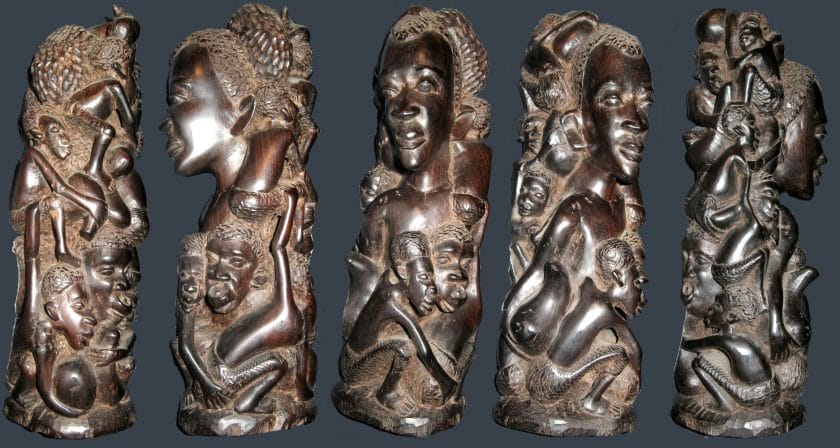
These include the intricate Makonde carvings and fantastically stylized Tingatinga paintings from neighboring Tanzania, inventive batiks, traditional musical instruments, Akamba basketwork, Gusii soapstone carvings, malachite knick-knacks, Maasai beadwork, and other tribal items, as well as toys made inventively from wire, wood or whatever other materials the creator found to hand.
Craft shops generally charge fixed prices, though there may be some slight wiggle room for negotiation. Bargaining is essential at craft stalls. To get a feel for prices, ask the price of a few similar items at different stalls before you contemplate buying anything.
More than 60 different languages are indigenous to Kenya. The official languages are English, which is widely spoken to a high standard in the tourist industry, and KiSwahili. This East African lingua franca originates from the coast and spread inland along trade routes in the early 19th century.
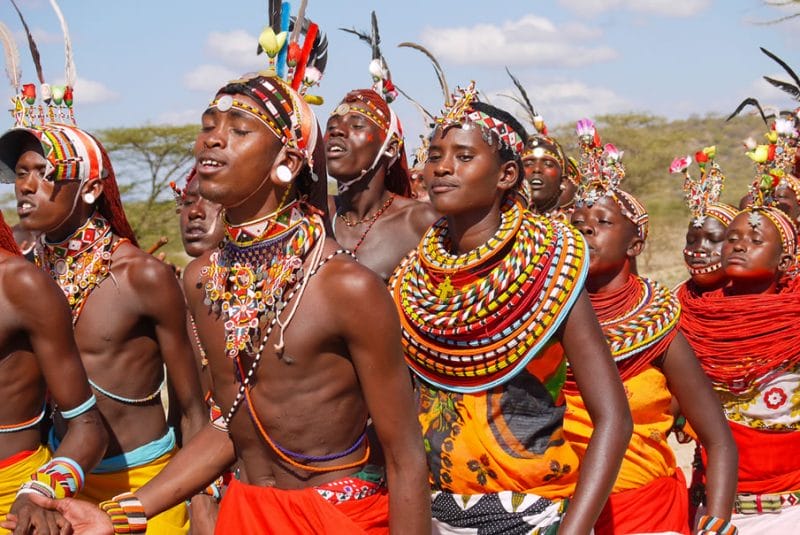
Other major languages include Kikuyu, Luo, Akamba, and Maa. Most languages spoken locally belong to two broad languages: Niger-Congo and Nilo-Saharan, spoken by the country’s Bantu and Nilotic populations, respectively. The Cushitic and Arab ethnic minorities speak languages belonging to the separate Afroasiatic family, with the Hindustani and British residents speaking languages from the Indo-European family.
Kenya’s various ethnic groups speak their mother tongues within their communities. The two official languages are used with varying degrees of fluency for communication with other populations. English is widely spoken in commerce, schooling, and government. Peri-urban and rural dwellers are less multilingual, with many in rural areas speaking only their native languages.
Malaria is the biggest single medical threat to visitors to Kenya. It is present in most parts of the country throughout the year, though the risk of transmission is generally far higher at low altitudes and during the rainy season. There is no vaccine, but several different oral prophylactics are available, and it is advisable to visit a travel clinic or other suitably qualified medical professional for up-to-date advice about the option best suited to your requirements. No prophylactic is 100% effective, so take all reasonable precautions against being bitten by the nocturnal Anopheles mosquitoes that transmits the disease.
These include donning a long-sleeved shirt, trousers and socks in the evening, and applying a DEET-based insect repellent clothes to any exposed flesh. Always sleep under a net, or failing that in and air-conditioned room, under a fan, or with a mosquito coil burning. Malaria normally manifests within two weeks of being bitten, but it can take months, so if you display possible symptoms after you get home, get to a doctor immediately, and ask to be tested. Travellers with young children or who prefer not to take medication might consider visiting a malaria-free safari destinations elsewhere in Africa in preference to Kenya.
Anti-malarial drugs are as good as essential and advice should be sought at least a few weeks in advance to be sure you use suitable medication. At the same time, check which (if any) vaccinations require updating. All over-the-counter medications are available at pharmacies in the larger cities, but not in game reserves or more isolated beach destinations, so best to buy any prescription drugs or others that you use regularly before you travel, along with essentials such as sunblock and insect repellent. People who wear contact lenses often find that their eyes are more irritable in the dry heat typical of many safari destinations, so it is a good idea to bring glasses as a backup.
A yellow fever vaccination and certificate is not mandatory for those entering Kenya from Europe or North America. You may be asked for one if you enter arrive from elsewhere in the yellow fever belt of Africa or South America.
It’s important to be up-to-date on tetanus, polio and diphtheria, and you might consider immunisation against hepatitis A and B, diphtheria, rabies, typhoid, cholera and tuberculosis.
A public healthcare system exists, but it’s underfunded and rudimentary by international standards. Private medical facilities compare favorably to most parts of Africa other than South Africa but are not always to the standard you’d expect in Europe or North America.
On the plus side, medical consultations are generally very cheap, and local doctors are highly experienced in recognizing symptoms of malaria (the most common threat to travelers) and prescribing appropriate medication.
A public healthcare system exists but it is underfunded and rudimentary by international standards. Private medical facilities compare favourable to most parts of Africa other than South Africa but are not always to the standard you’d expect in Europe or North America. On the plus side, medical consultations are generally very cheap, and local doctors are highly experienced when it comes to recognising symptoms of malaria (the most common threat to travellers) and prescribing appropriate medication.
It is recommended that you take comprehensive medical travel insurance, inclusive of air evacuation from remote areas. Be aware that some insurance policies may not cover paragliding or scuba diving other activities deemed to be hazardous, and it might also be null and void in areas subject to travel warnings by the British FCO or US state department.
- Never walk unaccompanied after dark in the bush or an unfenced camp or lodge.
- Don’t feed the wildlife – not only does it encourage a dependency on handouts to survive, but it may also foster problem animals.
- Don’t leave cash or other valuables lying around in the room.
- Do cover up in the evenings, spray exposed skin with repellent, and sleep under a net or fan to discourage mosquitos and other biting insects.
- Don’t freak out if you find lizards in your room or frogs in the basin – they are not vermin but rather harmless contributors towards insect control.
- Don’t make any unnecessary noise when wild animals are in the vicinity, or you might scare them off.
- Do take the opportunity to go on a guided bush walk if offered – it will be a wonderful opportunity to focus on plants, insects, birds and other creatures less glamorous than the Big Five.
- Do carry sunblock and a hat on all game drives.
- Do assume that any large animal that enters camp is wild – respect its space and give it a wide berth rather than walking up to it to be photographed with it and chasing it away or provoking attack.
Although the official languages are Swahili and English, Kenya is a multilingual country. There are 62 languages spoken throughout, which mainly consist of tribal African languages and a minority of Middle-Eastern and Asian languages spoken by descendants of foreign settlers (i.e., Arabic, Hindi, etc.).
The African languages come from three different language families – Bantu languages (spoken in the center and southeast), Nilotic languages (in the west), and Cushitic languages (in the northeast).
Kenya is not a homogeneous country ethnicity-wise. The make-up of Kenyans is primarily that of 13 ethnic groups with an additional 27 smaller groups. Most Kenyans belong to ‘Bantu’ tribes such as the Kikuyu, Luhya, and Kamba.
There are also the ‘Nilotic’ tribes such as the Luo, Kalenjin, Maasai, and Turkana. The ‘Hamitic’ people include the Turkana, Rendille, and Samburu. Around 13% of the population are of non-African descent, i.e., Indian, Arab and European.
Kenyans are group-orientated rather than individualistic. “Harambee” (coming from the Bantu word meaning “to pull together”) defines the people’s approach to others in life. The concept is essentially about mutual assistance, mutual effort, mutual responsibility, and community self-reliance.
Registered Members of these Organizations
USEFUL LINKS
- African Safaris
- African Safari Tours
- African Safari Lodges
- Why Book with us?
- Content Collaborations
- Safari Cost Estimator Tool
- Wildebeest Migration
- Privacy Policy
- Website Terms of Use
POPULAR COUNTRIES
- View All Countries
- South Africa Safaris
- Botswana Safaris
- Kenya Safaris
- Tanzania Safaris
- Namibia Safaris
- Rwanda Safaris
- Uganda Safaris
- Zambia Safaris
- Zimbabwe Safaris
POPULAR DESTINATIONS
- View All Destinations
- Cape Town Holidays
- Kruger Safaris
- Victoria Falls Safaris
- Masai Mara Safaris
- Serengeti Safaris
- Etosha Safaris
- Chobe Safaris
- Okavango Delta Safaris
TRAVEL BLOGS
- A Seasonal Guide to Honeymoon Safaris in Africa
- A Family Safari Guide to Health and Wellness
- WTM Africa 2024: Increased Global Interest and Sustainable Tourism Focus
- 10 Birds to Spot while on Safari in Tanzania
- Lufthansa Ups Direct Flights to South Africa
DISCOVER AFRICA SAFARIS
2nd floor, Tygervalley Chambers One, 27 Willie van Schoor Avenue, Bellville, Cape Town , 7530

A 10-Day Safari Itinerary in Kenya.
- October 31, 2023
- trek Afrika

A 10-day safari itinerary in Kenya is not just a journey; it’s a profound immersion into the heart of Africa. It’s a chance to witness the circle of life in action, from predators on the prowl to the great wildebeest migration across the Mara River. It’s an opportunity to capture stunning photographs of majestic elephants against the backdrop of Mount Kilimanjaro, and to feel the thrill of tracking elusive leopards through the thicket.
Day 1: Nairobi – The Gateway to Kenya
The Journey Begins
Your safari adventure commences in Kenya’s bustling capital, Nairobi. Spend your first day exploring the city’s rich history and vibrant culture. Visit the Karen Blixen Museum, delve into the Nairobi National Museum, and don’t forget to feed the gentle giraffes at the Giraffe Centre. Stay overnight at a charming Nairobi hotel to recharge for the adventure ahead.

Day 2: Samburu National Reserve – Land of the ‘Special Five’
Kenya Wildife
Depart Nairobi for the Samburu National Reserve, a haven for Kenya’s “Special Five” wildlife species. Witness unique animals like Grevy’s zebra, reticulated giraffe, and the elusive Beisa oryx. Enjoy a game drive and relax in your luxurious lodge overlooking the Ewaso Ng’iro River.
Day 3: Samburu National Reserve – Exploring the Wilderness
Captivating Samburu
A full day of wildlife encounters awaits you. Explore the reserve’s pristine wilderness, capturing iconic images of elephants and lions against the backdrop of the Ewaso Nyiro River. As the sun sets, enjoy a bush dinner under the starlit African sky.
Day 4: Mount Kenya – The Majestic Peaks
Up in the Clouds
Travel to Mount Kenya, Africa’s second-highest peak. Hike through lush forests, spot unique birdlife, and savor the serene beauty of the mountain. Stay in a luxurious lodge with breathtaking mountain views.
Day 5: Ol Pejeta Conservancy
Conservation at its Best
Visit the Ol Pejeta Conservancy, home to the last two Northern White Rhinos on Earth. Enjoy a game drive through the conservancy, where you might also spot the “Big Five.” Spend the night in a luxurious tented camp surrounded by nature. Ol Pejeta is committed to wildlife conservation, and you can visit the Endangered Species Enclosure, which houses endangered species like the northern white rhino. Learn about the conservation efforts and maybe even witness these magnificent animals up close.
Day 6: Lake Nakuru – A Birder’s Paradise
Wings and Waters
Drive to Lake Nakuru, a haven for birdwatchers. The lake is adorned with pink flamingos and a plethora of other bird species. Don’t forget to explore the surrounding parkland, where you may encounter the rare white rhino. Enjoy a comfortable overnight stay at a lodge by the lake.

Day 8: Maasai Mara – The Crown Jewel of Safaris
The Grand Maasai Mara
Drive to the iconic Maasai Mara, Kenya’s most famous safari destination. Experience thrilling game drives, seeking the Big Five and the Great Migration. Stay at a luxurious Maasai Mara lodge to savor the wilderness at its best.
Kenya Wildlife Sfari Itinerary
Day 9: Maasai Mara – A Day of Wildlife Marvels
Wild Encounters
Another day in Maasai Mara for unrivaled wildlife viewing. Witness the untamed beauty of the African savannah, and perhaps even a Mara River crossing. Prepare for a farewell dinner under the African stars.
Day 10: Maasai Mara to Nairobi – Farewell Kenya
Bid farewell to Maasai Mara and return to Nairobi, reminiscing about the incredible journey you’ve had. Optionally, explore the Kazuri Beads Women’s Cooperative or visit the David Sheldrick Wildlife Trust to see orphaned elephants before departing.
Exploring Kenya’s National Parks in 10 Days
But it’s not just the natural wonders that make this safari exceptional. It’s the warm smiles of the local people, who share their stories and traditions with open hearts. It’s the vibrant colors of the Maasai beadwork and the rhythmic sounds of traditional dances that offer a glimpse into the rich cultural tapestry of Kenya.
As your 10-day Safari itinerary in Kenya comes to a close, you’ll find yourself profoundly changed. The memories etched into your heart will serve as a constant reminder of the fragility and importance of our natural world. You’ll return home with a deeper understanding of the delicate ecosystems that sustain life on Earth and a stronger commitment to conservation and responsible tourism.
In conclusion, a 10-day safari itinerary in Kenya is an adventure that goes beyond the physical boundaries of the country. It’s a spiritual journey that connects you with nature, humanity, and the timeless rhythms of the wild. It’s a transformational experience that leaves an indelible mark on your soul and leaves you yearning to return to Kenya’s wild beauty.
FAQs How much does a 10 day safari cost in Kenya?
1. Budget Safaris: Budget safaris typically involve basic accommodations and may cost anywhere from $1,200 to $2,800 per person for a 10-day safari. These options may involve camping or staying in more modest lodges. 2. Mid-Range Safaris: For mid-range safaris with more comfortable accommodations and services, you can expect to pay anywhere from $3,000 to $6,000 per person. 3 . Luxury Safaris: Luxury safaris in Kenya can range from $6,000 to $10,000 or more per person. These often include high-end lodges, gourmet meals, and additional services.
How many days is enough for a Kenya safari?
The ideal duration for a Kenya safari can vary depending on your interests, budget, and the specific wildlife and experiences you want to encounter. However, here are some general guidelines for the duration of a Kenya safari: Short Safaris (2-4 Days): Short safaris are ideal for travelers with limited time or those looking to focus on a specific area or wildlife.You can enjoy a brief safari experience in a single national park or reserve, such as the Maasai Mara or Amboseli National Park. These shorter safaris are often more budget-friendly. Standard Safaris (5-7 Days): A 5 to 7-day safari is a common choice for most travelers, as it allows you to explore multiple parks and reserves and experience a variety of wildlife and landscapes. This duration allows you to visit different regions of Kenya and increases your chances of seeing a wide range of animals. Extended Safaris (10+ Days): If you have more time and a greater budget, an extended safari of 10 days or more can provide a more comprehensive and immersive experience. You can explore more remote and less-visited areas, spend more time observing wildlife, and include additional activities, such as cultural visits.
Which is the Cheapest Safari in Kenya?
The cost of a safari can vary widely, and the price depends on various factors, including the destination, duration, type of accommodation, level of comfort, and the specific tour operator you choose. If you’re looking for a more budget-friendly safari option, consider the following: 1. Self-Drive Safaris: One of the more cost-effective ways to go on a safari is to plan a self-drive safari in a national park or wildlife reserve where it’s allowed. You can rent a 4×4 vehicle and camping equipment, reducing the cost of accommodations. Keep in mind that this option requires you to have some experience in self-driving in the wilderness. 2. Group Tours: Joining a group safari with a reputable tour operator can often be more cost-effective than a private safari. Group tours allow you to share expenses with other travelers. 3 . Budget or Mid-Range Accommodations: Choose budget or mid-range accommodations like tented camps or lodges rather than luxury lodges. These options can significantly reduce the cost of your safari while still providing comfortable lodging. 4. Shorter Duration: Consider a shorter safari, such as a 2-4 day safari, which can be more budget-friendly than longer trips. 5. Off-Peak Season: Travel during the off-peak or shoulder seasons when accommodations and tour prices may be lower. However, keep in mind that wildlife sightings might not be as abundant during these times. 6. Local Tour Operators: Consider booking your safari with local tour operators based in the destination, as they may offer more competitive prices compared to international tour companies.
What to do in Kenya in 10 days?
Day 1: Arrival in Nairobi Arrive in Nairobi, the capital of Kenya. Explore the city’s attractions, including the Karen Blixen Museum, Giraffe Centre, and David Sheldrick Wildlife Trust. Enjoy a traditional Kenyan dinner at a local restaurant. Day 2: Nairobi to Amboseli National Park Drive or fly to Amboseli National Park, known for its stunning views of Mount Kilimanjaro. Go on a game drive to spot elephants, lions, zebras, and more. Stay in a lodge or tented camp within the park. Day 3: Amboseli National Park Spend the day exploring Amboseli and capturing photos of the iconic wildlife with Mount Kilimanjaro in the background. Visit Observation Hill for panoramic views of the park. Day 4: Amboseli to Tsavo West National Park Depart for Tsavo West National Park, famous for its scenic landscapes. Visit Mzima Springs, a natural spring with underwater viewing points for hippos and fish. Explore Chaimu Crater and Shetani Lava Flow. Day 5: Tsavo West to Tsavo East National Park Travel to Tsavo East National Park, the largest national park in Kenya. Enjoy game drives in search of diverse wildlife, including the “Red Elephants” of Tsavo. Relax at your chosen accommodation within the park. Day 6: Tsavo East to Mombasa Leave Tsavo East and drive to the coastal city of Mombasa. Explore Fort Jesus, Old Town, and the vibrant markets. Relax on the beautiful beaches or take a dhow cruise. Day 7: Mombasa to Diani Beach Head to Diani Beach, a popular beach destination. Enjoy water sports, relax on the white sandy beaches, and explore the surrounding area. Day 8: Diani Beach Spend a full day at leisure on Diani Beach, taking in the sun and sea. Consider activities like snorkeling, diving, or visiting a nearby marine reserve. Day 9: Diani Beach to Maasai Mara Fly or drive to the world-famous Maasai Mara National Reserve. Go on a game drive to witness the incredible wildlife, including the Great Migration if visiting during the migration season. Stay at a lodge or tented camp within the reserve. Day 10: Maasai Mara Spend the day exploring the Maasai Mara, with morning and afternoon game drives. Experience the unique culture of the Maasai people by visiting a local village. Depart from Maasai Mara and head back to Nairobi for your departure.
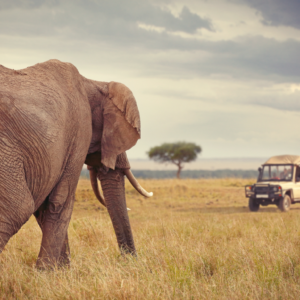
How to Plan Your First Safari to Kenya in 2024
Plan Your First Safari to Kenya in 2024 Kenya, often referred to as the “Safari Capital of the World,” is a land of awe-inspiring landscapes
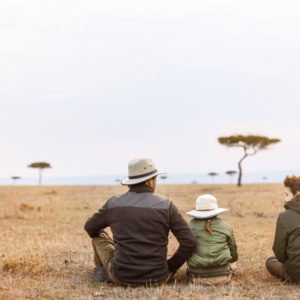
Exploring the Magic of Kenya with Kids in 2024
Exploring the Magic of Kenya with Kids in 2024 Envision your family surrounded by the mesmerizing landscapes of Kenya, with endless plains stretching to the

Embrace the Magnificence of the 2023/2024 Kenya Safari with the Great Wildebeest Migration!
Embrace the Magnificence of the 2023/2024 Kenya Safari with the Great Wildebeest Migration in Maasai Mara. The enchanting wilderness of Kenya offers a multitude of

Exploring the Wonders of Kenya on a Budget Camping Safari.
Prepare to embark on an extraordinary adventure through the heart of Africa as we delve into the captivating realm of exploring the wonders of Kenya
Send Us A Message
+254 725 925339, email for us, [email protected].
- Tours and Safaris
- Terms and Conditions
- Privacy Policy
TOUR CATEGORY
- Adventure Safaris
- Bush & Beach Safaris
- Cross Border Safaris
- Cultural Safaris
- Family Safaris
- Kenya Big Five Safaris
- Romantic Holidays
SECURE PAYMENT

Copyright 2024 © Trek Adventures. Design and developed by Wayne graphics Solutions

Travel + Cocktails Around The World
Safari In Kenya 4-Day Itinerary: Explore The Heart Of Africa
Welcome to our guide, on embarking on an exhilarating four-day Safari in Kenya. This thrilling expedition is a dream come true for wildlife enthusiasts and travelers alike offering opportunities to explore, embrace, and savor the awe-inspiring landscapes of Africa.
In this article, we will delve into all the information you need to prepare for this adventure. From what to pack and understanding the associated costs, and to choosing the time of year for your Safari in Kenya. We’ll also provide an overview of the captivating Tsavo National Park. Also, we will give you our recommended accommodation, the exquisite Finch Hattons.
Naturally, we will also present a 4-day itinerary for your Safari in Kenya, Africa. Prepare yourself for a journey, into the heart of Kenya!
Be sure to use these fun safari Instagram captions while on your adventure!
This article may contain affiliate / compensated links. For full information, please see our disclosure here .
Things To Know For A Safari In Kenya

When you start planning your Kenya safari it’s crucial to ensure that you stay up, to date with all the required vaccinations. Depending on the region of Kenya you intend to visit it might be an idea to consider getting vaccinated for Yellow Fever and meningitis.
Moreover, it would be wise to consider receiving vaccinations for Hepatitis A and Typhoid as a precaution, against any exposure to contaminated food or water. However, we highly recommend consulting with your healthcare provider or a travel clinic two months before embarking on your safari in Kenya.
Malaria Treatment
When visiting Kenya there is a risk of malaria. We recommend you take precautions when visiting. These include bringing along antimalarial medication, use insect repellent, wear protective clothing, and sleeping under a bed net treated with insecticide. If you experience flu symptoms we recommend seeking medical attention immediately.
For noncitizens, obtaining a visa may be necessary when entering Kenya. You have two options; applying for an entry visa through the eVisa portal or getting one upon arrival at the airport in Kenya. However, we suggest avoiding long queues by applying online.
You can review if you will need a visa to enter Kenya h ere .
Kenya generally has a warm, tropical climate. It’s cooler in the highlands, hotter and more humid at the coast, and dry in the North and Northeast parts of the country. Kenya’s best wildlife viewing months are during the dry season from late June to October.
The wildebeest migration usually reaches the Masai Mara in July and remains until October, when they move back to the Serengeti in Tanzania. We visited during October and spotted plenty of wildlife.
Packing List For A Safari in Kenya
Sunscreen is absolutely essential when going on a safari in Kenya. The sun can be quite strong in Africa. So, we suggest you protect yourself from getting burned and use sunscreen.
We highly recommend bringing along a set of binoculars to greatly enhance your experience! Binoculars allow you to easily spot wildlife from a distance and observe animal details without disturbing them. Be sure to look for lightweight binoculars because you will be holding them for a while gazing at the wildlife.
Mosquito Repellent
As mentioned before Kenya poses a malaria risk. Alongside taking medication and using bed nets it is crucial to have repellent. Opt for a repellent that contains DEET for the protection.
When going on trips it is advisable to wear trousers. They provide protection, against sunlight, mosquitoes, and thorny bushes. Look for breathable fabrics that’s easy to clean and quick to dry.
During my experience I found my lightweight scarf to be essential. It can shield you from the sun’s rays, keep you warm during mornings and evenings, and even double as a dust mask during drives in the wilderness.
During the safari, you’ll spend a lot of time outdoors in bright sunlight. A good pair of UV-protective sunglasses is essential to shield your eyes from harmful rays and reduce glare, making wildlife spotting easier. Polarized lenses are a bonus for reducing reflected glare from water bodies.
Kenya is not a quick trip. Use our guide for what to pack on a long flight.
Are Kenya Safaris Worth It?
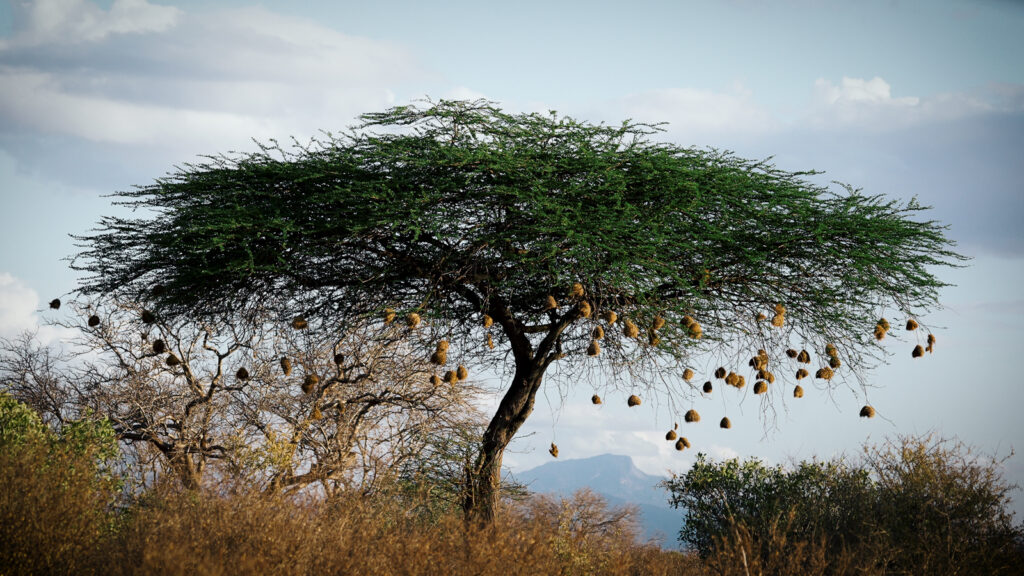
It was an experience that will always hold a place in our hearts. We were absolutely thrilled to have the opportunity to witness wildlife in its form. Kenya truly serves as a habitat, for a range of wildlife, and embarking on a safari in Kenya grants you the incredible privilege of observing these extraordinary creatures in their own natural environments.
From the plains of the Masai Mara to the enchanting lakes teeming with flamingos in the Great Rift Valley each day on this adventure brings new excitement and unforgettable stories that we can’t wait to share. Navigating through these landscapes carries a thrill that simply cannot be replicated elsewhere.
One of the aspects of Kenya safaris is their ability to provide insights into various cultures particularly immersing you into the rich traditions of the Maasai people. Their vibrant attire, captivating dances, and fascinating way of life offer connections with a culture deeply intertwined with nature and wildlife.
Lastly, we will forever treasure memories of sunrises and sunsets that paint the sky with oranges and deep purples. These awe-inspiring moments have left a mark on us making us eager to return and relive them again.
So if you’re seeking encounters with wildlife a connection, with nature cultural exchanges filled with wonderment, and stunning photographs capturing it all embarking on a Kenyan Safari is truly worth every moment. It’s an experience that defies ordinary—it’s an adventure that only comes once in a lifetime.
How Much Does A Safari Cost In Kenya?
When planning a safari in Kenya, one of the things to consider is the cost. The price can be expensive but varies significantly depending on how luxurious and exclusive you want your adventure to be. If you’re looking for the luxury experience safari options can go beyond $1,000 per person per night. These high-end safaris usually offer accommodations, game drives, exquisite meals, and sometimes even air transfers between parks.
On the other hand, there are range safaris that strike a balance between cost and comfort. In this price range of $300 to $600 per person per day you can expect accommodation ( in tented camps) shared game drives with knowledgeable guides most meals included and park entry fees covered.
For those on a budget but still longing to experience the enchantment of a safari there are more affordable options available. Budget safaris can start as low as $125, per day. This typically includes accommodation, shared transportation meals provided, and services of a guide. However, it’s essential to check what’s included in these budget options to avoid any expenses.
Remember that costs may vary based on the time of year. During wildlife season when sightings are abundant prices tend to be higher.
Please remember that the prices mentioned do not cover flights, visas, and travel insurance. These additional expenses should be considered when planning your budget.
What Is The Best Time To Go On A Safari in Kenya?
The ideal time, for a safari in Kenya is during the season, which typically runs from June to October. This period offers cooler and drier weather making it easier to spot wildlife congregating around water sources. My personal experience was during October coinciding with the wildebeest migration.
We were amazed by the number of animals crossing the plains. However, if you have wildlife interests it might be worth considering times of the year when they are more active. For example, birdwatchers may find it more rewarding to visit during the season from November, to May when migratory birds flock to Kenya. Additionally, this rainy season showcases landscapes and an abundance of newborn animals.
Information About Tsavo National Park Safari

Regarded as one of Kenya’s most unspoiled national parks, Tsavo National Park boasts superb wildlife sightings but often flies under the radar on the typical safari tour list. This makes Tsavo National Park an enticing option for those seeking a distinct and genuine safari adventure away from the mass gatherings found in well-known parks like Masai Mara and nearby Amboseli.
The park’s proximity to Kenya’s coastline, less than 100 km away, offers the possibility for a distinctive bush and beach retreat. The Nairobi-Mombasa highway splits Tsavo into two discrete sections, Tsavo West and Tsavo East, each delivering a contrasting safari experience.
How To Get To Tsavo National Park?
To visit Tsavo National Park, Tsavo West some planning is required due, to its location. If you’re coming from Amboseli the best route is through Chyulu. On the hand, if you’re traveling from Nairobi, it’s recommended to enter via the Mtito Andei Gate. The distance between Nairobi and Tsavo West is around 240 kilometers. The average travel time is 5 hours.
For those coming from Mombasa there are access routes to Tsavo West such as Lake Jipe, Mtito Andei (Kamboyo HQ) Chyulu, Maktau and Ziwani. Each route provides a perspective of the park’s landscapes. Therefore your specific interests or safari itinerary may influence your choice of route. Regardless of which path you take, a journey to Tsavo National Park guarantees a rewarding experience!
Where To Stay For A Safari in Kenya: Finch Hattons Luxury Tented Camp
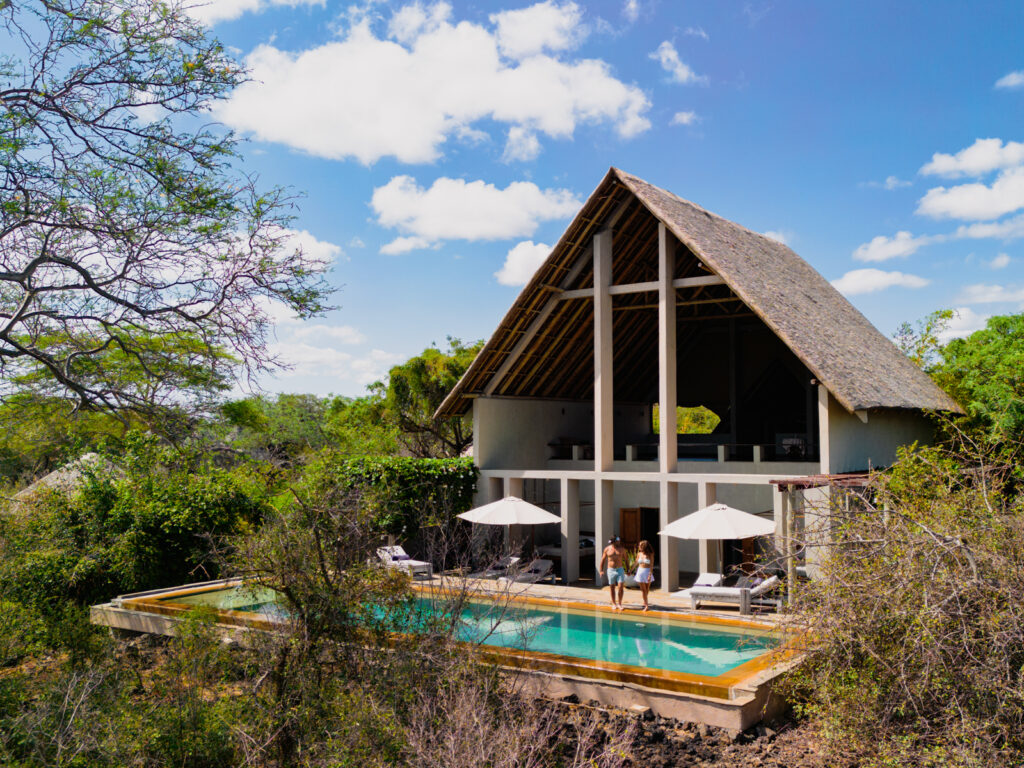
If you’re unsure about where to stay during a safari in Kenya I have a suggestion for you; Finch Hattons Luxury Tented Camp . It’s located within the wilderness of Tsavo West National Park. It offers a unique blend of untamed excitement and the refined charm of classic safari-style living. Even though you’ll be surrounded by tranquility the camp still provides WiFi so you can stay connected with the world.
At this camp, you’ll find a swimming pool, a fitness center, and a spa and wellness center. These amenities ensure that your stay is not only unforgettable but filled with relaxation and rejuvenation. The camp is conveniently situated 60 km away from the Mtito Andei Railway Station making it easily accessible for travelers.
The tents at Finch Hattons are equipped with bathrooms that include both a bath and complimentary toiletries. Each day begins with a breakfast that prepares guests for the exciting adventures ahead.
With its 5-star rating, Finch Hattons goes above and beyond by offering luxury features like a hammam (Turkish bath) and terrace. Families traveling with children will be delighted to know that there’s also a kids club, on-site providing activities to keep their ones entertained throughout their stay.
The camp is located 4.2 kilometers from Tsavo West National Park-Waterhole, which is well known for its abundant wildlife sightings. Additionally, Lorarami Hill, an attraction is just 6 kilometers away. Finch Hattons Luxury Tented Camp offers accommodations and an unbeatable location, for anyone planning a safari in Kenya.
Safari In Kenya 4 Day Itinerary
Day 1 safari in kenya.

When you first arrive in Kenya for your adventure, your journey begins at the Finch Hattons Luxury Tented Camp. Located in Tsavo West National Park this camp provides top-notch facilities and a friendly reception that sets the stage for an experience.
Once you’ve checked in take a moment to get comfortable just like we did inside the tent. Explore all the amenities that Finch Hattons has to offer cause you will be there for a while.
Familiarize Yourself with Finch Hattons’ Environment
Once you have settled in take the time to explore Finch Hattons and its beautiful surroundings. The property is nestled in the wilderness making it an ideal starting point, for your adventure. You’ll find a range of amenities, at the camp, including a swimming pool and a wellness center all designed to ensure you’re comfort being surrounded by nature.
Indulge in a Meal Prepared by a Renowned Chef
Immerse yourself in the delights prepared by the chef once you’ve familiarized yourself with the property. At the camp they take pride in their culinary offerings, which feature a diverse selection of continental and local dishes. These meals provide a gastronomic experience right at the heart of the untamed wilderness. We have eaten some of our best meals here.
Embark on a Sundowner Game Drive
As the day comes to an end you can hop on a game drive during a time known as “sundowner.” This is when the sun starts to set creating a display of colors in the sky and the wildlife comes out.
Accompanied by trackers our sundowner game drive offered us an opportunity to explore and discover the diverse range of wildlife in Tsavo West National Park.
Day 2 Safari In Kenya

Our thrilling second day of adventure starts with a morning safari ride. Tsavo National Park is famous for its elephants, named after the red dust that coats their skin. The early hours provide a chance to encounter these creatures as they commence their day. Witnessing these giants in their habitat is an experience that defies description; it’s something you truly have to witness yourself.
Drive Through the Shetani Lava Rocks
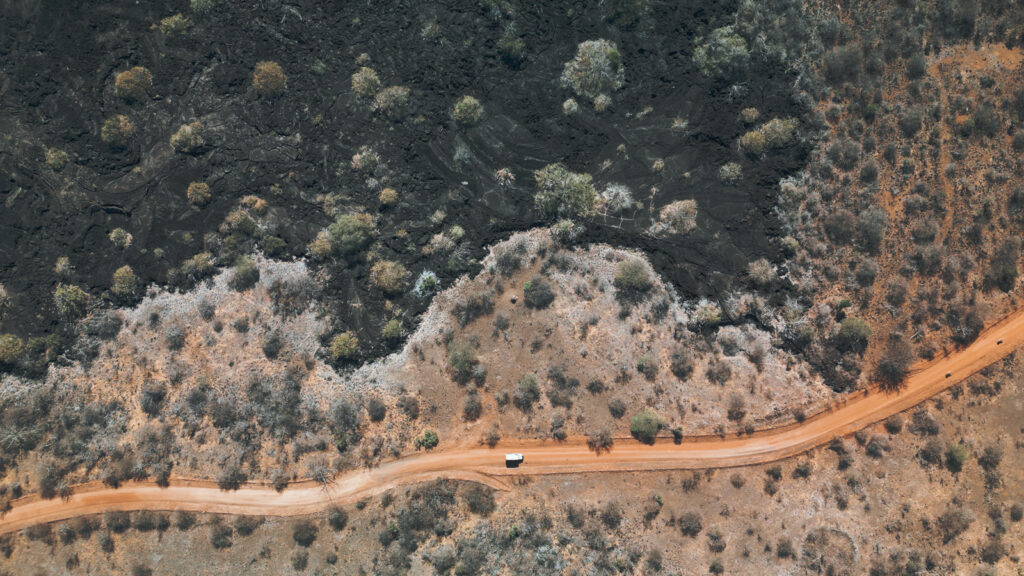
After we came across the elephants we embarked on a mesmerizing journey, through the captivating Shetani Lava Rocks. This eerie black expanse, formed by activity centuries ago presents an otherworldly landscape.
The name “Shetani,” derived from Swahili meaning ‘devil’ originates from legends that associated the cooling and cracking of the lava with spirits at work. Driving through this beautiful Shetani Lava Rocks allows us to truly see the park’s fascinating geological history.
Visit to the Rhino Sanctuary
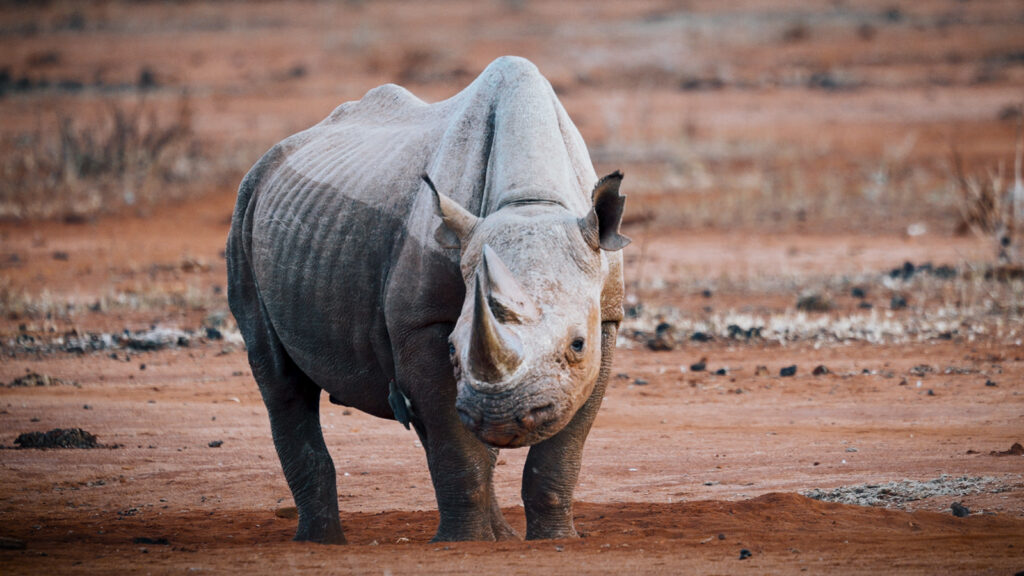
Our day continued with a visit to the Rhino Sanctuary. Endangered black rhinos find a safe haven in this protected area within Tsavo West National Park. During our journey to the sanctuary, we had encounters with other wildlife, including elephants, giraffes, and perhaps even lions. Remember to bring your camera for stunning photo opportunities.
Dinner at Finch Hatton’s
We completed the day and retreated to the comfort of Finch Hatton’s Luxury Tented Camp . Here, under the African stars, we indulged in a sumptuous dinner prepared with fresh local ingredients. The camp’s renowned chefs craft exquisite dishes that perfectly round off your day of unforgettable safari experiences.
Day 3 Safari In Kenya

Begin your third day in Kenya with a thrilling early morning game drive. As the sun’s golden rays kiss the African plains, set out to explore the mesmerizing wilderness of Tsavo National Park. This is the time when the nocturnal wildlife retreats and the diurnal creatures stir, offering a different spectrum of the park’s animal kingdom.
Indulgence with Afternoon Spa Retreat at Finch Hattons
After the exhilarating morning game drive, return to the tranquil ambiance of Finch Hattons for a soothing afternoon at the spa. We immersed ourselves in a transcendent couples massage performed by skilled therapists. The experts eased our tiredness while the enchanting sounds of the wilderness in the background added a unique serenity to the experience.
Rejuvenation with Yoga Amidst Nature
To conclude your day, in Kenya on a fulfilling note why not join a yoga session at the spa of Finch Hattons? The tranquil ambiance of the spa combined with the practice of yoga offers a rejuvenating experience.
The yoga class accommodates individuals of varying fitness levels and backgrounds ensuring that everyone can participate in this voyage of self-exploration and serenity. As the day draws to a close immerse yourself in harmony, with the beauty of Kenya’s wilderness.
Day 4 Safari In Kenya, Africa
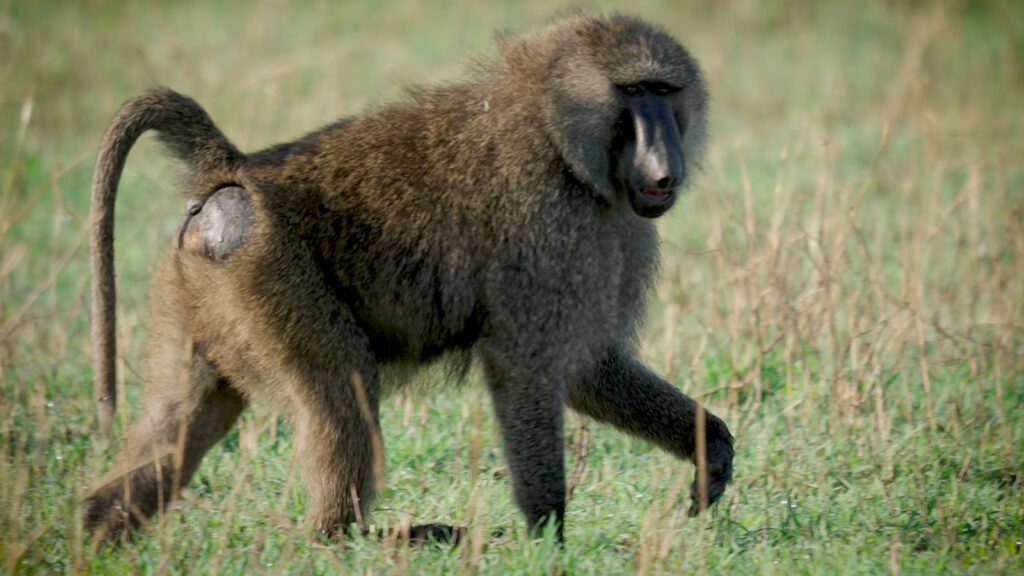
On the fourth day of our safari in Kenya, we had early morning encounters with the incredible wildlife inhabiting the African plains. It’s a unique thrill that comes with knowing you are exploring one of the most diverse and captivating landscapes on Earth.
Breakfast in the Bush: A Unique Dining Experience Amid Wildlife
After exploring the African plains have an unparalleled dining experience – breakfast in the bush. We had a savoring and delicious meal prepared by expert chefs amidst the beauty of the wilderness. You even have the sounds of nature as your morning soundtrack. It’s a culinary adventure that complements the excitement of a safari, offering a unique way to kick off your day.
Game Drive: Discovering Kenya’s Hidden Treasures
After your breakfast, embark on another game drive through the Tsavo National Park. Each journey through the park reveals different facets of the diverse wildlife that calls it home. From the regal lions to the graceful giraffes, every game drive offered us new surprises.
Pool at Finch Hattons: Relax and Rejuvenate in the Lap of Luxury
Following the exhilaration of the game drive, you will be exhausted. Return to Finch Hattons Luxury Tented Camp and indulge in a relaxing afternoon by the pool. The camp’s outdoor pool offers a cool refuge from the African heat and a perfect spot to discuss your safari adventures. The pool’s serene environment, framed by the surrounding wilderness, provides an idyllic setting for relaxation.
Outdoor Movie at Boma: A Starlit Cinema Experience
As the sun setting we brought our fourth day in Kenya to a close with an outdoor movie night at the Boma. This was one of our favorite things to do at Finch Hattons. Under the African night sky we enjoyed a selection of films in the open-air setting. It truly is a unique cinema experience that perfectly concludes your safari in Kenya.
Conclusion: An Unforgettable Safari in Kenya

There’s nothing, like the thrill, excitement and awe of embarking on a safari in Kenya. From the captivating encounters with elephants to the beauty of the Shetani Lava Rocks every moment is infused with the essence of untamed nature.
At Finch Hattons it’s a chance to unwind amidst nature and enjoy a movie experience that adds a touch to this Kenyan safari. As you bring your safari in Kenya to a close you’ll carry with you an overflowing heart filled with memories, a camera filled with photos, and a soul deeply touched by the rhythmic wonders of African wildlife.
Don’t forget to use these safari captions while on your safari in Kenya.
Like this safari in Kenya post? Share it with others or pin it for later!

Our Newsletter
Recommended articles, 102 brooklyn bridge captions & quotes for instagram.

42 Swoon-Worthy Amsterdam Instagram Spots For The Perfect Photo

Discover The Best Galapagos Cruise: Quasar Expeditions

- Search Please fill out this field.
- Manage Your Subscription
- Give a Gift Subscription
- Sweepstakes
Why Kenya Is the Best Place for a Safari, According to a Seasoned Local Guide
Veteran tour guide Kitonyi "George" Kamonde describes what it’s like to work for one of the world’s leading safari companies.
:max_bytes(150000):strip_icc():format(webp)/Image1-1a20d153e499415d89d3bc396b96d275.png)
Ask almost anyone and they'll surely tell you that a majestic safari experience is at the top of their travel bucket list. From South Africa to Tanzania, the stunning images of seemingly endless green plains, towering giraffe, and the formidable "Big 5" (African leopard, African lion, Cape buffalo, African elephant, and rhinoceros) have captivated adventurers the world over. However, much like people, not all safari destinations are created equal. Each location offers something special that speaks to those fortunate enough to indulge in its wonder. This is true for Kenya where various spectacular landscapes, such as Amboseli, Lewa, and Masai Mara, are home to rarities like Grevy's zebra, black rhino, and African wild dog.
When he's not home in Kenya's sunny, bustling capital city of Nairobi, Kitonyi Kamonde — better known to adventure seeking travelers as George — is in the bush serving as an expert guide with one of the world's best safari outfitters, Micato Safari . For a decade, George and his warm smile have provided local insight into Kenya's wildlife to generations of safari goers in order to give them the experience of a lifetime. From recalling historic facts and seeking out rare animals to helping guests indulge in luxurious accommodations like Elewana's Kifaru House , George is the man you want by your side — whether you're on your first or your fiftieth safari.
Travel + Leisure caught up with the knowledgeable veteran to learn more about how he got started in the industry, his most memorable experience, and what mistakes he wishes first-timers would stop making on safari.
T+L: How did you get started as a safari guide?
Kitonyi "George" Kamonde : "I've always had a fascination with wildlife. I grew up on a small farm (what we call a shamba ) about two hours from Nairobi, very close to a national park. That exposed me to the wonders of the wild from an early age — and I joined Kenya Wildlife Clubs to learn everything I could about Kenya's magnificent wildlife and birdlife. Next, it was off to college where I graduated with a degree in Tourism & Wildlife Management.
I was a driver-guide for some years before becoming a safari director for Micato, where our training is always ongoing. The process of becoming a certified guide takes many years of study and, like every Micato safari director in Kenya, I earned the prestigious Silver-Level certification awarded by the Kenya Professional Safari Guides Association. I am very proud to have achieved the Silver Certification and, as part of my always ongoing learning about safari guiding, I am working towards my Gold level. Those exams are very difficult, but I am confident that I will be ready if I study hard enough."
What do you love most about being a guide?
"I love meeting guests who love the wild as much as I do, and eventually [becoming] friends. I'm excited each day about guiding and educating them about my country, people, history, culture, and traditions. And we must never forget that our guests are here for the wilderness and the animals. Whether it's a lion or dung beetle, they give us a different show to narrate every time. I also love working with my fellow guides who always find ways to challenge me with their own knowledge. And of course, every day is different. When a morning begins with a loping lioness on the hunt and ends with a 10,000-pound bull elephant bathing in a hippo pool, well, let's see what our afternoon looks like."
What advice do you have for others looking to get started as a guide?
"Being a Safari guide is so much fun! We always find time to laugh, but you must remember that there is much to learn. It's one of the best professions in the world and you will enjoy it if you do your homework well. You have to be well rounded, have a sense of humor, and be ready with the knowledge and information and answers at your fingertips to keep your guests informed, entertained, and happy. And never give an answer you are not sure of. If I don't know the answer, I say so and then find it."
What's your most memorable safari experience?
"You know when news of a really good party spreads like wildfire? Imagine a grand and glorious male lion, six feet long and weighing at least 400 pounds, in a fight to death with a pack of hyenas over a juicy wildebeest kill. When we arrived at this primal scene, there were five hyenas, which was exciting enough, but then word got out and suddenly more swept in from all directions and soon there were 30 at the party. Adaptable and opportunistic, the hyenas immediately surrounded the lion, some trying to grab bites from the kill. The lion flayed and snarled, starting to scare them off, but they retaliated en masse by biting the lion's tail, rear legs, and rear end. At least one hyena died in the fight, but the lion eventually had to retreat, running to safety in a nearby marsh.
Not the end of the story! The hyenas followed and pushed him deeper into the water where he crouched to avoid the relentless attacks. The lion was finally rescued from these daring hyenas by his brother, who eventually emerged from some distance to find his sibling in danger. I was as amazed as our guests were about that one!"
Which safari region is your personal favorite, and why?
"The beautiful landscape and the abundance of game in the Maasai Mara is difficult to beat. The splendid beauty of the big cats, alongside leopard, cheetah, [and] elephant, so readily seen, is one of the world's most impressive marvels."
What's the best time to visit Kenya on safari?
"Kenya is good to visit year-round due to its location on the Equator, though April sees the most rain. We always make sure to find — and create — the finest experience for our guests."
What are three mistakes you often see guests make on their first safari ?
"Overpacking. No need to bring things like hairdryers and shampoo and lots of other things that Micato makes sure are in supply. Too many shoes. And too many clothes. Micato includes complimentary laundry service every day in the bush.
For those who are interested, bring a good camera with a good lens, for birds and other far-off shots. Some guests, who have only their phone for pictures find that they wish they had a longer lens. But of course, the new phones are getting so good that they can be a great tool for many people. My best advice is to know what you are after and know what your equipment is capable of doing. Then bring what suits you best.
People on safari can get excited about an animal sighting and noise can end up making shy cats disappear into the bushes. Micato guests catch on pretty quickly and get pretty quiet, especially if an elusive leopard is nearby."
How has COVID-19 affected the safari industry in Kenya?
"Of course, there have been ups and downs. It was difficult when Kenya was shut off to international flights last spring. Safari and all tourism was brought to a standstill for months. Many camps and lodges had to close, at least on a temporary basis. Things were very quiet in the bush. The best moment was when flights to and from Kenya started again on Aug. 1 [2020]. Now that was a good day! When we re-started our safaris, we as guides were so pleased to have happy guests with us again. Many safety measures went into action right away. Along with Micato, the airlines and the lodges we use have put rigorous COVID safety protocols in place and our guests have been very happy with Micato's protocols. Our guests have told me that the best decision they made was to travel during these times and not wait. That is so nice to hear."
What three words describe the beauty of a Kenyan safari?
"Exhilarating. Incredible. Awesome — and, may I add, the only thing missing? All of you!"
- You are here:
- Kenya Tours
Your Safari
Tour length, rates in usd $ – change currency, starting from.
- Nairobi (2183)
- Mombasa (59)
- Diani Beach (11)
- Entebbe (8)
- Johannesburg (0)
- Zanzibar (0)
- Dar es Salaam (0)
- Kampala (0)
- Victoria Falls Town (0)
- Windhoek (0)
- Addis Ababa (0)
- Cape Town (0)
- Livingstone (0)
- Hoedspruit (0)
- Port Elizabeth (0)
- Antananarivo (0)
- Pretoria (0)
- Nelspruit (1)
- Bujumbura (0)
- Hazyview (0)
- Upington (0)
- Blantyre (0)
- Lilongwe (0)
Comfort Level
- Luxury+ (20)
- Luxury (598)
- Mid-range (1,152)
- Budget (405)
Private or Shared Tour
- Private tour (1,852)
- Shared tour (427)
Safari Type
- Lodge, tented camp or hotel (2,202)
- Camping (77)
Operator Rating
- & up (2,184)
Specialized Tours
- Fly-in safaris (87)
- Family (1,144)
- Beach time (157)
- Honeymoon (618)
- Gorilla trekking (28)
- Photographic safaris (4)
- Mountain climbing (47)
- Walking safaris (5)
- Self-drive (0)
- Guided self-drive (0)
- Chimp trekking (16)
- Overland tours (0)
- Cycling safaris (3)
- Canoe safaris (0)
- Horseback safaris (2)
- Birding tours (7)
- Accessible safaris (0)
- Golf & Wildlife (1)
Other Tour Features
- Airport transfer is included (2,257)
- Itinerary can be customized (1,968)
Filter by Operator
Filter by accommodation, operators from.
- Kenya (2,094)
- South Africa (14)
- Tanzania (58)
- United Kingdom (31)
- United States (110)
- Australia (0)
- Belgium (0)
- Botswana (0)
- Comoros (0)
- Denmark (0)
- Ethiopia (32)
- Eswatini (0)
- Germany (0)
- Ireland (0)
- Lesotho (0)
- Madagascar (0)
- Mauritius (0)
- Mayotte (0)
- Mozambique (0)
- Namibia (0)
- Netherlands (0)
- New Zealand (0)
- Nigeria (0)
- Portugal (10)
- Reunion (0)
- Seychelles (0)
- Singapore (0)
- Switzerland (3)
- Uganda (62)
- United Arab Emirates (0)
- Zimbabwe (0)
Kenya Safari Tours - Compare 2,279 Packages
Kenya is the historical home of the East African safari, a land of sweeping savannah grasslands inhabited by charismatic megafauna, including big cats, the Big Five (elephant, buffalo, lion, leopard and rhino) and just about everything in between. Elsewhere, landscapes here stir the soul with deserts in the north, dense forests in the west, Rift Valley lakes in the center and tropical coast out east. The result for those on safari is an experienced safari industry ready to show you a seemingly endless parade of wildlife against one of the most beautiful backdrops in Africa.

6-Day Amboseli, Lake Naivasha and Mara - Mid-Range
$1,770 to $2,370 pp (USD)
Kenya: Private tour Tented Camp & Hotel
You Visit: Nairobi (Start) , Masai Mara NR, Lake Naivasha (Naivasha) , Amboseli NP, Nairobi (End)
Spirit of Kenya Tour operator has an office in Kenya
4.9 /5 – 483 Reviews

3-Day Jambo Mara Lodge Shared Transport Wooden Cottage
$418 to $743 pp (USD)
Kenya: Shared tour (max 8 people per vehicle) Resort
You Visit: Nairobi (Start) , Masai Mara NR, Nairobi (End)
Balu Travel Tour operator has an office in Kenya
4.8 /5 – 48 Reviews

6-Day Private Safari Extravaganza
$1,650 to $2,068 pp (USD)
Kenya: Private tour Lodge & Tented Camp
You Visit: Nairobi (Start) , Masai Mara NR, Lake Nakuru NP, Amboseli NP, Nairobi (End)
Jocky Tours and Safaris Tour operator has an office in Kenya
4.9 /5 – 1301 Reviews

10-Day Magical Kenya Safari Experience
$2,772 to $3,894 pp (USD)
You Visit: Nairobi (Start) , Aberdare NP, Sweetwaters (Chimp Sanctuary) , Lake Nakuru NP, Masai Mara NR, Lake Naivasha (Naivasha) , Amboseli NP, Nairobi (End)
Kameraz of Afrika Tour operator has an office in Kenya
4.8 /5 – 97 Reviews

5-Day Nakuru Naivasha Masai Mara Budget Tour
$590 to $800 pp (USD)
Kenya: Shared tour (max 7 people per vehicle) Tented Camp & Hotel
You Visit: Nairobi (Start) , Lake Nakuru NP, Lake Naivasha (Naivasha) , Masai Mara NR, Nairobi (End)
Bienvenido Kenya Tours and Safaris Tour operator has an office in Kenya
4.3 /5 – 76 Reviews

10-Day Luxury Kenya Safari Tour
$7,707 to $9,323 pp (USD)
Kenya: Private tour Lodge & Hotel
You Visit: Nairobi (Start) , Samburu NR, Mara North (Greater Masai Mara) , Diani Beach, Nairobi (End)

4.9 /5 – 149 Reviews

8-Day Kenya Adventure Safari
$1,199 to $1,595 pp (USD)
You Visit: Nairobi (Start) , Masai Mara NR, Lake Naivasha (Naivasha) , Lake Nakuru NP, Amboseli NP, Nairobi (End)
Super Eagles Travel and Tours Tour operator has an office in Kenya
4.8 /5 – 158 Reviews
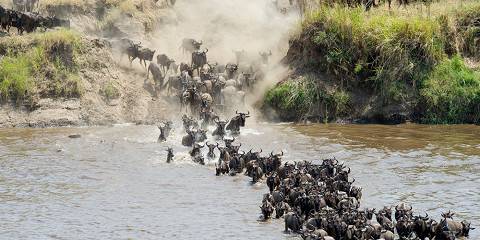
6-Day Awesome Kenya Migration Safari from Nairobi
$1,375 pp (USD)
You Visit: Nairobi (Start) , Amboseli NP, Lake Nakuru NP, Masai Mara NR, Nairobi (End)
Lamara Tourism Tour operator has an office in Kenya
4.7 /5 – 32 Reviews

6-Day Mid Range Tour - Mara, Nakuru, Amboseli
$1,958 pp (USD)
Ways Of Africa Travel Tour operator has an office in Kenya
5.0 /5 – 64 Reviews

4-Day Lake Nakuru/Masai Mara 4x4 Luxury Private Safari
$1,277 to $2,369 pp (USD)
You Visit: Nairobi (Start) , Lake Nakuru NP, Masai Mara NR, Nairobi (End)
Moran Discoveries & Tours Tour operator has an office in Kenya
5.0 /5 – 40 Reviews
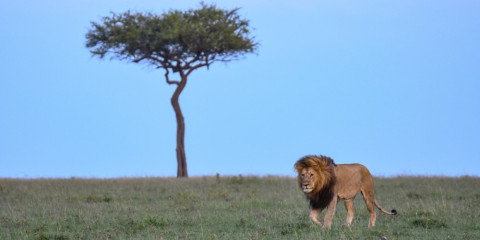
4-Day Masai Mara Fly-in Safari at Mara Bush Camp
$2,180 to $3,080 pp (USD)
Kenya: Private tour Tented Camp
Indigo Safaris
4.8 /5 – 125 Reviews

5-Day 4x4 Mara-Nakur Naivasha Karibu Kenya Budget Safari
$690 to $905 pp (USD)
You Visit: Nairobi (Start) , Masai Mara NR, Lake Nakuru NP, Hell’s Gate NP, Nairobi (End)
Inspired Feet Safaris Tour operator has an office in Kenya
5.0 /5 – 50 Reviews
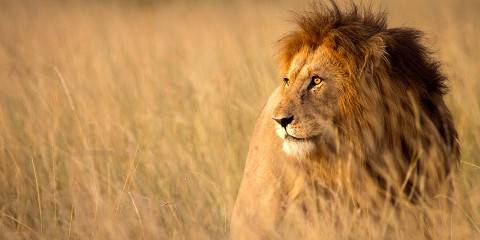
9-Day Luxury Bush and Beach Safari
$2,770 to $3,542 pp (USD)
You Visit: Nairobi (Start) , Masai Mara NR, Lake Nakuru NP, Amboseli NP, Diani Beach, Nairobi (End)
Apodiformes Adventures Tour operator has an office in Kenya
4.8 /5 – 174 Reviews

7-Day Off the Beaten Path
$2,046 to $3,097 pp (USD)
You Visit: Nairobi (Start) , Samburu NR, Aberdare NP, Lake Nakuru NP, Masai Mara NR, Greater Masai Mara, Nairobi (End)
Trav-Interactive Tour operator has an office in Kenya
4.9 /5 – 20 Reviews

3-Day Private Luxury Tour to Masai Mara National Reserve
$1,095 to $1,469 pp (USD)
5.0 /5 – 16 Reviews

4-Day Wildlife Expedition in the Heart of Maasai Land
$1,406 to $2,314 pp (USD)
Kenya: Shared tour (max 6 people per vehicle) Tented Camp
Extra Miles Unique Adventures Tour operator has an office in Kenya
5.0 /5 – 76 Reviews

5-Day Masai Mara Fly-in Luxury Tour
$4,851 to $5,071 pp (USD)
Nashibe Adventures Tour operator has an office in Kenya
5.0 /5 – 13 Reviews

3-Day Best of Amboseli National Park Safari - Luxury
$1,100 to $1,496 pp (USD)
Kenya: Private tour Lodge
You Visit: Nairobi (Start) , Amboseli NP, Nairobi (End)
5.0 /5 – 70 Reviews

4-Day Tsavo West, Amboseli & Tsavo East National Parks
$990 pp (USD)
You Visit: Mombasa (Start) , Tsavo West NP, Amboseli NP, Tsavo East NP, Mombasa (End)
Kenya Bush Expeditions Tour operator has an office in Kenya
4.6 /5 – 64 Reviews

3-Day Safari from Mombasa Tsavo East, Saltlick Lodge
$946 to $990 pp (USD)
You Visit: Mombasa (Start) , Tsavo East NP, Taita Hills WS, Mombasa (End)
Back of Africa Adventure Tour operator has an office in Kenya
4.8 /5 – 84 Reviews
Related Searches
- Kenya Tour Operators
- Kenya Budget Safaris
- Kenya All-inclusive Safaris
- Kenya Honeymoon Safaris
- Kenya Family Safaris
- Kenya Camping Safaris
- Masai Mara Safari Holidays
- Amboseli Safari Holidays
- Tsavo East Safaris
- Tsavo West Safaris
- Kenya Safari & Mombasa
- Diani Beach Beach Packages
8 Questions About Kenya Safaris

Answered by
Anthony ham.

When is the best time to visit Kenya?
“June to October is an excellent time for Kenya tours. During these months, the weather is generally dry (although it can get really hot in October and at the tail end of September) and most trails are open. This also coincides with the wildebeest and zebra migration in the Masai Mara National Reserve. This is the Dry season, and as it progresses, water sources for animals tend to dry up and become fewer, drawing animals in numbers to those that remain. One downside is that high-season prices apply during the Dry season months. Crowds are also larger – in some parks, the queue of safari vehicles can take away something from your experience, and some areas of the Masai Mara can be completely overwhelmed with vehicles during the migration. In the Dry season, June is one of my favorite months to visit. Visiting from November to February also has its devotees. At this time, migrating birds arrive, the rains rarely disrupt travel, and the country is transformed into a lovely shade of green. Most travelers avoid March to May because heavy rains are always possible and can transform safari trails into muddy bogs. That said, prices are lower and I visited once in April and was lucky to find very few other visitors (except for local visitors around Easter) and clear skies.”
Why visit Kenya? What are the major attractions?
“Outstanding wildlife is the main reason to visit Kenya. While many visitors come for the migration, Kenya is excellent year-round, with a large number of world-class national parks – apart from the Masai Mara, there’s Amboseli, Lake Nakuru, Tsavo East and Tsavo West National Parks and Samburu National Reserve – where superb wildlife viewing is almost guaranteed. It all adds up to Kenyan safari possibilities of great variety. Kenya is Big Five territory, with healthy populations of elephant, buffalo, lion, leopard and rhino, but the birdlife is also outstanding, as is the cultural element – this is the land of the Maasai, Samburu, Turkana and others. The sheer number of habitats, too, make for wonderful scenery – endless horizons in the Masai Mara, tropical forests in Kakamega Forest National Reserve, the starkly beautiful parks of the north, and peerless Kilimanjaro views from Amboseli.”
What does a Kenyan safari cost?
“It all depends on what sort of safari you want and can afford. Kenya has more variety than most other African safari destinations, with excellent options from the lower end of the pricing scale (from US$200 per person per day) to luxury Kenya safaris (up to US$1,000). While accommodation is partly what will determine the price for many travelers, it can also depend on how you wish to travel between the various parks. Air transfers, usually via Nairobi, can be expensive, but dramatically reduce the amount of time you’ll spend on the road, thereby maximizing the amount of time you’ll get to spend in the parks themselves. Remember also that most Kenya safari packages will include transport, accommodation, all meals and activities (including game drives).”
How is the wildlife viewing?
“It can vary from park to park. Most of the more popular parks that you can visit on a Kenya tour – Amboseli, Masai Mara, Samburu and Lake Nakuru – have fabulous wildlife-viewing opportunities. Dense wildlife populations in all of these parks make them good all-round safari destinations that enable you to see as many animals (and different species) as you can in a short period of time. Other parks are more specialist – such as the birds and primates of Kakamega, and the sitatunga in Saiwa Swamp National Park – allowing you to tick off a hard-to-find species, usually without the crowds. And a more exclusive Kenyan safari experience is possible in the conservancies of Laikipia Plateau – you pay more, but, with the exception of Ol Pejeta Conservancy, crowds are non-existent and wildlife viewing is excellent. At most of these conservancies, you can get off-road as well, meaning that you’ll get a lot closer to the animals than you will in a national park.”
How safe is Kenya for tourists?
“For the most part, a Kenya safari is safe, but there are some important things to know. Nairobi and, to a lesser extent, some other Kenyan cities have a reputation for violent crime. I’ve spent a significant amount of time in Nairobi and elsewhere and have never once had a problem, but it does happen often enough to mean that you should always be careful and follow local advice when it comes to these cities. Another potential danger comes from traveling on the country’s roads – the accident rate is extremely high. You can minimize the danger by spending as little time as you can in Nairobi and other cities (in any case, Kenya’s charm rarely resides in its major urban centers), by never traveling at night and by flying between the parks. The danger from wild animals is minimal; most Kenya safari trips and operators have excellent safety records, and you should be fine if you follow the safety briefings and instructions from guides.”
How do I select a reliable tour operator for a Kenyan safari?
“The best way to choose a Kenya safari is to read all about the safari experiences of other travelers at SafariBookings.com – chances are that their reviews will answer many of your questions (before you’ve asked them), as well as speak to the professionalism of the various operators with whom they’ve traveled. Otherwise, it’s extremely important that you contact any tour companies with whom you are considering traveling before you make a booking, and ask any questions you may have. This could be anything from the mode of transport, frequency of meals or daily safari schedules to the languages spoken by your guide or how many other travelers will be in your vehicle. Be as specific as you can. Not all operators offer customized Kenya tours, it’s true, but there’s no substitute for being informed. The operator’s willingness to answer questions can be a good guide to their dealings with people on safari.”
What type of accommodation can I expect?
“As a general rule, the higher your Kenya safari prices, the better you can expect your accommodation to be. At the lower end, campsites are usually basic, sometimes crowded and not always in the best locations within the national parks or reserves, but they are well priced and often have ample facilities such as showers and toilets. Lodges are the mainstays of the Kenya safari scene and the quality varies considerably. Many lodges within the reserves and national parks have excellent locations but are aging and in need of renovation, while others are luxurious and recently overhauled. In tented camps, including mobile camps, you’ll sleep in large, walk-in tents – they’re like lodge rooms in terms of size but with canvas for walls and floor. Canvas tents mean that you can hear the sounds of the African night. Hopefully you won’t hear the sounds of your neighboring guests if the tents are nicely spaced. Most lodge rooms and tents of this kind have comfortable (not camp) beds, sometimes a desk and usually a private bathroom; some even have an outdoor shower with no roof but walls that protect your modesty. Particularly in tented camps, you’ll most likely need to recharge your devices not in your room but at a power station in the main public area.”
What can I expect from a safari in Kenya?
“Most days out on safari begin with a quiet African voice waking you well before sunrise. After dressing quickly, and having a coffee or tea, you head out for a few hours in a safari vehicle (with other guests, a driver, guide and sometimes a tracker) looking for wildlife – this time, and the last hours before sunset, are ideal for viewing wildlife. You’ll return to the lodge or camp mid- to late morning for a proper sit-down breakfast. A few hours of relaxation, followed by lunch, then a few hours more doing very little occupies the hottest part of the day, when even animals retreat into the shade. Afternoon tea, often known as High Tea in a nod to colonial-era safari traditions, happens around 3 PM or 3:30 PM, then it’s back out looking for wildlife until after dark. Just before sunset, you’ll stop for another safari institution, the ‘Sundowner’, when you’ll watch the sunset while nursing the drink of your choice. You arrive back in camp in time to freshen up, then it’s dinner and off to bed, before it all starts again very early the next morning.”
Kenya Safari Reviews

Stuart is a travel writer and author of numerous Lonely Planet guidebooks, including 'Kenya', 'Rwanda' and 'Tanzania'.
East Africa’s Most varied Nation
Kenya is the original home of the safari. This is the land of the world renowned Masai Mara National Reserve where tawny coloured lions feast off the hundreds of thousands of wildebeest that annually migrate into the country from...
Full Review

Alan is a travel writer and author of over 20 Lonely Planet guidebooks, including the guides to Southern Africa and Zambia & Malawi.
A Safari Behemoth
In some ways, Kenya rates as the best country for safaris in Africa. That is a contentious statement and many would argue that Tanzania should be given that title. Whichever way you go, Kenya is undeniably a destination which will fulfill...

Country worth visiting!
My family visited Giraffe Centre and Snake park in Nairobi.Then we had a 5 day safari (Amboseli-Nakuru-Naivasha-Maasai Mara) with Bigmac Africa Safaris.This tour operator is excellent and they respond quickly to any inquiries.My little boy...

Amazing to see the wildlife
It was fantastic and overwhelming to see the wildlife in the Masai Mara, and at Lakes Nakuru and Naivasha. I also enjoyed my first afternoon in Nairobi, walking through the city and going up the KICC tower. I found the Masai village visit...

Extremely scenic country with beautiful nature and spectacular views
Had a very good time in Kenya, climbing Mt Kenya (5 days), doing a safari to spot wildlife (5 days) and have some relaxation time in Mombasa (3 days). Apart from shortening the safari a bit (and extending the time in Mombasa) I would do...
Kenya delivers a wonderful experience beyond expectations.
A most amazing experience from start to finish. We enjoyed wonderful views of Kilimanjaro from our Elerai Camp lodgings in Amboseli filled with an abundance of stunning wildlife. Travelling along the expanse of the East African Rift Valley...

- South Korea
- Indonesia (Bali)
- Central Asia
- African Safari
- South Africa
- Itinerary Ideas
- 12-Day Kenya Best Safari Tour with Amboseli
Craft cherished memories on this private vacation.
This is the best choice to witness the Big Five in their natural habitats and experience the Massai tribe at one time.
- Experience the African wilderness like never before with boating, biking, bush walking, and night game driving in different National Parks.
- Discover Kenyan diverse landscapes with our custom 4x4 safari jeeps and the efficient fly-in safari for seamless exploration.
- Indulge in the enchantment of Kenya safaris alongside our private driver-guides . They will expertly lead you to encounter wildlife and ensure you capture unforgettable moments with stunning photographs.
We happily customize this itinerary to accommodate your interests, adjust schedules, and plan special themed events for celebrations like birthdays, anniversaries, retirement or bucket list experiences.
from US$7,117 p/p
First-timer
Jul. - Oct.
Domestic flights included, international on request
Cancellation Policy:
100% Refund 22 Days before Arrival
Journey Map (Suggested Route)
Brief itinerary for 12 days in kenya.
- 8 years of travel advisor experience
- Has helped 5,000+ clients
Tour Highlights
Itinerary details.
- Welcome to the diverse land of Kenya! Once you land at Nairobi airport, our English-speaking representative will be waiting for you at the arrival hall, ready to give you a warm welcome.
- Enjoy a warm and informative introduction to Kenya, followed by a private transfer to your cozy hotel.
- Global Highlights guests in Kenya receive "AMREF Flying Doctors" insurance for emergency evacuation flight(s) to Nairobi.
- In the morning, our private driver cum guide will meet you at your hotel for an exciting Nairobi city tour.
- Explore the Karen Blixen Museum , housed in the former home of the famous Out of Africa author. Discover the captivating life and inspiration behind her renowned literary work.
- Experience the Giraffe Centre , witness the conservation of native Rothschild's giraffes, and interact with and feed them. Get lucky kisses from these gentle giants.
- Discover the David Sheldrick Wildlife Trust Elephant Orphanage , and witness elephants being lovingly fed. Engage with knowledgeable keepers and get up close to these gentle giants.
- Global Highlights will adopt an orphaned elephant in your name for 1 year, along with a special certificate for you to commemorate the particular connection.
- Learn about traditional cheese-making methods at the Brown Cheese Farm , taste eight varied kinds of cheeses, and savor a lunch with locally sourced ingredients.
- Discover the Great Rift Valley View Point on the way to Lake Nakuru and be captivated by the awe-inspiring beauty of its dramatic landscapes, towering cliffs, and picturesque lakes.
- Enjoy dinner and spend the night in your Lake Nakuru hotel.
- Meet your private driver-guide and enjoy one-day game drives in Lake Nakuru National Park.
- Enjoy the morning game drive , and witness the breathtaking sight of thousands of birds, including the pink flamingos, foraging and hunting for fish in the water.
- Return to your hotel to freshen up and indulge in a delicious lunch.
- Embark on an afternoon game drive to encounter over 50 species of wildlife, including the Big Five, especially the white and black rhinos, while marvelling at impressive herds of zebras, giraffes, impalas, and predators.
- Indulge in a delightful dinner and unwind for the night at your Lake Nakuru lodge.
- Immerse yourself in the natural marvels of Lake Nakuru with an early morning safari , offering glimpses of leopards, lions, and a black rhino thriving amidst the African savanna.
- Take a private transfer to the beautiful Lake Naivasha.
- Enjoy a 1-hour serene boat ride across Lake Naivasha , where you'll glide past curious hippos and encounter exotic fish.
- Indulge in a guided walking Safari on Crescent Island , and get up close to giraffes and wildebeests, immersing yourself in a truly unforgettable wildlife encounter.
- Savor a delectable dinner and relax for the night at your Lake Naivasha lodge.
- Meet your private driver-guide and enjoy a short transfer to the captivating Hell's Gate National Park .
- Embark on an exciting guided bike tour through the Hells Gate NP and be prepared to witness an abundance of captivating wildlife passing by.
- Take a guided game walk to explore the park's beauty, where you will be left truly enchanted by the sight of gracefully grazing gazelles, majestic antelopes, zebras, and giraffes.
- Transfer back to your Lake Naivasha lodge and spend the night there.
- Meet your driver-guide in the morning and transfer to Masai Mara National Reserve.
- Savor a delicious lunch upon arrival at your Mara lodge.
- Experience an exhilarating afternoon game drive , venturing into wildlife hot spots to spot elusive animals, such as leopards. Your expert guide will determine the locations to visit, leveraging their intimate understanding of animal behaviour and tracking techniques.
- After the game drive, you will be escorted back to the lodge to freshen up before enjoying a delectable lodge dinner.
- Depart from the lodge with your expert guide for a morning game drive in the crisp air. Watch out for elephant herds, lion pride, and the abundant wildlife in the Masai Mara along the way.
- Explore the famous Mara River with the guidance of a Maasai warrior dressed in traditional attire, who will lead you to the dwelling place of hippos.
- Enjoy a bush breakfast in a serene clearing by the hippo pool, with chilled sparkling wine or fresh juice.
- Discover the iconic Big Five or explore lesser-known wildlife in the dynamic Masai Mara. Keep an eye out for hyenas, gazelles, impalas, giraffes, zebras, vultures, cranes, eagles, falcons, and ostriches.
- Enjoy a delightful picnic lunch amidst the expansive African savanna, under the shady branches of a beautiful acacia tree, while taking in the breathtaking views.
- Experience an afternoon game drive , where endless excitement awaits! Discover the rich wildlife diversity of the region, including the renowned Big Five.
- Savor a delightful dinner and experience an enchanting overnight stay at your Mara Lodge.
- Enjoy a serene pre-dawn breakfast by the fire before a thrilling safari adventure.
- Embark on a captivating 2-hour morning game drive to the Lemek Conservancy, where you'll pass by herds of graceful impala and majestic giraffes grazing on the plains. Keep your eyes peeled for the presence of elusive predators in this wildlife adventure.
- Immerse yourself in the vibrant Maasai culture by visiting their community and gaining insights into their rich traditions, unique way of life, and the captivating dynamics of their village.
- Relish the classic safari experience by enjoying a sundowner from our custom-built 4x4 safari land cruiser, while witnessing the breathtaking sun setting over the rolling plains.
- Indulge in a unique night safari and experience the magic of the African wilderness after dark: alert gazelles, roaring lions, and the mysterious calls of hyenas.
- Savor a delightful dinner and enjoy an overnight stay at your Lemek lodge.
- Experience a captivating morning bush walk accompanied by a Maasai warrior. Leave the jeep behind and establish a deep connection with the land, the flora, and the smaller wildlife.
- Indulge in a delightful lunch amidst the heart of Masai Mara , beneath a tree that provides shade and tranquillity.
- Enjoy an exhilarating afternoon game drive , where you can spot predators such as lions, cheetahs, leopards, and jackals.
- Explore the Rhino Sanctuary —a haven for two majestic rhinoceroses, dedicated to safeguarding these incredible creatures from the brink of extinction.
- Gather around a mesmerizing bonfire and witness an enchanting Massai dance performed by our Maasai friends in your lodge.
- Embark on a thrilling morning game drive and keep an eye out for majestic wildlife, including elegant giraffes, powerful elephants, and colourful birds.
- Return to the lodge to freshen up, then head to the Mara Airstrip for a short flight to Amboseli National Park.
- Meet your private driver-guide upon your arrival at Amboseli Airstrip and head to your Amboseli Camp/Lodge.
- Embark on an incredible afternoon game drive through Amboseli National Park and be amazed by the sight of free-roaming elephants and a diverse range of fascinating species.
- Savor a delightful dinner and experience an enchanting overnight stay at your Amboseli camp/lodge.
- Rise early to witness the breathtaking sunrise as it bathes the park in warm golden hues and showcases the majestic silhouette of Mount Kilimanjaro.
- Experience the thrill of a morning game drive , with sightings of large herds on the move, and catch a clear view of Mount Kilimanjaro in the cloud-free early morning as it becomes rarely visible in the afternoon.
- Head back to your camp for a refreshing pause and savor a delectable lunch.
- Immerse yourself in an extraordinary afternoon game drive through Amboseli's diverse landscapes, allowing you to encounter the majestic Big Five specifically the free-roaming elephants, observe different mammal species, and marvel at a multitude of bird species.
- Drive up Observation Hill the only spot where you can step out of the jeep for a leisurely walk, experiencing a serene atmosphere with cool winds from Mount Kilimanjaro and breathtaking panoramic views of the park.
- Embrace the thrill of an early morning game drive to search for predators, grazers, and diverse birdlife, immersing ourselves in the awe-inspiring nature that surrounds us.
- Return to the camp and take a moment to freshen up before treating yourself to a delicious breakfast.
- Enjoy a private transfer to Nairobi International Airport for your flight back home.
Hand-picked Hotel/Lodges/Camp
Price includes.
*Price from: $7,117 per adult
*The price is based on 2 adults in 4-star hotels/Lodges during the low tourist season. We can offer an even more competitive price for groups of 4 or more people. (tour code: gh-ke-2)
Your 1:1 travel consultant will reply within 1 working day.
How would you travel?
Adults number (age ≥ 18 years old)
Children number (age of children at time of trip)
10-17 yrs old
3-9 yrs old
0-2 yrs old
When would you travel?
Select your travel date.
What's your hotel choice?
United States +1 United Kingdom +44 Australia +61 Canada +1 France +33 Germany +49 Italy +39 Mexico +52 Netherlands +31 Singapore +65 Afghanistan +93 Albania +355 Algeria +213 American Samoa +1684 Andorra +376 Angola +244 Anguilla +1264 Australia +61 Antigua and Barbuda +1268 Argentina +54 Armenia +374 Aruba +297 Ascension Island +247 Austria +43 Azerbaijan +994 Bahamas +1242 Bahrain +973 Bangladesh +880 Barbados +1246 Belarus +375 Belgium +32 Belize +501 Benin +229 Bermuda +1441 Bhutan +975 Bolivia +591 Bosnia and Herzegovina +387 Botswana +267 Brazil +55 British Indian Ocean Territory +246 British Virgin Islands +1284 Brunei +673 Bulgaria +359 Burkina Faso +226 Burundi +257 Cambodia +855 Cameroon +237 Canada +1 Cape Verde +238 Caribbean Netherlands +599 Cayman Islands +1345 Central African Republic +236 Chad +235 Chile +56 China +86 Christmas Island +6189164 Cocos Islands +6189162 Colombia +57 Comoros +269 Congo (DRC) +243 Congo (Republic) +242 Cook Islands +682 Costa Rica +506 Côte d'Ivoire +225 Croatia +385 Cuba +53 Curaçao +599 Cyprus +357 Czech Republic +420 Denmark +45 Djibouti +253 Dominica +1767 Dominican Republic +1809 Ecuador +593 Egypt +20 El Salvador +503 Equatorial Guinea +240 Eritrea +291 Estonia +372 Eswatini +268 Ethiopia +251 Falkland Islands +500 Faroe Islands +298 Fiji +679 Finland +358 France +33 French Guiana +594 French Polynesia +689 Gabon +241 Gambia +220 Georgia +995 Germany +49 Ghana +233 Gibraltar +350 Greece +30 Greenland +299 Grenada +1473 Guadeloupe +590 Guam +1671 Guatemala +502 Guernsey +441481 Guinea +224 Guinea-Bissau +245 Guyana +592 Haiti +509 Honduras +504 Hong Kong +852 Hungary +36 Iceland +354 India +91 Indonesia +62 Iran +98 Iraq +964 Ireland +353 Isle of Man +44 Israel +972 Italy +39 Jamaica +1876 Japan +81 Jersey +44 Jordan +962 Kazakhstan +7 Kenya +254 Kiribati +686 Kosovo +383 Kuwait +965 Kyrgyzstan +996 Laos +856 Latvia +371 Lebanon +961 Lesotho +266 Liberia +231 Libya +218 Liechtenstein +423 Lithuania +370 Luxembourg +352 Macau +853 Macedonia +389 Madagascar +261 Malawi +265 Malaysia +60 Maldives +960 Mali +223 Malta +356 Marshall Islands +692 Martinique +596 Mauritania +222 Mauritius +230 Mayotte +262 Micronesia +691 Moldova +373 Monaco +377 Mongolia +976 Montenegro +382 Montserrat +1664 Morocco +212 Mozambique +258 Myanmar +95 Namibia +264 Nauru +674 Nepal +977 New Caledonia +687 New Zealand +64 Nicaragua +505 Niger +227 Nigeria +234 Niue +683 Norfolk Island +6723 North Korea +850 Northern Mariana Islands +1670 Norway +47 Oman +968 Pakistan +92 Palau +680 Palestine +970 Panama +507 Papua New Guinea +675 Paraguay +595 Peru +51 Philippines +63 Poland +48 Portugal +351 Puerto Rico +1787 Qatar +974 Réunion +262 Romania +40 Russia +7 Rwanda +250 Saint Barthélemy +590 Saint Helena +290 Saint Kitts and Nevis +1869 Saint Lucia +1758 Saint Martin +590 Saint Pierre and Miquelon +508 Saint Vincent and the Grenadines +1784 Samoa +685 San Marino +378 São Tomé and Príncipe +239 Saudi Arabia +966 Senegal +221 Serbia +381 Seychelles +248 Sierra Leone +232 Sint Maarten +1721 Slovakia +421 Slovenia +386 Solomon Islands +677 Somalia +252 South Africa +27 South Korea +82 South Sudan +211 Spain +34 Sri Lanka +94 Sudan +249 Suriname +597 Svalbard and Jan Mayen +47 Sweden +46 Switzerland +41 Syria +963 Taiwan +886 Tajikistan +992 Tanzania +255 Thailand +66 Timor-Leste +670 Togo +228 Tokelau +690 Tonga +676 Trinidad and Tobago +1868 Tunisia +216 Turkey +90 Turkmenistan +993 Turks and Caicos Islands +1649 Tuvalu +688 U.S. Virgin Islands +1340 Uganda +256 Ukraine +380 United Arab Emirates +971 United Kingdom +44 United States +1 Uruguay +598 Uzbekistan +998 Vanuatu +678 Vatican City +379 Venezuela +58 Vietnam +84 Wallis and Futuna +681 Western Sahara +21228 Yemen +967 Zambia +260 Zimbabwe +263 Åland Islands +35818
I prefer to be contacted via:
Why Global Highlights (10,000+ reviews & 98.8% 5-star rating)
- Save Your Time:
- Less research, more enjoyment!
- Real-time 1V1 expert planning
- Maximize Your Flexibility:
- Personal local guide and ride
- Explore at your own pace
- Celebrate Your Journeys:
- Specially-crafted family adventures
- Celebrate milestones with style!
- 9-Day Kenya Active Family Private Safari Tour
- 12-Day Kenya and Tanzania Best Safari Tour
- 15-Day Egypt and Kenya Highlights Tour
- How Long to Spend in Kenya?
- 1 Week in Kenya — 4 Time-efficient Itineraries
- 10 Days in Kenya - 4 Unique Itineraries with Special Experiences
- 2 Weeks in Kenya — 4 Unique Itineraries for Families and Couples
- Kenya Weather in January: Travel Tips for First-Timers
- Kenya Weather in February: Travel Tips for First-Timers
- Kenya Weather in March: Travel Tips for First-Timers
- Kenya Weather in April 2024: Travel Tips for First-Timers
- Kenya Weather in May 2024: Travel Tips for First-Timers
- Kenya Weather in June 2024: Travel Tips for First-Timers
- Kenya Weather in July 2024: Travel Tips for First-Timers
- Kenya Weather in August 2024: Travel Tips for First-Timers
- Kenya Weather in September 2024: Travel Tips for First-Timers
- Kenya Weather in October 2024: Travel Tips for First-Timers
- Kenya Weather in November: Travel Tips for First-Timers
- Kenya Weather in December: Travel Tips for First-Timers
Get Inspired with Some Popular Itineraries
More travel ideas and inspiration, sign up to our newsletter.
Be the first to receive exciting updates, exclusive promotions, and valuable travel tips from our team of experts.
Why Global Highlights
Where can we take you today.
- Southeast Asia
- Japan, South Korea
- India, Nepal, Bhutan, and Sri lanka
- Travel Agents
- Privacy Policy
Address: Building 6, Chuangyi Business Park, 70 Qilidian Road, Guilin, Guangxi, 541004, China
I visited 5 of the best safari parks in Africa. The trip was filled with surprises, and there are a few things I wish I'd known before leaving.
- I visited five of Kenya's best safari parks to see some of Africa's most famous animals in the wild.
- There were many aspects of the safari that surprised me despite the research I did before my trip.
- I was surprised by many things, including how long I spent sitting in safari cars.

Seeing some of Africa's most famous animals in the wild has been on my bucket list for years. With adventure travel on the rise, I decided to take the plunge and make the 20+ hour flight to Africa to visit some of Kenya's best safari parks.
Masai Mara is arguably the most famous for big-cat sightings, but Amboseli National Park , Crescent Island Game Sanctuary, Nairobi National Park, and Hell's Gate National Park are also must-see reserves teeming with wildlife.
I did lots of research beforehand but found I was unprepared for many things I experienced while on safari — and there are things I'll definitely do differently the next time I go.
From what I should have worn to what seeing the animals was really like, here's what surprised me most about going on safari in Kenya.
I sat in the safari vehicle for about 8 hours every day
Between a morning and afternoon game drive, I spent about eight hours in the car daily. It was shocking to see the low number of daily steps on my Oura ring.
I started doing yoga at the end of the night to loosen up my hips. My airplane pillow also helped me stay comfortable, especially during the seven-hour drives to other parks.
My shoes were off for most of the drives
In hindsight, I should have worn sandals on my drives. Most safari vehicles have small windows and a top that lifts up, and you're frequently standing on the chairs to get a better view.
We took off our shoes when we got into the car so we were ready to hop up on the chairs at a moment's notice.
I had lots of early mornings and bedtimes.
The best times for safaris are in the mornings and at dusk, and sometimes, we had 4 a.m. start times. The lack of sleep , paired with the heat, made me eager to get to bed early.
Related stories
I'm not a morning person, but I preferred the early drives for the animal activity (and incredible sunrises) we saw. We used the less-ideal safari hours during the day to nap, do other activities in the area, or drive to other parks.
Many animals can be difficult to spot due to distance or camouflage
We had our fair share of close-up sightings, but many of the animals we wanted to see were far away and sometimes not immediately obvious to the naked eye.
We ditched our iPhones and used binoculars and someone's camera viewfinder to get a closer look.
A pair of binoculars and a camera with a zoom lens are essential for getting the best view (and pictures) possible.
There were long periods of time with minimal animal sightings
Safari drives can be frustrating because you can't control what animals you'll see, how far away they are, and how long the sighting will last. But being patient can be rewarding.
During one dusk drive, we spent three hours searching for a pride of lions without any luck. Finally, as the sun set in the last half hour, we stumbled upon three female lions napping, a leopard, and giraffes.
Many of the animals are sleeping during the day
I expected to see animals moving around or hunting, but many were resting during the day. It was only when dusk approached that they started to slowly stake out a spot by the grazing herds.
If I go on safari again, I'll book a night drive so I can see how the lions and other animals act during their peak hours of activity.
My view was largely out of my control
Whenever a less common animal like a lion or cheetah is spotted, a traffic jam of safari vehicles speed over and line up, vying for the best view.
What you see — and sometimes, if you see anything at all — can depend on your driver and what vantage point they can get.
Your view can also depend on your position in the car. I spent a lot of time scrambling around to catch a sighting (and a photo, if I was lucky).
Prey is plentiful, but seeing any action is unlikely
Gazelles and impalas were everywhere, so it was surprising to learn that the lions might not eat for days.
Our driver told us the best thing he's seen on safari was a cheetah hunting a gazelle, and then a pride of lions swooping in to steal his meal. However, these kinds of sightings are rare.
Predators need to consider everything from the direction the wind is blowing to the length of the grass when trying to sneak up on their prey. Many hunts are unsuccessful, so seeing one in person is unlikely.
Watch: Crocodile wrangler rates 12 crocodile and alligator attacks in movies and TV
- Main content

Sub regions inside
Broader region.

Kenya is located in East Africa and encompasses classic savannah, mountain highlands, colourful tribal cultures, freshwater lakes and pristine coral reefs. The Masai Mara is world renowned for the “ Great Mammal Migration ” and sightings of the famous “Big Five” (elephant, lion, leopard, buffalo, rhino). The soda lake known as Lake Nakuru lights up with pink flamingos, whilst the Amboseli National Park offers sanctuary to an abundance of wildlife and birdlife. Kenya is home to Africas second highest mountain, whilst the Tsavo and Samburu game reserves offer rewarding safari experiences. Kenya boasts unforgettable bush and beach vacations with destinations such as Diani Beach providing the perfect setting for some well-deserved relaxation.
Kenya is a year-round destination for both safari and beach holidays.
The main tourist seasons tie in with the rainfall patterns: the biggest influxes of visitors are in December – January and July – August .
Dry-season travel has a number of advantages, not least of which is the greater visibility of wildlife as animals are concentrated along the diminishing watercourses. July to September is probably the best period, overall, for game-viewing, with early September almost certain to coincide with the annual wildebeest migration in the Maasai Mara.
October, November, and March are the months with the clearest seas for snorkeling and diving. In the long rains, the mountain parks are occasionally closed, as the muddy tracks are undrivable. But the rainy seasons shouldn’t deter travel unduly: the rains usually come only in short afternoon or evening cloudbursts, and the landscape is strikingly green and fresh even if the skies may be cloudy. There are bonuses, too: fewer other tourists, reduced prices and often perfect light for photography.
Renowned for its classic savanna safaris, Kenya is a beautiful country with deserts, alpine snows, forests, open plains, colorful tribal cultures, freshwater lakes and coral reefs. The wildlife safaris have always been the top attraction in Kenya. This huge wilderness is home to the most impressive wildlife spectacle on earth; The great migration. The great migration is a pilgrimage of millions of wildebeest and zebra in search of new pastures. The herds are followed by vast numbers of predators, including lions, hyenas and cheetahs. Other activities to be experienced in Kenya include trekking Mount Kenya, ballooning over the Masai Mara and snorkeling in Malindi on the Indian Ocean coast.
Masai Mara National Park
The Masai Mara National Reserve is one of the top tourist attractions in Kenya and the country’s most popular game park. Each year the Masai Mara National Reserve is visited by thousands of tourists who come here to watch the exceptional population of game and the annual migration of zebra and wildebeest. The “Great Migration” takes place every year from July to October when millions of wildebeest and zebra migrate from the Serengeti in Tanzania.
Amboseli National Park
Amboseli National Park is a relatively small park located close to the Tanzania border at the foot of Africa’s highest mountain, Mount Kilimanjaro. The park is famous for being the best place in Africa to get close to free-ranging elephants. Other wildlife includes giraffes, zebras, cheetahs and hundreds of bird species. ‘Must do’ attractions in the Amboseli National Park include meeting the Maasai people and witnessing the spectacular views of Mount Kilimanjaro.
Nairobi National Park
Nairobi National Park is just a short drive from the center of Nairobi with only a fence separating the park’s wildlife from the metropolis. It is the only national park in the world to be found within the precincts of a capital city. Nairobi’s skyscrapers can be seen from the park. Despite its proximity to the city and the relatively small size of the park, Nairobi National Park boasts a large and varied wildlife population including the endangered black rhino, lions, leopards, cheetahs, hyenas, buffaloes, giraffes and diverse birdlife with over 400 species recorded.
Malindi is a town on Malindi Bay, in southeastern Kenya. It sits amid a string of tropical beaches dotted with hotels and resorts.Malindi provides a very nice introduction to the coastal tourist attractions in Kenya with its extensive coral reefs and beautiful beaches. There are surfing, snorkeling, deep-sea fishing and other water sports. The Malindi Marine National Park and nearby Watamu Marine National Park have protected areas with beautiful beaches, clear water, turtles and very colorful fish. Arabuko-Sokoke Forest Reserve harbors elephants and more than 200 species of birds.
Mombasa is Kenya's main tourist destination. It is on the eastern coastline of Kenya, bordering the Indian Ocean which has made it a popular destination for its beaches. Mombasa is a place where both history and progress are greatly valued, where a busy harbor existence is lived at its own unique, tropical pace. Mombasa offers a diverse marine life, world-class hotels, and friendly atmosphere. There is a tropical climate all year and it is a great destination filled with activities for all ages.
Mount Kenya
Mount Kenya is the highest mountain in Kenya and the second-highest in Africa, after Kilimanjaro. The mountain is an awe-inspiring sight and is often referred to as the ‘Place of Light’. Its ragged series of peaks are crowned with snow, and its slopes are covered with forest. The 5199 meter (17,057 ft) high summit is a difficult technical climb, several lowers peaks, however, are an easy destination for any fit trekker. The majority of animals live lower down on the slopes of Mount Kenya. Here there is more vegetation and the climate is less extreme. Various species of monkeys, several antelopes, tree hyrax, porcupines and some larger animals such as elephant and buffalo all live in the forest.
Samburu National Reserve
Samburu National Reserve is a very peaceful national park in Rift Valley Province of Kenya. It attracts wildlife because of the Uaso Nyiro River that runs through it and the mixture of forest and grassland vegetation. All three big cats, lion, cheetah and leopard, can be found here, as well as elephants, buffalo and hippos. The Uaso Nyiro River contains large numbers of Nile crocodile. Samburu also offers a sublime birding experience.
Hell’s Gate National Park
Hell’s Gate National Park is a small park named after a narrow break in the cliffs, once a tributary of a prehistoric lake that fed early humans in the Rift Valley. It is unique among Kenya’s wildlife parks, as you are allowed to walk or cycle without a guide. There’s dramatic scenery, with steep cliffs, gorges and basalt columns. The national park is home to a wide variety of wildlife, though many are few in number. Examples of little-seen wildlife include lions, leopards, and cheetahs.
Lamu Island
Lamu Island is a part of Kenya’s Lamu Archipelago and has managed to stay unspoiled and untouched by the mass tourism that has hit much of Kenya’s coastline. As the oldest living town in Kenya, Lamu Town has retained all the charm and character built up over centuries. There are no roads on Lamu Island, just alleyways and footpaths, and therefore, there are few motorized vehicles on the island. Residents move about on foot or by boat, and donkeys are used to transport goods and materials.
Tsavo National Park
Tsavo is one of the oldest and largest national parks in Kenya and in the world. Due to its size, the park was divided into Tsavo West and Tsavo East. The Tsavo West has spectacular scenery with a rolling volcanic landscape while Tsavo East has more open savannah than its western sibling. Tsavo National Park is the ideal destination in Kenya for people who seek solitude and privacy as well as the chance to explore the wilderness. The park is home to most of the larger mammals, vast herds of dust-red elephant, Rhino, buffalo, lion, leopard, pods of hippo, crocodile, waterbucks, Lesser Kudu, gerenuk and the prolific bird life features 500 recorded species.
Lake Nakuru
Lake Nakuru is a very shallow lake in central Kenya. The lake’s abundance of algae attracts vast quantities of flamingos, sometimes more than one million at once. Often called the greatest bird spectacle on earth, the flamingos are one of Kenya’s top attractions. Visitors can enjoy the wide ecological diversity and varied habitats that range from Lake Nakuru itself to the surrounding escarpment and picturesque ridges. Lake Nakuru National Park is ideal for bird watching, hiking, and game drives.

Apr 17, 2024
Great experience!
Leigh-Ann was very helpful, responsive and knowledgeable about our safari options. Handled our safari booking, transfers and even hotel in Cape Town for us! We’re excited for our trip - Thank you :)
Apr 16, 2024
Sara is really friendly and helpful. She has planned everything according to our wishes and made all our wishes feasible.
Apr 12, 2024
Anja is very attentive and patient.
Apr 11, 2024
Shann is a great professional
Shann immediately demonstrated pleasant professionalism, competence, experience and patience. She advised and accompanied me in organizing the trip. She listened to all my needs and the suggestions were very fruitful for me. he was very kind and always available even during the holidays. thank you Shann
It was easy
It was easy, it all worked as planned, our expectations were exceeded. Anja was easy to communicate with through Whatsapp and always responded promptly to any questions.
Apr 10, 2024
She made it so easy to book
She made it so easy to book - Leigh-Ann was great to deal with . She made it so easy and worked with the dates I gave her . I appreciate it so much and when I book my next safari - I hope to have the same experience - which was awesome !!!!
Botswana Experience
Anja, our agent, was very kind and helpful all the time to organize the perfect trip. She did it quickly and efficiently. The amount of days we spent in every place was perfect to really enjoy the hotels and the different activities they proposed (in general the hotels are very nice but we don’t have the time to really experience the place but here we did). Also the selections of hotels was very very nice. Nice infrastructure, excellent service (very professional) and outstanding places to visit (all the parks were great). We had a wonderful experience with the company in Botswana.
Thank you Heleen for great service and…
Thank you Heleen for great service and always very helpful with all the changes we made. highly recommended
Keith was extremely helpful during the…
Keith was extremely helpful during the booking process. He is the only reason I continued the booking process with your firm. There were issues with your website among other things that had me feeling uncomfortable. Keith has great energy which eased my concerns. I feel the package Keith put together is great and I expect to have a wonderful trip.

5 Must See Places in Kenya
Curated By : Lifestyle Desk
Last Updated: April 18, 2024, 07:15 IST
New Delhi, India

The viral clip was first captured in 2011. (Photo Credits: Twitter)
Kenya's is clearly a captivating destination for travellers in the lookout for adventure and natural beauty.
Kenya being a land of untamed beauty and unparalleled diversity, calls for travellers with promises of adventure and discovery. What truly sets Kenya apart is its remarkable wildlife and vibrant cultures, woven into its history and present-day existence. Here, visitors are granted front-row seats to nature’s grand spectacle. Kenya isn’t just a destination; it’s an invitation to immerse oneself in the raw beauty of the natural world and to connect with cultures they inhabit. Amidst the wild and the wondrous, you’ll find moments of awe and wonder at every turn. Recommended by the travel experts at Wild Whispers, here are five places in Kenya you simply cannot afford to miss! PS: Don’t forget your camera.
- Masai Mara Venture into the vast plains of wildlife and adventure, here, in Masai Mara. Set against the backdrop of endless savannahs, Masai Mara is a home ground for nature lovers and safari aficionados alike. Exhilarating drives to witness the Great Migration await you, where thousands of wildebeest cross the Mara River in a dramatic display of survival. Masai Mara’s safari experience will surely leave a lasting impression on you.
- Amboseli National Park You have got to explore the breath-taking landscapes of Amboseli National Park, also home to big herds of elephants and the majestic silhouette of Mount Kilimanjaro, the highest peak of Africa. Nestled in the heart of the park, your Amboseli Lodge provides a luxurious base for exploration. Book yourself a full-day drive and encounter with the giants of the savannah, unfolding against the scenery of Africa’s highest peak.
- Great Lakes Discover the Great Lakes Region, home to three stunning lakes: Lake Naivasha, Lake Nakuru and Lake Elementaita. Known for birdwatching and Hell’s Gate National Park, the sight of Lake Naivasha is the one to behold! Lake Nakuru is often famed for its pink flamingos, who are attracted by the abundance of algae. Lastly, Lake Elementaita offers serenity amidst scenic beauty and is the perfect place to stop and unwind. Each lake showcases Kenya’s natural wonders and invites travellers to revel in the beauty of the Great Rift Valley.
- The Aberdares The Aberdares, nestled majestically alongside Mount Kenya, tempt you with their wild scenery and diverse ecosystems. Wander through dense green forests filled with wildlife and also go trout fishing in pristine rivers. From enclosed moorlands to spectacular landscapes, The Aberdares promise an immersive wilderness experience like no other. Don’t miss the opportunity to discover the untouched beauty of this region, where the Aberdares meets with the towering presence of Mount Kenya, and creates a landscape of unparalleled magnificence.
- Lamu Island Settled off the northern coast of the country lies Lamu Island, a territory of history and culture. With its narrow streets and Swahili architecture, Lamu provides a sneak-peak into Kenya’s unique heritage. Explore the ancient ruins of Lamu Old Town, also a UNESCO World Heritage Site, or lay a blanket and relax by the beaches. Lamu Island is a treat to the eyes and a timeless allure for the soul.
Kenya’s is clearly a captivating destination for travellers in the lookout for adventure and natural beauty. These five places are just a glimpse into the soul of Kenya. And each destination will leave an indelible mark on your heart. So, get your bags packed and prepare to be enchanted by the wonders of Kenya!

TechBullion
Best of kenya safari: discover wildlife, culture, and adventure 2024.

Introduction to Kenya
Welcome to the heart of wild Africa, where breathtaking landscapes and incredible wildlife encounters await you. Kenya, a land of untamed beauty and rich cultural heritage, is a top safari destination that promises the adventure of a lifetime. From majestic lions roaming the savannah to vibrant Maasai tribes preserving ancient traditions, Kenya offers an unforgettable blend of nature, culture, and excitement. Get ready to embark on the perfect safari trip as we explore the best of Kenya Safari , culture, and adventures in 2024!
The Top National Parks for Safari Adventures
Kenya is a dream destination for safari enthusiasts, boasting an array of national parks that offer unparalleled wildlife experiences. One of the most iconic parks is Maasai Mara, famous for its vast savannahs and annual wildebeest migration. Here, you can witness the Big Five in their natural habitat. Amboseli National Park is renowned for its stunning views of Mount Kilimanjaro as a backdrop to herds of elephants roaming peacefully across the plains. Samburu National Reserve provides a unique safari experience with species not easily found elsewhere such as reticulated giraffes and Grevy’s zebras. For bird lovers, Lake Nakuru National Park offers spectacular flamingo-filled lakeshores and abundant birdlife. Tsavo East and West National Parks are perfect for those seeking off-the-beaten-path adventures with diverse landscapes ranging from arid plains to volcanic hills. Exploring these national parks guarantees an unforgettable safari adventure filled with awe-inspiring encounters with Africa’s incredible wildlife.
Cultural Experiences in Kenya
Immerse yourself in the vibrant tapestry of Kenyan culture during your safari adventure. Experience the rich traditions and customs of diverse ethnic groups that call this beautiful country home. Visit Maasai villages and witness their traditional dances, intricate beadwork, and unique way of life. Engage with Samburu communities to learn about their nomadic lifestyle and close connection to nature. Explore bustling markets in cities like Nairobi or Mombasa, where you can sample local delicacies, buy handcrafted souvenirs, and interact with friendly locals. Delve into Kenya’s colonial history by visiting historical sites such as Fort Jesus in Mombasa or Karen Blixen’s former home in Nairobi. Participate in cultural ceremonies like the Kikuyu wedding rituals or Turkana bull jumping ceremonies for a truly authentic experience. Discover the beauty of Swahili architecture along the coast and learn about the blend of Arab, Indian, and African influences that shape it. From traditional music performances to art galleries showcasing contemporary African artwork, Kenya offers a myriad of cultural experiences waiting to be explored.
Adventure Activities in Kenya
Embark on thrilling adventures in Kenya beyond traditional safaris. Strap on your hiking boots and conquer Mount Kenya, Africa’s second-highest peak. Feel the rush as you whitewater raft down the Tana River, navigating exhilarating rapids amidst stunning landscapes. For those seeking a unique experience, soar above the Masai Mara in a hot air balloon at sunrise. Witness wildlife from a different perspective as the savannah awakens below you. Dive into the turquoise waters of Diani Beach for some world-class snorkeling and diving opportunities. Explore vibrant coral reefs teeming with marine life, including colorful fish and majestic sea turtles. Experience adrenaline-pumping moments by ziplining through the treetops of Kereita Forest or quad biking across rugged terrains in Hell’s Gate National Park. The options for adventure seekers are endless in Kenya!
Best Time to Visit Kenya for Safari
Kenya’s best time for a safari adventure depends on what you want to experience. The dry seasons from June to October and January to February are ideal for wildlife viewing as animals gather around water sources. During these months, the vegetation is less dense, making it easier to spot the Big Five – lions, elephants, buffalos, leopards, and rhinos. If witnessing the Great Migration in Masai Mara is your goal, plan your visit between July and September when millions of wildebeest and zebras cross from Tanzania’s Serengeti National Park. However, if you prefer fewer crowds and lower prices while still enjoying good wildlife sightings, consider visiting during the shoulder seasons of November to December or March to May. Keep in mind that Kenya’s climate varies across regions due to its diverse landscapes. Coastal areas like Mombasa have different weather patterns compared to inland national parks like Amboseli or Tsavo East. Researching specific destinations before booking can help ensure an unforgettable safari experience.
Tips for Planning a Safari Trip to Kenya

Planning a safari trip to Kenya can be an exciting and unforgettable experience. It is essential to research the best time of year to visit, considering factors like weather and wildlife migrations. Make sure to book your accommodations and safaris in advance as they tend to fill up quickly, especially during peak seasons. When packing for your trip, remember essentials like lightweight clothing, sturdy walking shoes, a hat, sunscreen, insect repellent, and binoculars for wildlife spotting. Don’t forget your camera or smartphone to capture those breathtaking moments on safari. Consider hiring a local guide who knows the area well and can enhance your safari experience with their knowledge of the wildlife and culture. It’s also important to respect nature and wildlife by following park rules and regulations at all times. Immerse yourself in the local culture by trying traditional foods, interacting with locals, and participating in cultural activities offered in various regions of Kenya. This will not only enrich your safari experience but also support local communities.
Conclusion: Why Kenya Should Be Your Next Safari Destination
Kenya truly offers the perfect safari trip, combining wildlife, culture, and adventure seamlessly. With its diverse landscapes and incredible biodiversity, Kenya’s national parks provide unforgettable safari experiences. From witnessing the Great Migration in Maasai Mara to encountering endangered species in Samburu National Reserve, every moment is filled with awe-inspiring encounters. Immersing yourself in Kenyan culture adds a unique dimension to your safari experience. Interacting with local communities like the Maasai people or learning about traditional crafts and dances enriches your understanding of this vibrant country. For thrill-seekers, Kenya offers a plethora of adrenaline-pumping activities such as hot air balloon safaris over vast plains, hiking majestic mountains like Mount Kenya or Mount Longonot, and diving into crystal-clear waters along the coast for some underwater exploration. The best time to visit Kenya for a safari largely depends on what you want to see and do. Understanding the seasons can help you plan your trip effectively – whether it’s witnessing the wildebeest migration from July to September or enjoying quieter parks during the shoulder seasons. When planning your dream safari trip to Kenya, consider factors like accommodation options ranging from luxury lodges to budget-friendly campsites, transportation within the country which may include domestic flights or road transfers between parks, and packing essentials such as lightweight clothing for warm days and layers for cool evenings on game drives. In conclusion: Why wait any longer? Embark on an unforgettable journey through one of Africa’s most iconic destinations – where wildlife roams freely against breathtaking backdrops, cultures blend harmoniously creating a colorful tapestry of traditions, and adventures beckon at every turn. Make Kenya your next safari destination; it’s an experience that will stay etched in your memory forever.

Recommended for you

Trending Stories

DogLibre’s Meme-Powered Approach to Revolutionizing Dog Care
DogLibre, a project dedicated to transforming the global dog care industry, will commence its...

A New Level of Gaming Monetization: Evolution of Gaming Unveils a $3 Billion GameFi Disruption
Delaware, USA – April 11, 2024 – Evolution of Gaming (EOG) is going to...

The Impact of HR Software and Analytics on India’s Workforce
As the digital era continues to reshape the business landscape, organizations in India are...

Semaglutide in the Treatment of Type 2 Diabetes: Current Status and Future Directions
If you or someone you know is among the 37 million Americans living with...

Revolutionizing Food and Dining: 10 Tech Trends Shaping the Future
In recent years, technology has been revolutionizing every aspect of our lives, and the...

ChangeNOW Ushers in a New Era of Creativity with the #HalvingNOW Twitter Contest – A Chance to Win 100 USDT!
Mahe, Seychelles – As the Bitcoin Halving event approaches, signaling a pivotal moment for...

The Role of SEO in Strengthening Your Online Visibility
In the bustling digital landscape, where competition is fierce and attention spans are fleeting,...

From Farm to Fork: How Technology is Revolutionizing the Food Industry
In today’s fast-paced world, the food industry is experiencing a transformation like never before....

Top Trader Who Sold All His Cardano (ADA) Before an 80% Crash From All-Time High Buys New Solana Meme Token—Price Jumps 10,000% In Just a Week
Within the highly volatile domain of cryptocurrency trading, the choices made by elite traders...

Bridging the World with Live Streams: Hanan Naeem’s Vision as CEO of OneStream Live
My journey from the classrooms of Aalto University to the founder of OneStream Live...

LBBW And Bitpanda Collaborate On Crypto Services
The biggest banks in Germany adopt cryptocurrency; LBBW and Bitpanda collaborate on custody services;...

Advanced Techniques for Security Awareness Training
Cybersecurity threats are becoming increasingly sophisticated, posing significant risks to businesses of all sizes....

Next-Level Quantum Encryption in Oil Trading
The oil trading industry has always been at the forefront of technological advancements, and...

A Showdown of Creativity: A Comparative Analysis of Proprietary Generative AI Image Models
The realm of creative expression is undergoing a seismic shift, propelled by the relentless...

AI Face Generators Revolutionizing Visual Content Creation
The seamless integration of technology in the creative sector continues to expand horizons, with...

How Mental Health Practitioners Can Market Their Business
In today’s world, talking about mental health is more common than ever before. Many...

Advancements in General Technology: Shaping the Future of Innovation
Technology has always been the catalyst that propels us forward. According to a report...

Synthetic Data Can Bring Real Change to Graphic Design
The graphic design software segment is lately in the midst of a small revolution,...

Best AI Girlfriend Apps 2024: Top 5 Sites for Virtual Relationships
The notion of AI girlfriends blurs the line between digital and personal connections in...

60+ Best Side Hustles to Make Money
Looking to boost your income but not sure where to start? Figuring out the...
Like Us On Facebook
Latest interview.

Technology White-label Solution for Programmatic Advertising; Interview With Anastasia-Nikita Bansal, CEO of Teqblaze
Hey there! I’m Niki. More than six years ago, I started my journey in AdTech, initially as a project manager at Smarty...
Latest Press Release

NTT DATA and Reiz Tech Announce New Venture to Target DACH
The joint venture – LITIT — built on previous collaborative successes of its parent companies, aims to transform the IT landscape of...
Pin It on Pinterest
- Kenya Tourism
- Kenya Hotels
- Kenya Bed and Breakfast
- Kenya Vacation Rentals
- Flights to Kenya
- Kenya Restaurants
- Things to Do in Kenya
- Kenya Travel Forum
- Kenya Photos
- All Kenya Hotels
- Kenya Hotel Deals
- Last Minute Hotels in Kenya
- Things to Do
- Restaurants
- Vacation Rentals
- Travel Stories
- Rental Cars
- Add a Place
- Travel Forum
- Travelers' Choice
- Help Center
Advice on a 2025 Itinerary for the Great Migration - Kenya Forum
- Africa
- Kenya
Advice on a 2025 Itinerary for the Great Migration
- United States Forums
- Europe Forums
- Canada Forums
- Asia Forums
- Central America Forums
- Africa Forums
- Caribbean Forums
- Mexico Forums
- South Pacific Forums
- South America Forums
- Middle East Forums
- Honeymoons and Romance
- Business Travel
- Train Travel
- Traveling With Disabilities
- Tripadvisor Support
- Solo Travel
- Bargain Travel
- Timeshares / Vacation Rentals
- Africa forums
- Kenya forum

I would like to stay at 3 or 4 different spots for 2 to 4 days each for a total of 12 - 15 days. If distances are long, flying from site to site might be preferable. Our primary goal is wildlife viewing. (Not just the big 5, Not just land animals) Birds, insects, plants are all interesting. The only animals we’d go out of our way to see are African Dogs and Hippos. I realize the Selous might be better for these two. The one request from the wife would be a hot air balloon ride. We want a comfy bed, decent food and a room that’s stays cool in midday. No need for glitz and glam. The main requirement is a good guide. Our budget would max out at 1000/p/day + airfare .
Questions and Recommendations
Can I combine the Serengeti in Tanzania + the Mara in Kenya or should I just stick to one country? Why?
I believe the migration is in September, is that correct? Are any other months good for the migration?
Recommendation for an itinerary and Camps / Lodges.
Should I drive or fly between locations?
Recommendation for a reliable tour operator.
Thanks in advance for your practical advice. Since I’m not sure where we’ll go, I’ve posted this in both the Kenya and Tanzania forums.
10 replies to this topic

Hi, yes you are correct September is a good time to witness the migration which will have entered the Mara reserve at that time. It can be very busy with the amount of vehicles in the reserve during that period so it's a good idea to split your time between different parks and adding one of the Mara conservancies to your itinerary will give you a more intimate experience.
I have sent you a private message with some more information and a tour operator recommendation.
Hi Chuck19,
Sounds like an amazing trip you’ve got ahead of you! My two cents.
First, the migration is occurring year around. Depending upon the time of year, they are in different areas, but you simply “google” Great Migration Map, I am sure you can find no shortage of great info. In short, the Migration is in the northern part of the Serengeti + Masai Mara in September timeframe. Note that this is the time of year for the famed River Crossings along the Mara and Talek Rivers. One thing to note is that there’s lots of carnage this time of year along the river front so just be prepared. My favorite time for the migration is around February in the Ndutu area of the Ngorongoro Conservation Area. Lots of greenery, massive herds, lots of babies (calving season) and the Ndutu area affords you the flexibility to do some off-roading to see the more high profile species up close.
If you are keenly focused on the migration’s River Crossings, I think it’s worth entertaining the idea of visiting both the Serengeti and the Mara. The herds move between the two countries back and forth and large herds will likely be seen from both sides around Sep. If you do both Serengeti + Mara, you are effectively buying yourself insurance to increase your chances of seeing the River Crossings. Northern Serengeti is all National Parks and the river front can get moderately busy. The Mara National Reserve is public area as well and can be very congested with tourists. You can avoid the crowds by heading to the surrounding Private Conservancies, but you will have to enter the Reserve to catch the River Crossings. Mara Reserve is approx. 300,000 acres. Surrounding Private Conservancies add an additional approx. 300,000 acres (areas between the Reserve and Conservancies are unfenced so you get great wildlife density in the private areas).
Driving v. flying: depends on the areas you are looking to combine. Generally speaking, lots of northern Tanzania is driven. But northern Serengeti’s Mara Sector is quite remote so you should definitely fly there (Kogatende or Lamai airstrips). A good TO can advise you on the benefits of flying v. driving dependent upon lodges chosen. I’m a proponent of flying when possible.
I recommend you start your trip in Tanzania as you won’t be required to show proof of Yellow Fever vaccination if you do Tanzania first (you will have to show proof if you enter Tanzania from Kenya). Tanzania is mostly National Parks and can get quite busy this time of year so I suggest you start there for the Migration only and do the rest of your safari in Kenya where access to private land is more abundant and economical.
1 night Arusha upon arrival (lots of options here, but I like Villa Maua for a more economical option)
3 nights northern Serengeti (Nasikia Mobile Migration Camp will work well for your budget)
3 nights Mara North Conservancy (I think Offbeat Mara will work well for you or Elephant Pepper)
3 nights Sosian (also owned by Offbeat) and has good consistent Wild Dog viewing
3 nights Ol Pejeta for northern species and rhinos (Ol Pejeta Safari Cottages will work well here)
I hope this is a good starting point.
Kota Tabuchi – Managing Director: Africa – Travel Beyond
I’m an unabashed and vocal fan of the Mara conservancies, but I think for the OP who is going to the Mara specifically for the migration, I’m not sure I’d recommend staying only there. First, it’s an additional drive to/from wherever in the Reserve the migration activity is, like river crossings, and second with the proposed $200 pppd Reserve fees going into effect, that’s a substantial extra fee on top of a conservancy fee they’d already be paying. I’d recommend time in the Reserve proper for the purposes of easier access to the migration herds and river crossings, and then time in a conservancy to enjoy more “slow safari” with the rest of what the Mara has to offer without the maddening crowds and exorbitant extra costs.
It goes without saying that Mother Nature has no schedule or rule book. The herds may not be where your are and they may not do what you’re hoping to see. The best you can do is plan and hope for the best.
Good call, Amybatt! What do you think about my suggestion of combining the public area/Serengeti NP with a Mara Conservancy? Most camps will include the Mara Reserve fee based on a 3+ night stay and some camps, like Offbeat Mara, are quite close to the Reserve. I think the combination of Serengeti National Park and southern Mara North Conservancy (MNC) will work well, especially with the sequencing of Serengeti -->MNC.
Kota Tabuchi - Managing Director: Africa - Travel Beyond.
What about the Masai Mara Triangle as an option? Quieter than the main reserve I understand.
Could be combined with Tanzania and other places that have been suggested.
Kota, I’ve found that over the last few years camps are moving away from the “one trip into the Reserve for everything 3 nights” to the point where it’s not even suggested. It seems they feel that generally there is more than enough wildlife in the conservancies that there’s no need to go to the Reserve. Kicheche is one, Offbeat is another that charge extra now for that (at least according to their published rates, I haven’t bothered to ask to go when I’m there). I believe even Porini charge extra for that now too.
I personally wouldn’t consider going to Tanzania just for a few days. I shared a vehicle with a couple who did the transfer from the Serengeti to the Mara and I would not bother based on the hassle and length of time it took them. Maybe you have a more efficient way of doing it, but as they described it, it was not something I’d want to do.
You are 100% right about the additional fees for the Mara Reserve with Kicheche and Offbeat. Thanks for keeping me honest!
Kota Tabuchi - Managing Director: Africa - Travel Beyond
Thanks for all the helpful answers. I’m glad I posted in both forums as I got some nicely varied responses in each.
I’m not locked in to September, but it would be special for my spouse. Ideally, I’d like to see river crossings, but I realize nature follows its own schedule.
One question based on answers. Conservancy vs Reserve: Beyond the extra fees are there differences in wildlife viewing.
Some answers to specific questions.
National Parks or Game Reserves are protected areas in Africa, often for wildlife protection/resource management, that are operated by the country’s national government or local council. Generally speaking, National Parks and Game Reserves are more laxed on the number of tourists entering said park with relatively inexpensive fees and relies on higher volume tourism to generate revenue. Meaning, some areas of National Parks and Game Reserves can get quite busy with general tourists and one must be quite selective in the chosen camps/lodges to avoid their exposure to mass tourism. Furthermore, most National Parks and Game Reserves impose fairly strict regulations on do’s and don’ts. In most cases, you will be restricted to the designated road networks and not permitted to off-road or night drive. Walking safaris areas are limited.
Private Conservancies/Concessions on the other hand are often land leased or bought by private entities (such as lodge holding companies, conservation organizations etc.) from the local communities or government to set up safari operations. As these safaris are conducted on private land, the conservancies can control and restrict the number of people in their concession and manage the number of vehicles per sighting (usually max 3) to allow for a more exclusive experience. In most cases, one can off-road, night drive in search for nocturnal species, and depending upon the camp, participate in an array of active safari options such as walking, biking, canoeing, boating, horseback riding, quad biking etc. In short, there’s more exclusivity and flexibility in terms of activities. In many cases, private land is adjacent or bordering National Parks or Game Reserves without fence lines delineating the two areas. This allows many private concessions/conservancies to enjoy the abundant wildlife viewing often synonymous with National Parks/Game Reserves without the crowds and restrictions.

The conservancies on the other hand, only allow the vehicles from the conservancy to game drive so there is much less vehicle/human traffic in the conservancies. The conservancies also have limits to the number of vehicles at sightings. Because there is less vehicle traffic in the conservancies they can allow off-roading to view sightings and also night drives. Off-roading is not allowed in the national parks. The experience in the conservancies will likely be more like the experience at a place like Mala Mala.
I read that seeing river crossings is one of your desires. If you go to Kenya I suggest you spend part of your time in the Mara Triangle. Technically part of the Maasai Mara National Reserve it operates with rules similar to the conservancies. It has great game viewing in the base case, great access to the river crossings of the Mara River and is far less crowded than the main part of the Mara Reserve (or the Serengeti for that matter.) People often combine time in the Triangle with time in one of the conservancies.
Note- during actual river crossings of the Mara river, whether in the northern Serengeti or the Mara Reserve there will likely be lots of vehicles on the river banks...30-40 on each river bank is common. Some people are offput by this circus.
- Cost Sharing Maasai Mara 10:16 pm
- Safaris in multiple parks or focus on fewer of them? 7:39 pm
- Visiting Maasai Mara for the 1st time 3:27 pm
- E-sim for communication 3:17 pm
- Hot air Balloon ride booking today
- 3 days in Nairobi. 5/24 recommendations for car rental? today
- Elsa's Kopje Layout today
- Walkable distance in city today
- Lake Nakuru vs Ark or change sleep location or change nothin today
- Advice on a 2025 Itinerary for the Great Migration yesterday
- Hotel near Wilson or NBO yesterday
- Citizenship change question yesterday
- Waterlovers or Monkey Suites Apr 15, 2024
- Visa question Apr 15, 2024
- do i really need yellow fever vaccination? 5 replies
- Is Transit Visa required if NOT leaving Nairobi airport 21 replies
- Visa on Arrival for Indian Nationals 7 replies
- Elephant orphanage 10 replies
- Safari clothing colours 8 replies
- Is there a better time of day to take malarone 5 replies
- Kenya's electrical plug socket type? 4 replies
- what to wear on safari 2 replies
- Kenya Airlines good or bad? 40 replies
- Intrepid Travel - Miselading Pricing re Trip Kitty 18 replies
Kenya Hotels and Places to Stay
- A guide to some of the most popular tented camps and safari lodges
- What will the weather be like?

- Standard Group Plc HQ Office,
- The Standard Group Center,Mombasa Road.
- P.O Box 30080-00100,Nairobi, Kenya.
- Telephone number: 0203222111, 0719012111
- Email: [email protected]
- Nutrition & Wellness
- Real Estate
- Health & Science
- Moi Cabinets
- Arts & Culture
- Planet Action
- Branding Voice
- Fashion & Beauty
- Relationships
- Readers lounge
- Leisure And Travel
- KTN farmers tv
- smart harvest
- Farmers market
- Agri-Directory
- Mkulima expo 2021
- Arts & culture
- Volleyball and handball
- Gossip & rumours
- Premier league
- Entertainment
- The Nairobian
- Nairobian Shop
- KTN Farmers Tv
- Radio Maisha
- Vybez radio
- Digger Jobs
- Digger Motors
- Digger Real Estate

Safari Rally significant boost to Kenya's, tourism, economic growth

Keep Reading

Related Topics
Trending now.
- Tower of Babel: More questions on Sh9.9b offices ahead of opening
- Civil servants face the axe as Ruto seeks to ease ballooning wage bill
- Suspect narrates chilling details in case on serial women murders
- Judge orders government to begin negotiations with doctors
- End of an era: Hilton finally up for sale, taking with it nostalgic city memories
Popular this week
- Sustaining single-digit mortgage amid tough economic conditions
- Consumer spending shoots up on higher prices
- Intern teacher posting to junior school is illegal, court declares
- State in a spot over appeal on housing levy
Latest Stories
The standard insider, digger classified, digger motors, digger jobs, digger real estate, get our newsletter.
Subscribe to our newsletter and stay updated on the latest developments and special offers!
CONNECT WITH US
FOR THE LATEST JOB ADVERTS
What kind of stories would you like to read?
Pick your favourite topics below for a tailor made homepage just for you

IMAGES
VIDEO
COMMENTS
Join us on an unforgettable adventure as we embark on a thrilling safari through the heart of Masai Mara, Kenya's most iconic wildlife haven! Nestled in the ...
The Masai Mara is a world-famous national nature reserve in Kenya, Africa, and a wildlife paradise of unmatched scale and beauty. It is best known for its sa...
In 2017 I went on a safari journey through Kenya, the East African equatorial nation, to look at the African wildlife. The tour led from Nairobi National Par...
For a trip to Kenya, travellers are required to apply for a visa. The easiest, most commonly used visa for going on a safari in Kenya, is the Kenya e-visa . It is valid for 90 days, and can even be extended once to 180 days once you arrive in Kenya. The visa can easily be applied for online and will save you the hassle of having to apply at an ...
Experience a Masai Mara safari in Kenya - Golden hued plains teeming with wildlife and big cats, the Great Migration, and award-winning safari camps and lodges. Home; About Masai Mara. ... Be careful, after watching this video you can be sure that you want to travel to Kenya. Today. We saw 8 lions in one drive, and a hippo pod being circled by ...
Join us on safari in Kenya and Tanzania as we follow the Great Migration, with more than 2 million wildebeest, zebra and gazelle grazing their way around the Mara-Serengeti ecosystem. Call Our Boulder Office at 800-543-8917 or contact your travel advisor. Voted Best Winter Trip: Natural Habitat Adventures' Monarch Butterfly Migration, Mexico.
By Stuart Butler. Meru, the country's forgotten national park, is easily one of my favourite of all Kenya's safari parks. This was once one of the most popular parks in the country but during the 1980s, when Kenya was going through a rough political patch and instability overwhelmed some parts of the country, Meru turned into a hotbed of ...
Kenya Safaris - Ultimate First Safari Guide. Embark on a once-in-a-lifetime adventure with our comprehensive guide to Kenya safaris for first-timers. Our expert travel guide will help you discover the best wildlife reserves, national parks, and accommodation options in Kenya, while providing valuable tips and tricks from experienced safari-goers.
10. 6-Days Masai Mara, Lake Nakuru and Amboseli Safari on Landcruiser. Budget group joining adventure to Masai Mara for two nights, one night in Lake Nakuru and concluding with two nights in …. 11. Nairobi National Park and Giraffe Center Private Guided Tour.
Masai Mara's location in the Great Rift Valley gives it a leg up on wildlife diversity compared to other reserves. Its 580 miles of lush savannah is home to almost 90 different mammal species ...
Kenya's top safari and holiday destinations. Kenya's key areas for visitors are spread across the country. In the southwest, bordering the Serengeti National Park in Tanzania, lie the Maasai Mara National Reserve and the Maasai Mara Conservancies.This is the land of the Great Migration.. North of Mount Kenya lies Kenya's second best wildlife region, the plateaux and wild bush lands of Laikipia ...
An African safari is the dream of a lifetime. Ensure it's the best experience by reading our guide to planning an African safari. Planning a 7-day safari in Kenya and choosing a safari outfitter was an exhilarating and meticulous process involving carefully considering various factors.
Only 30km (19mi) inland of Diani, the underrated Shimba Hills National Reserve is an excellent destination for a day or overnight luxury safari in Kenya. The only Kenyan stronghold of the handsome Sable antelope is also home to giraffe, zebra, warthog, elephant, buffalo, and leopard.
Day 1: Arrival in Nairobi. Arrive in Nairobi, the capital of Kenya. Explore the city's attractions, including the Karen Blixen Museum, Giraffe Centre, and David Sheldrick Wildlife Trust. Enjoy a traditional Kenyan dinner at a local restaurant. Day 2: Nairobi to Amboseli National Park.
Day 4 Safari In Kenya, Africa More of our safari in Kenya at Tsavo National Park. On the fourth day of our safari in Kenya, we had early morning encounters with the incredible wildlife inhabiting the African plains. It's a unique thrill that comes with knowing you are exploring one of the most diverse and captivating landscapes on Earth.
Why Kenya Is the Best Place for a Safari, According to a Seasoned Local Guide. Veteran tour guide Kitonyi "George" Kamonde describes what it's like to work for one of the world's leading ...
4-Day Masai Mara / Lake Nakuru Budget Shared Safari. $475 to $705 pp (USD) Kenya: Shared tour (max 8 people per vehicle) Tented Camp & Hotel. You Visit: Nairobi (Start), Masai Mara NR, Lake Nakuru NP, Nairobi (End) Bienvenido Kenya Tours and Safaris. 4.2 /5 - 74 Reviews. Best Seller.
If you want to travel Kenya, you have to watch this! This video showcases the best of Masai Mara, Kenya. If you're working on your guide to travelling Kenya,...
Masai Mara-Amboseli | A Fly-in Safari Awaits. Embark on a thrilling morning game drive and keep an eye out for majestic wildlife, including elegant giraffes, powerful elephants, and colourful birds. Return to the lodge to freshen up, then head to the Mara Airstrip for a short flight to Amboseli National Park.
I visited five of Kenya's best safari parks to see some of Africa's most famous animals in the wild, and encountered many surprises along the way. Menu icon A vertical stack of three evenly spaced ...
10 Day Luxury Fly-in Kenya & Tanzania Tour. 1 night at Gran Melia Hotel (breakfast only) 2 nights at Melia Ngorongoro Lodge. 3 nights at Nimal Serengeti. 3 nights at Entim Mara Camp. Transfers between lodges and airstrips. View safari to see all inclusions.. $ 950 USD. Per person per night.
Apr 17, 2024, 5:22 PM. My wife and I are planning on our first safari experience in Africa. We would like to go to Kenya and/or Tanzania for a couple of weeks (either at the end of July or September). After reading some guides we decided we'd like to visit the parks of Amboseli, Masai Mara, Serengeti, Ngorongoro, and maybe Lake Manyara.
Explore the ancient ruins of Lamu Old Town, also a UNESCO World Heritage Site, or lay a blanket and relax by the beaches. Lamu Island is a treat to the eyes and a timeless allure for the soul. Kenya's is clearly a captivating destination for travellers in the lookout for adventure and natural beauty. These five places are just a glimpse into ...
Video More Destinations ... Lamu island, Kenya: This island off Kenya's northeast coast is known for its Swahili culture. Lamu Town resonates with the sound of craftsmen building new wooden ...
Kenya's best time for a safari adventure depends on what you want to experience. The dry seasons from June to October and January to February are ideal for wildlife viewing as animals gather around water sources. During these months, the vegetation is less dense, making it easier to spot the Big Five - lions, elephants, buffalos, leopards ...
In just 15 days, this Kenya and Tanzania safari and Zanzibar beach holiday will take you on an extraordinary adventure across East Africa. From the captivating wildlife encounters in Kenya and Tanzania to the cultural richness of Zanzibar, this journey offers a diverse range of experiences.
24 posts. Advice on a 2025 Itinerary for the Great Migration. Apr 15, 2024, 11:00 AM. Save. My wife and I would like some input on a planned safari for 2025. We have been twice to southern Africa (South Africa, Botswana, Zimbabwe). We've not been to eastern Africa and would like to go and see the great migration.
A comprehensive safari across the 'icons' of East Africa, including the Maasai Mara, Serengeti, Ngorongoro Crater, Tarangire National Park and Lake Victoria;...
Standard Group Plc HQ Office, The Standard Group Center,Mombasa Road. P.O Box 30080-00100,Nairobi, Kenya. Telephone number: 0203222111, 0719012111
A controversial result finish at the Beijing Half Marathon is being investigated by event organizers after the three leading runners appeared to slow down ahead of the finish line.